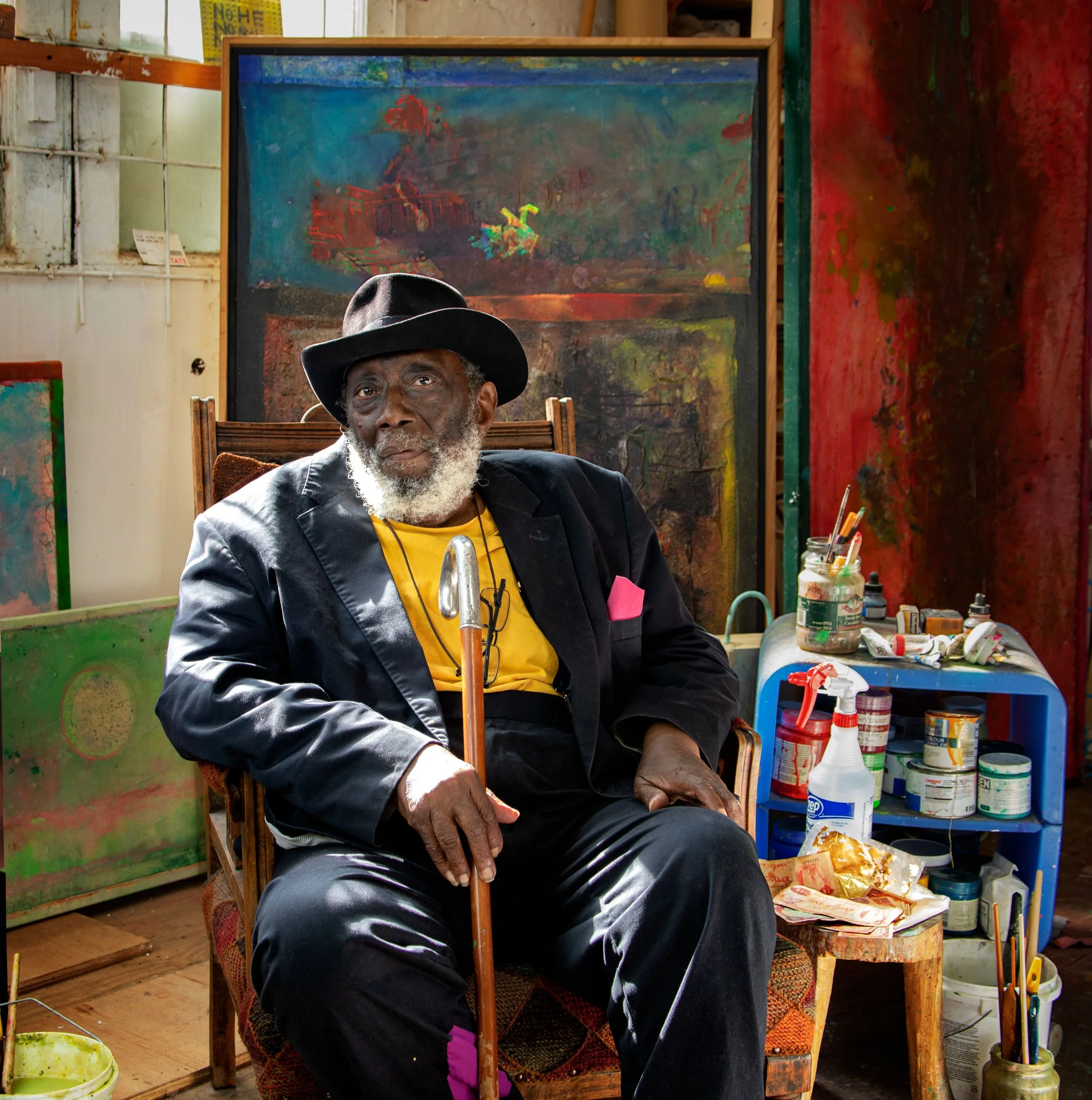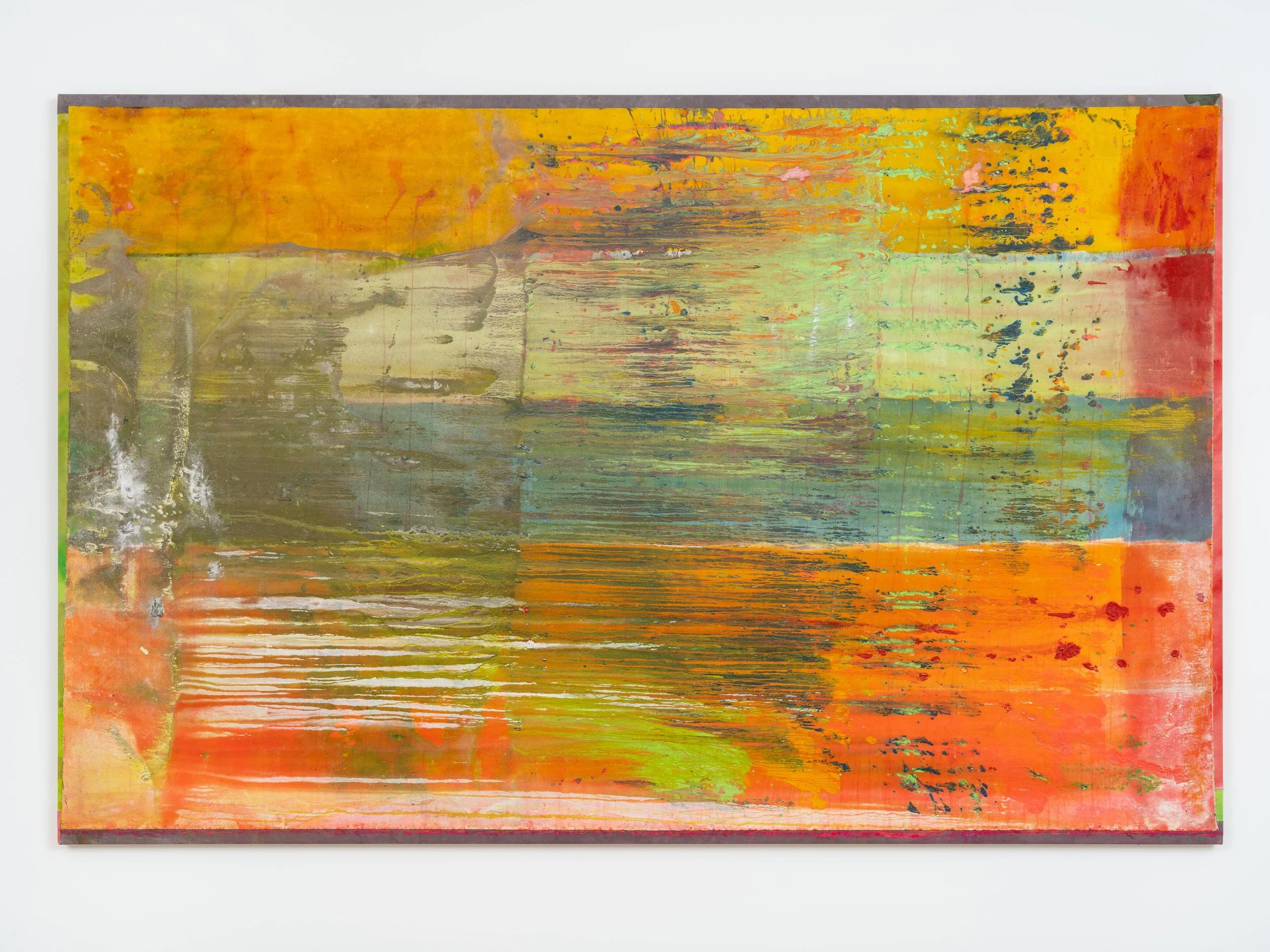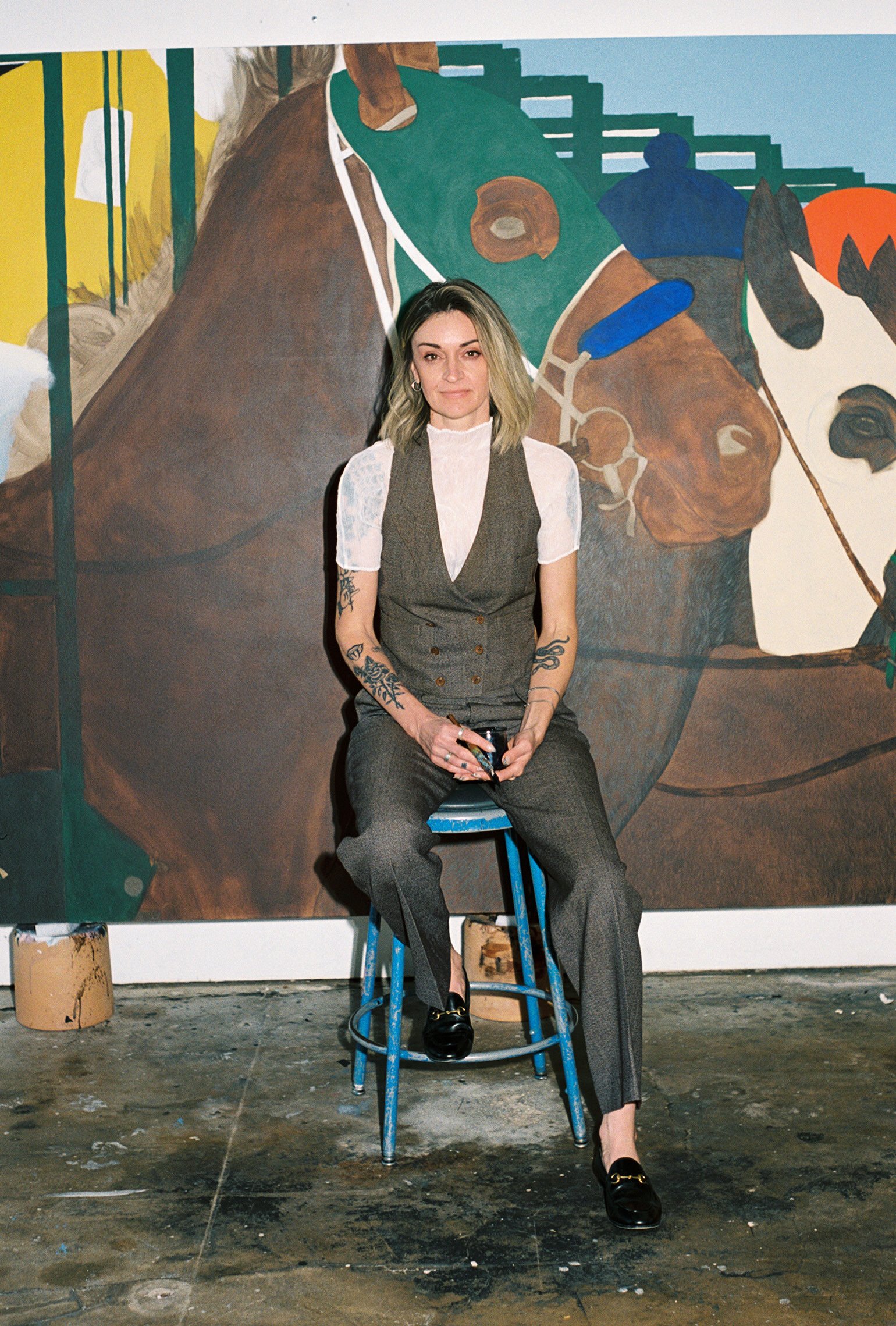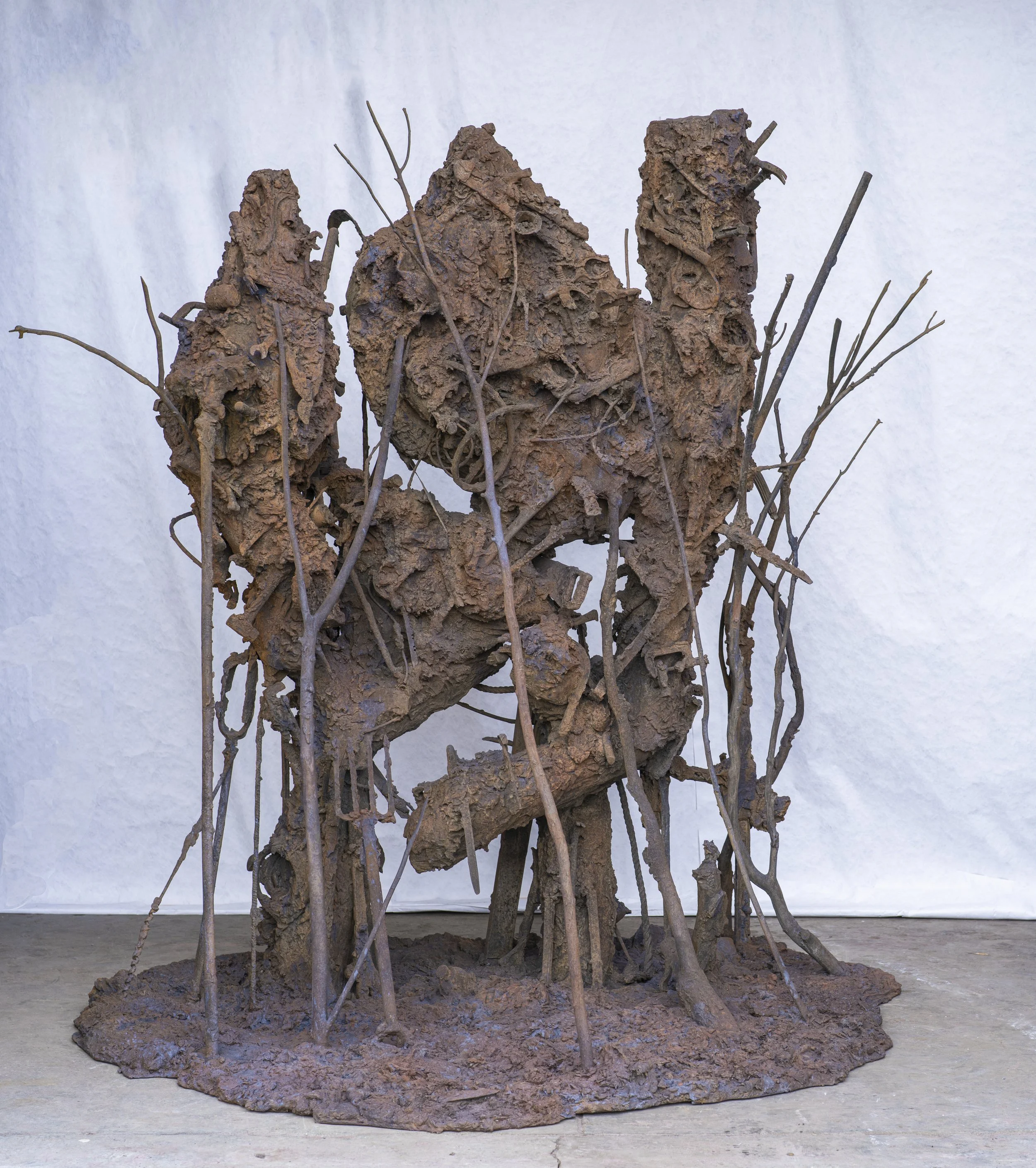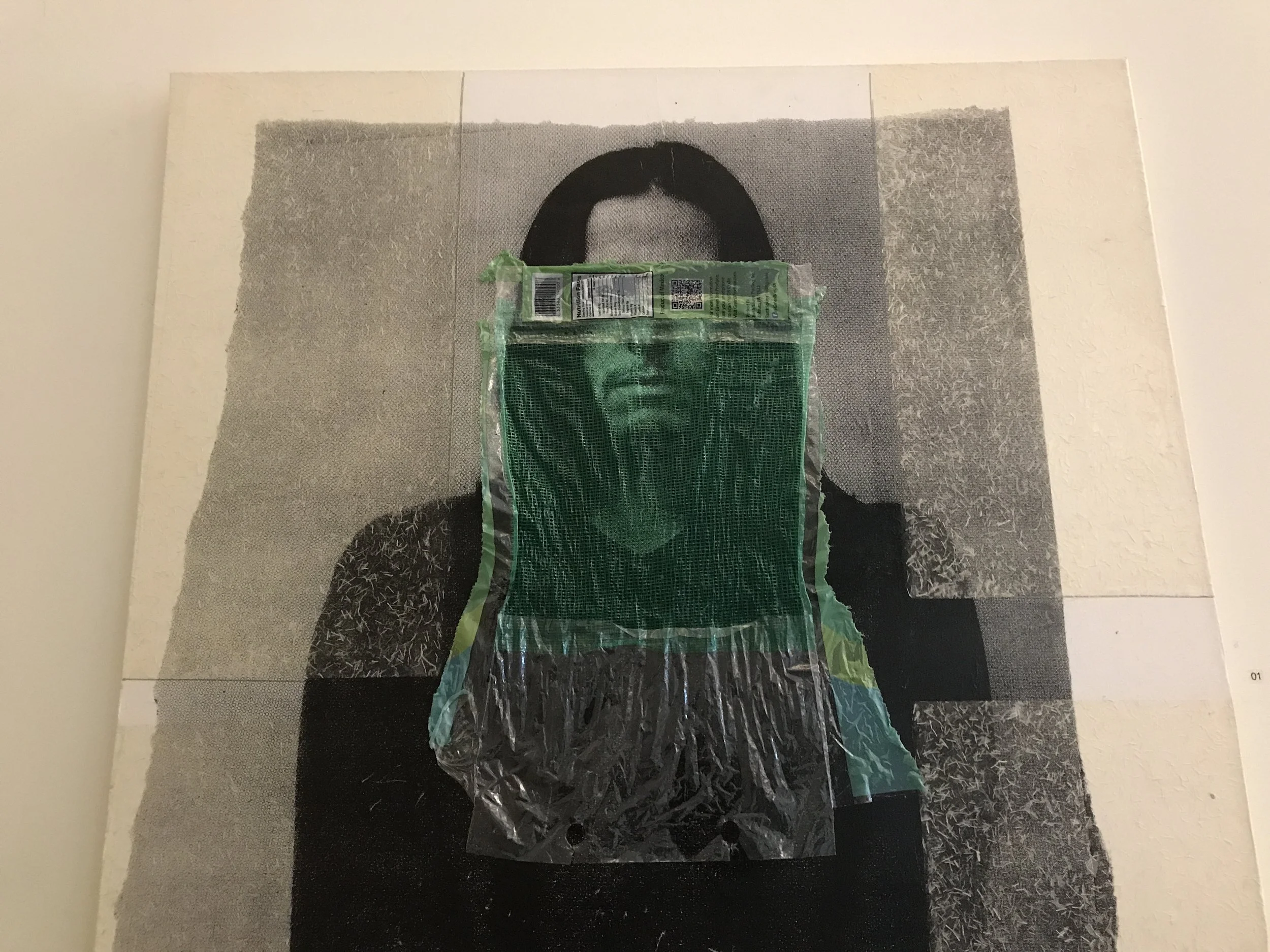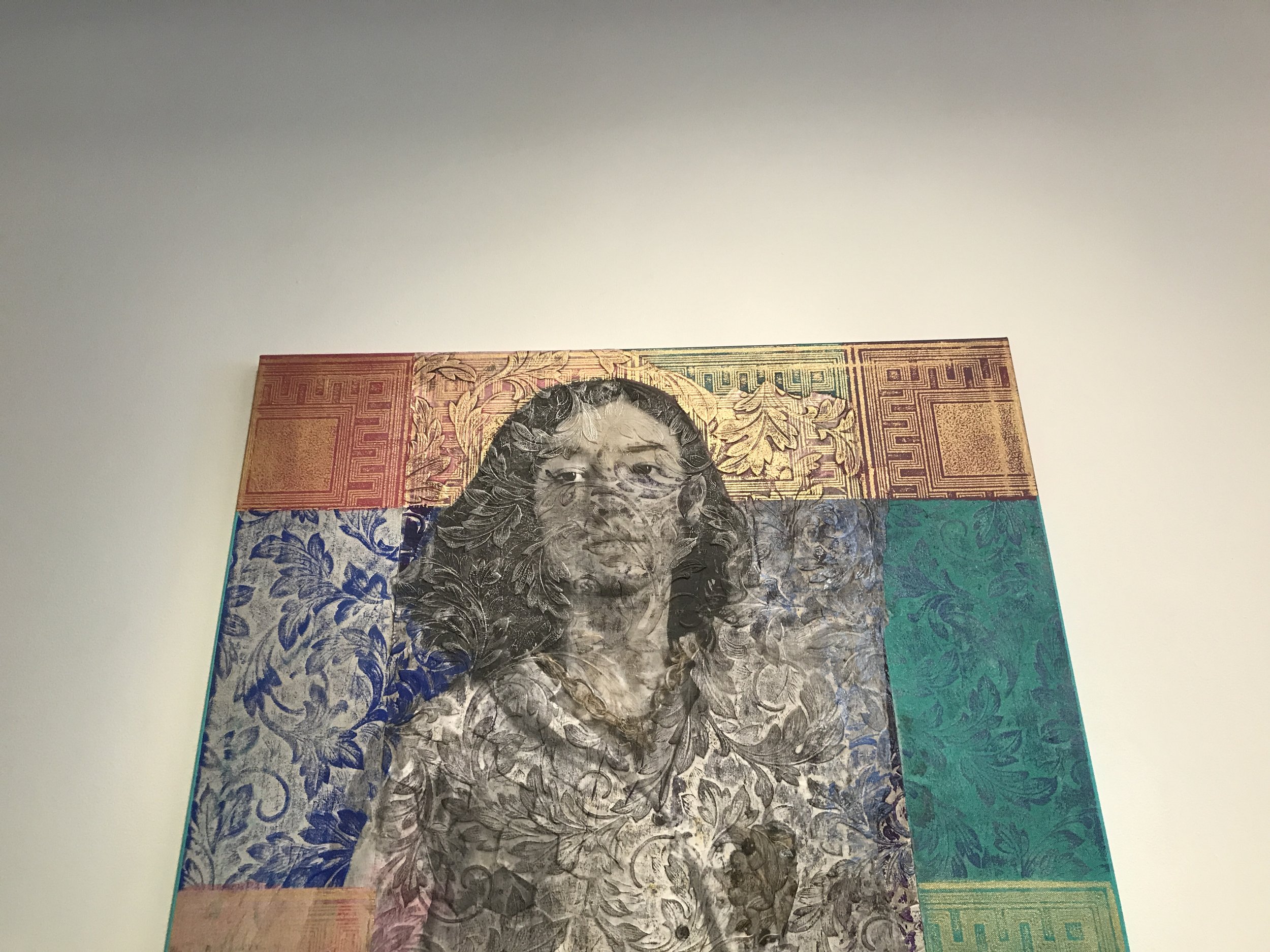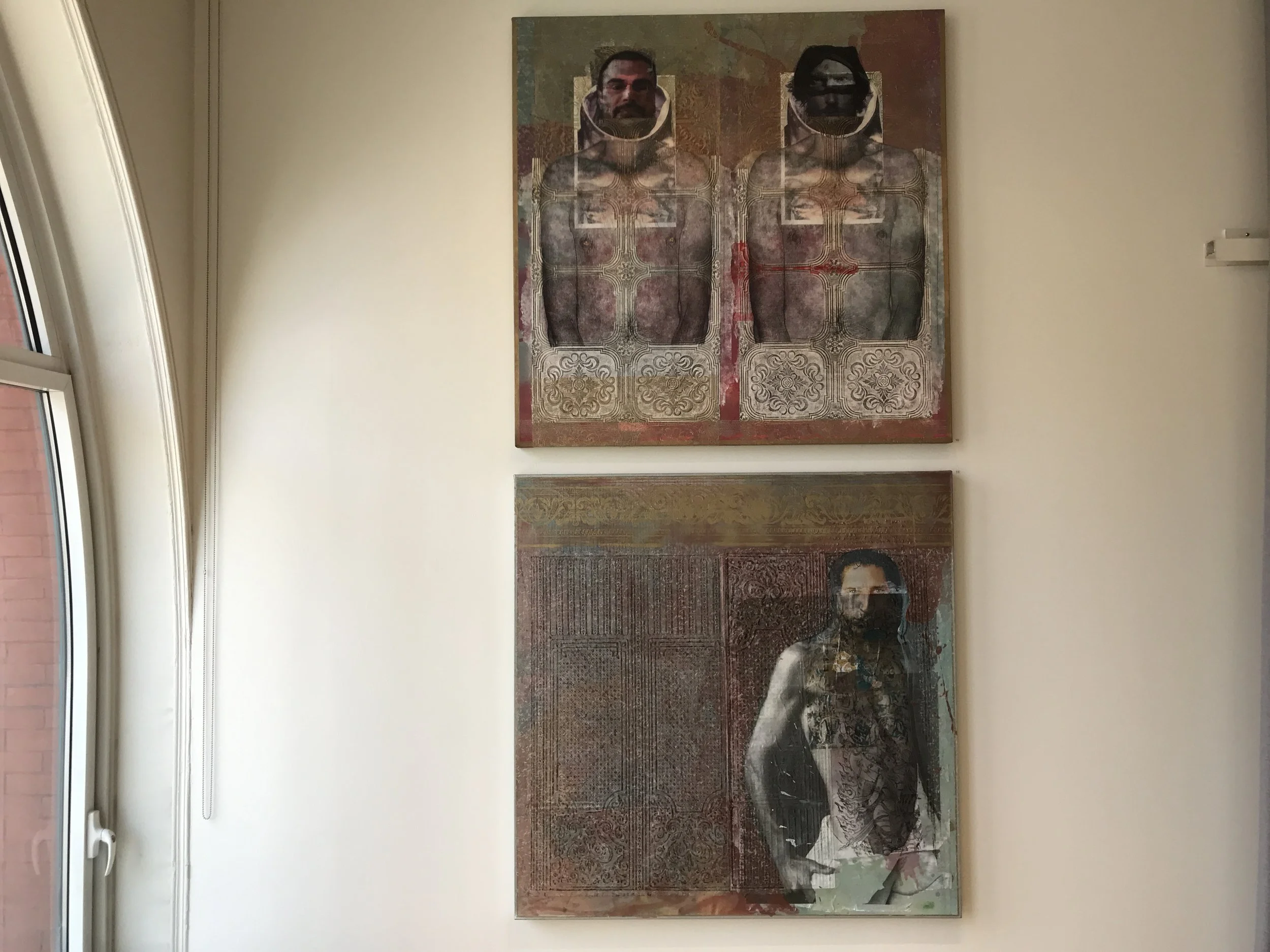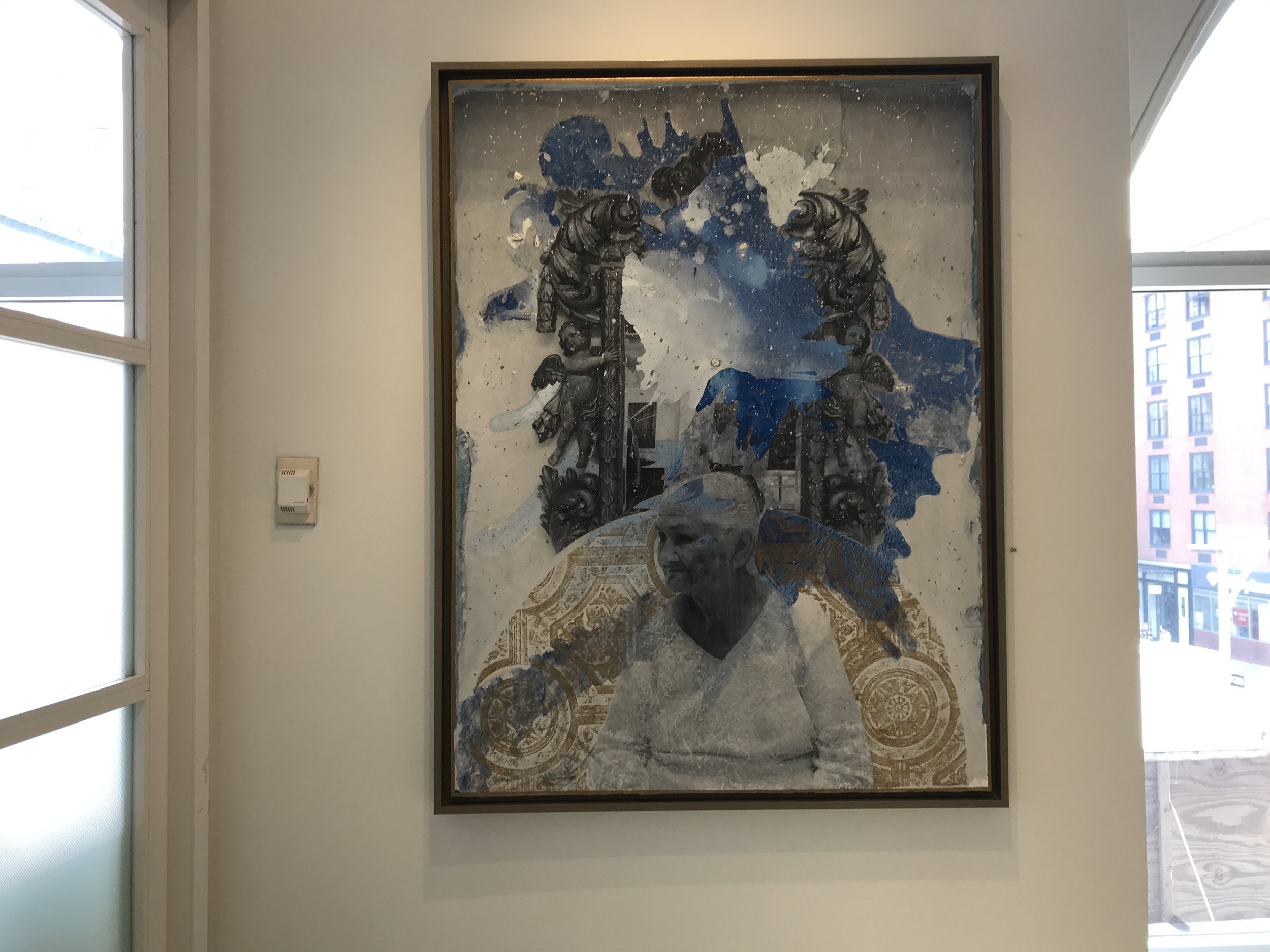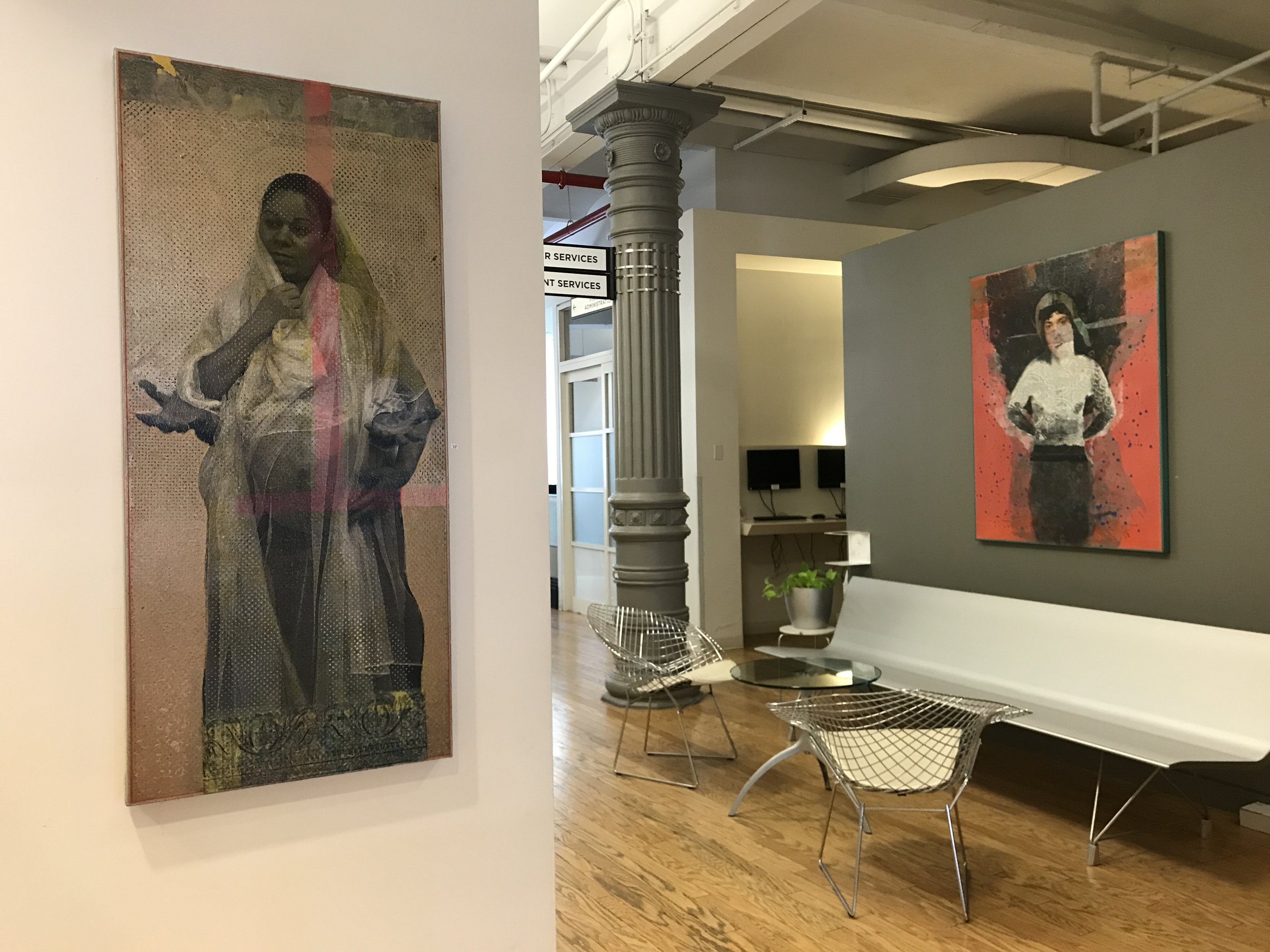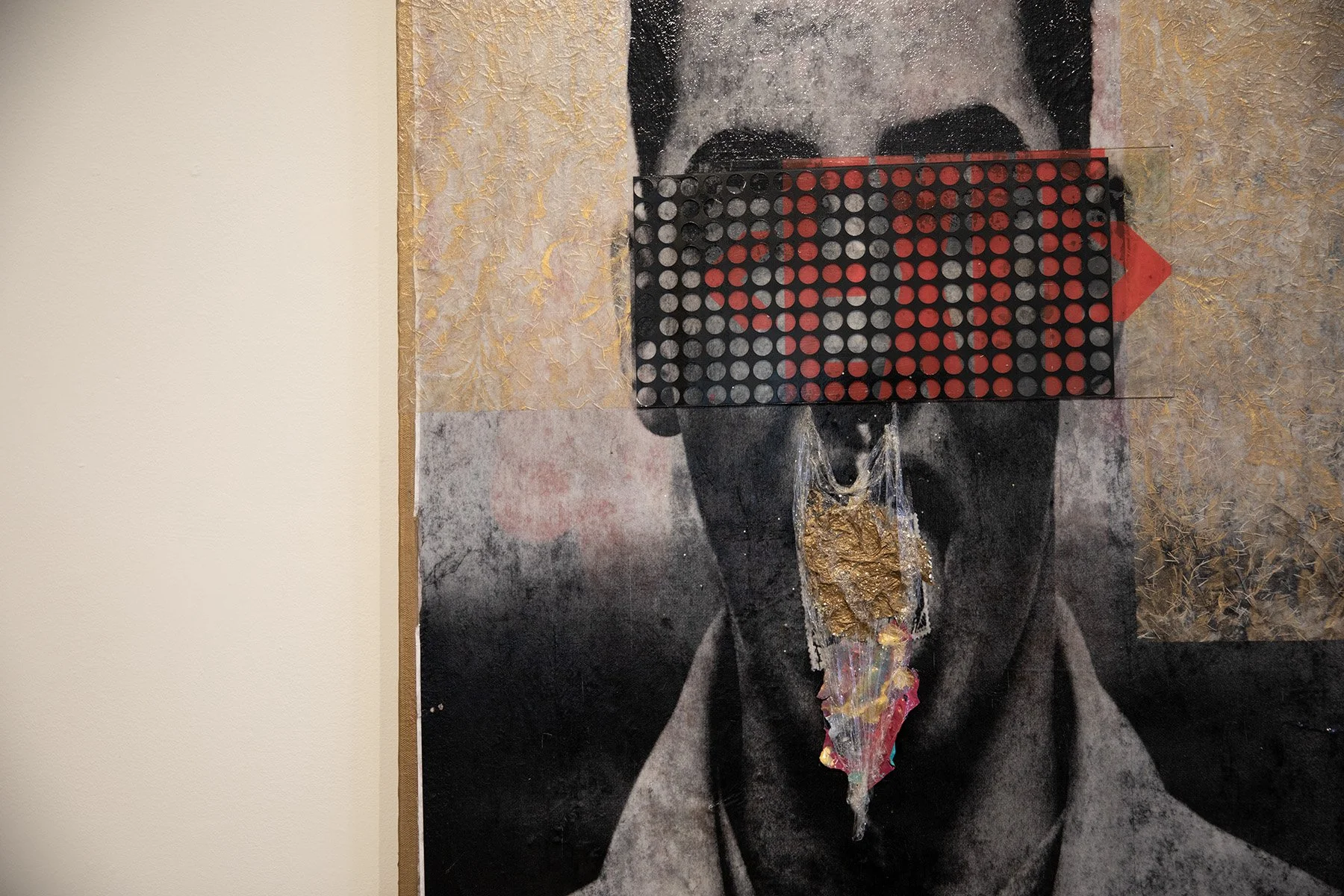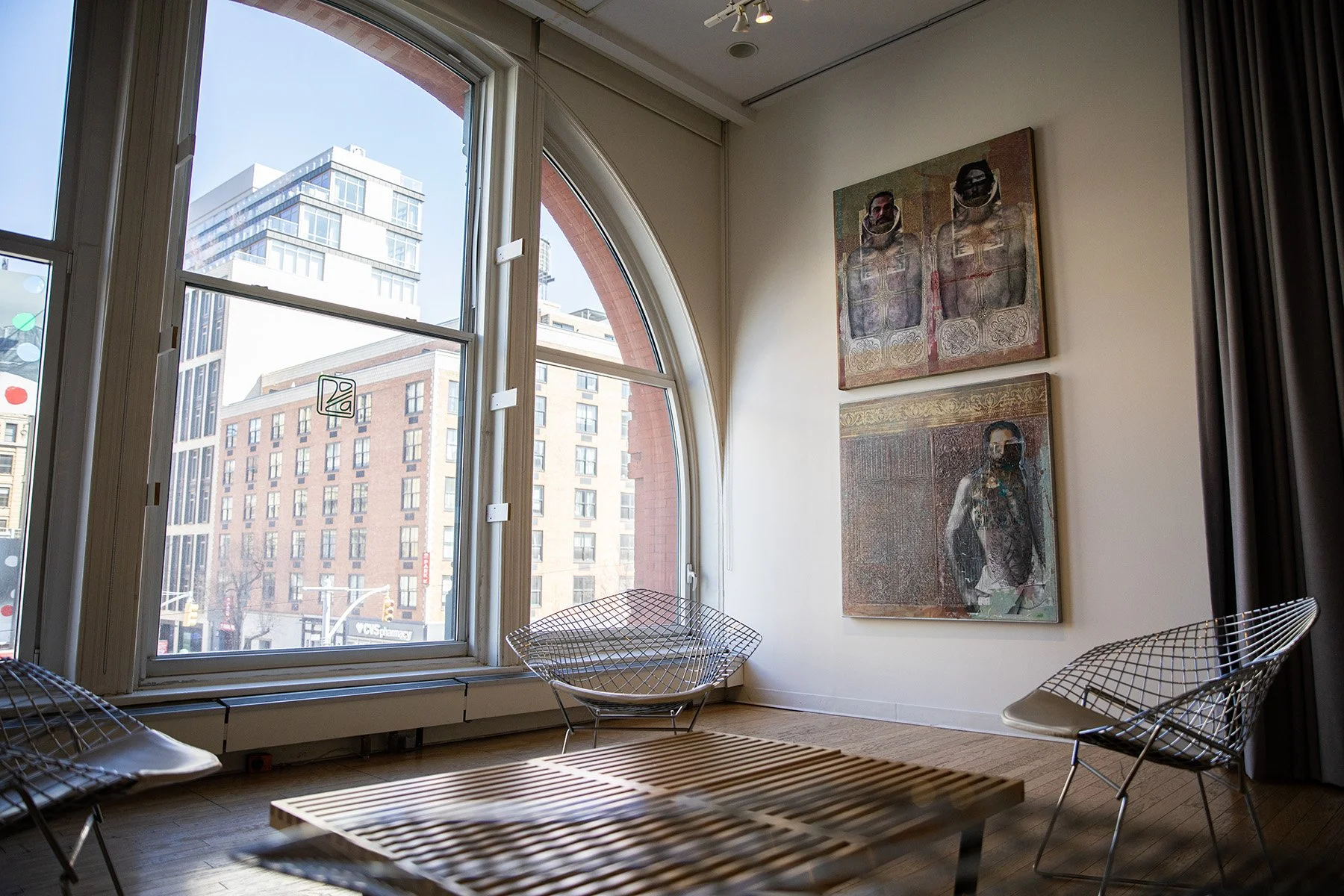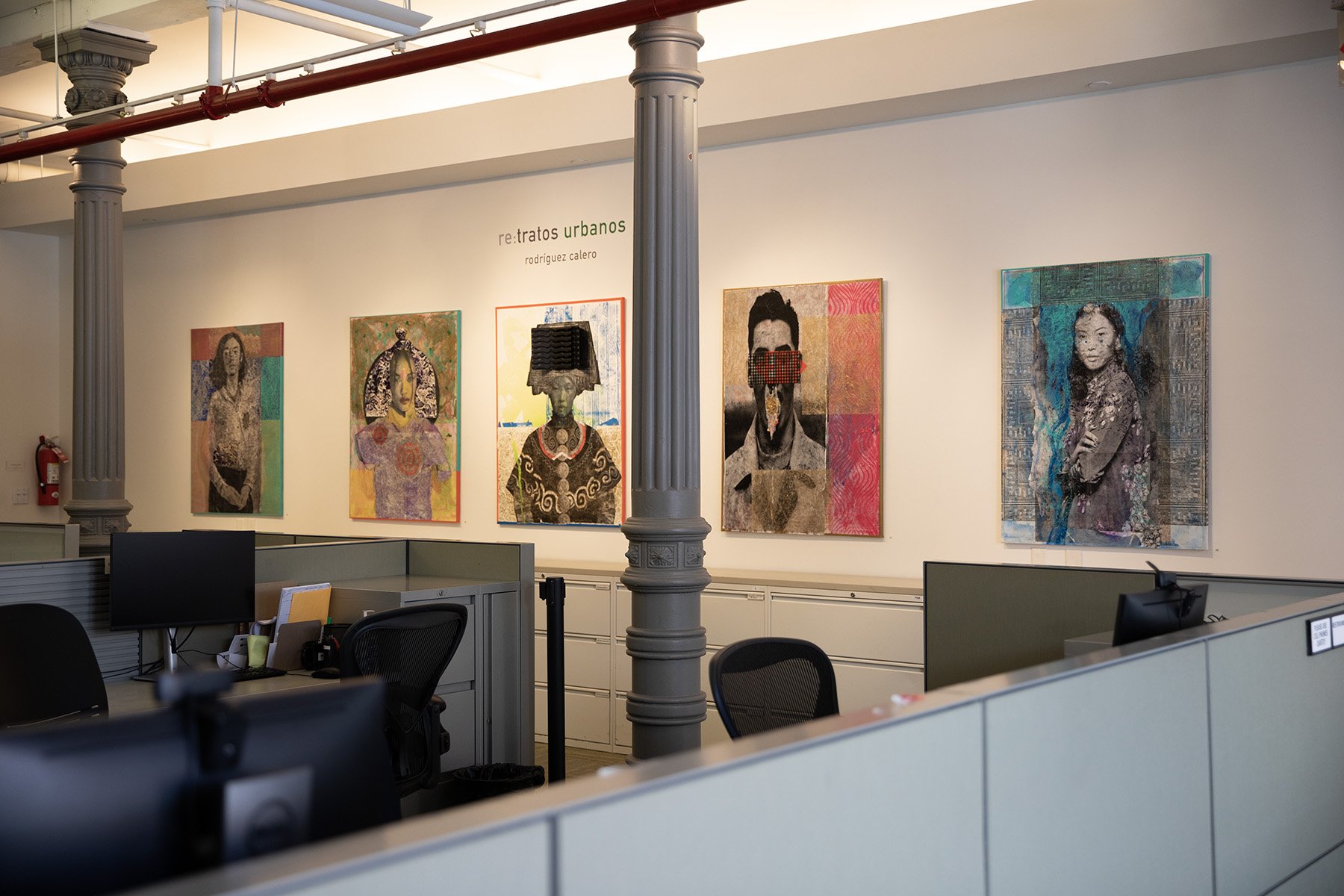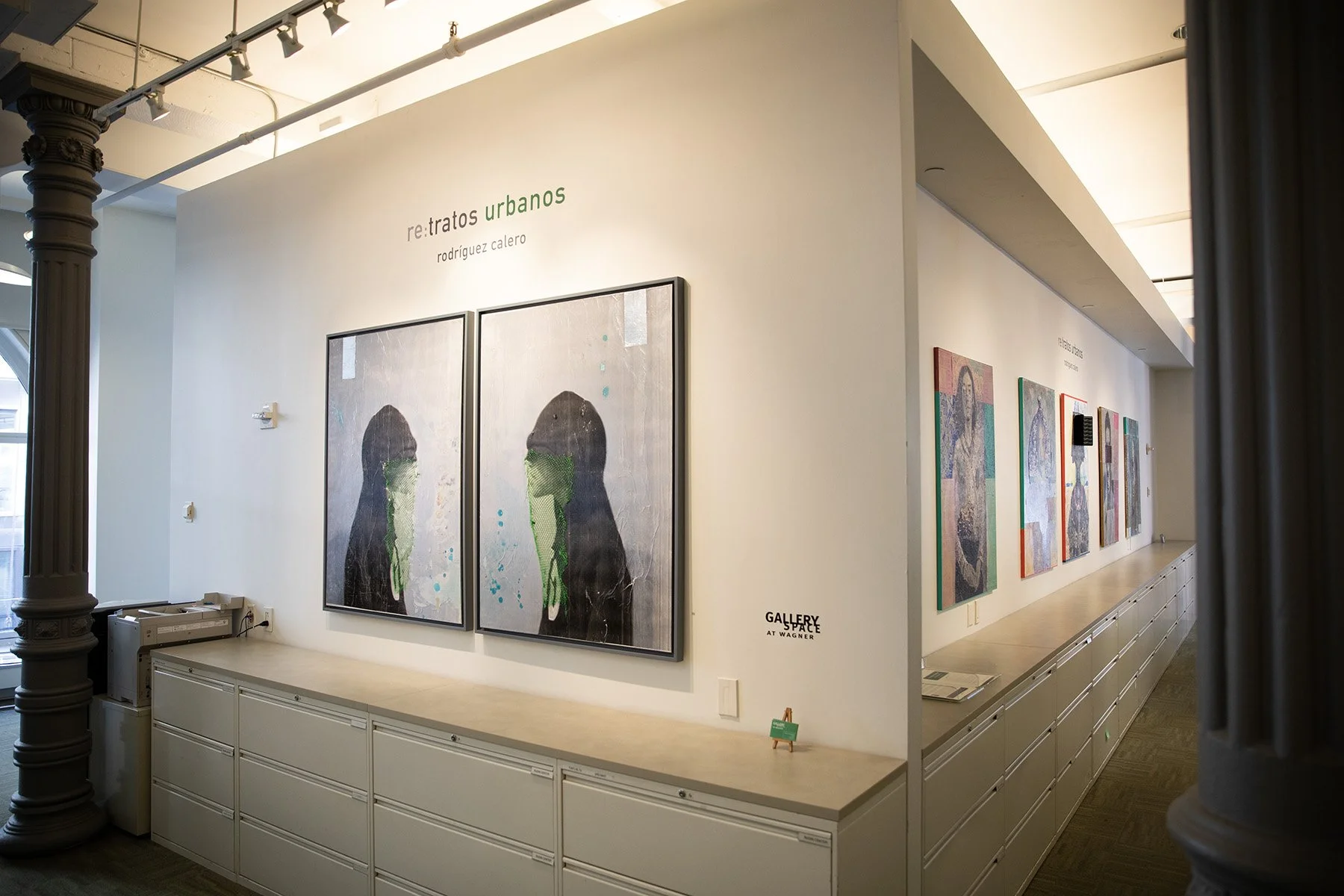Richard T. Walker NEVER HERE / ALWAYS THERE
this, as it isn’t (mountain #2), 2022 two pigment prints in artist's frames, modified rock © Richard T. Walker, courtesy Fraenkel Gallery, San Francisco
Fraenkel Gallery is pleased to present NEVER HERE / ALWAYS THERE, an exhibition by artist Richard T. Walker. Incorporating photography, video, music, sculpture, and performance, the artist continues his exploration of the relationship between the individual and the changing natural world. In twelve new works, Walker reorders the elements of the environment, upending assumptions about humankind’s place in nature by embracing futile connections to the vast landscape. This will be the Bay Area-based British artist’s second solo show in the gallery’s 49 Geary space, following exhibitions at FraenkelLAB in 2016 and 2017. A public reception with the artist took place on Saturday, September 9, from 1:30–4 pm.
anywhere, somewhere (multiple), 2023 single channel video © Richard T. Walker, courtesy Fraenkel Gallery, San Francisco
what we were (as we are) comprises six photographs of trees made in California during the intense 2020 fire season, when smoke tinted the sky an eerie orange color. A speaker embedded in each photograph plays guitar recordings Walker made at the location, in an arrangement that draws inspiration from the towering banks of speakers in the sound systems of the UK’s Notting Hill carnival celebrations. Together, the music builds into a fractured chorus. The piece acknowledges the feelings of anxiety and loss that the landscape evokes in the era of climate change. Walker notes that when photographing the work, “I had an undeniable sense that the California I felt so connected to and quite frankly in love with—the California that had seduced me with its mythical and mystical appeal, with its drama and undeniable beauty and with its perfect balance of invitation and rejection—was being put into question. It felt like it perhaps no longer existed.”
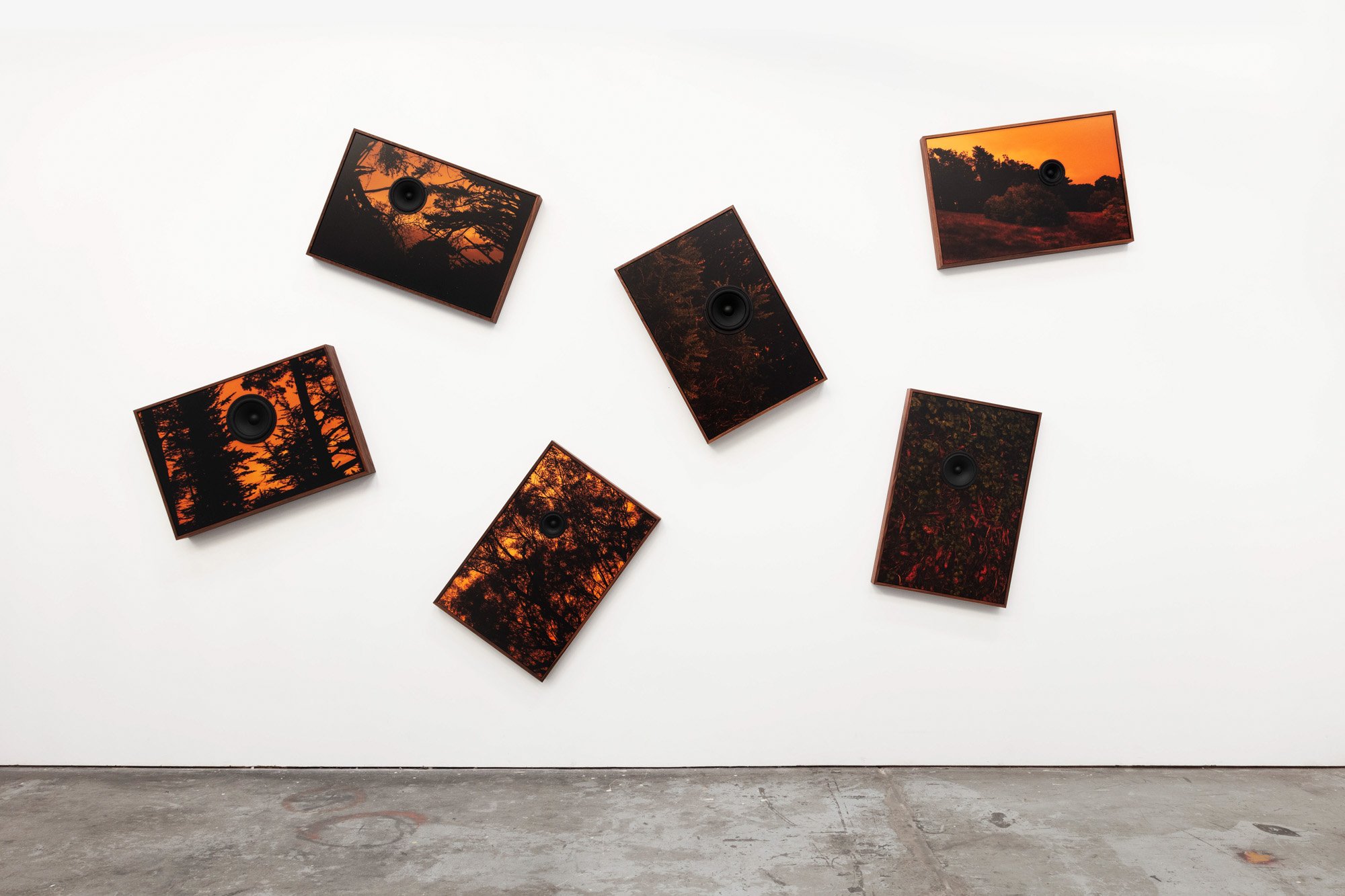
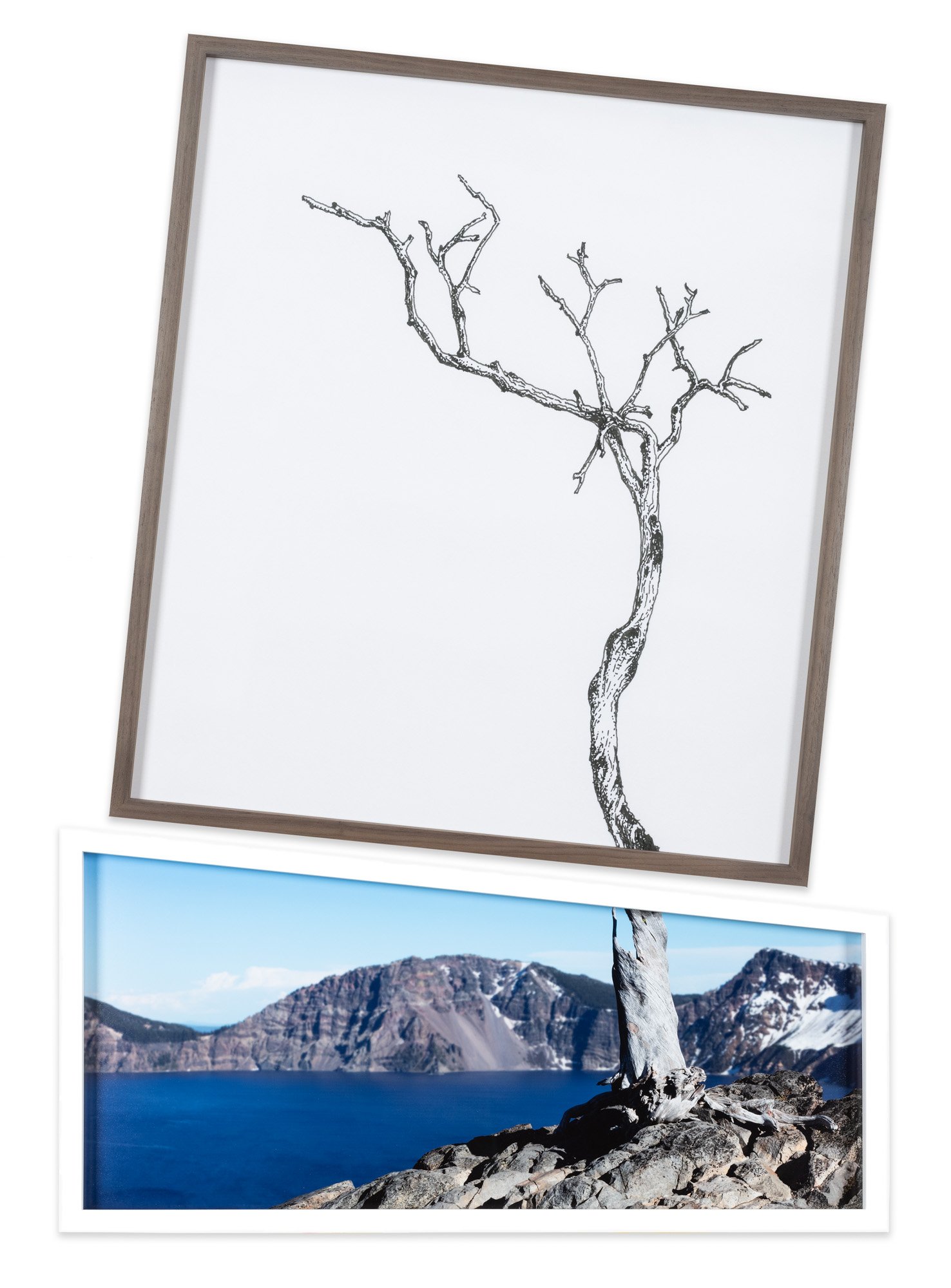


In many of the works on view, Walker combines his photographs of the Western American landscape with 19th-century etchings, found rocks, or guitar recordings, in playful or melancholic arrangements of nature and the human response to it. In the series eternally almost, Walker’s photographs of a lone tree at Crater Lake in Oregon are paired with images of drawings made by the artist’s father showing branches collected at Mount Shasta, a few hundred miles away. Framed separately, the branches and trees align, suggesting a continuity between the forms that plays with different interpretations of the meaning of distance and connection. this, as it isn’t (mountain #2), a photographic diptych, presents two versions of a nearly identical view of a distant, ancient volcano. One features a large rock in the foreground; in the other, the rock is missing from the photograph but has transformed, appearing now as a stone that sits outside of the frame, standing in for the mountain top and toying with notions of distance, scale, and cause and effect.
In other works, Walker employs light or sound in his interaction with the landscape. In a singlechannel video, anywhere, somewhere (multiple), driftwood thrown by an unseen hand hits or misses a drum kit set on a beach, creating human-made noises that mix with the sound of the waves. Elsewhere, Walker continues his long-running use of neon, draping it over a wall-mounted rock and frame in the infinity of an intimate distance, or curving it around a tree trunk in a nighttime lightbox triptych in still, missing you. Richard T. Walker’s artwork and performances have been included in solo and group exhibitions at the San Francisco Museum of Modern Art; Yerba Buena Center for the Arts, San Francisco; The Contemporary Austin; Times Museum, Guangzhou, China; Museum of Modern Art, Rio de Janeiro; Hiroshima City Museum of Contemporary Art; and Witte De With Center for Contemporary Art in Rotterdam, among other venues. His work is held in the collections of the San Francisco Museum of Modern Art; Kadist Foundation, San Francisco and Paris; and Kunstsammlung Nordrhein-Westfalen (K21), Dusseldorf, Ger(K21), Dusseldorf, Germany, among others. Walker has been an Irvine Fellow at the Montalvo Art Center, and a resident at The Headlands Center for the Arts and Skowhegan School of Painting and Sculpture. He received an Artadia Award in 2009.
The exhibit opened on September 7th of this year and will close on October 21st of this year. For more information about the exhibit please visit the Fraenkel Gallery’s site.
Nicolas Party. Swamp
Swamp 2023 Soft pastel on linen Left: 175.1 x 55 cm / 68 15/16 x 21 5/8 in Center: 175 x 110 cm / 68 7/8 x 43 5/16 in Right: 175.1 x 55 cm / 68 15/16 x 21 5/8 in
New York...For his first solo exhibition with Hauser & Wirth in New York City, Nicolas Party will transform the first floor of the gallery’s 22nd Street building. New oil-on-copper paintings, cabinet compositions, signature pastel paintings and two monumental site-specific murals will immerse visitors in Party’s practice, which simultaneously celebrates and challenges longstanding and cherished conventions of representational painting through his uniquely singular, subversive style.
Internationally admired for his uniquely adroit use of soft pastel, bold yet delicate, as a primary painting medium, Party created many of the works in this exhibition, including the striking site-specific murals, in pastel. He first began working in this medium over 10 years ago and has since become a master at exploiting the pigments’ versatility, immediacy and saturated color.
Upon entering the exhibition, visitors will encounter the first of two expansive pastel murals––a forest in flames. Party is known for conceiving his exhibitions as comprehensive environments, incorporating architectural interventions and extending the palette of his paintings across the gallery’s white walls. Heightening the powerful effects––formal and psychological––of his subject matter, Party has chosen to steep the surrounding walls in a rich maroon. Just beyond the pastel mural hangs a group of portraits featuring enigmatic figures paired with an animal that obscures their body. These creatures were inspired by the work of radical 19th-century French realist painter Rosa Bonheur, an icon of women’s independence who put the living world at the heart of both her life and work, placing animals at the center of her practice.
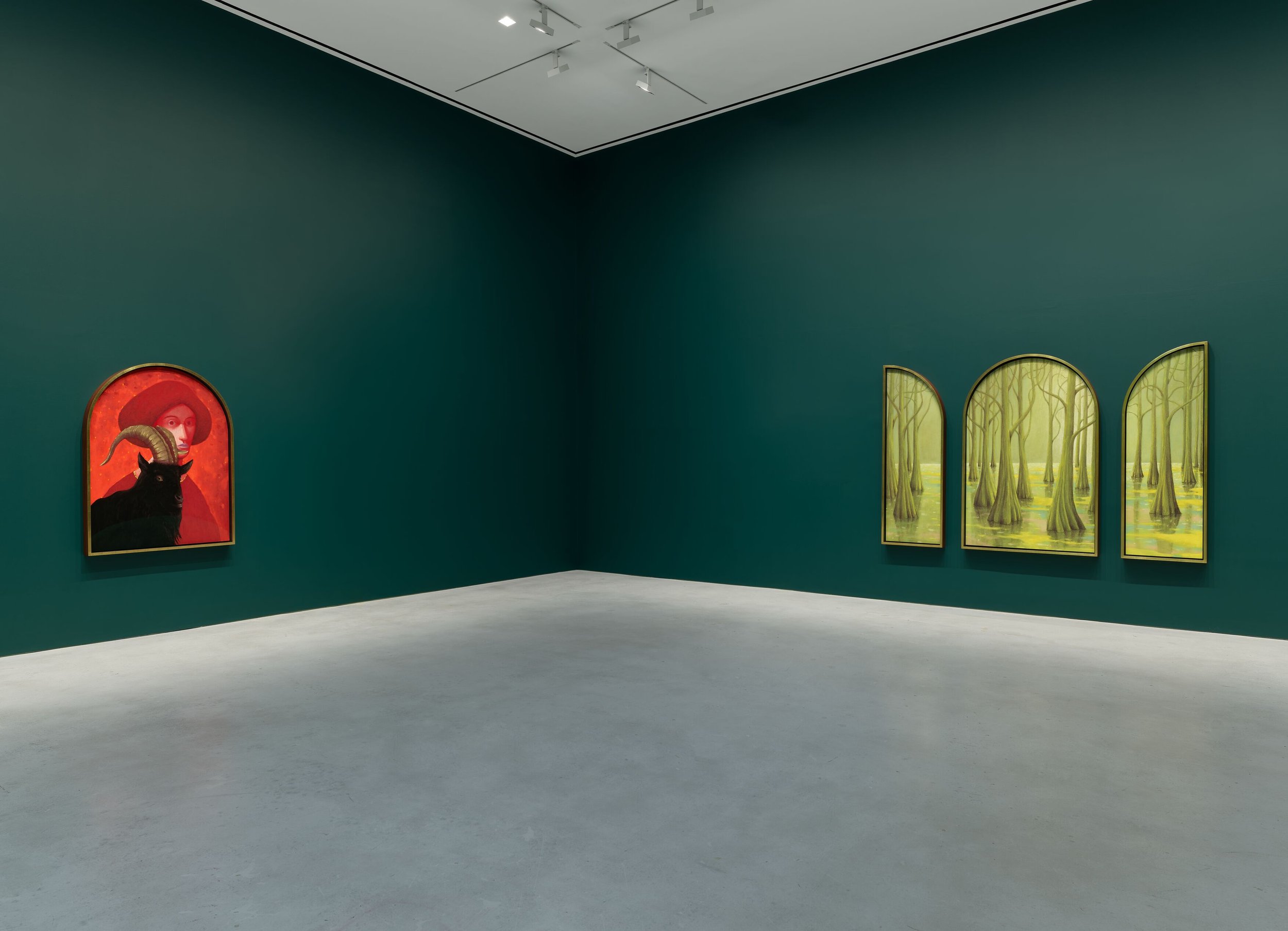


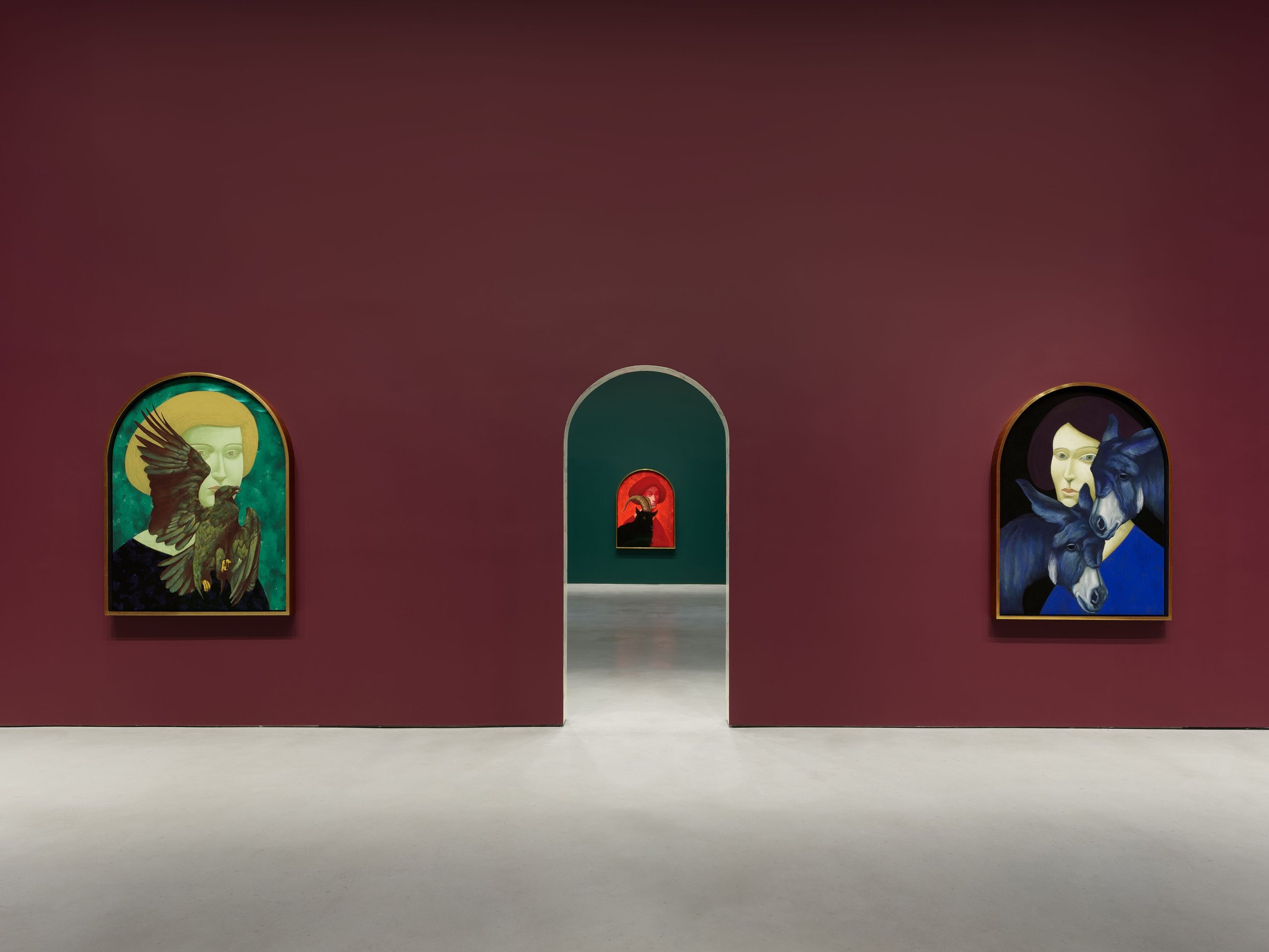
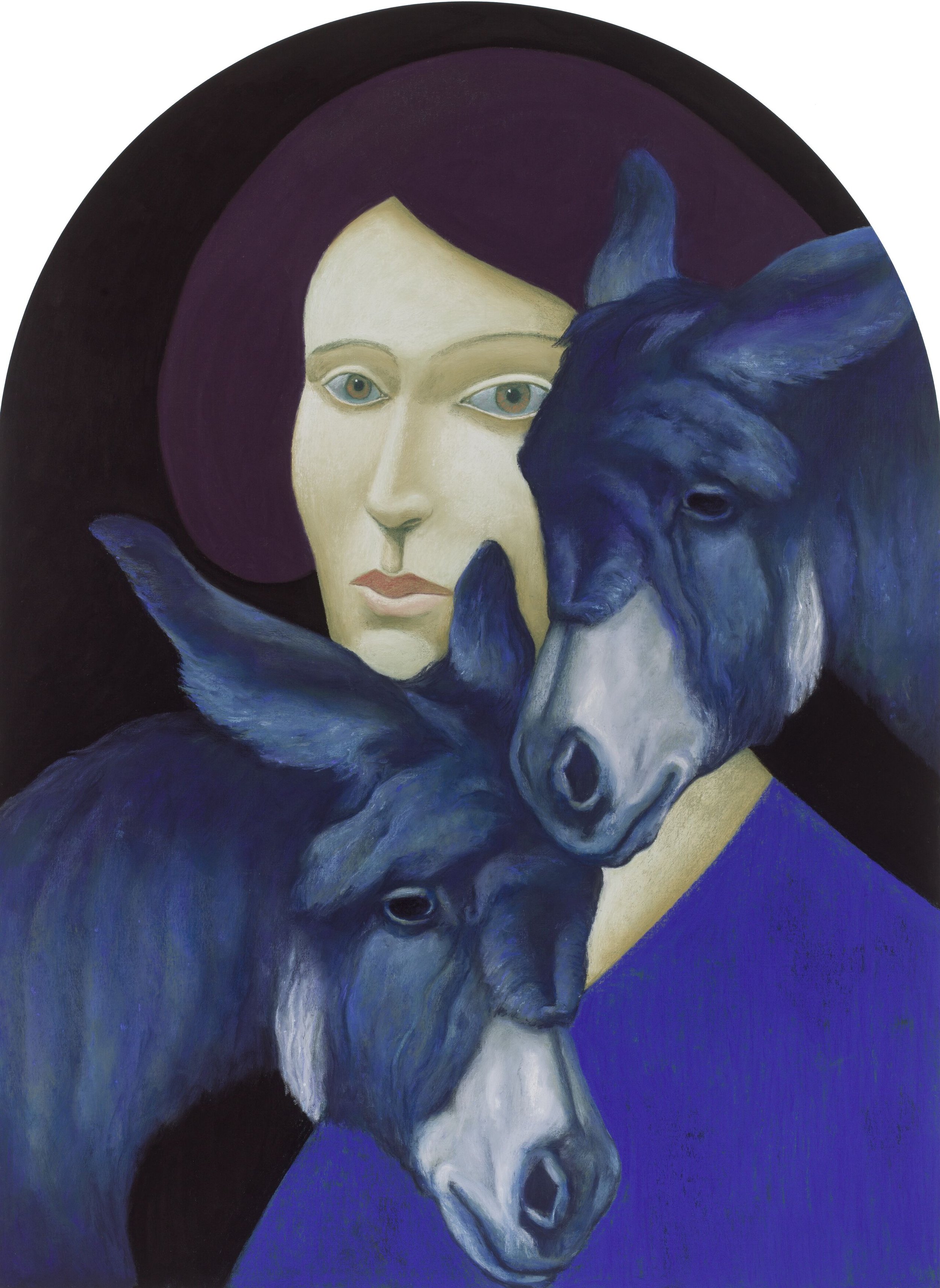

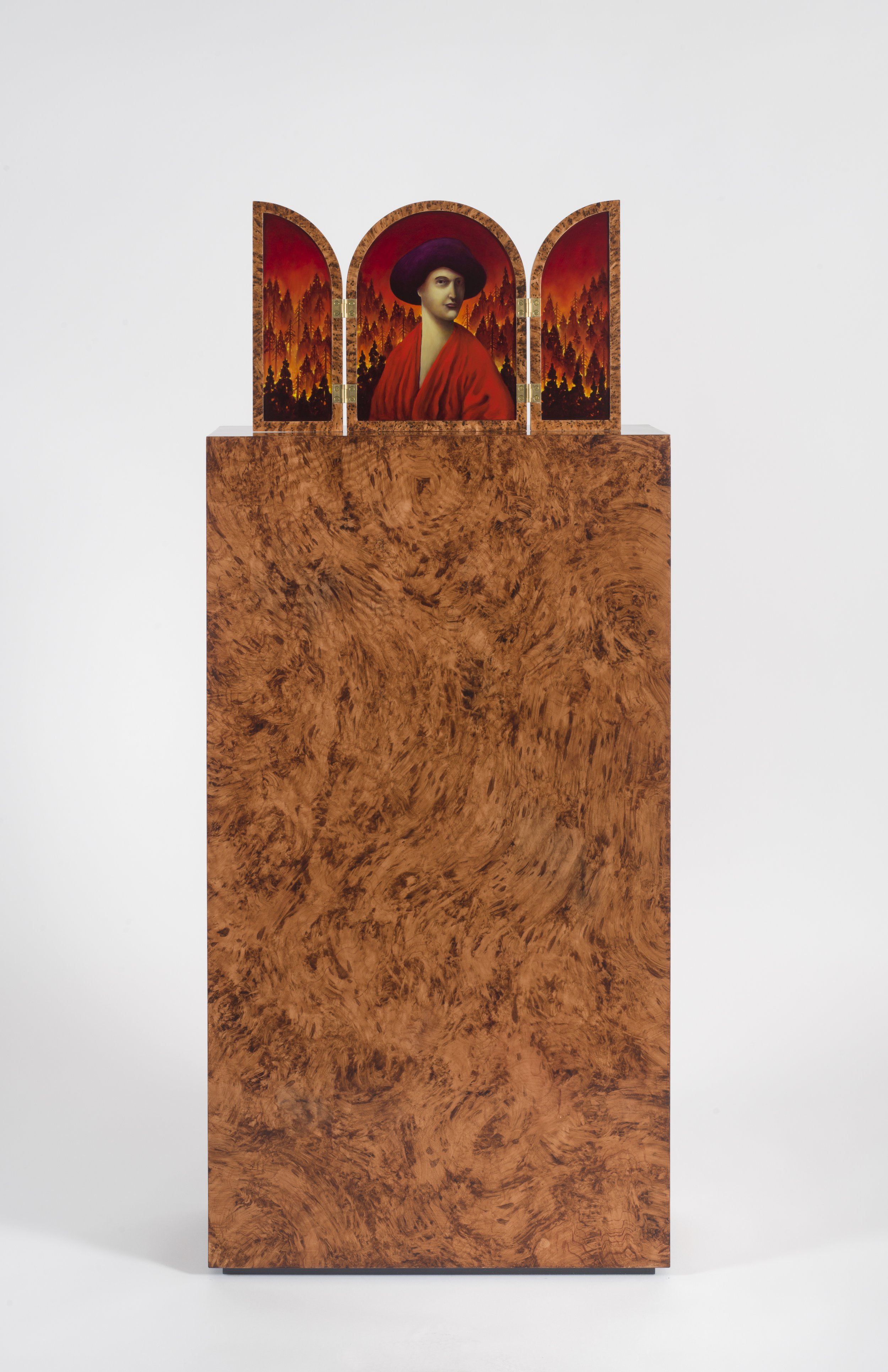

Installation view, ‘Nicolas Party. Swamp’ Hauser & Wirth New York 22nd Street 7 September – 21 October 2023 © Nicolas Party Courtesy the artist and Hauser & Wirth Photo: Sarah Muehlbauer
Created directly on the gallery’s 37 1/2 foot wide rear wall, Party painted an immense swamp mural, full of endless tree trunks submerged into a marsh. A pair of alpine vistas inspired by the artist’s Swiss homeland flank the scene, hung atop deep green walls. These landscapes echo those of Ferdinand Hodler, one of the most renowned and innovative Swiss painters of the 19th Century.
In contrast to the large-scale, enveloping pastel works on view, intimately scaled cabinet paintings sit upon marble trompe l’oeil pedestals and oil-on-copper paintings hang throughout both rooms of the exhibition. Here Party once again contemporizes all but forgotten classical mediums; just as his signature pastels achieved the height of popularity in the 18th Century, oil on copper was a fashionable and prevalent alternative to canvas during the mid-16th Century, while cabinets were most commonly made as altarpieces in medieval and Renaissance art. Party uses these mediums to express his recent fascination with pre-historic creatures of the Mesozoic Era, the second-to-last era of Earth’s geological history, in the oil-on-copper paintings and one cabinet. Drawn to the architectural, three-dimensional quality of the cabinet’s multi-panel format, the jewel-like works point to the latest developments in the artist’s formal experimentations, which continue to illuminate the timelessness of art historical figures, movements and techniques by reinventing their application in the present. ‘Swamp’ coincides with Party’s major site-specific installation ‘Nicolas Party and Rosalba Carriera,’ commissioned for The Frick Collection on Madison Avenue, on view through 3 March 2024, and his participation as one of three contemporary artists featured in the exhibition ‘Exemplary Modern. Sophie Taeuber-Arp with Contemporary Artists’ opening 6 September at Hauser & Wirth’s 69th Street location in New York City.
Mountains 2023 Soft pastel on linen 155.1 x 185.1 x 2.7 cm / 61 1/8 x 72 7/8 x 1 1/8 in 161.9 x 192.1 x 9 cm / 63 3/4 x 75 5/8 x 3 1/2 in (framed)
About the Artist
Born in Lausanne in 1980, Party is a figurative painter who has achieved critical admiration for his familiar yet unsettling landscapes, portraits, and still lifes that simultaneously celebrate and challenge conventions of representational painting. His works are primarily created in soft pastel, an idiosyncratic choice of medium in the 21st Century, and one that allows for exceptional degrees of intensity tand fluidity in his depictions of objects both natural and manmade. Transforming these objects into abstracted, biomorphic shapes, Party suggests deeper connections and meanings. His unique visual language has coalesced in a universe of fantastical characters and motifs where perspective is heightened and skewed to uncanny effect.
Nicolas’s exhibit has been on display since the 7th of September and will end on the 21st of October of this year.
For more information about the exhibit, please visit Hauser & Wirth site. Also, follow the gallery on Instagram, Facebook, X and YouTube for more updates on this exhibit.
Ed Clark. The Big Sweep
Ed Clark Locomotion 1963 Oil on canvas 192.4 x 371.2 cm / 75 3/4 x 146 1/8 inches Photo: Thomas Barratt
Beginning 7 September, two full floors of Hauser & Wirth’s 22nd Street building in New York will be devoted to ‘The Big Sweep,’ an exhibition covering the six-decade career of pioneering American abstractionist Ed Clark (1926 – 2019). Taking its title from Clark’s dedication to innovative techniques, particularly his revolutionary embrace of the common push broom as a paintbrush, this presentation documents the ways in which Clark pushed the boundaries of abstraction and its conventions beyond expressionism, from his breakthrough introduction of the shaped canvas to his distinctive approach to and impact upon questions of materiality, form and color. ‘The Big Sweep’ exhibition will be accompanied by the release of ‘Ed Clark: The Big Sweep; Chronicles of a Life, 1926–2019,’ the definitive new book on Clark, produced by Hauser & Wirth Publishers. Among the exceptional works on view, the earliest is ‘Untitled’ (1955). Completed while Clark was living in Paris, this canvas reflects the direction of the artist’s early practice under influences he encountered upon arriving in Europe in 1952, after studying at the Art Institute of Chicago. Here, he has created a work at once in dialogue with the art of his contemporaries, while expressing a velocity discernably his own. In Paris, Clark surrounded himself with such luminary American peers as Beauford Delaney, Sam Francis and Joan Mitchell, while likewise finding profound inspiration in the paintings of French artist Nicolas de Staël. Released from the bigotry and racialized assumptions that burdened Black artists in the United States, Clark felt liberated from the focus on realism that had dominated his practice back home. He began to experiment with abstraction, and to lean into the central role gesture and the tangibility of paint could play in practice. Of this period, he said, ‘I began to believe, from my conversations with other artists, that the real truth is in the stroke. For me, it is large, bold strokes that do not refer distinctly to seen nature. The paint is the subject. The motions of the strokes give the work life.
Clark returned to the United States in 1956 and quickly established himself in the New York School alongside Al Held, Franz Kline, Yayoi Kusama, and George Sugarman, among others. In 1957, he broke away from the limitations of the traditional rectangular canvas and created the first shaped painting in American modernism, now in the collection of the Art Institute of Chicago. By including protruding collage elements in his paintings, he immediately endowed his work with a bold, palpable physicality. In 1967, Clark spent a year living at Joan Mitchell’s home and studio in Vétheuil, France, where he painted his first oval canvas, mimicking the shape of the human eye, and using a push broom to create large sweeping brushstrokes. The monumental ovoid canvas of ‘Untitled’ (c. the 1970s)––on view in this exhibition––as well as the embedded oval shape of ‘Integrated Oval #1’ (1972)—exhibited in the Whitney Annual that same year—both suggest the pleasure and sense of freedom Clark achieved through the formal experimentation that in turn allowed him to intensify his gesture and the effects of materiality, form and color.
Untitled ca. 1970 Acrylic on shaped canvas 294 x 408.9 x 3.8 cm / 115 3/4 x 161 x 1 1/2 in
Clark would become renowned for his revolutionary use of a push broom as a paintbrush, a technique he first tried in Paris in 1956 and that, along with the shaped canvas, would come to define his practice. The push broom offered the artist a way to imbue his work with dramatic degrees of dynamism and energy that could not be realized by a conventional paintbrush. As demonstrated in such paintings as ‘Locomotion’ (1963) and ‘North Light (Paris)’ (1987), Clark’s method used the pressure of his entire body—he described the effect as being akin to ‘cutting through something really fast; that’s what the straight stroke with the push broom gives you, speed’— to evenly extend the momentum of his sweeping gesture across the whole surface of the canvas. Though Clark would occasionally vary the intensity of the line and color in a single motion, exploring nuances in its effects, the power of this revolutionary approach opened new vistas for abstraction with a big sweep.
Ed Clark Untitled 1955 Oil on canvas 129.5 x 129.5 cm / 51 x 51 in
By the 1980s, Clark had morphed the linearity of his earlier paintings into more tubular motifs that curved and splintered around the canvas. This ‘Broken Rainbow’ series is characterized by rounded brushstrokes that expand upon the curved lines of the 70s ovals with a new energy and confidence. Sometimes applying dry pigment to a wet broom, Clark injected his sweeping gestures with even greater motion and liveliness. In his late paintings, made in the first years of the 21st century, such as ‘Creation’ (2006), Clark’s forceful broom strokes gave way to softer, at times even aqueous, gestures that expressed a final burst of pure liberation.
Released in conjunction with the exhibition, ‘Ed Clark: The Big Sweep; Chronicles of a Life, 1926–2019’ (Hauser & Wirth Publishers), chronicles the story of the artist’s life and work through reprints of important historical texts by numerous authors, including Darby English, Anita Feldman, Geoffrey Jacques, Kellie Jones, April Kingsley, and Corinne Robins; interviews with Clark by Quincy Troupe, Jack Whitten and Judith Wilson; and photographs, letters and ephemera from the archive of Clark’s estate and his papers at the Archives of American Art, Smithsonian Institution, Washington, D.C.
Ed Clark in Paris with his painting ‘Patel Wheel,’ 1989
About the artist Born in New Orleans in 1926 and raised in Chicago, Clark emerged in the 1950s as a pioneer of the New York School. Over the course of seven decades, his experimentations with pure color, abstract form, and the seductive materiality of paint have yielded an oeuvre of remarkable originality, extending the language of American abstraction. Clark’s breakthroughs have an important place in the story of modern and contemporary art: in the late 1950s, he was the first American artist credited with exhibiting a shaped canvas, an innovation that continues to reverberate today. His search for a means to breach the limitations of the conventional paintbrush led him to use a push broom to apply pigment to the canvas laid out on the floor. Defying the discreet categories of gestural and hard-edged abstraction, Clark has masterfully interwoven these approaches into a unique form of expressionism.
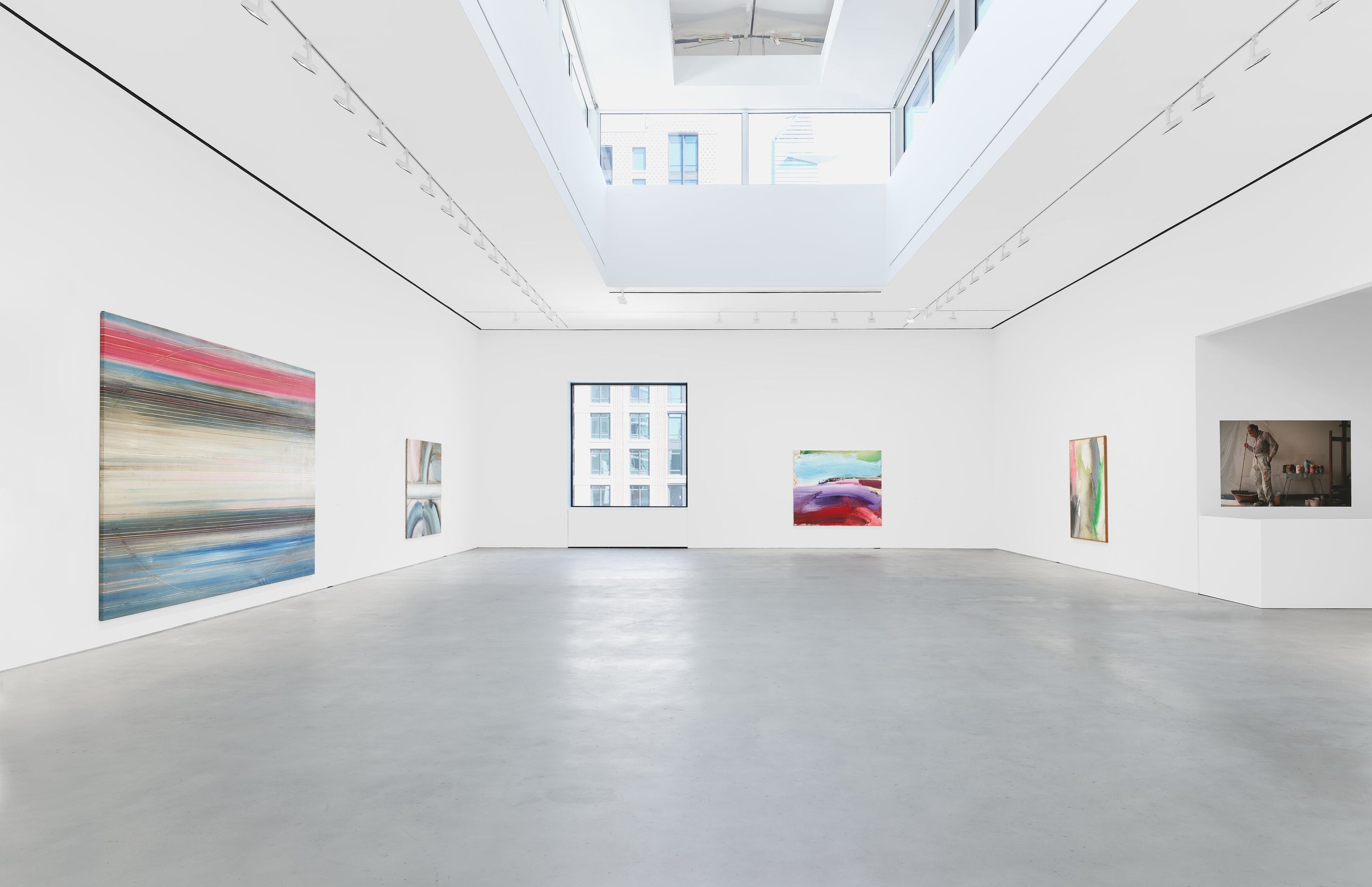
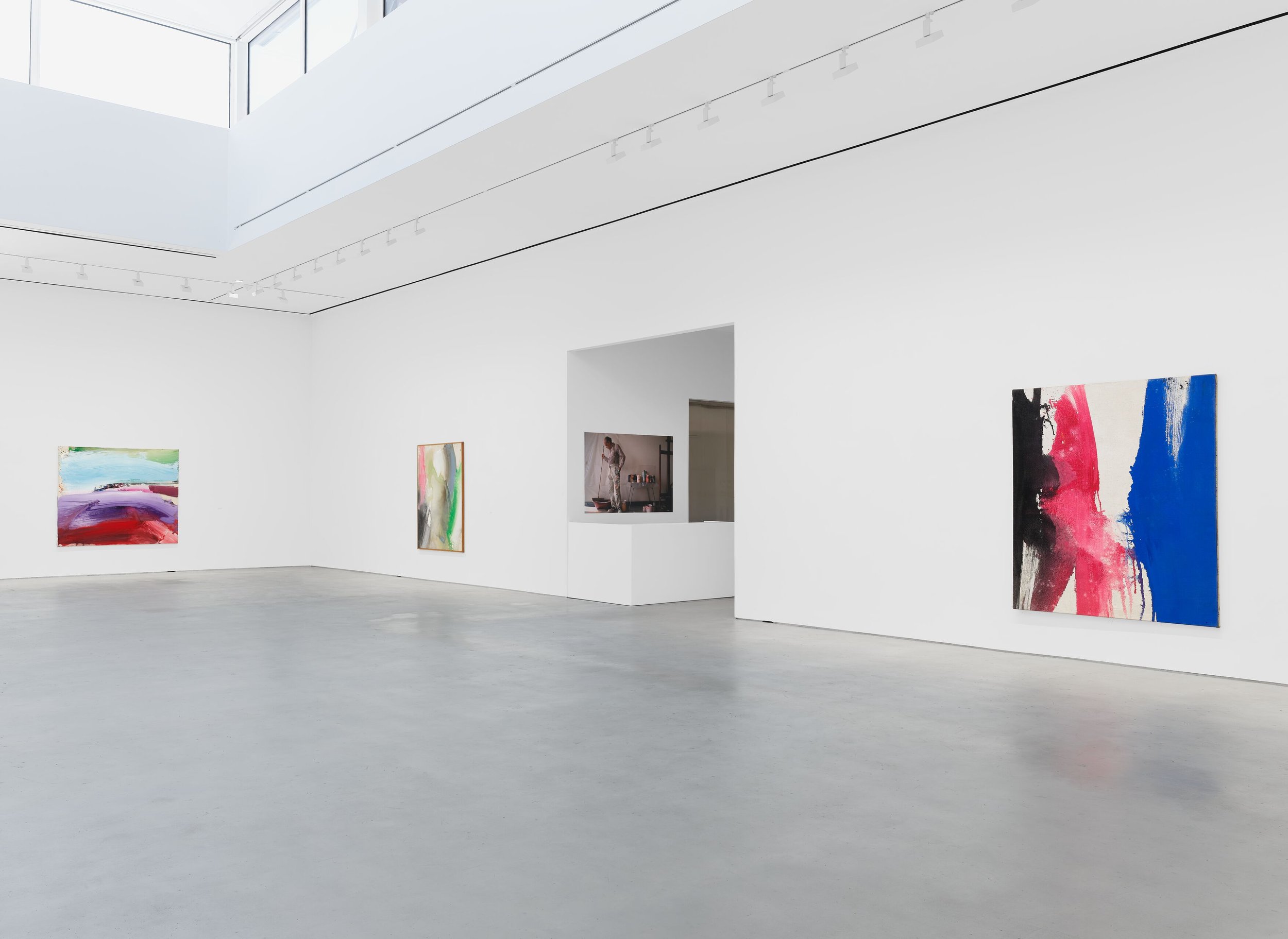
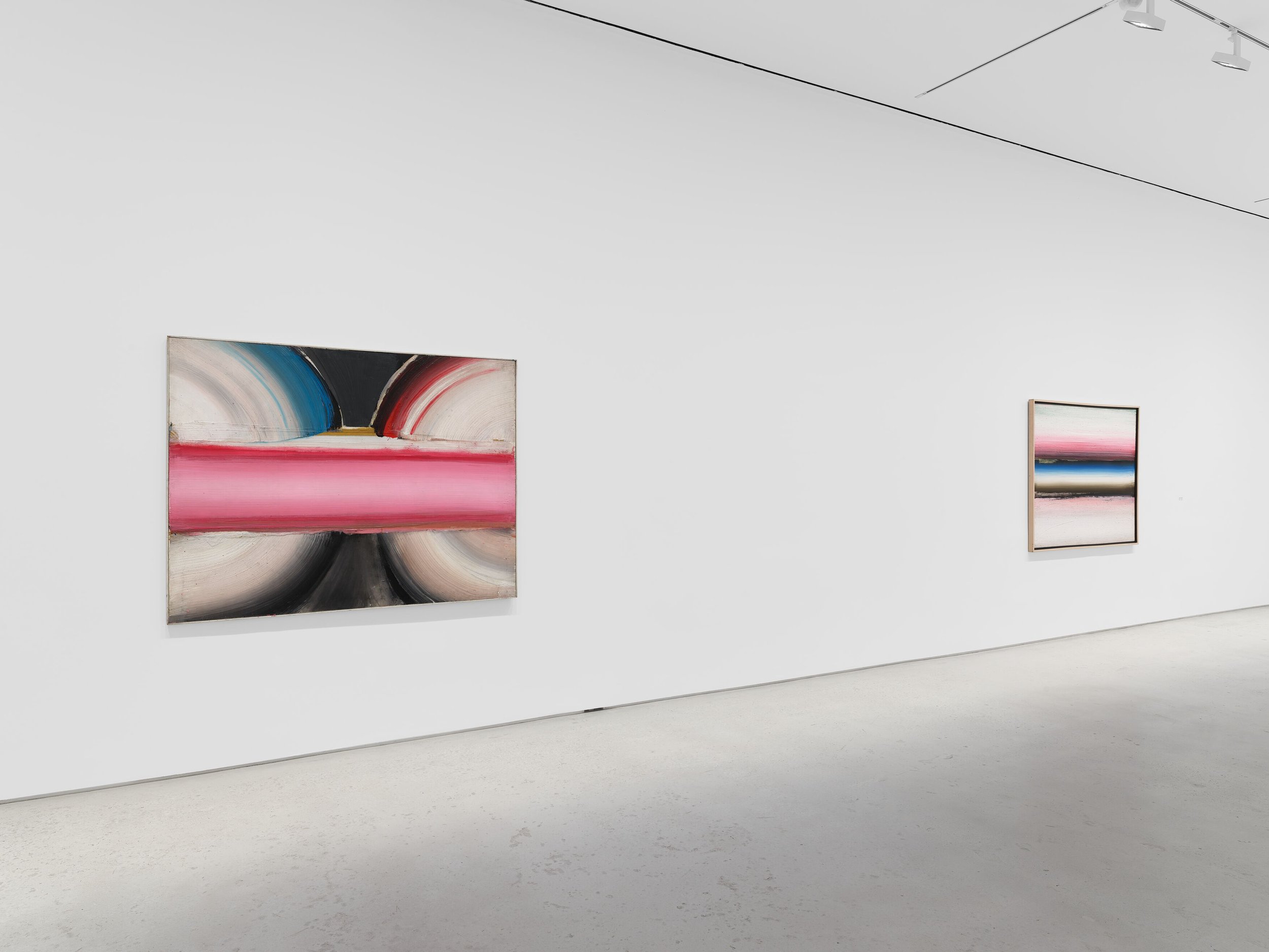
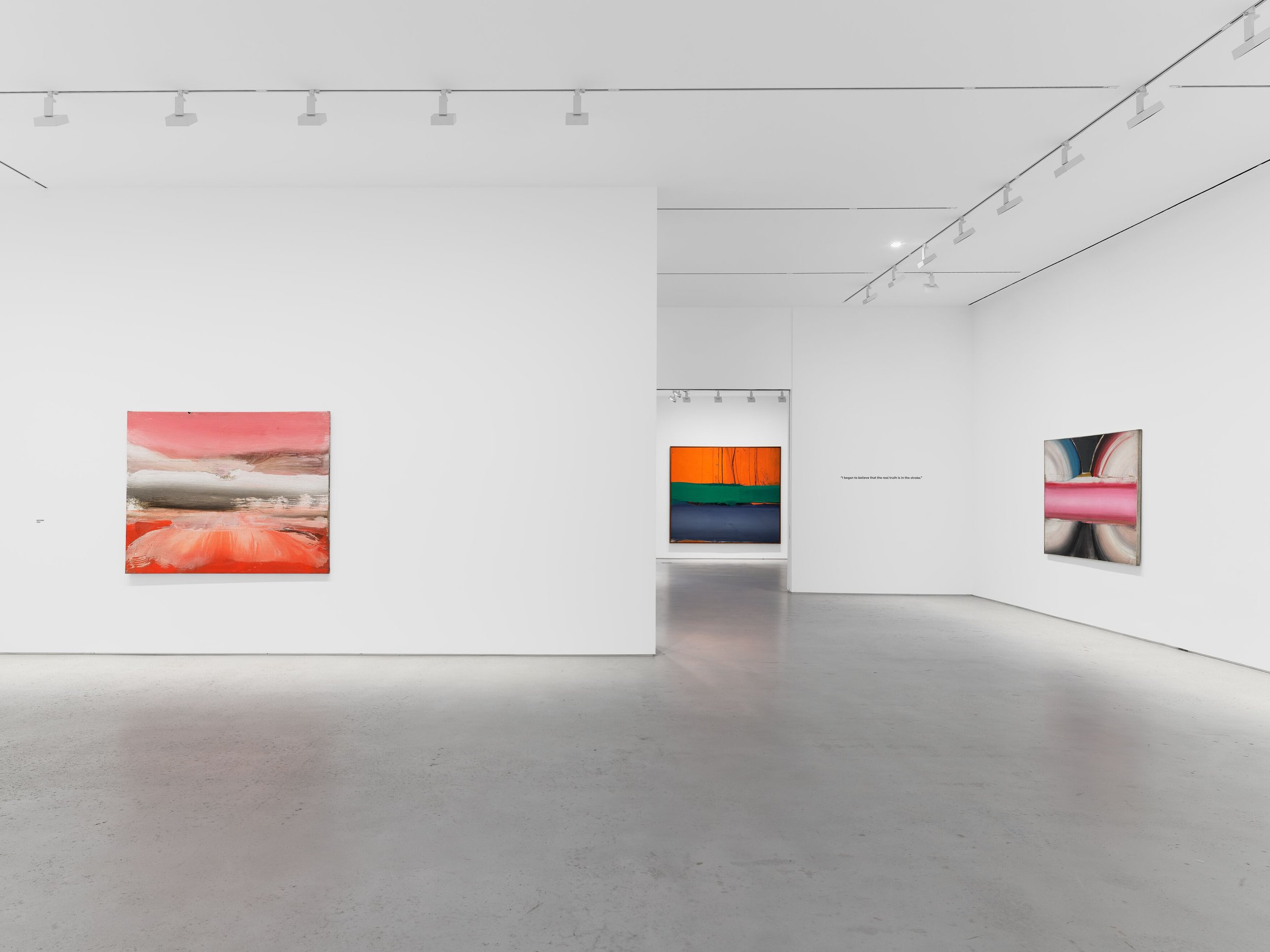

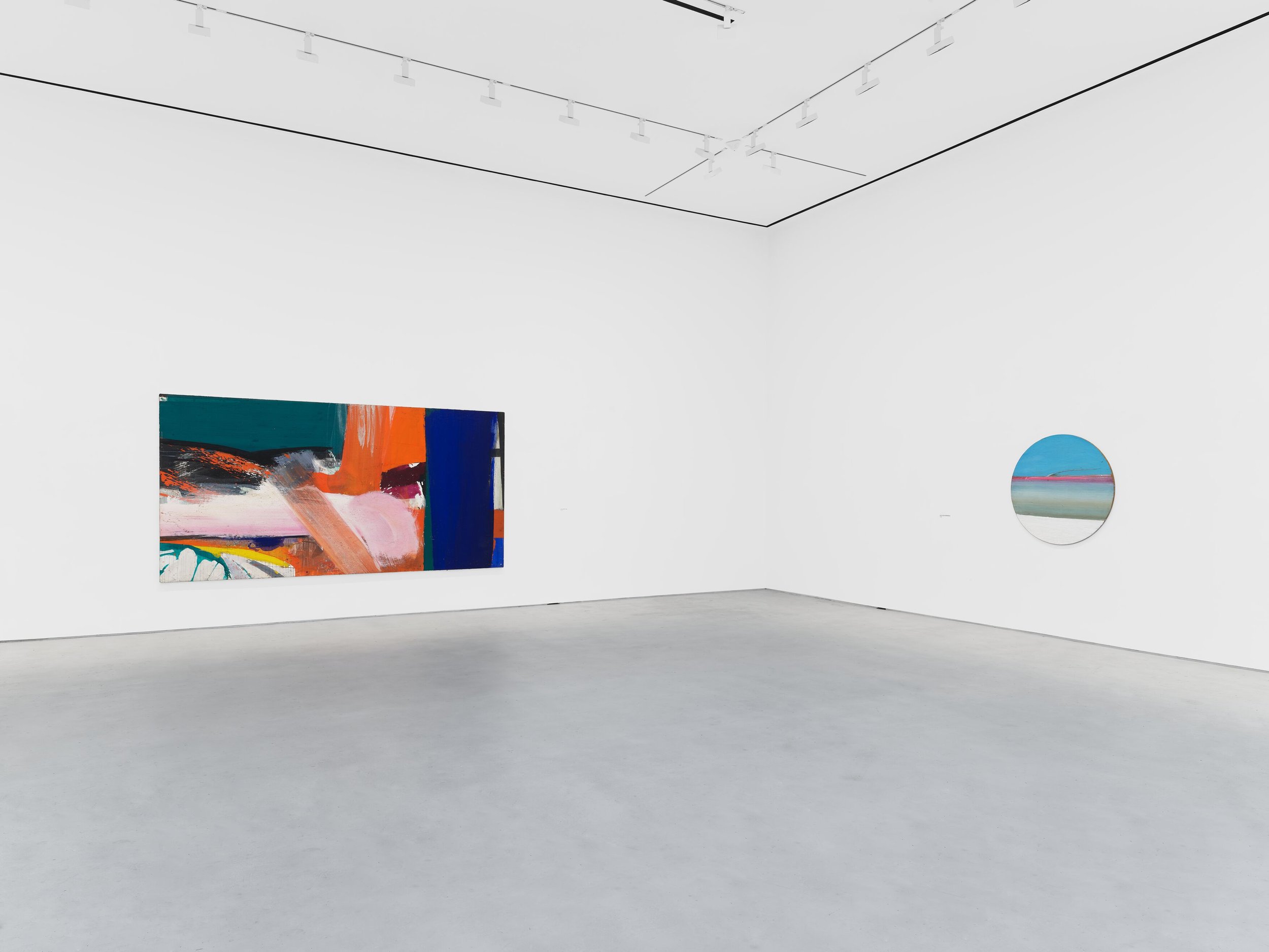
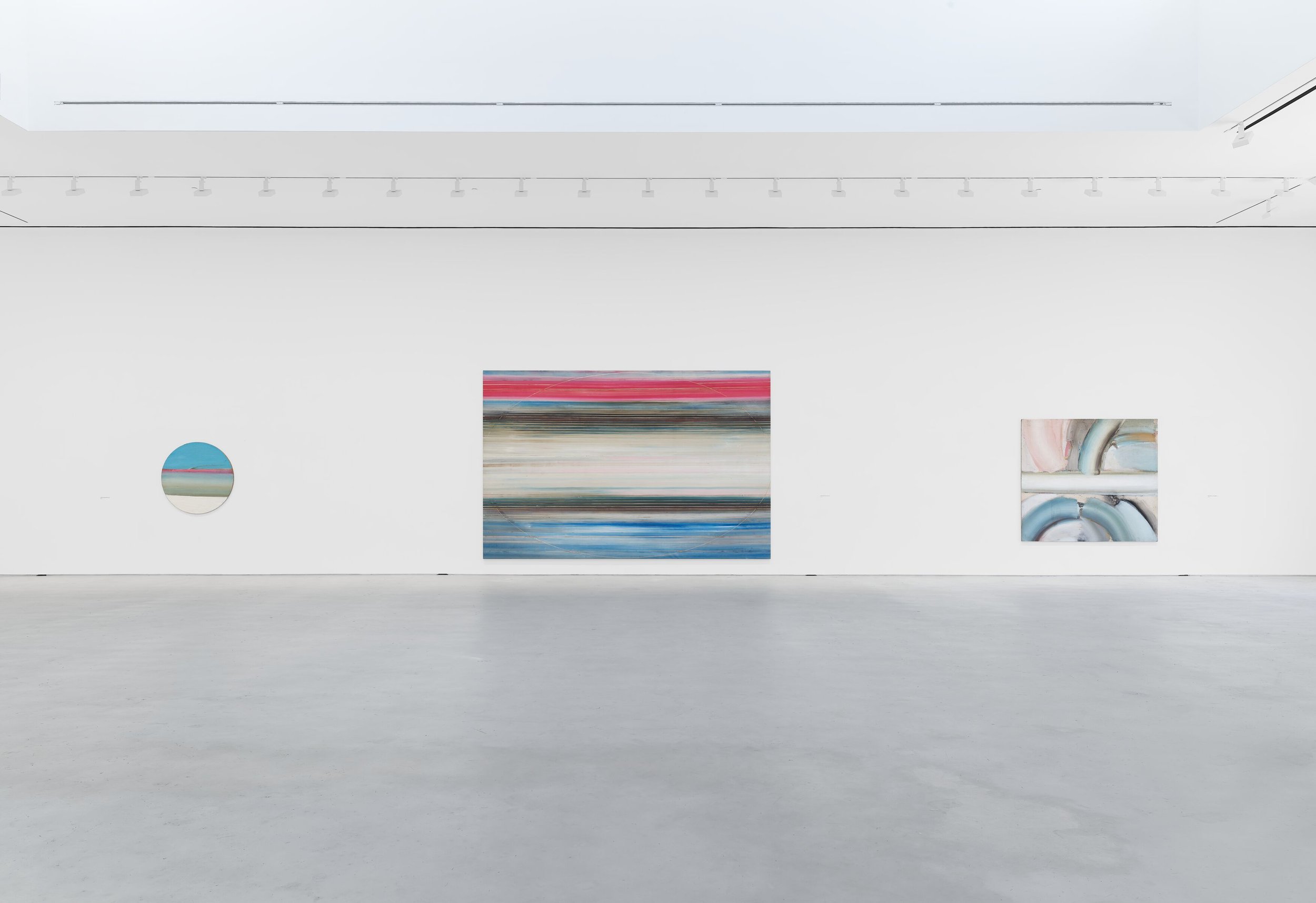
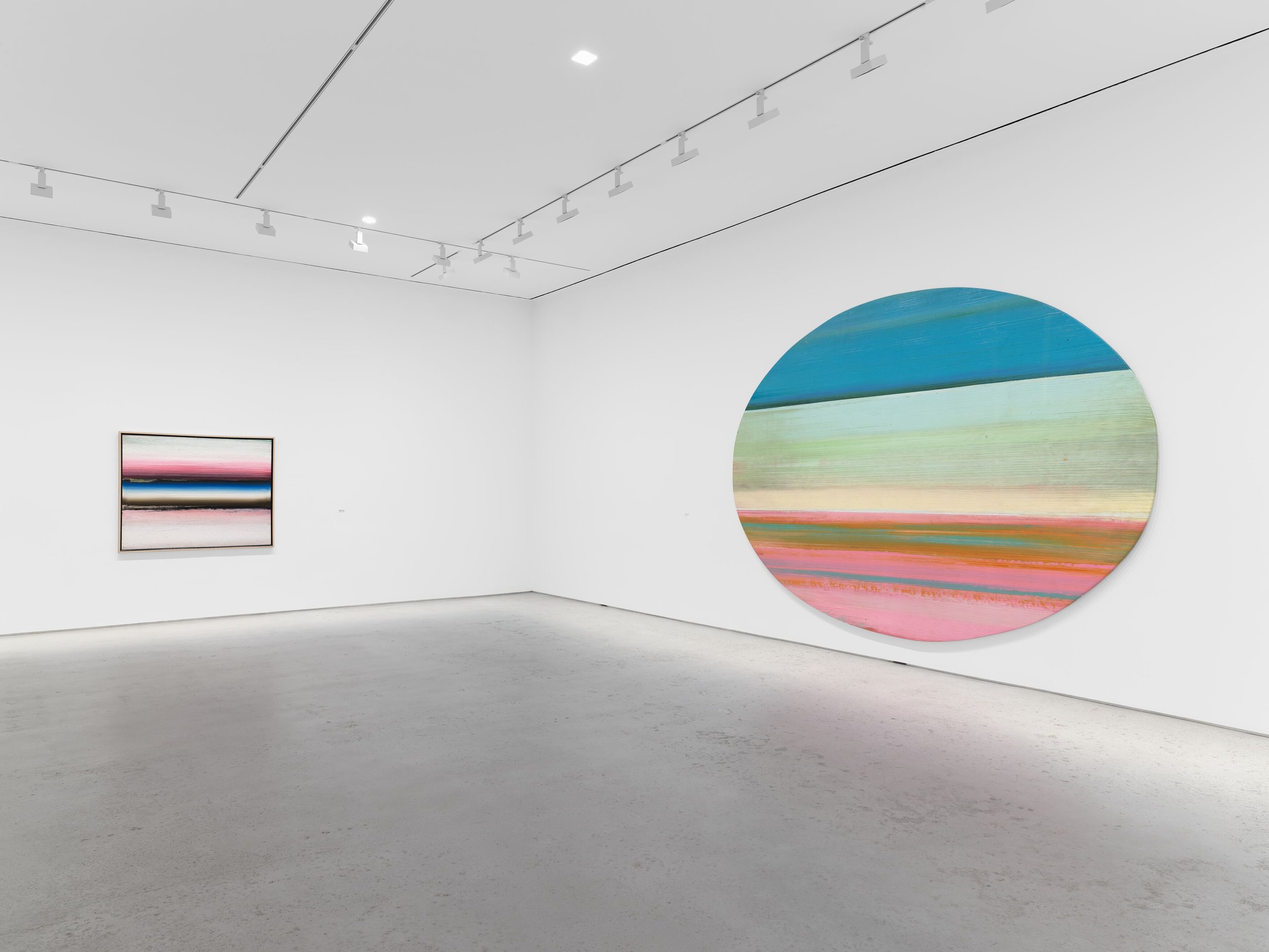
Installation view, ‘Ed Clark. The Big Sweep’ Hauser & Wirth New York 22nd Street 7 September – 21 October 2023 © The Estate of Ed Clark Photo: Sarah Muehlbauer
After studying at the Art Institute of Chicago and L’Academie de la Grande Chaumiere in Paris, Clark continued to live and work in France, absorbing the influence of such European modernists as Nicolas de Staël, Pierre Soulages, and Jean Riopelle. He became a member of a social and intellectual circle of American expatriate artists and writers, including fellow African-American creatives Beauford Delaney, Richard Wright, James Baldwin, and Barbara Chase-Riboud. Clark settled in New York in 1957, where, over the ensuing decade, he became part of the city’s dynamic downtown scene and a co-founder of the Brata Gallery, an artist-run cooperative among the Tenth Street galleries of the East Village. From the late 1960s until the last decade, Clark split his time between New York and Paris, traveling extensively to other locales from Mexico and Brazil to North Africa and Greece. In 2019, while living in Detroit, Clark passed away at the age of 93. ‘No matter what I do,’ the artist said, ‘there’s not a day that I’m not an artist.’
All images: © The Estate of Ed Clark Courtesy of the Estate and Hauser & Wirth
For more information about the exhibit, please visit Hauser & Wirth site. Also, follow the gallery on Instagram, Facebook, X and YouTube for more updates on this exhibit.
BAILEY:Photographs
Self Portrait, Singapore, 1957© David Bailey, courtesy of Fahey/Klein Gallery, Los Angeles
The Fahey/Klein Gallery is pleased to present selected photographs by David Bailey. This exhibition includes some of Bailey’s signature images of luminaries of fashion, music, and fine art. In portraits and little-known “torn” prints, he captures subjects including Jane Birkin, Michael Caine, David Hockney, Helmut Newton, Jean Shrimpton, and Mick Jagger.
Bailey’s bold and iconoclastic style has made him one of the world’s most renowned living portrait photographers and earned him as much fame as his subjects. Discarding the rigid rules of a previous generation of portrait and fashion photographers, he channeled and immortalized the energies of London in the 1960s and beyond. Self-taught, his distinctive style comprises stark white backgrounds, uncompromising crops, and striking, seemingly spontaneous poses. From the beginning of his career, which now spans more than six decades, his arresting yet spare portraits and fashion images have conveyed a radical sense of youth and sexuality, often typifying the look of the times.
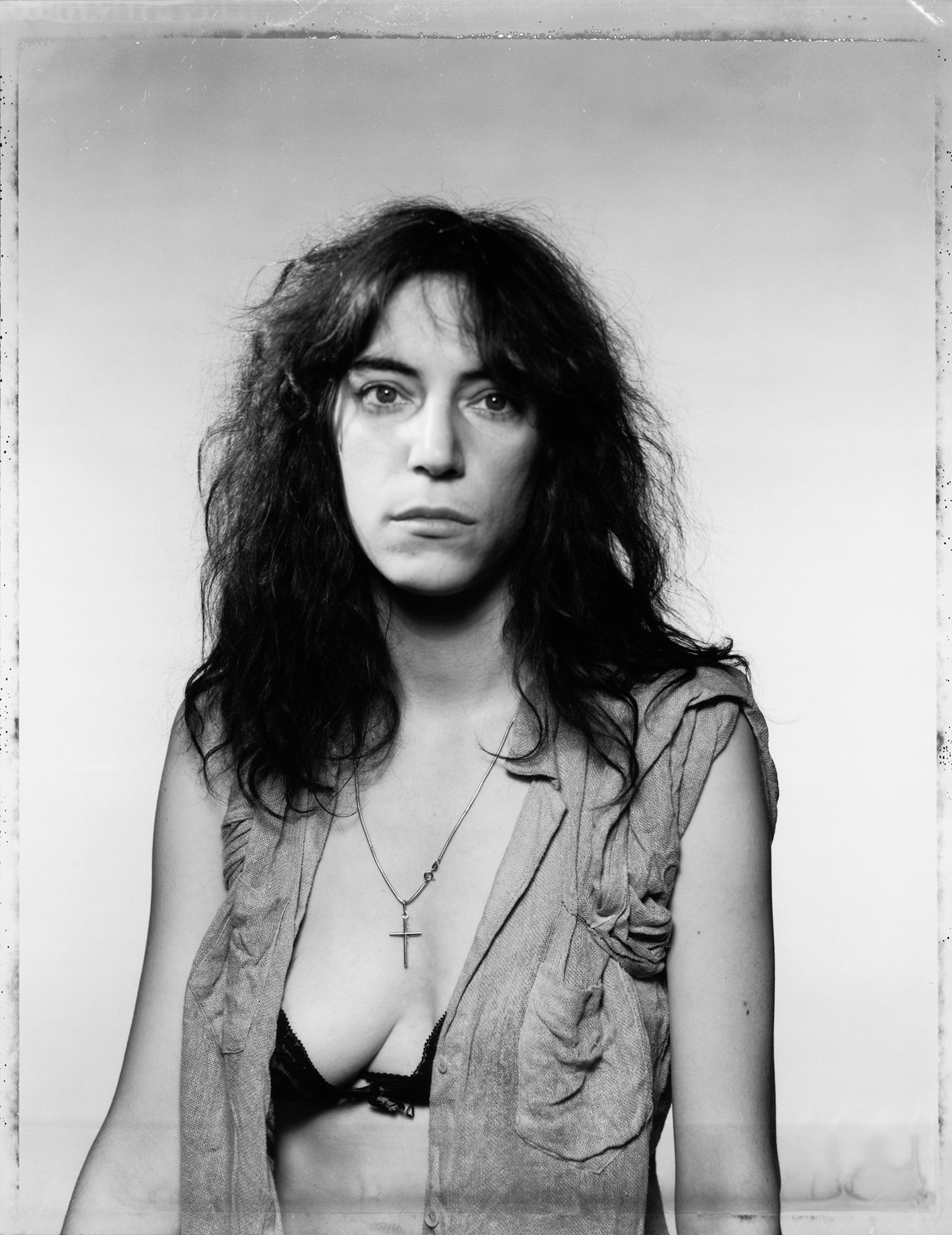
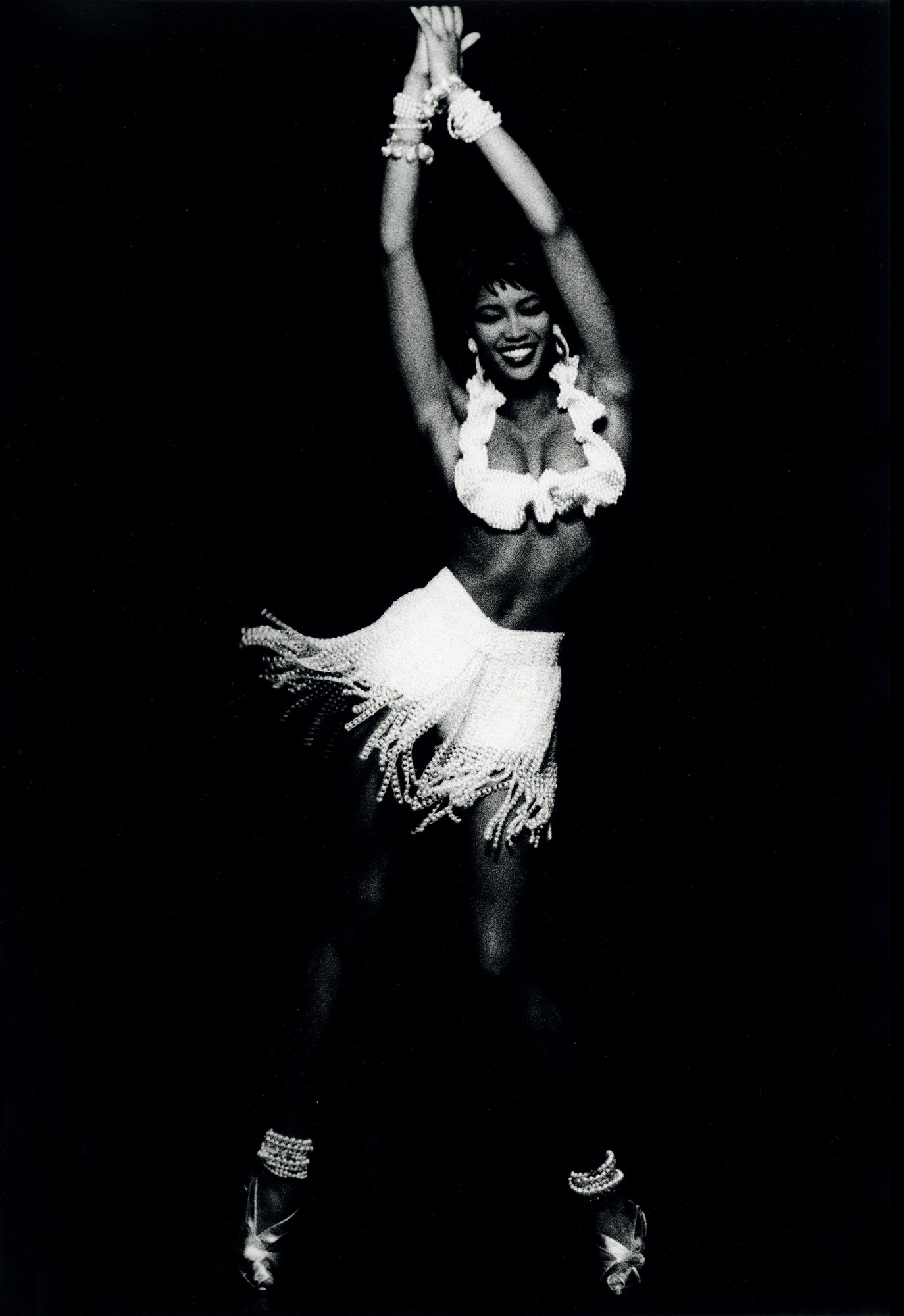
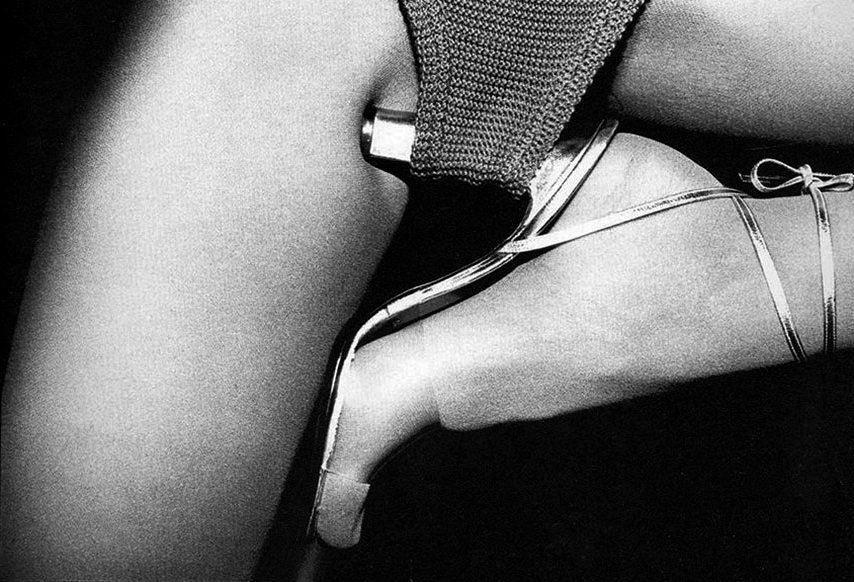
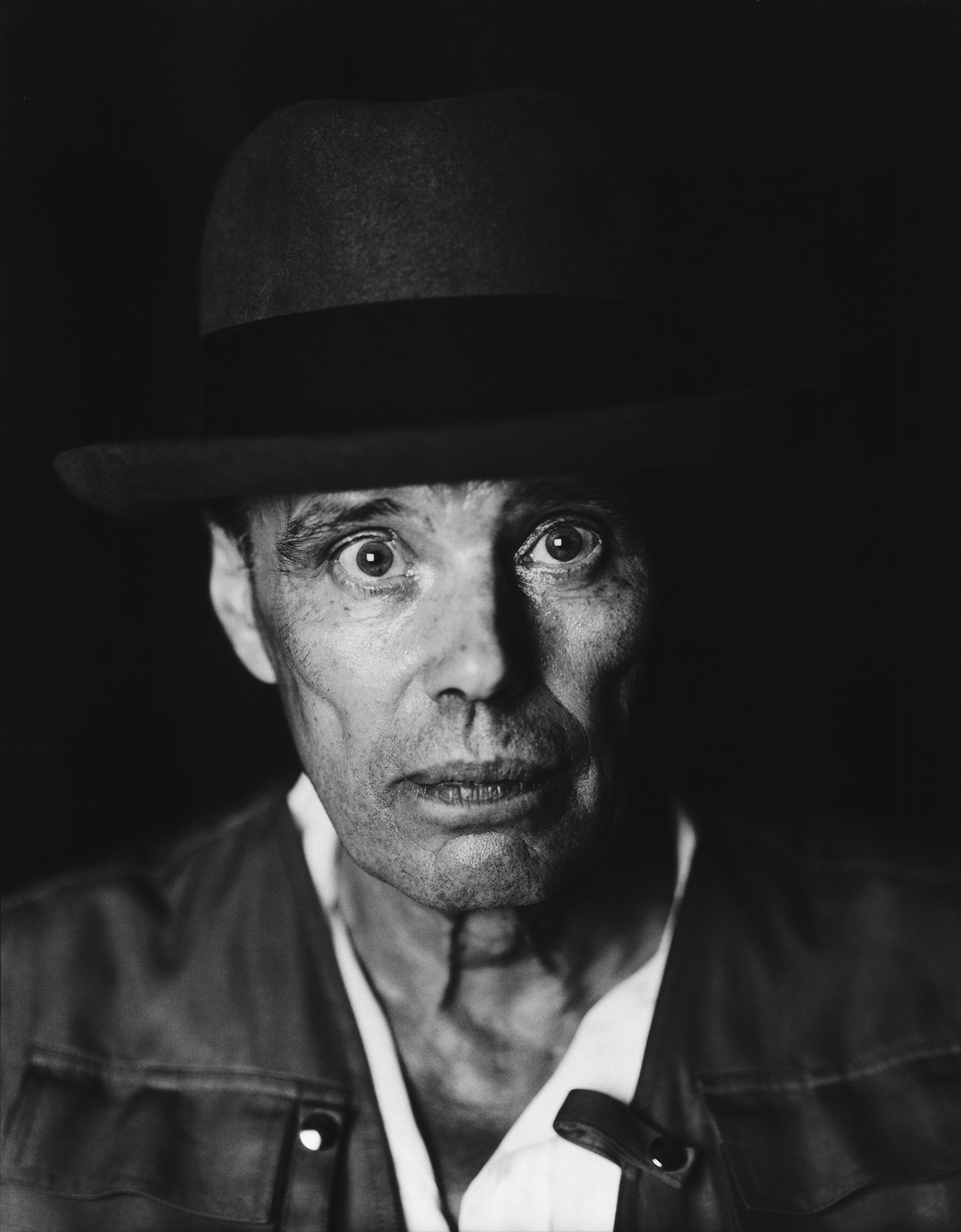

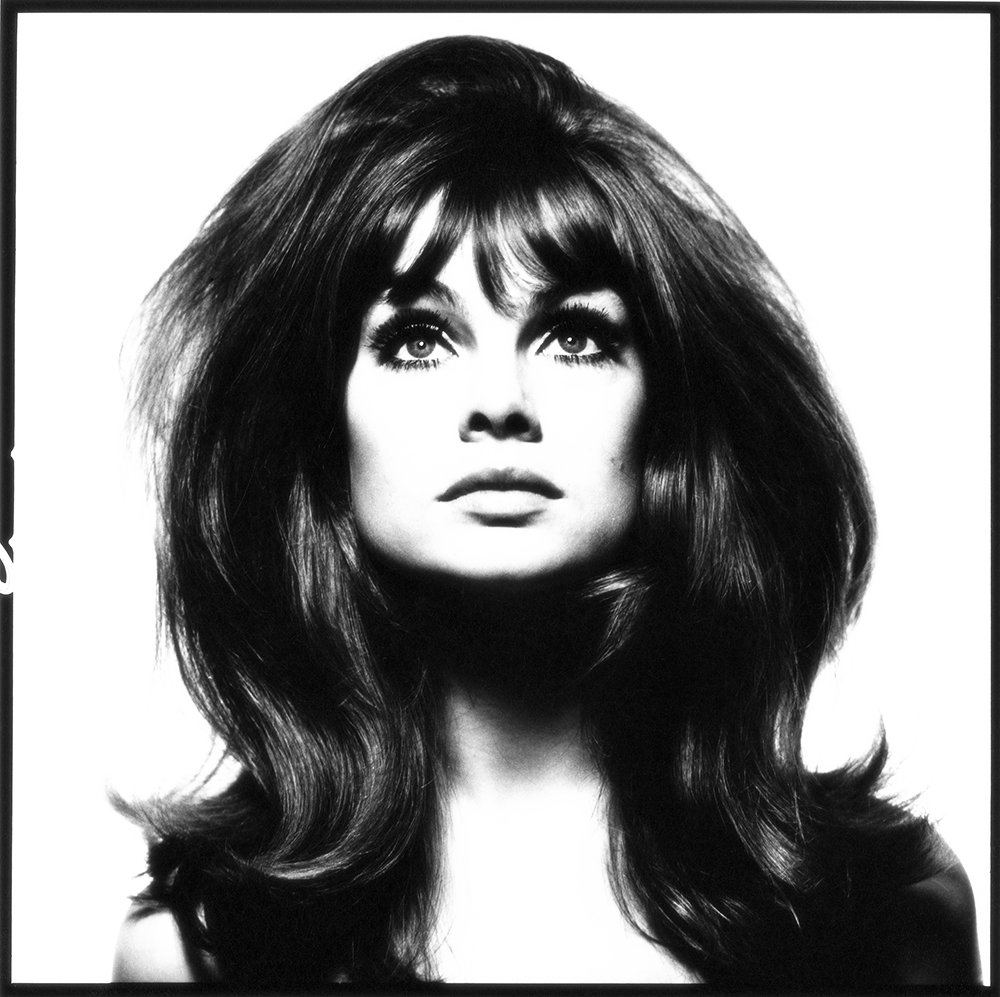

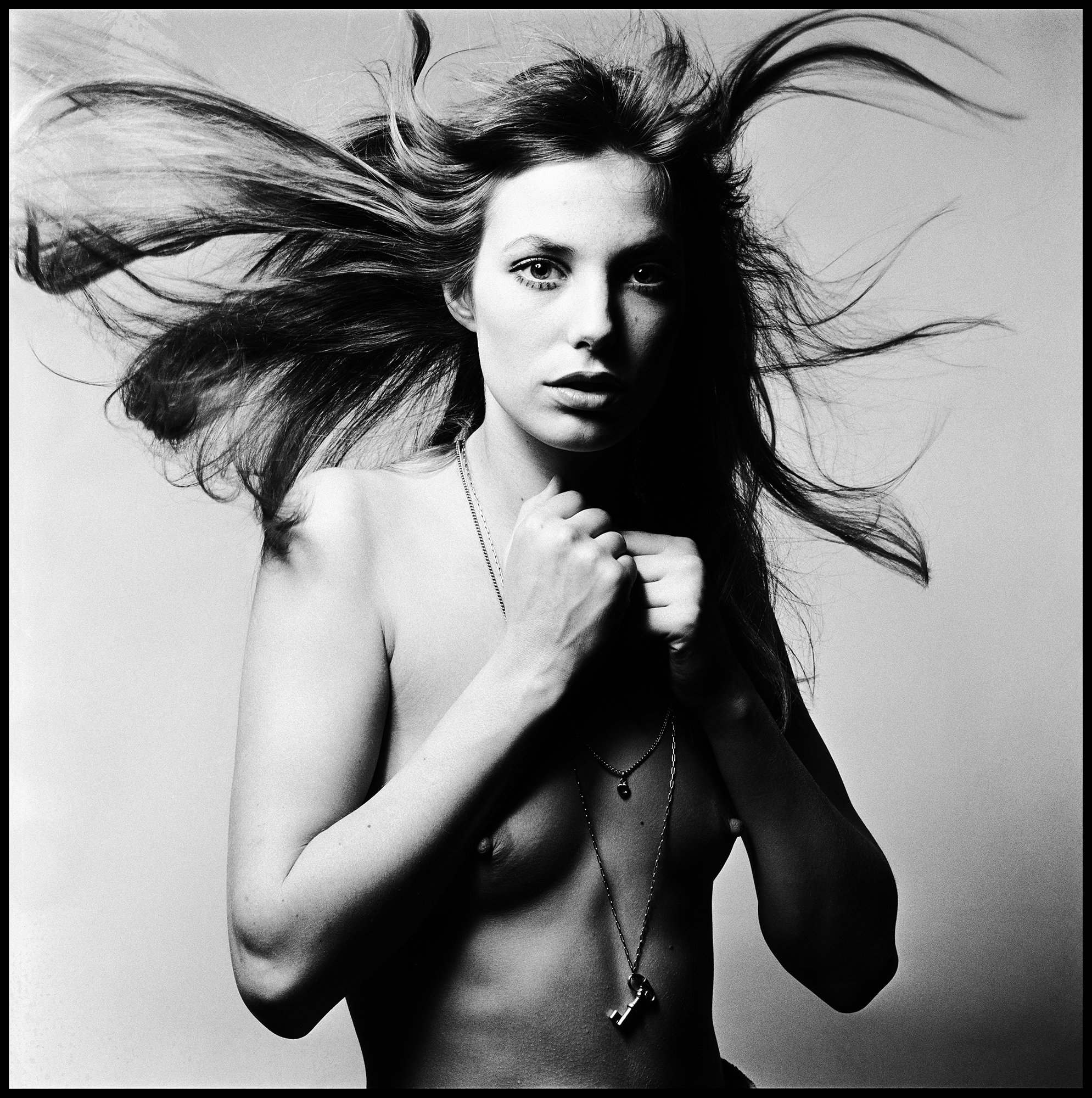

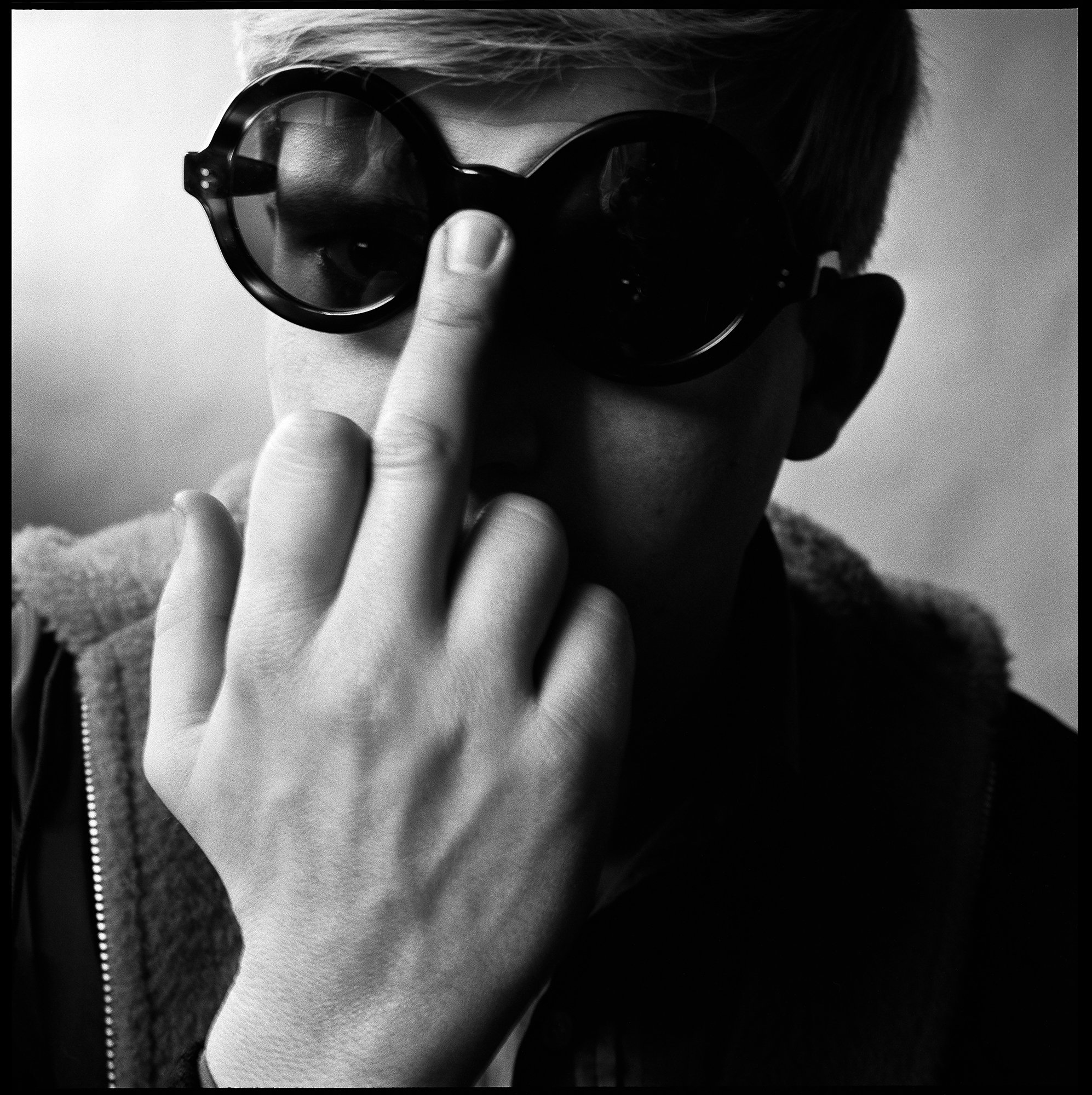
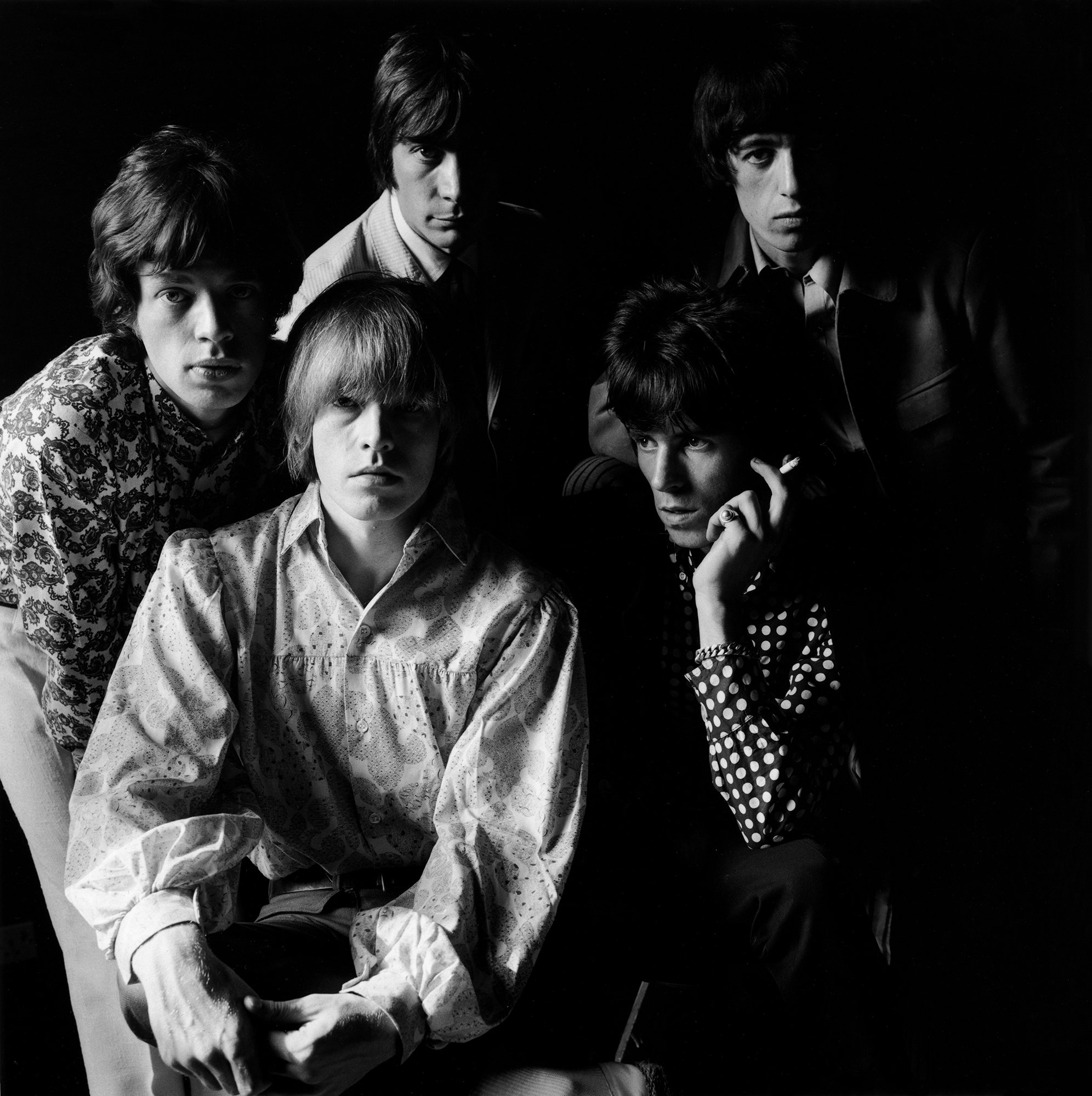
David Bailey was born in London in 1938. His childhood shaped his early experiences in the East End during the Blitz of WWII. Having left school at fifteen, he was conscripted into the Royal Air Force in 1956. Whilst posted in Singapore, he bought his first camera and was inspired to be a photographer after seeing Cartier Bresson's photograph, 'Kashmir'’. Bailey started working with fashion photographer John French as his assistant in 1959. He left soon after to strike out his career as a photographer and published his first portrait of Somerset Maugham for 'Today' magazine in 1960. Bailey’s meteoric rise at British Vogue in the early ’60s was followed by the publication, in 1965, of his first photography book, Box of Pin-Ups, which, as its title suggests, depicted media stars such as Mick Jagger, The Beatles, and Andy Warhol, among many others. His mercurial persona was the inspiration for the principal character—a fashion photographer—in Michelangelo Antonioni’s modern classic film Blow-Up (1966), and Bailey went on to create some of the most memorable and sensual portraits of the last century. Bailey has exhibited worldwide, with the first of his landmark exhibitions in 1971 at the National Portrait Gallery in London. Other exhibitions have been held at the Victoria and Albert Museum in London (1983), the International Center of Photography New York (1984), Birth of Cool, Moderna Museet, Stockholm (2000), and Bailey's Stardust, National Portrait Gallery, London (2014), which traveled through 2015 to Padiglione d'Arte Contemporanea, Milan, and Scottish National Gallery in Edinburgh. Bailey's work is held in private and public collections, including the National Portrait Gallery in London, the Victoria and Albert Museum, and the Los Angeles County Museum of Art.
The exhibition reception was held on Thursday, September 28th, and runs till November 11, 2023
For more information about the exhibit, please visit the gallery’s site.
JONATHAN MEESE DOCTOR-DOC-DR.-” HIGHNOON“IS BACK! (WONDERLAND DELARGE)
PhotoCredit: © Jana Edisonga
Four years on from the Meese Haute Couture series and the tribute it paid to Karl Lagerfeld, Jonathan Meese makes a spectacular return to Paris with DOCTOR-DOC-DR.- „HIGH NOON“ IS BACK! (WONDERLAND DE LARGE), an extravagant exhibition delving into the power of tales and legends.
Vidéo © Sylvie Boulloud
The names of a litany of heroes, from Alice in Wonderland, the Wizard of Oz, Little Red Riding Hood and the Three Little Pigs to the Smurfs, the Loch Ness monster, Fantômas and Parsifal jump out at us, becoming the standard bearers for a new vision of art. The paintings teem with material, now dripping off the canvas, now crushed to the point of no return, fusing visions of childhood with calls for revolution. Tales, myths and legends are the glue that binds collective culture. And for Jonathan Meese, they are the crucible where the Western imagination is forged as well as a vital source of inspiration in his practice: “Without fairy tales, we wouldn’t be able to build the future,” he says. “The whole world is a fairy tale, the future is in some way our wonderful world. We have a role to play in this all-powerful future. And art determines the future. Art is all-powerful.”
"DRACULA'S DRAGONBABY "MAGIC WOLF"!", 2023 huile et acrylique sur toile de coton non traitée | oil and acrylic on coarse untreated cogon cloth 120.5 x 100.3 x 3.3 cm Photo: Roman März
Over the last twenty or so years, Meese has developed an uncategorizable body of work, lying somewhere between expressionism and actionism, combining painting, sculpture, installations, and performance. His work questions the boundary between culture and nature, creativity and conformism, appearance and power, proposing a singular philosophy where art alone can serve as our guide to the evolving world.
"SCHNAPP' DEN TRAPPERZ, DER DICH ANTEUFELT", 2014 Huile, acrylique, pâte à modeler acrylique sur toile | Oil, acrylic, acrylic modelling paste on canvas 120.8 x 100.5 x 3.3 cm Photo: Jan Bauer
Jonathan Meese was born in Tokyo in 1970 and lives and works in Berlin and Ahrensburg. His work has been featured in numerous international exhibitions since he first exhibited in Berlin and at the Berlin Biennale in 1998. He has taken part in various major group shows such as Generation Z at PS1 in New York (1999), New Blood at the Saatchi Collection in London (2004), and Dionysiac at the Pompidou Centre in Paris (2005). The Deichtorhallen in Hamburg and Magasin de Grenoble organized a retrospective of his work in 2006: Mama Johnny. Other notable exhibitions of his work include those held at the Miami MOCA (2011), Akademie der Künste in Vienna (2012), Prague National Gallery (2015), Kunsthistoriches Museum in Vienna (2017), Carré Sainte-Anne in Montpellier ( 2017) and Pinakothek der Moderne in Munich (2018). In 2019, the artist took the Dr Zuhause: K.U.N.S.T (Erzliebe) project to Lübeck, where it occupied all the city's exhibition spaces. In 2022, in collaboration with young artist Conny Maier, he put together a large-scale exhibition entitled Hansel and Gretel (Let me in Ruh’) in Aurich, Germany.










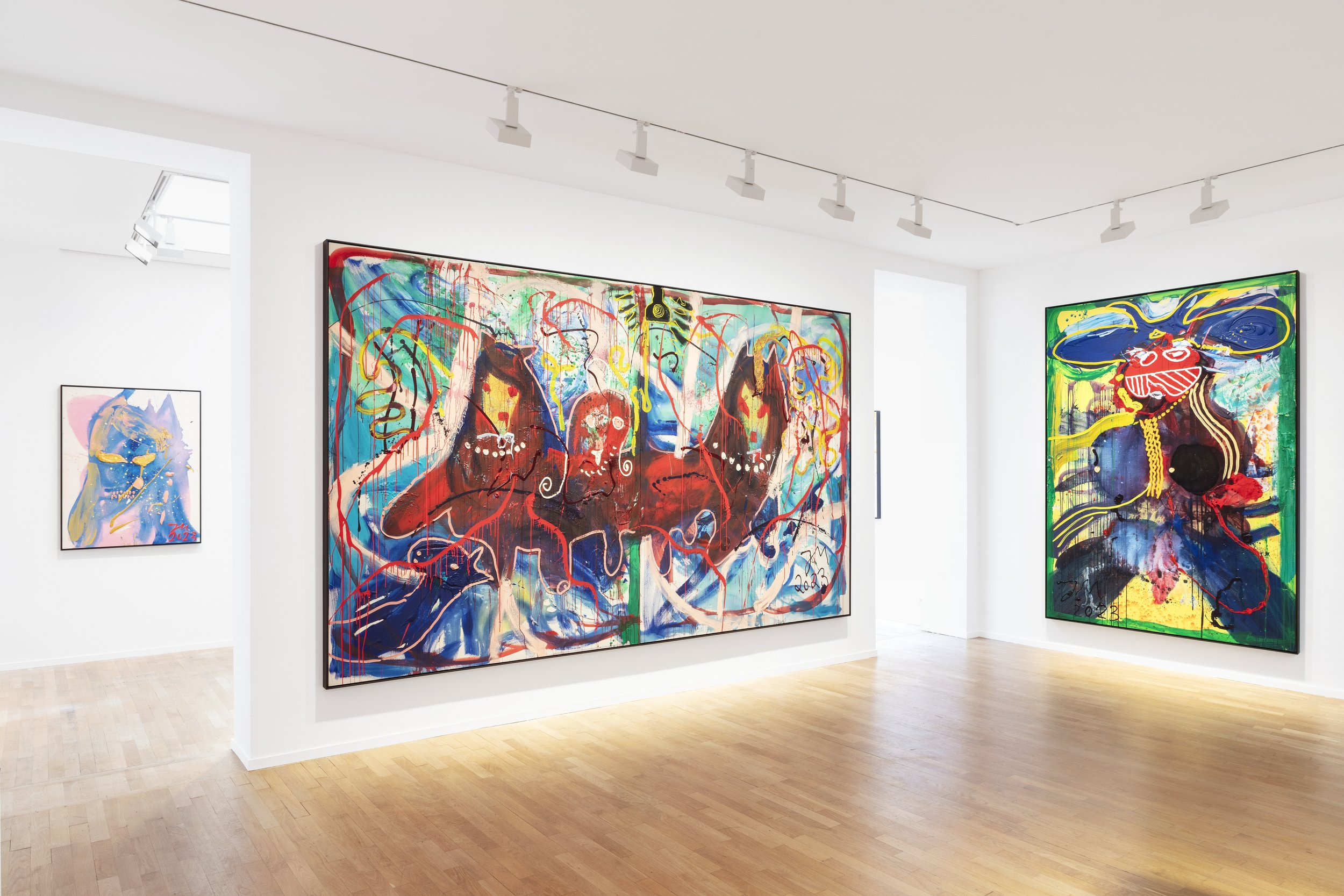







Toutes les images / All images: © Courtesy of the artist and TEMPLON, Paris —Brussels — New York
Jonathan Meese has also created sets and scenery for the theatre and opera, including Dionysos by Wolfgang Rihm, presented at the Salzburg Festival in 2010 and the Staatsoper in Berlin in 2012. He designed the scenery for Charpentier's Médée directed by Pierre Audi at the Théâtre des Champs Elysées in 2012. His improvisation on Wagner's Parsifal at the Berlin Staatsoper in 2005 and Homage to Noël Coward at Tate Modern in 2006 were both unforgettable events. In 2007, he wrote and performed De Frau: Dr. Poundaddylein – Dr. Ezodysseusszeusuzur at the Volksbühne in Berlin, and in 2020, he presented a new show, Lolita (R)evolution (Rufschädigendst)-Ihr Alle seid die Lolita Eurer Selbst! at Theater Dortmund. In 2021, during the global pandemic, Jonathan Meese released an acclaimed record in collaboration with renowned electronic music producer DJ Hell, Hab keine Angst, hab keine Angst, ich bin deine Angst [Don't be afraid, don't be afraid, I'm your fear].
The exhibit has been on display since the 2nd of September at the Paris-Beaubourg location and will close on October 28th of this year. For more information about this exhibit, please visit the Templon Gallery website.
CLAUDE VIALLAT : A Couple of Sidesteps
87-year-old French artist Claude Viallat is taking “a couple of sidesteps” to reveal a series of new paintings created between 2022 and 2023 at the Galerie Templon Brussels space. A founder and leading member of the Supports/Surfaces group in the 1970s, Claude Viallat, has spent the last 50 years exploring the limits of abstract painting through variations around his signature “shape” – a small bone form – reproduced on a wide variety of fabrics and tarpaulins, hung unmounted and unimpeded in space. With this new exhibition, carefully installed by Claude Viallat himself, the artist unveils a handful of his latest experiments. In a number of works, the shape, rather than being repeated as an endless sequence, is diluted to the point where it forms large spots of watery colors. In other pieces, it is outlined with dripped paint, suggesting a contrasting image of calligraphy.
Vidéo © José Huedo
The use of multi-colored fabrics offers him the opportunity to introduce new hues: a deep ruby canvas rubs shoulders with a soft mauve or platinum grey piece. In Viallat’s work, the palette always chooses itself: “I am an instrument,” he explains. “The work has a life of its own. I only have to concern myself with the result.” Another constant feature of the artist’s approach is that the exhibition layout is almost a work of art in itself.
The artist delights in juxtaposing canvases, mixing up surprising textures and patterns. He uses this ever-innovative game of contrasts to reveal an audacious and intuitive dialogue between volume and surface, accumulation and void. Claude Viallat was born in 1936 in Nimes, France, where he continues to live and work.









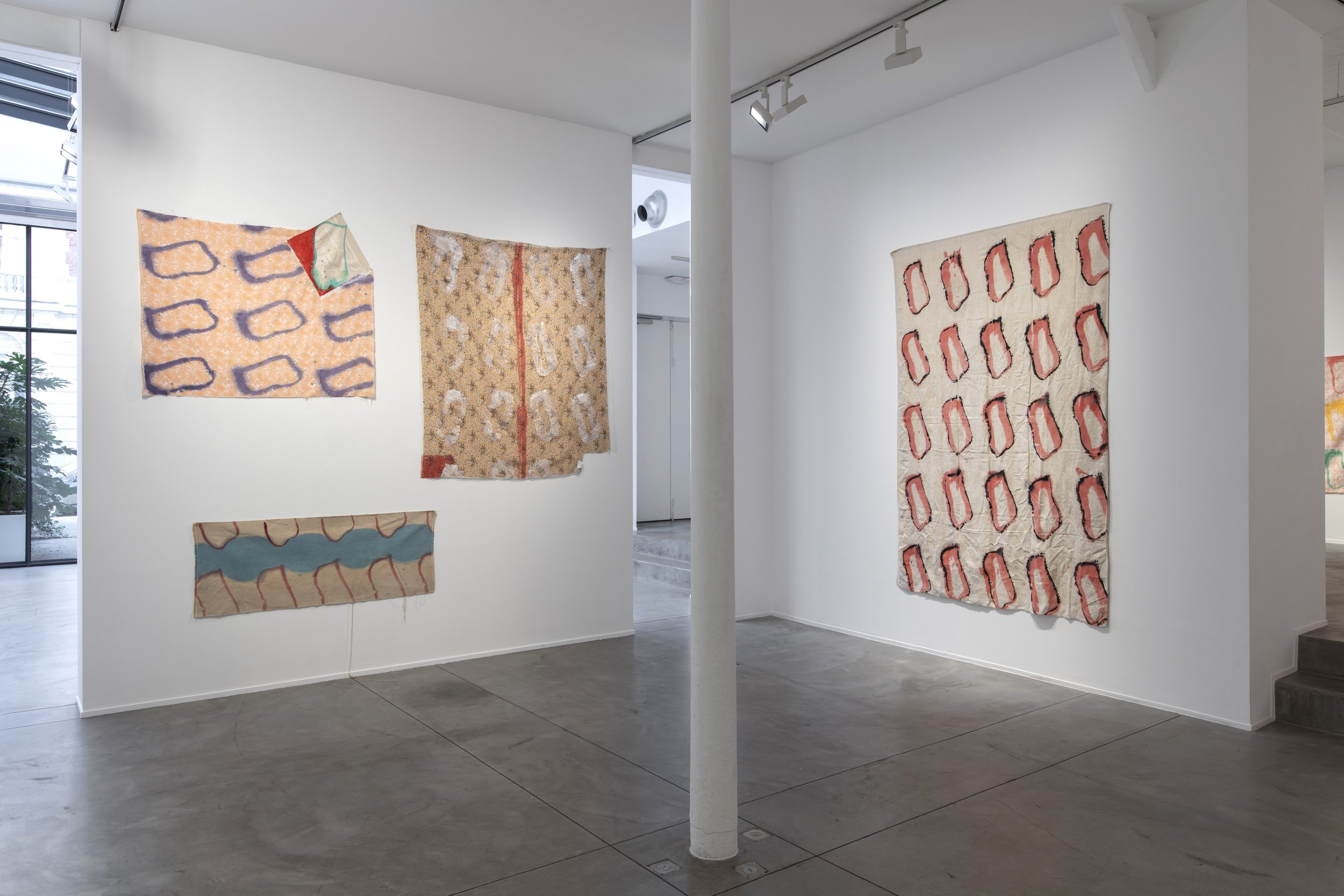
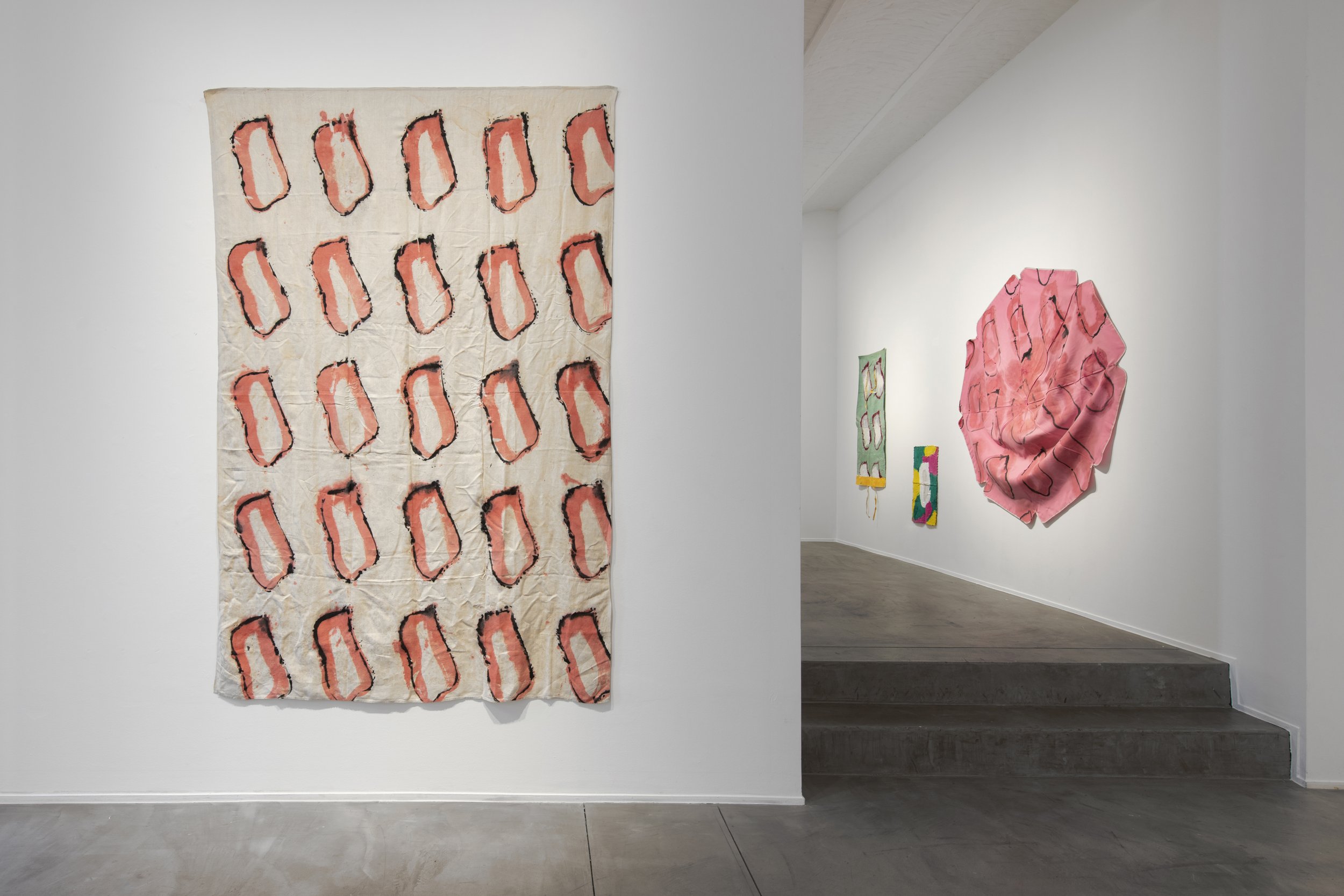



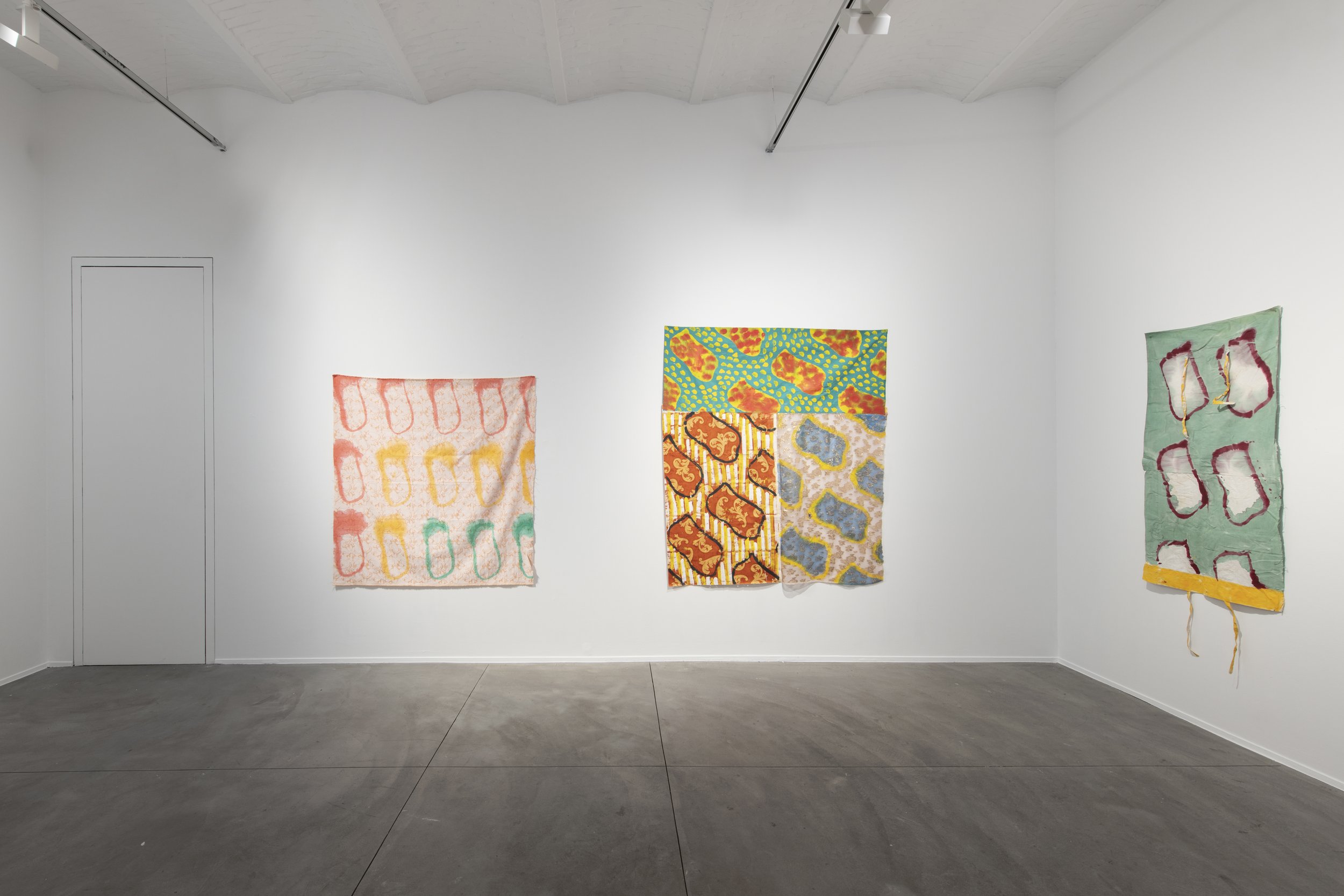
Vues d'exposition © Isabelle Arthuis
The many solo exhibitions of his work include shows at the MACBA in Buenos Aires (2022), Venet Foundation in southeastern France (2019), Musée Fabre in Montpellier (2014), Ludwig Museum in Germany (2014), Museo Universitario del Chopo in Mexico (2004), MuBe in Brazil (2001), Kunsthalle Düsseldorf in Germany (1983) and Musée National d’Art Moderne – Centre Pompidou in Paris (1982). He represented France at the 43rd Venice Biennale in Italy in 1988. His works are featured in over fifty public collections in France and internationally, including at the Musée National d’Art Moderne - Centre Pompidou in Paris and MoMA in New York. His native city is holding a major retrospective of his work for the first time. It will take place at the Carré d’Art – Musée d’Art Contemporain starting on 27 October 2023. The city of Nîmes has also announced the opening of a Claude Viallat foundation in the former Saint Joseph Chapel. Architect Jean-Michel Willmotte has been commissioned with the design of the foundation, which is scheduled to open in late 2025.
Since his first collaboration with Daniel Templon in 1972, this will be the artist’s eleventh exhibition at the gallery that has represented him since 1999.
This exhibit has been on view since the 2nd of September at the Brussels location and will close on the 4th of November of this year. Please visit the Templon Gallery's site for more information about Claude’s exhibit.
ROBIN KID : KINGDOM OF ENDS
For his second solo show in Paris with Templon, Robin Kid is coming back to the Grenier-Saint-Lazare space with his new series « Kingdom of Ends,» taking over the entire gallery to create an immersive experience consisting of painting, sculpture, and installation, all centering around a two-story high mobile.
Kingdom of Ends - XIII, 2023 Résine uréthane, fibre de verre, fonte d'aluminium, acier inoxydable, peinture polyuréthane | Urethan resin, fiberglass, cast aluminum, stainless steel, polyurethane paint H250 x W190 x D90 cm Photo: ROBIN KID
Through the evocative poignancy of mass-produced foundational imagery depicting our commonly shared childhood, Robin Kid is delving into the notion of personal and cultural memories, conjuring up feelings of uncertainty but also of the most naive hopes and dreams gathered during childhood and teenage years.
By combining stainless steel panels and aluminum sculpture with oil painting in a toylike way, the artist is manufacturing an idealized billboard to our shared desire while operating in the context of power and control; Borrowing its title « Kingdom of Ends » from Kant’s ethical principle, the work explores our collective need and hope for a secure existence -and the fear that in Today’s world many might never attain it.












































Toutes les images / All images: © Courtesy the artist and TEMPLON, Paris —Brussels — New York
Influenced by Robert Rauschenberg’s “Combines” and Jim Dine’s early works like “Lawnmower” and “Child’s Blue Wall,” - the Kingdom of Ends series are hybrid works, neither painting nor sculpture, but both at once. They invade the viewer’s space, demanding its attention and instigate a dialogue by simultaneously becoming eye-popping and menacing yet perfectly balanced advertisements, invoking a nostalgia so strong it amounts to an ache, for they show us a time and place of which we are and always have been exiled from.
Robin Kid (b. 1991) is an autodidact multidisciplinary artist from Dutch descent. His works hijack a variety of social, political and traditional imagery of the past and present, with rebellious, religious, fantastical and in some ways offensive undertones. He pulls intuitively from the world of advertising, the Internet, the entertainment industry and his childhood memories, to produce ambitious, enigmatic and thought provoking narratives, which question the polarized world of the 21st century.
This exhibit has been on view since the 2nd of September at the Paris- Grenier Saint Lazare location and will close on the 21st of October of this year. Please visit the Templon Gallery's website for more information about Robin’s exhibit.
GEORGE SEGAL : Nocturnal Fragments
Blimpies, 1999 Plâtre, peinture, bois et verre | Plaster, paint, wood and glass 244 × 265 × 122 cm — 96 × 104 1/4 × 48 in. Photo: Isabelle Arthuis
Templon’s New York space is celebrating its first anniversary by paying tribute to American master painter and sculptor George Segal (1924-2000).
A pioneer of installations combining plaster and everyday objects, the Bronx native began his career as an abstract painter. When he discovered the use of pre-cut plaster bandages in the early 1960s, he abandoned paint as a medium and, at the height of the Pop Art movement, turned his focus on three- dimensional paintings with plaster casts applied directly to living models. This unique visual language soon became his signature, opening the door to endless formal possibilities. Both spontaneous and frozen, his compositions reveal an unexpected poetic force as well as a social and political radicality.
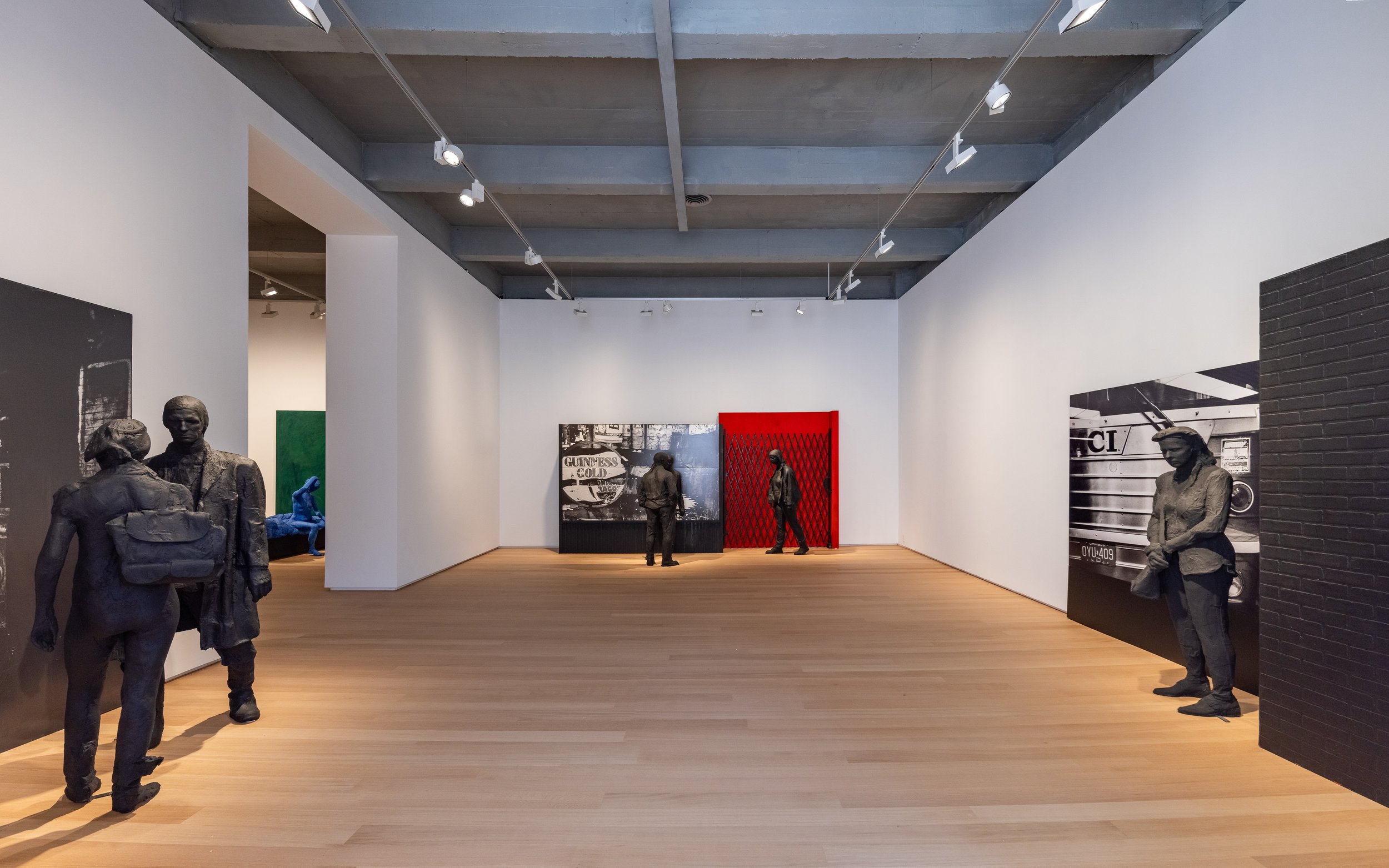
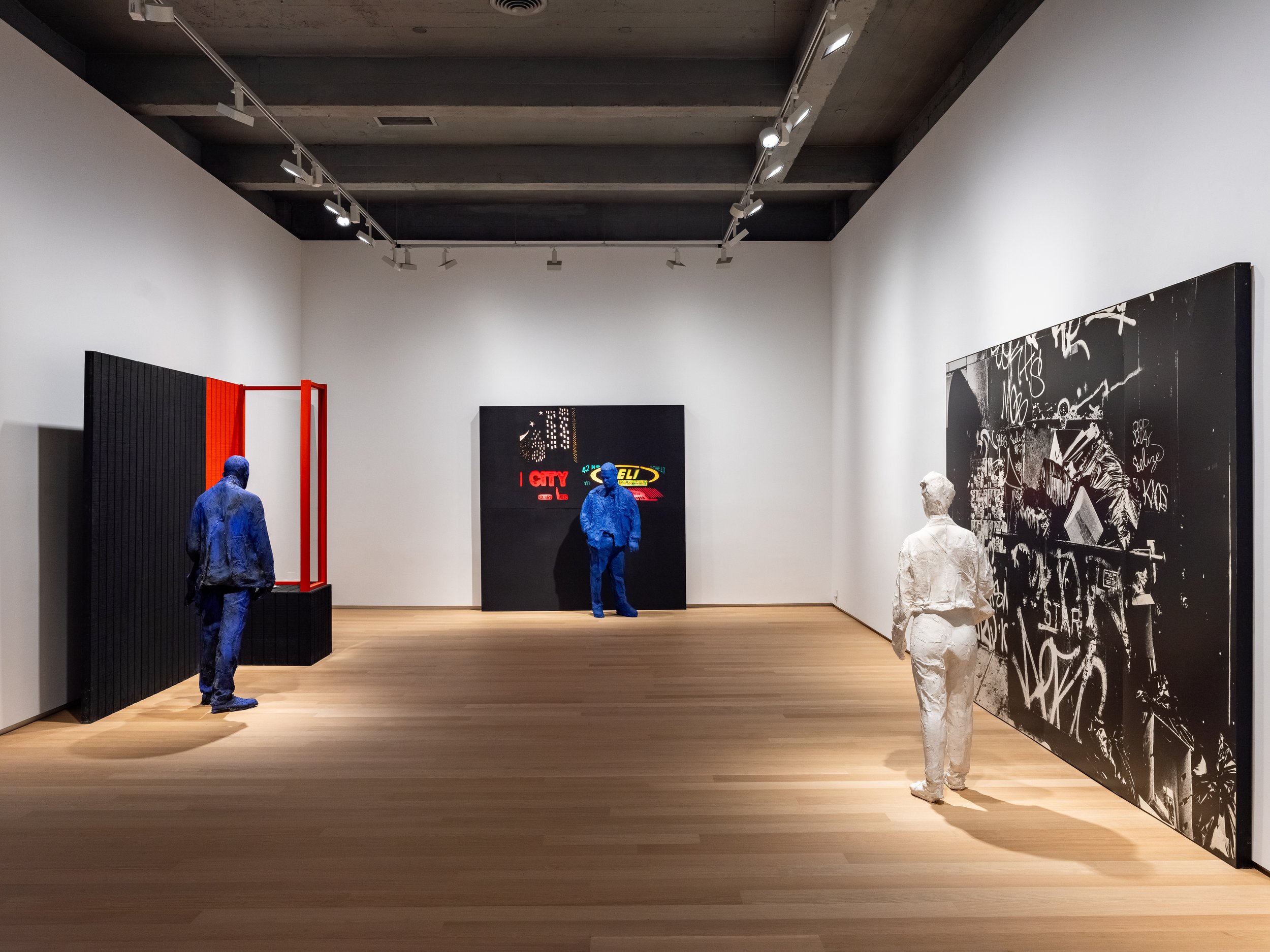
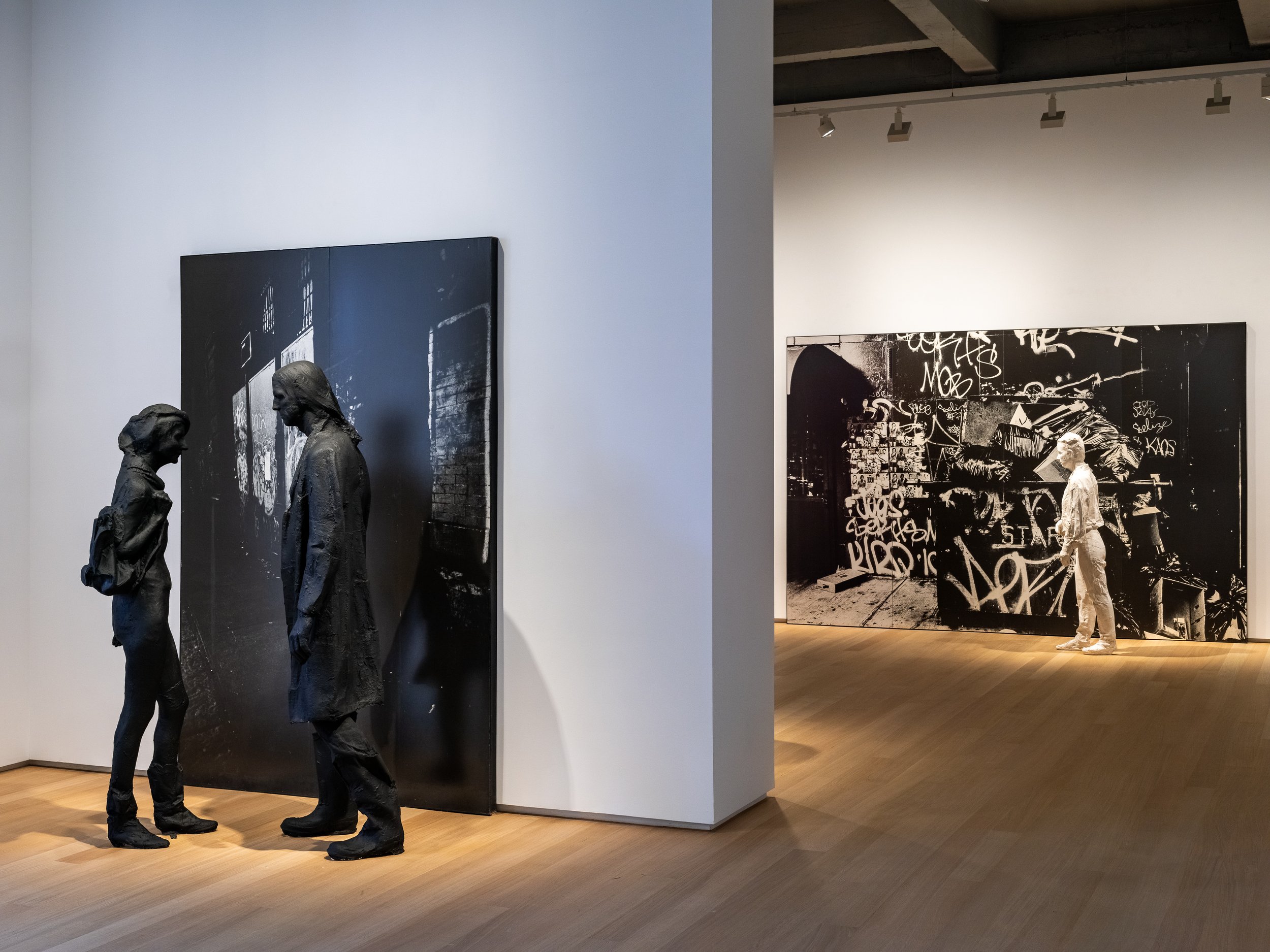
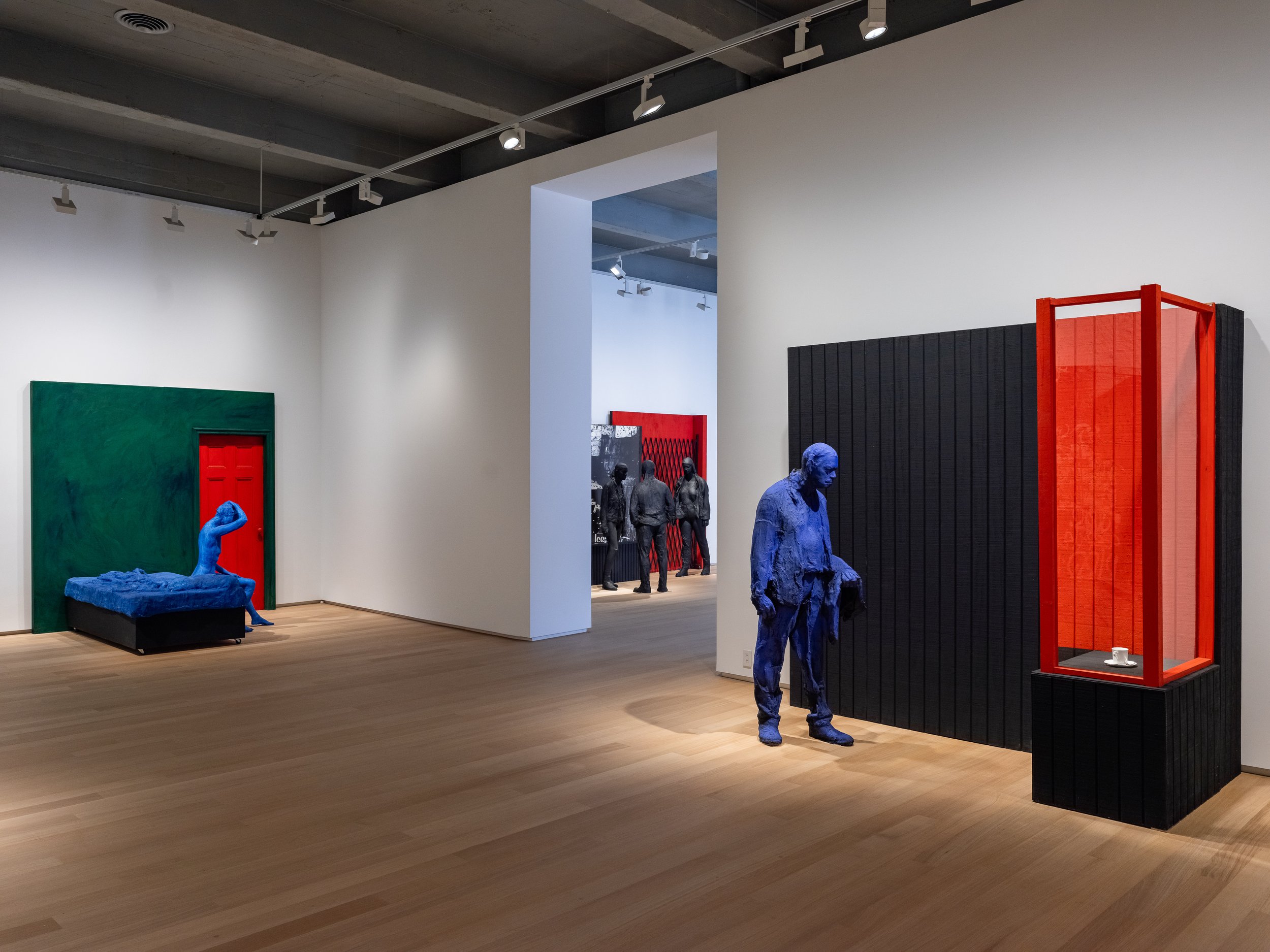

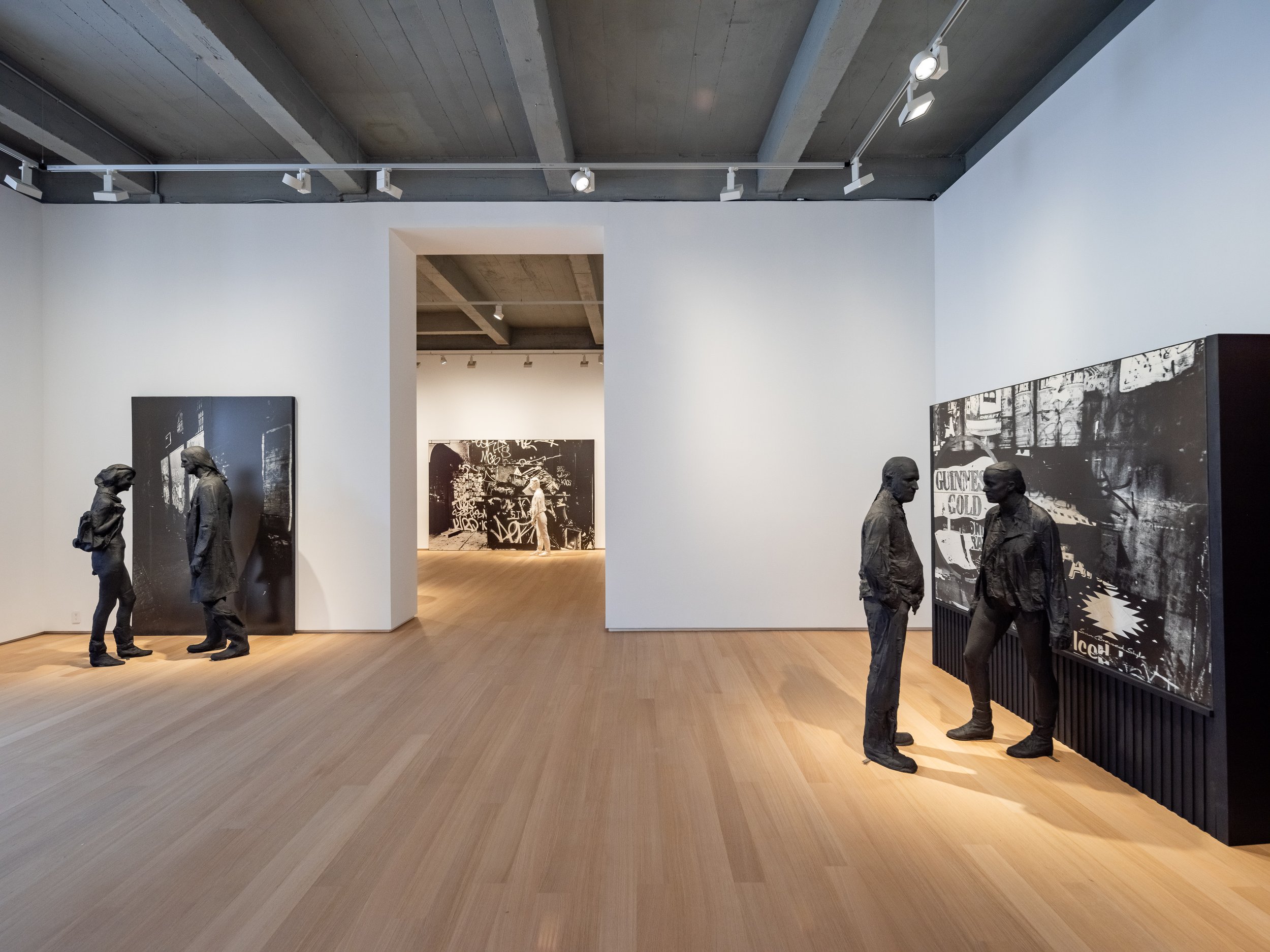
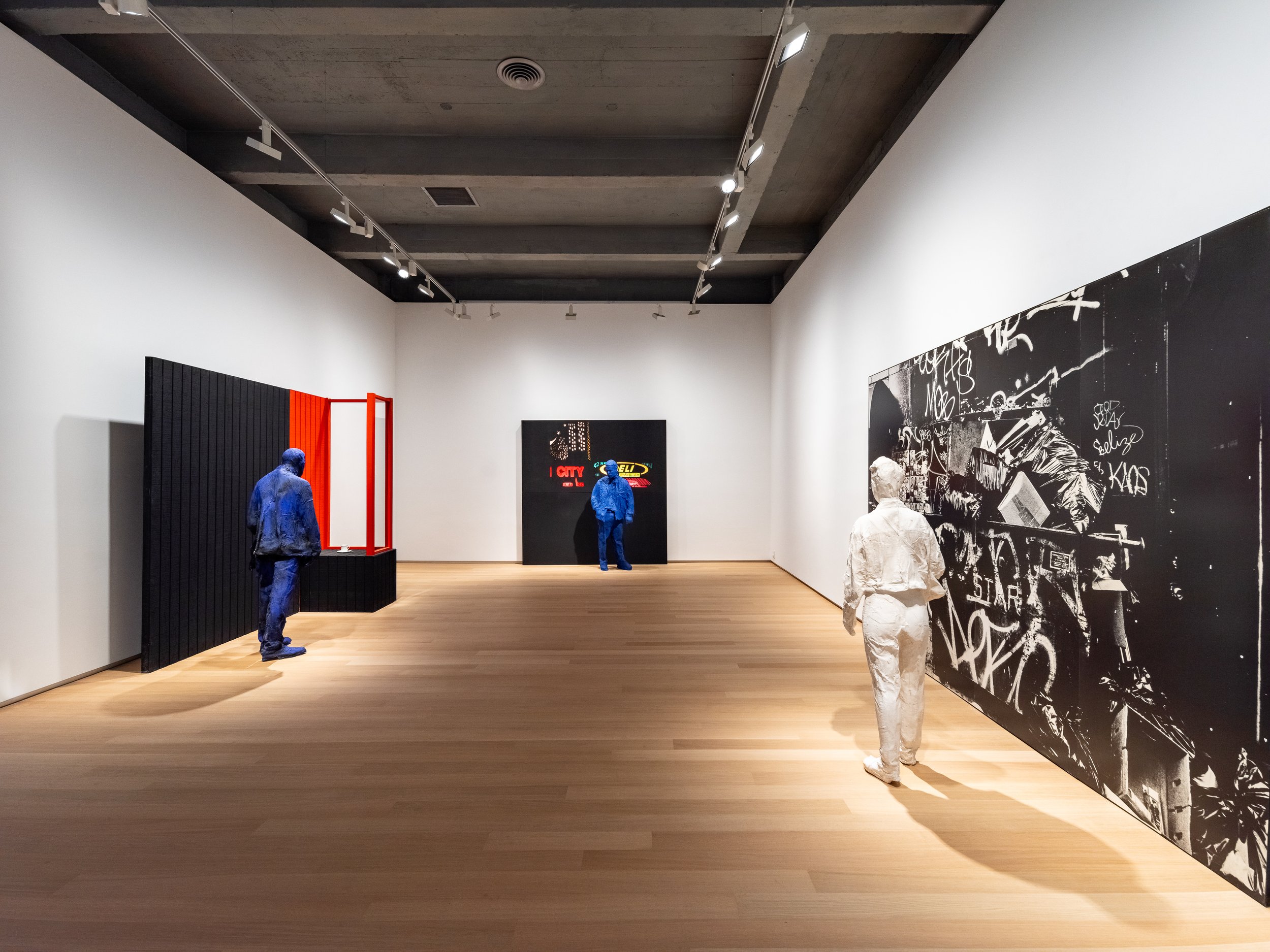
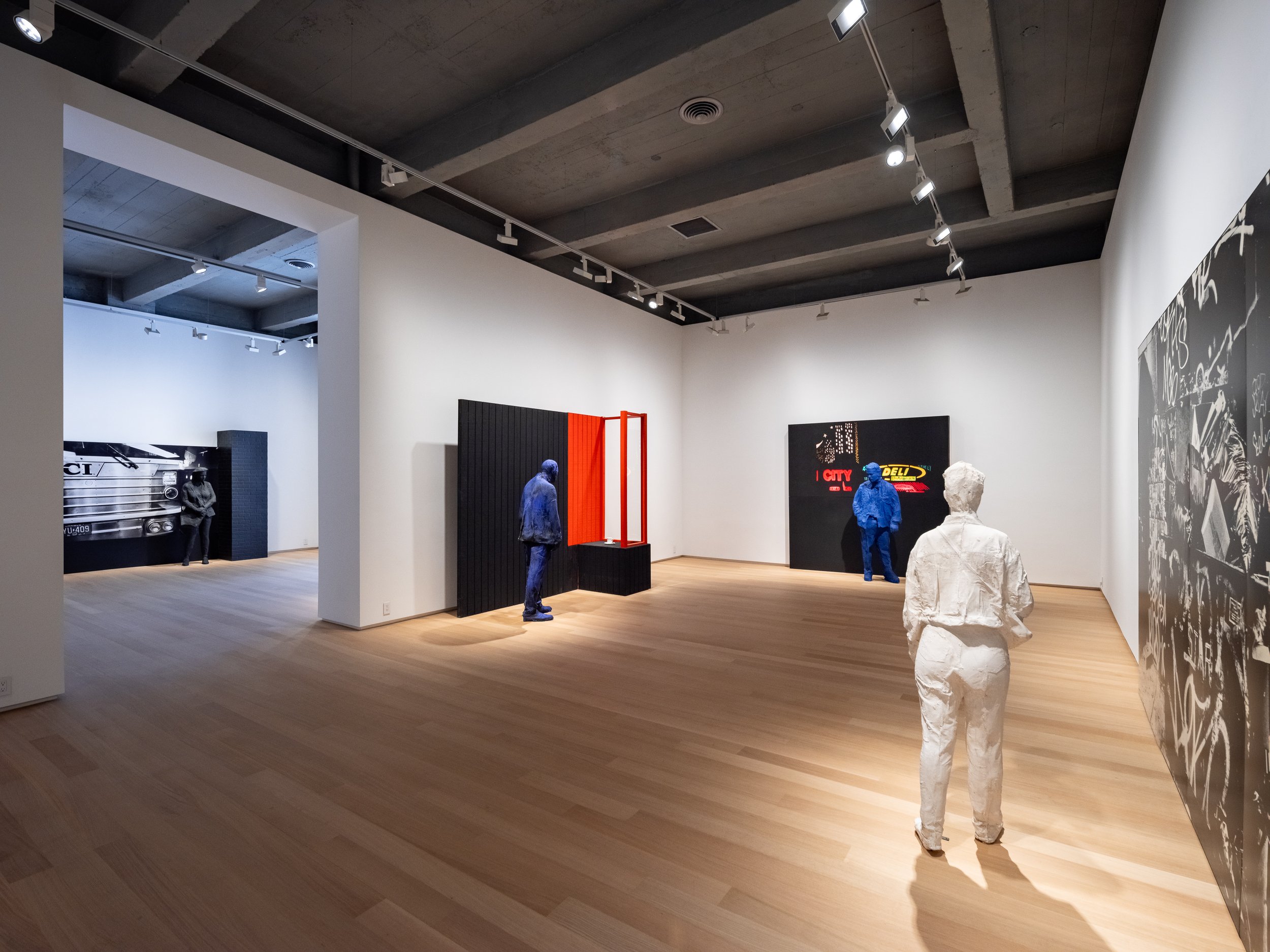
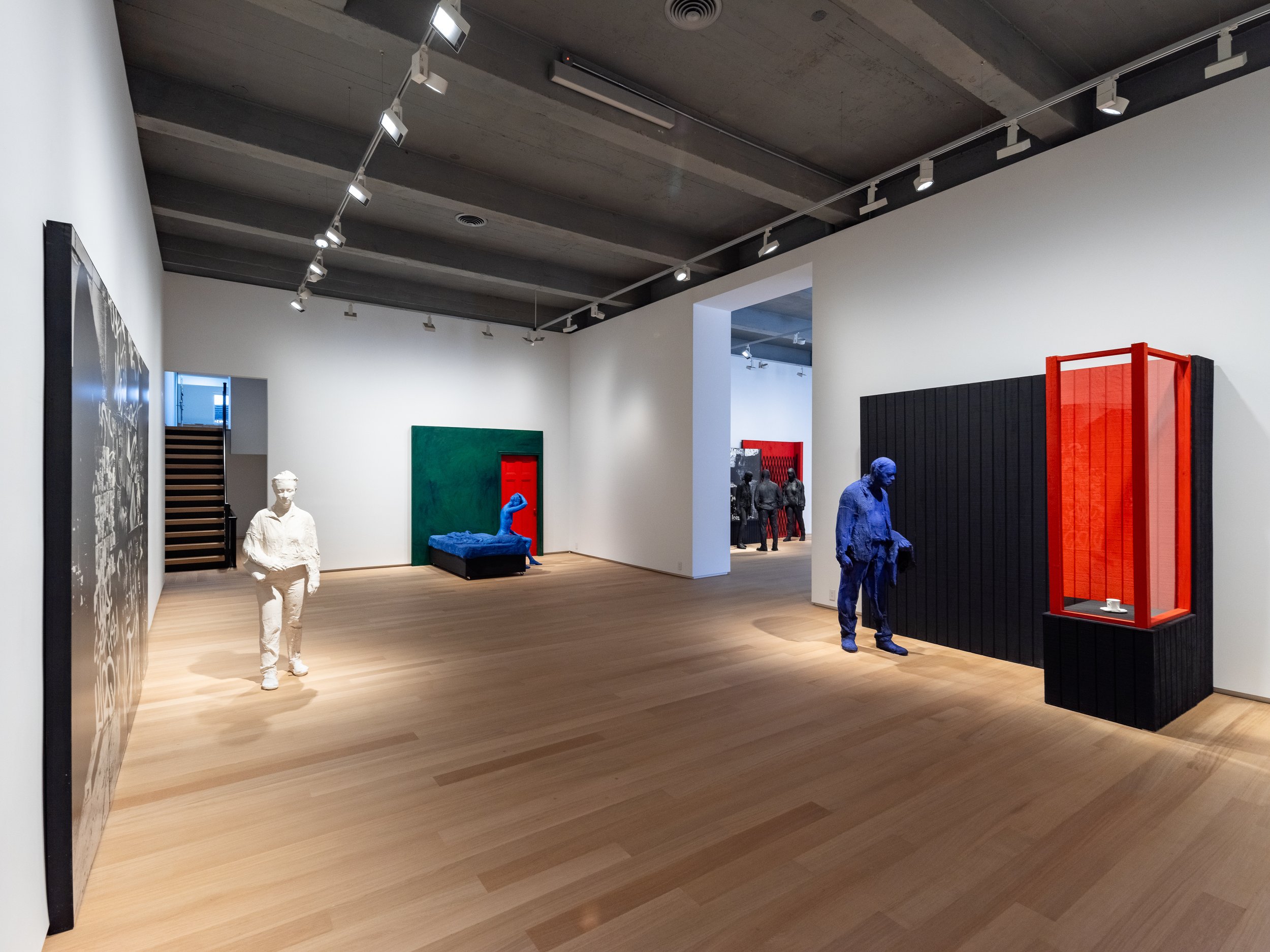

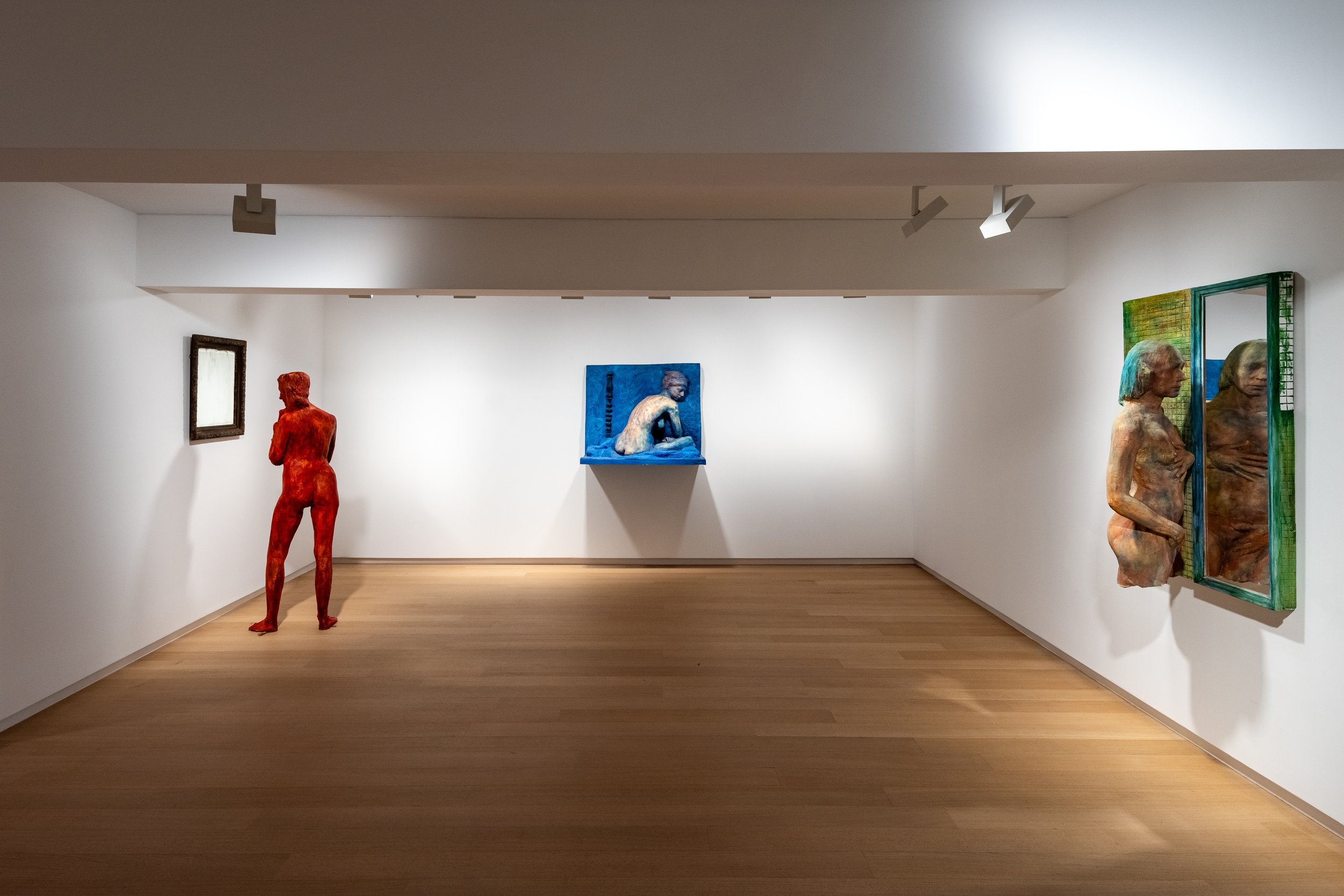
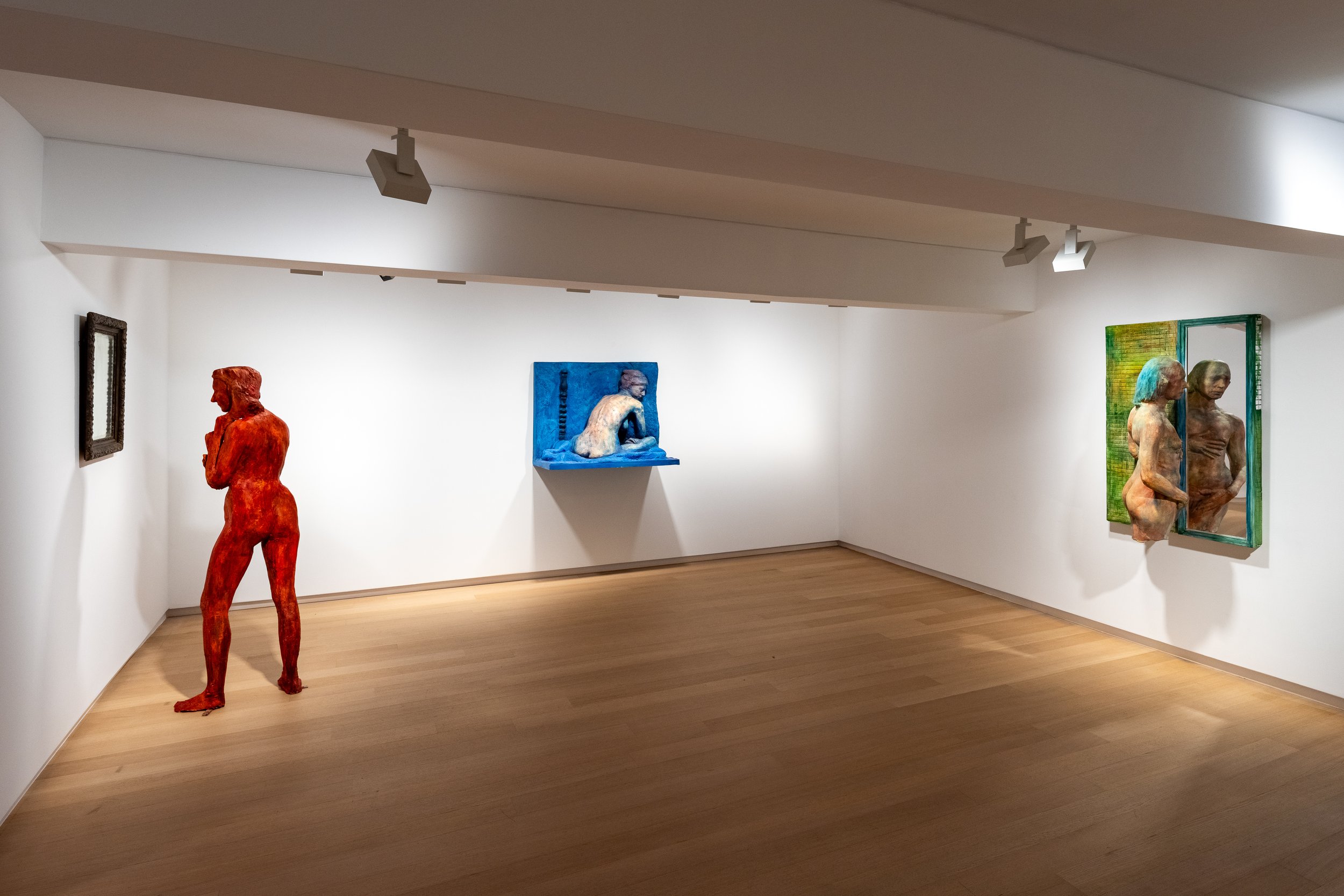
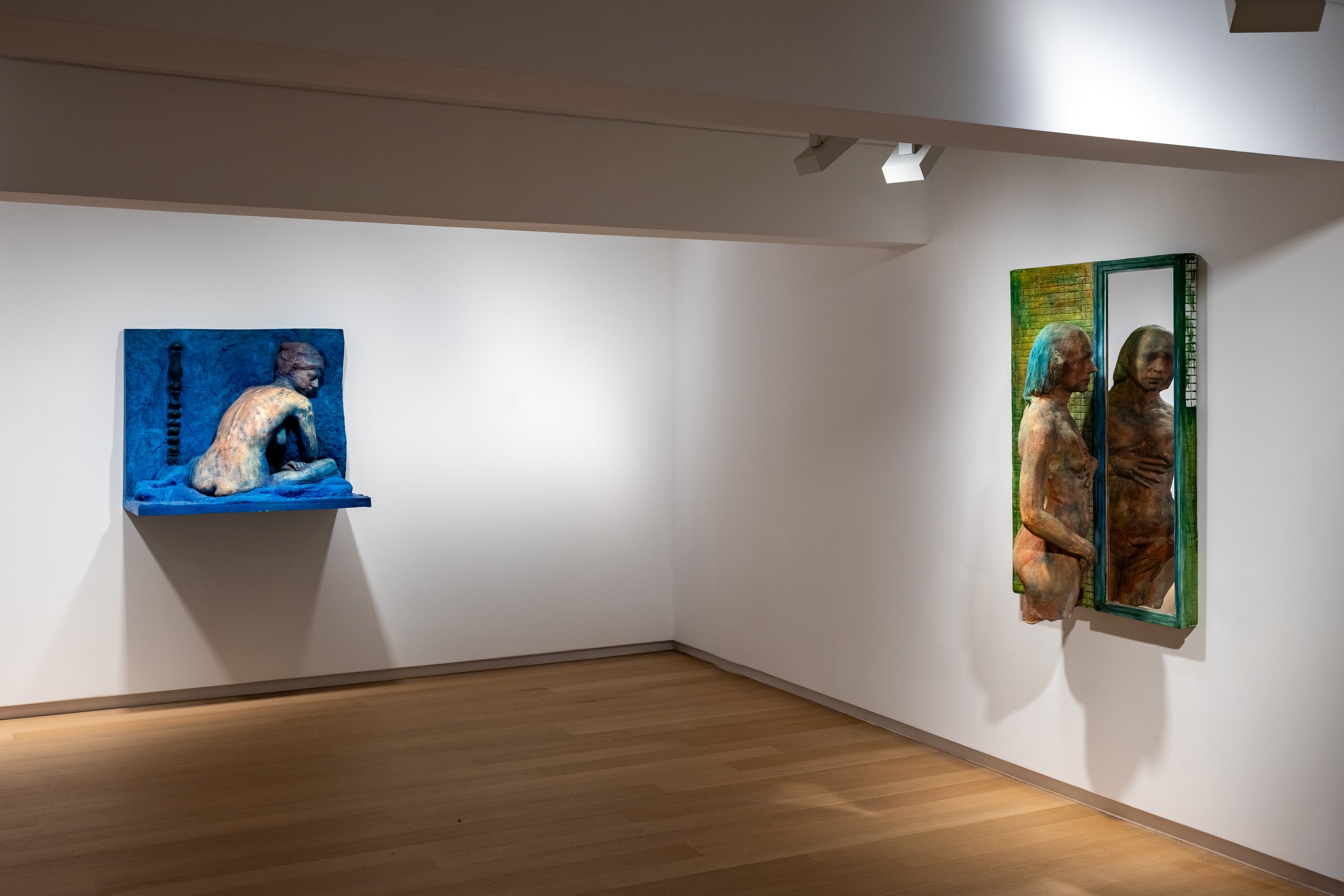
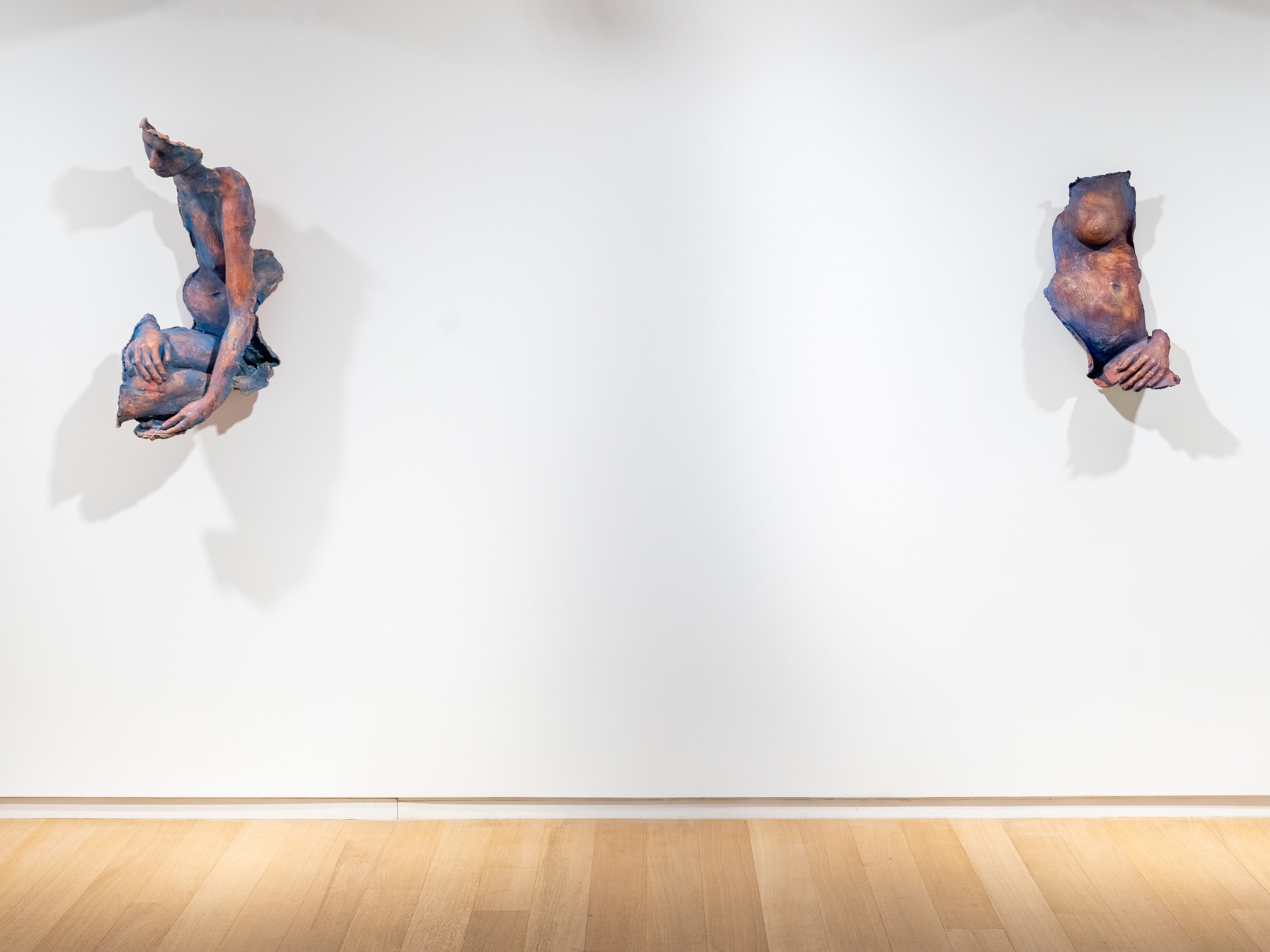
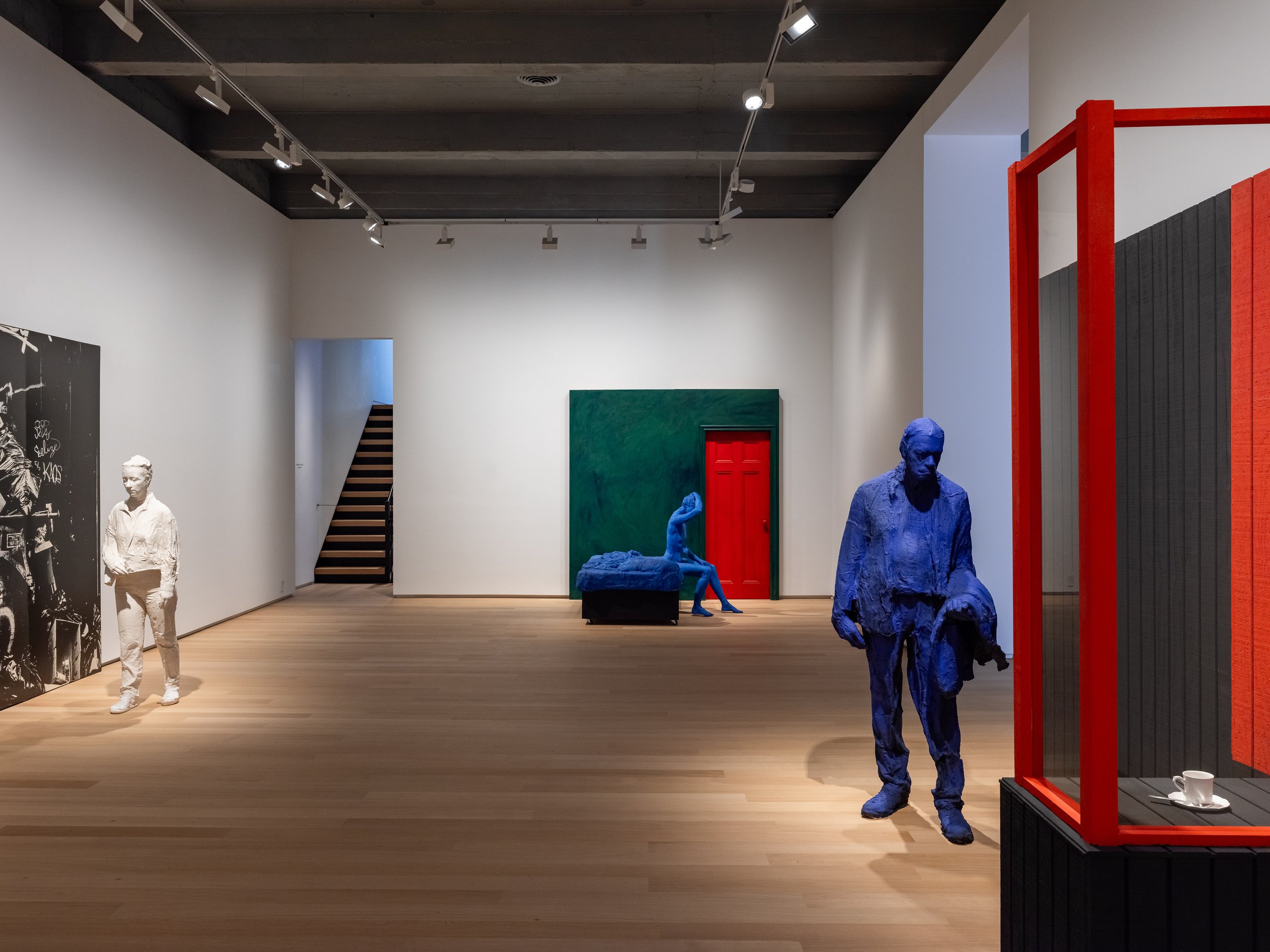
Toutes les images / All images : Courtesy TEMPLON, Paris —Brussels — New York
All works by George Segal © The George and Helen Segal Foundation/ licensed by Artists Rights Society, NY, NY.
The exhibition takes visitors on a journey over 25 years of the artist’s career, with pieces spanning the period from 1972 to 1999. George Segal’s work initially embraced a realist style before shifting in the 1970s to a freer expression. His colored work in the 1980s engaged in a dialogue with the history of art, featuring subtle references to Bonnard, Cézanne and Degas, before embracing a more expressionist style in the 1990s. The later works fuse sculpture and painting, opening the door to a new scope of expression by means of color and light. Segal’s “Nocturnal Fragments,” assemblages of ordinary activities in realistic settings, are more than mere observations of the quotidian, but prompt a consideration of the human condition. Mysterious, possibly even unsettling, these tableaux are often a springboard for an existentialist questioning of the individual and consumer society. Capturing isolated moments of ennui, slices of the private body, and secluded intimacies, Segal's fragments envision the whole.
Born in 1924 in New York, George Segal lived and worked in New Jersey, USA, until his death in 2000. The artist was discovered at a group Pop Art collective exhibition in since 1962. Since then George Segal’s work has been widely shown in the USA and internationally.
He was famed for his spectacular public commissions, such as his monuments commemorating the holocaust (Holocaust Memorial in San Francisco) and the Kent State Massacre or championing LGBT rights with Gay Liberation, part of the Stone Wall Monument in Sheridan Square, New York. His many solo exhibitions include retrospectives in 1978 at the Walker Art Center, Minneapolis, the San Francisco Museum of Modern Art and the Whitney Museum of American Art, New York, in 1997 at the Montreal Musée des Beaux-Arts, in 1998 at the Hirshhorn Museum and Sculpture Garden in Washington D.C, and in 2002 at the Utsunomiya Museum of Art, Utsunomiya, Japan and State Hermitage Museum in St. Petersburg in Russia.
His work features in the world’s leading museums, including MoMA, New York, Solomon R. Guggenheim Museum, New York, Moderna Museet, Stockholm, MAM Paris, Kunsthaus Zurich and the Israel Museum, Jerusalem.
Considered, against his will, as a pioneer of hyperrealism, he was a major influence on artists such as Duane Hanson and Ron Mueck. Over recent years his pieces have regularly been presented alongside the work by new generations of sculptors, for example, with the traveling European exhibition Hyperrealism Sculpture. This is not a body and Corporeal at SF MOMA (until April 2024).
Templon presented George Segal’s work for the first time in Paris in 1979 as part of the group show La peinture américaine as well as at two further shows, in Paris in 2017 and Brussels in 2018.
The exhibition has been on display since September the sixth and will conclude on the 28th of October of this year.
For more information about this exhibit, please visit the Templon’s website.
SHAPES OF WATER/ GROUP EXHIBITION
Courtesy of Afriart Gallery
Shapes of Water is a group exhibition presenting works by women artists from Eastern and Southern Africa. The exhibition offers space
for individual and genuine expressions of femininity by artists from Uganda, Kenya, Tanzania, DRC, Sudan, Mozambique, and South Africa. It
hopes to instigate conversations and inspire to imagine new possibilities.
In this exhibition, some of the physical, cultural, and political characteristics and implications of the element water may act as a
metaphor or ‘lens’ through which to think about expressions of femininity in the artists’ work.
Blessed is the Spectrum, 2020, Digitally manipulated drawing, Archival print on Hahnemuhle Photo Rag Paper, 3 +2 APs, 42 x 29.7 cm
Water, in the form of solids, liquids, and gas, is the earth’s and human body’s main constituent and, therefore, our main source of life.
It’s valued, treasured, and at the same time, so hard to contain. Humans have always attempted to control water, its flow, and
accessibility, and to direct the source of life to irrigate agriculture, save drinking water and keep it from showing up as
destructive floods.
Canary, 2023, Mixed Media on Paper, 117 x 96 cm
Water politics is now a global concern, such as the policing of a woman’s body is being debated in many forms in different cultures
around the world. Yet her genuine expression always finds a way to seep through – at times in joy, other times in pain.
Sundays are not Rest Days 2, 2023 Oil on Canvas, 110 x 68 cm
Over centuries of patriarchy, women have and still are morphing into any shape to sustain themselves - gracefully, fearfully leaning in like a straightened stream, rearing up like a torrential river, carving canyons into history, and at the same time bearing and
sustaining life.
Eco-Target 3, 2023 Wool and Threads, 200 x 50 cm
She is fluid. Femininity is fluid, so this exhibition suggests. Femininity changes its shape as it pleases, disregarding the many
voices trying to contain it in an 8-shaped vessel. She might turn into ice, breaking the vessel into pieces. She might rise from the vessel as a cloud and rain down on more fertile ground elsewhere. This exhibit is curated by Lara Buchmann.
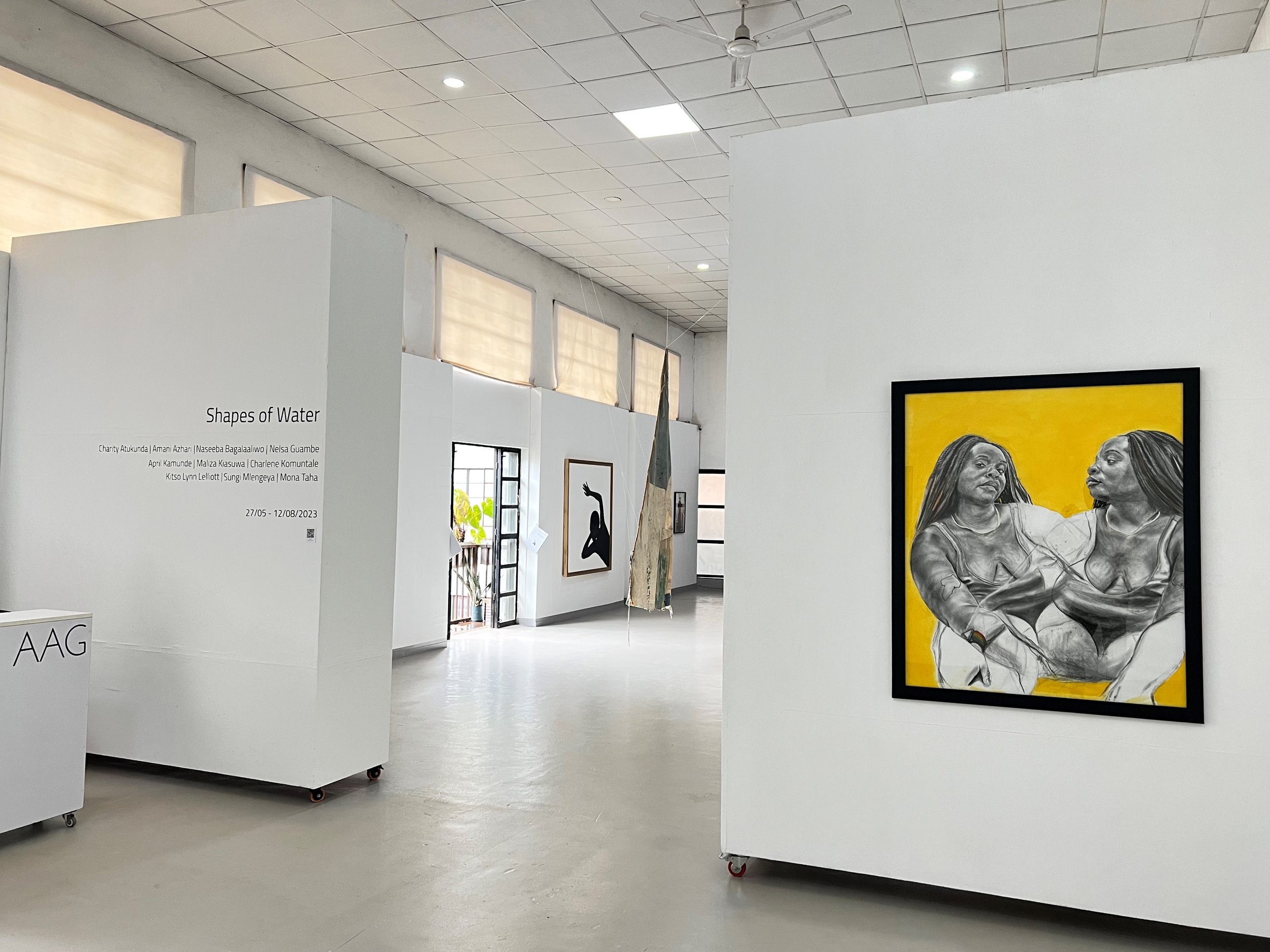


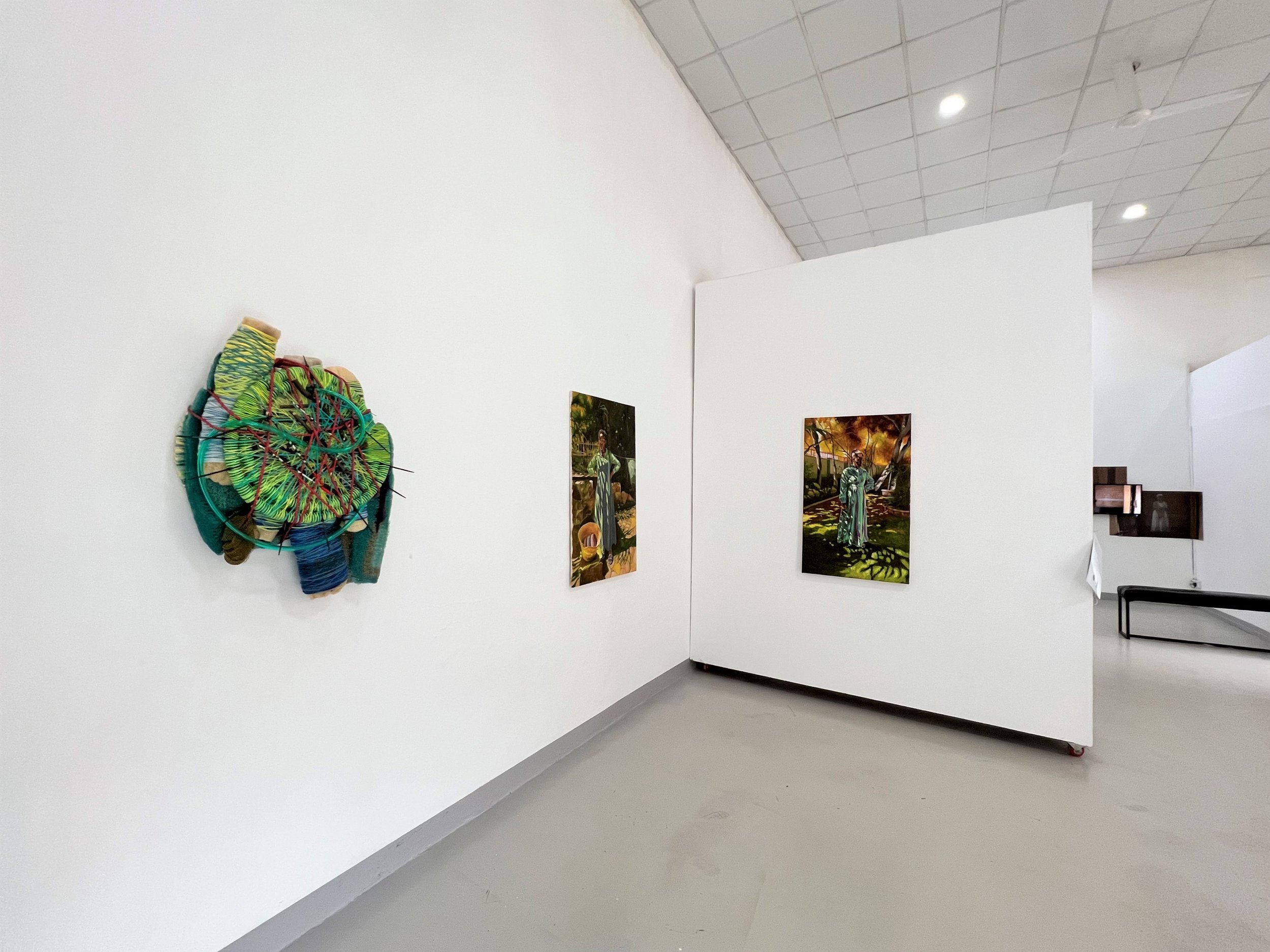
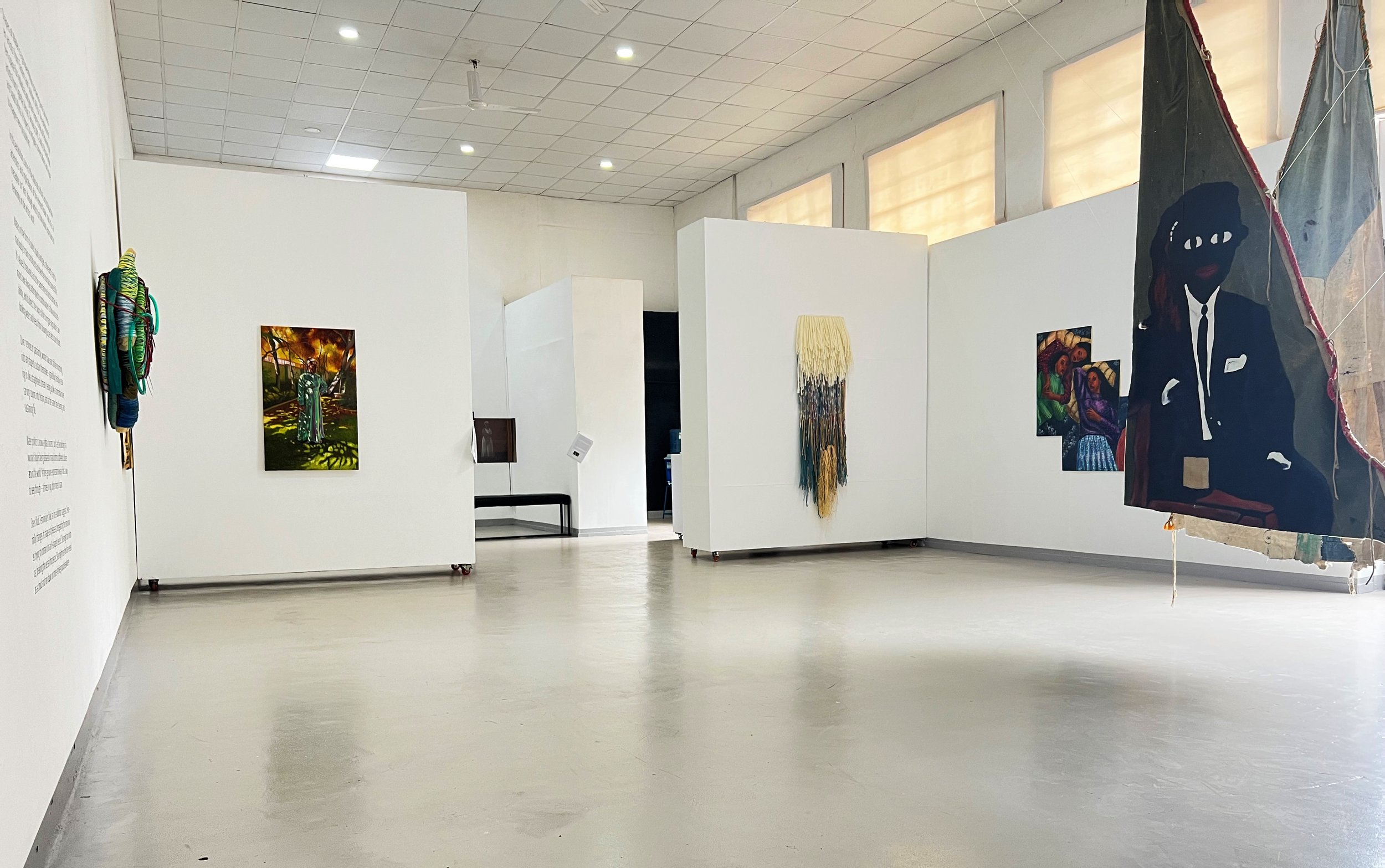
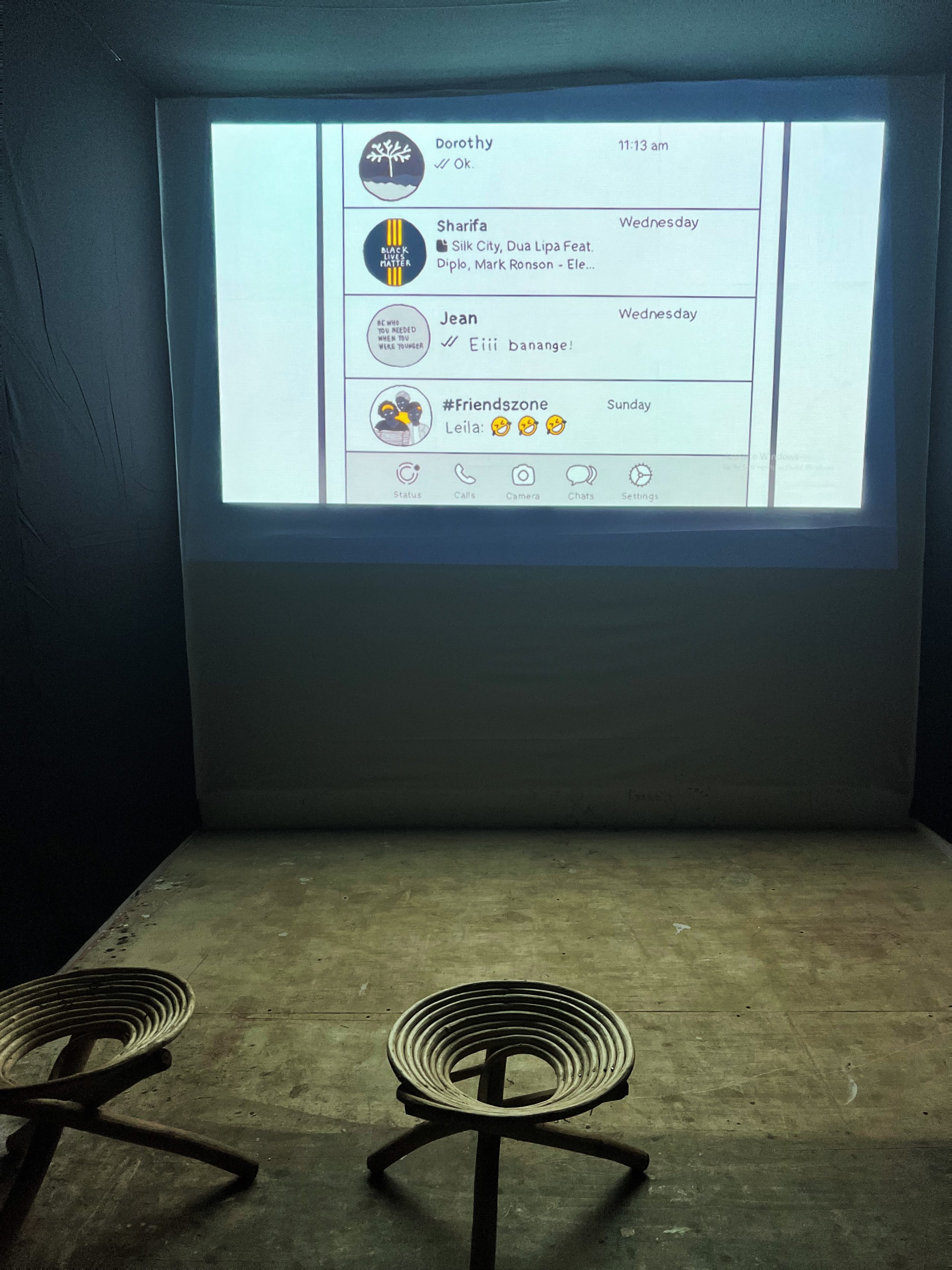
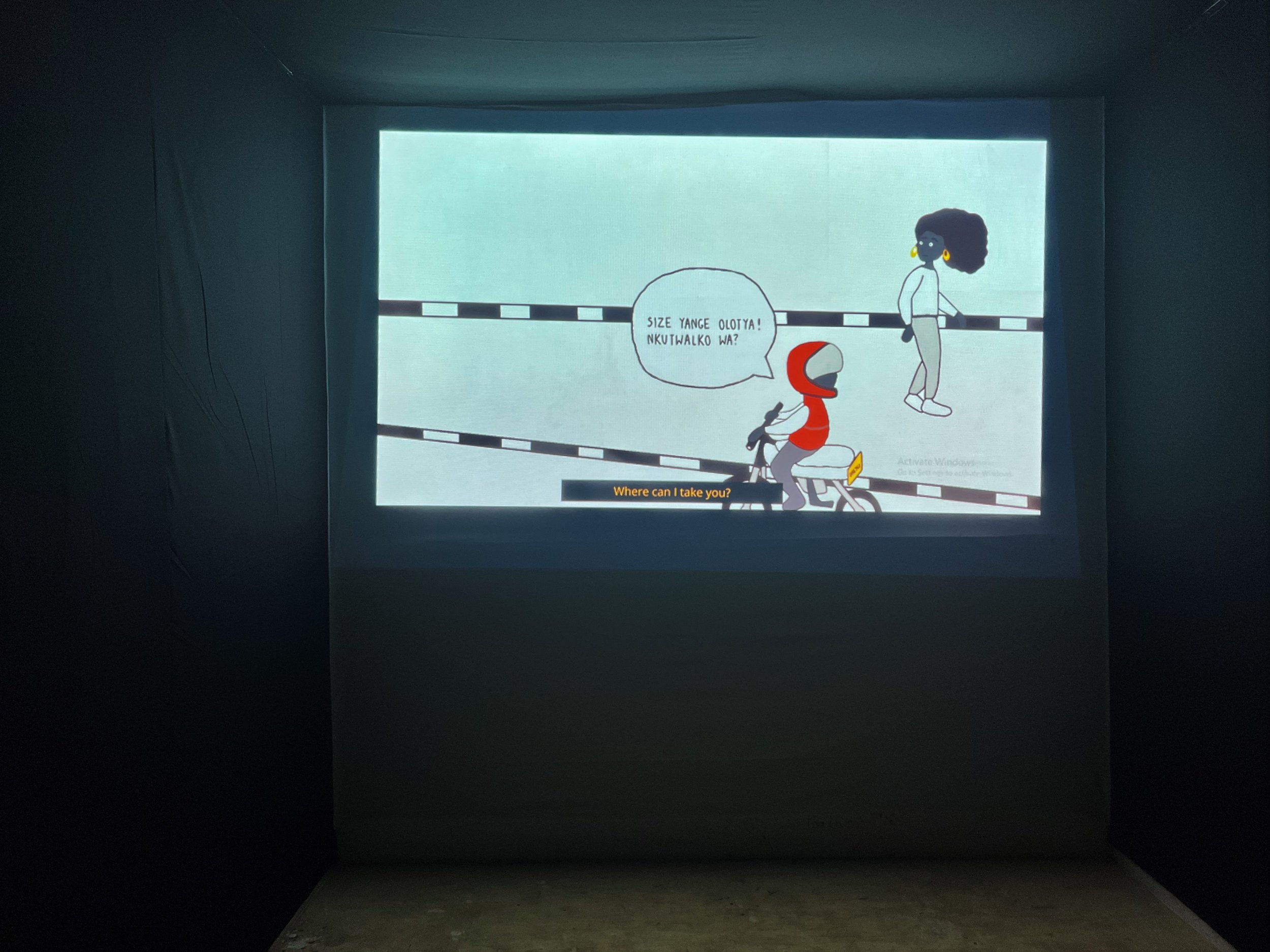
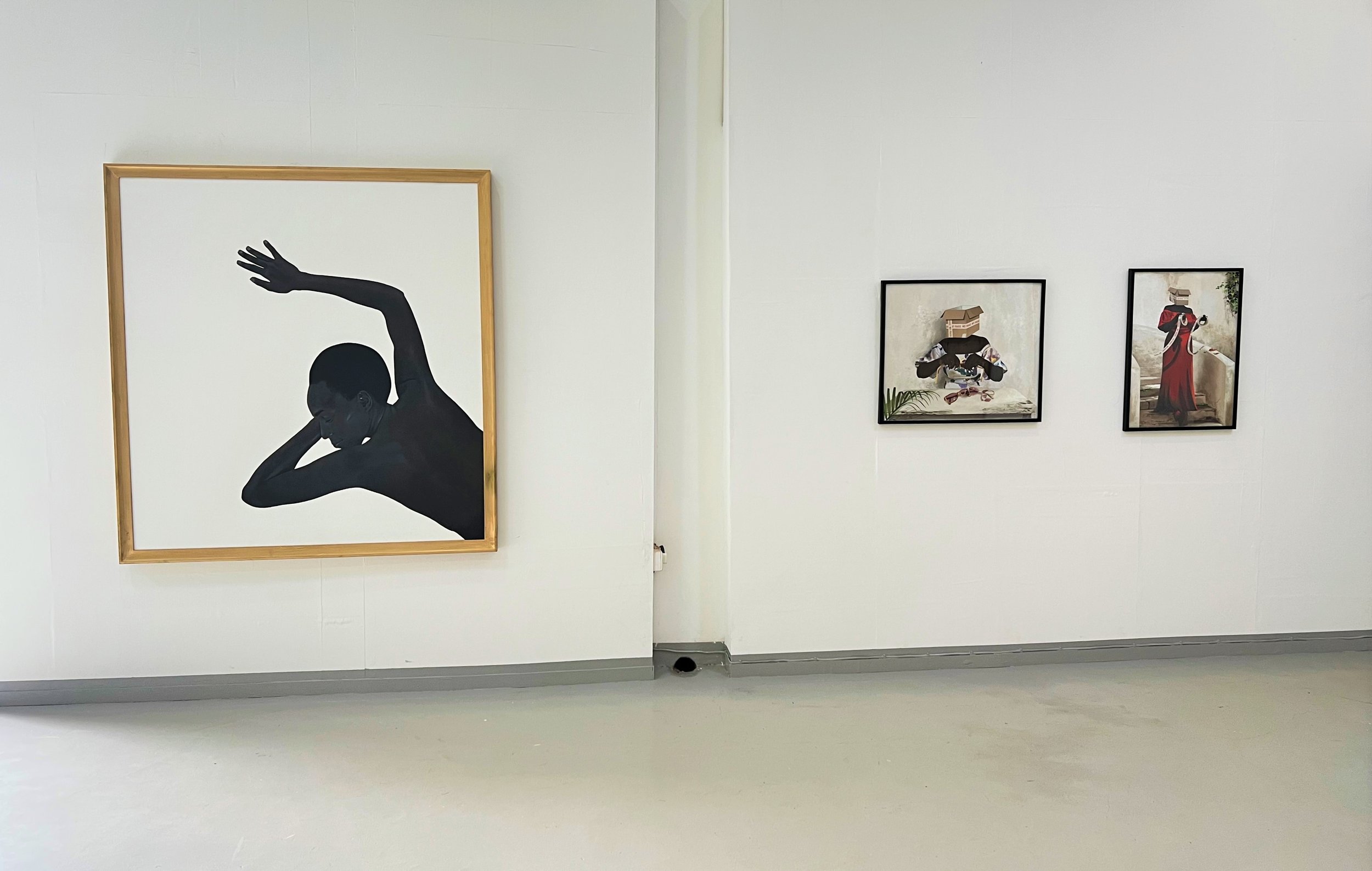










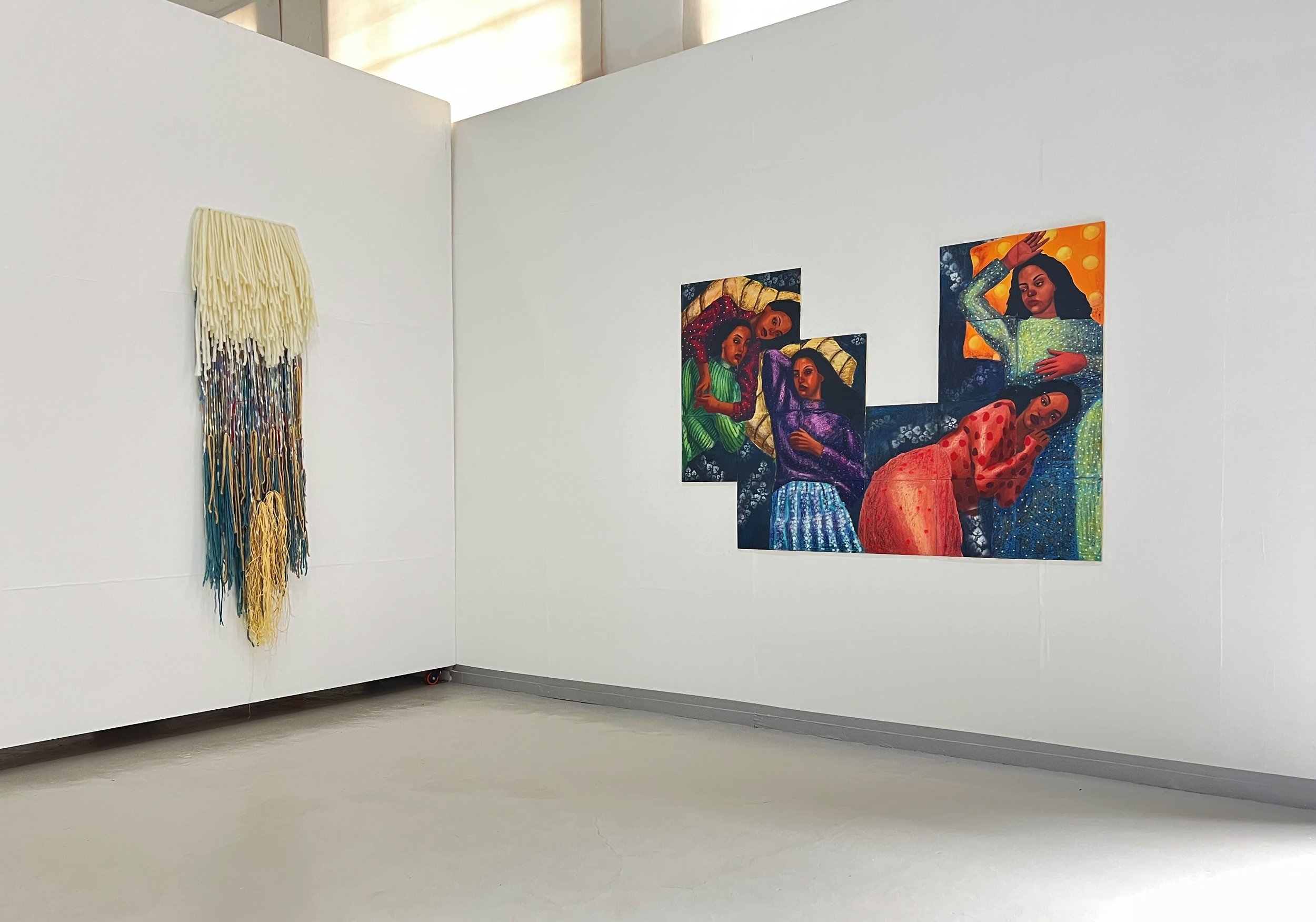
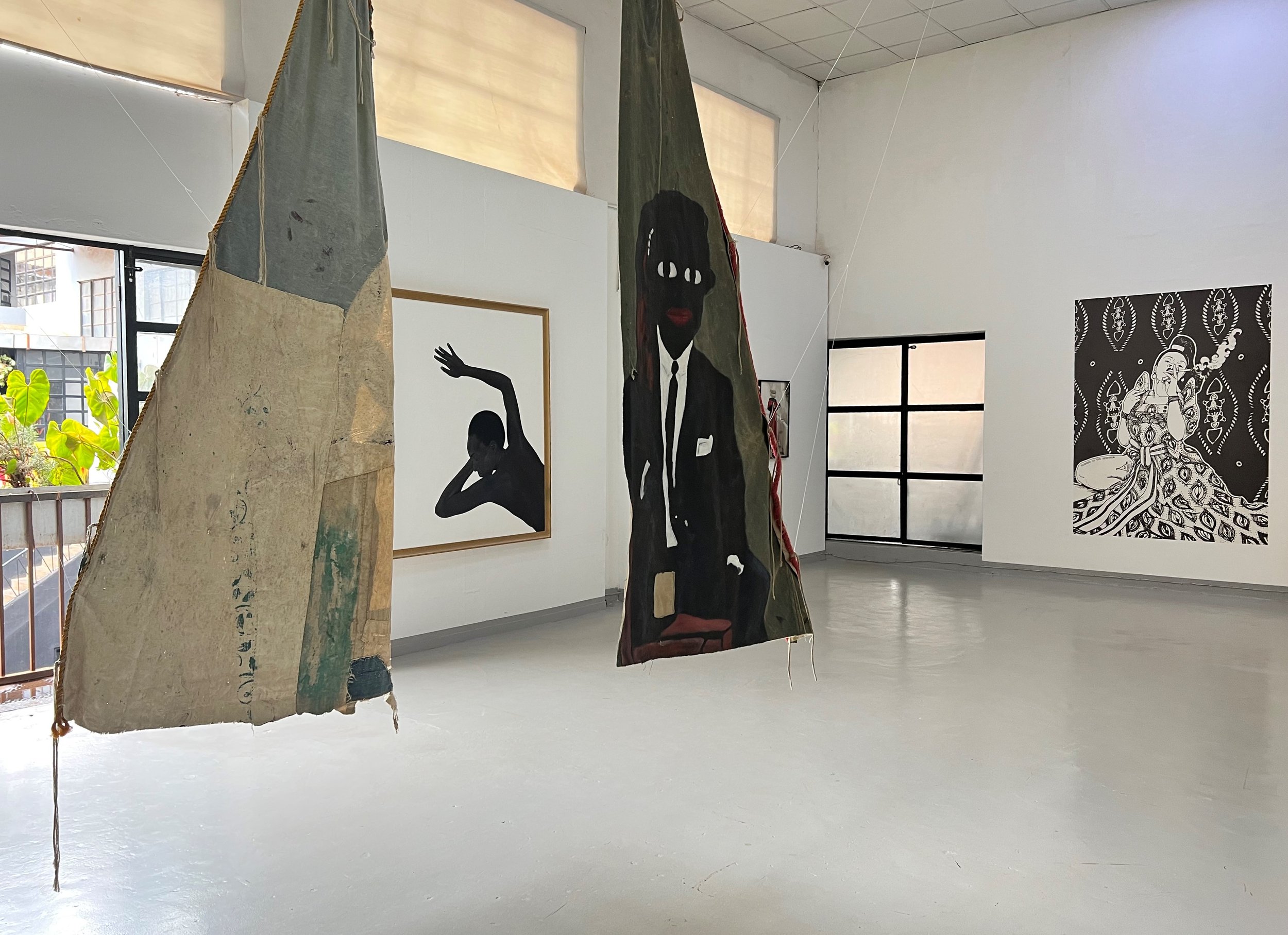

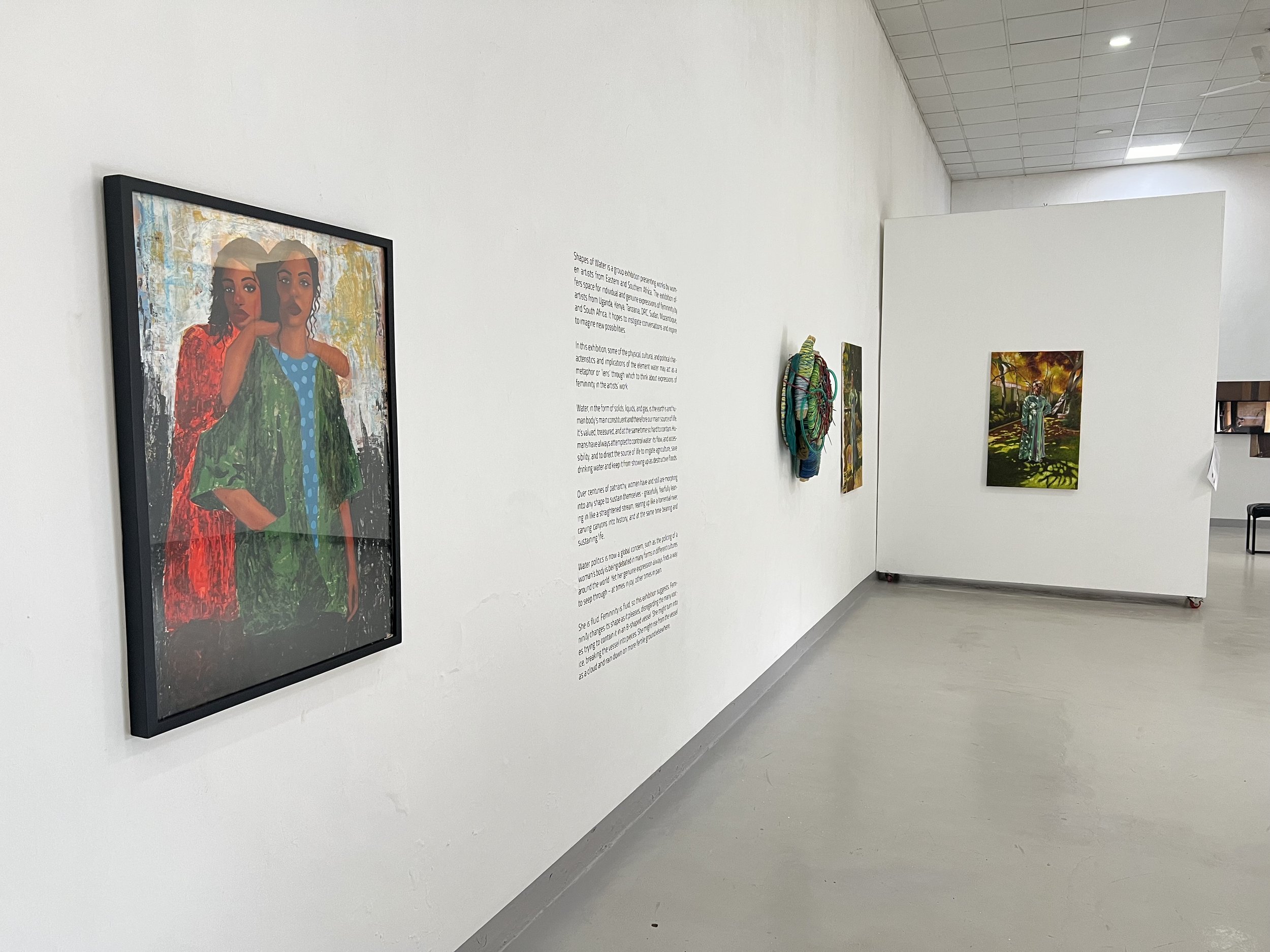
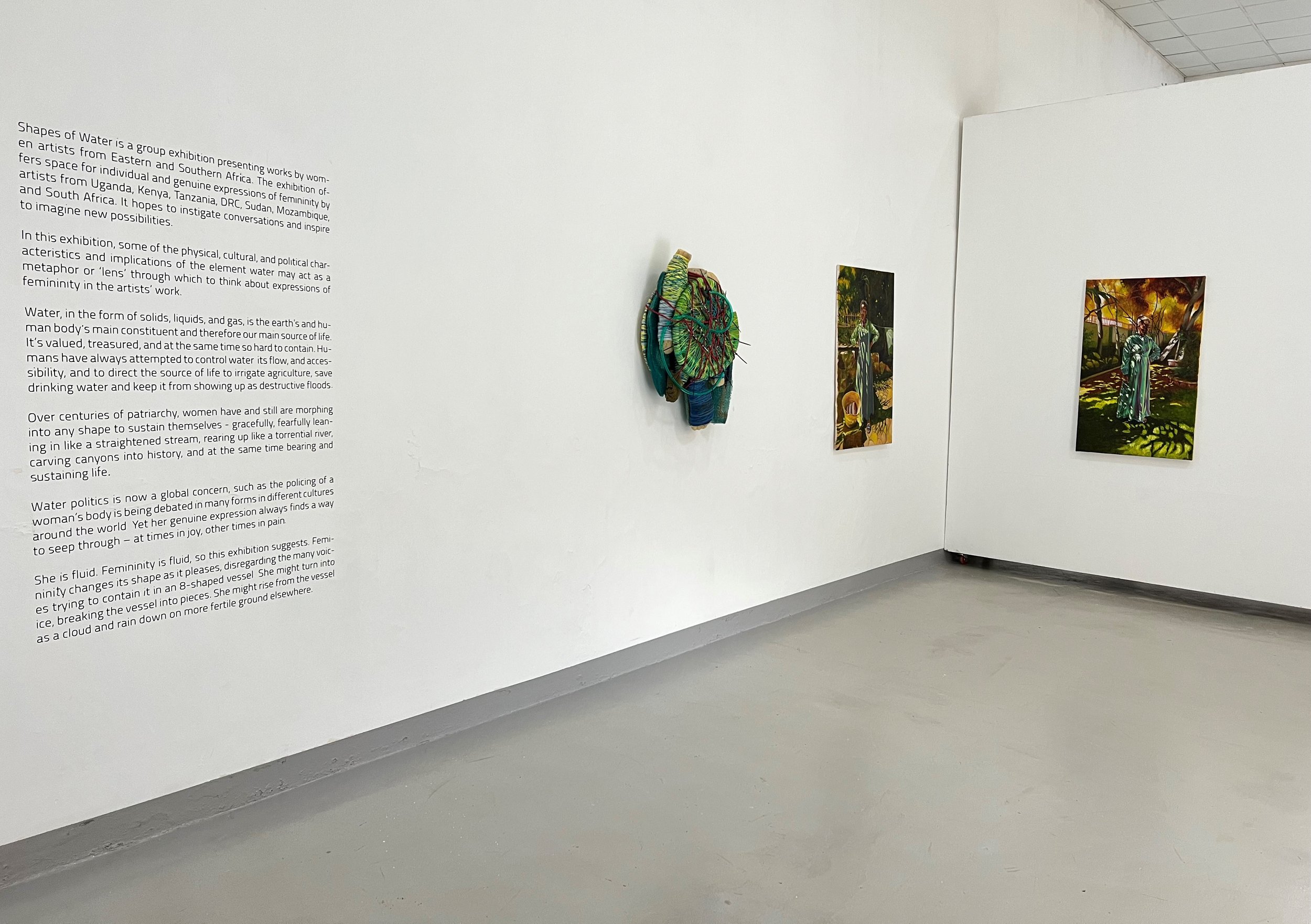
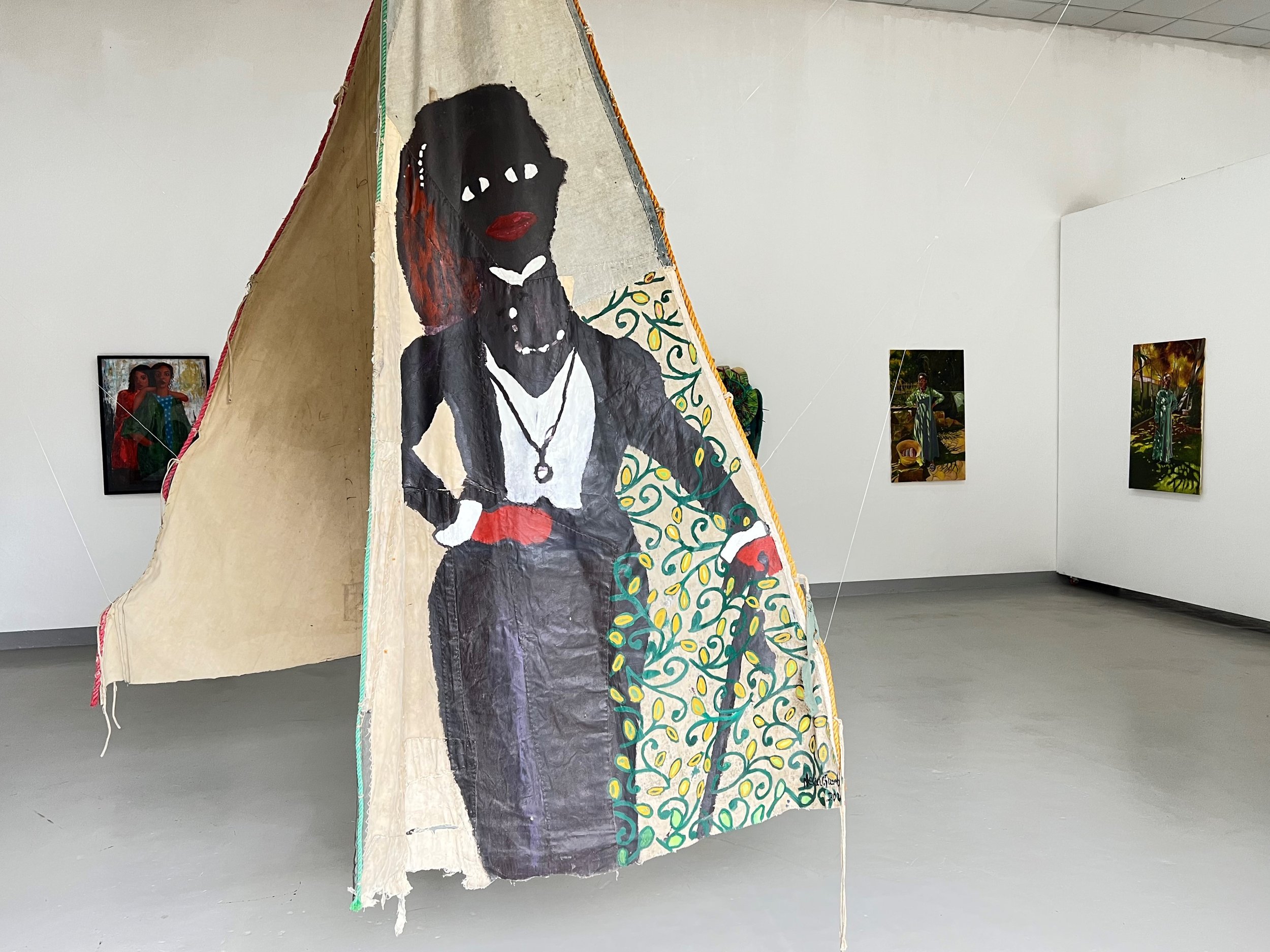
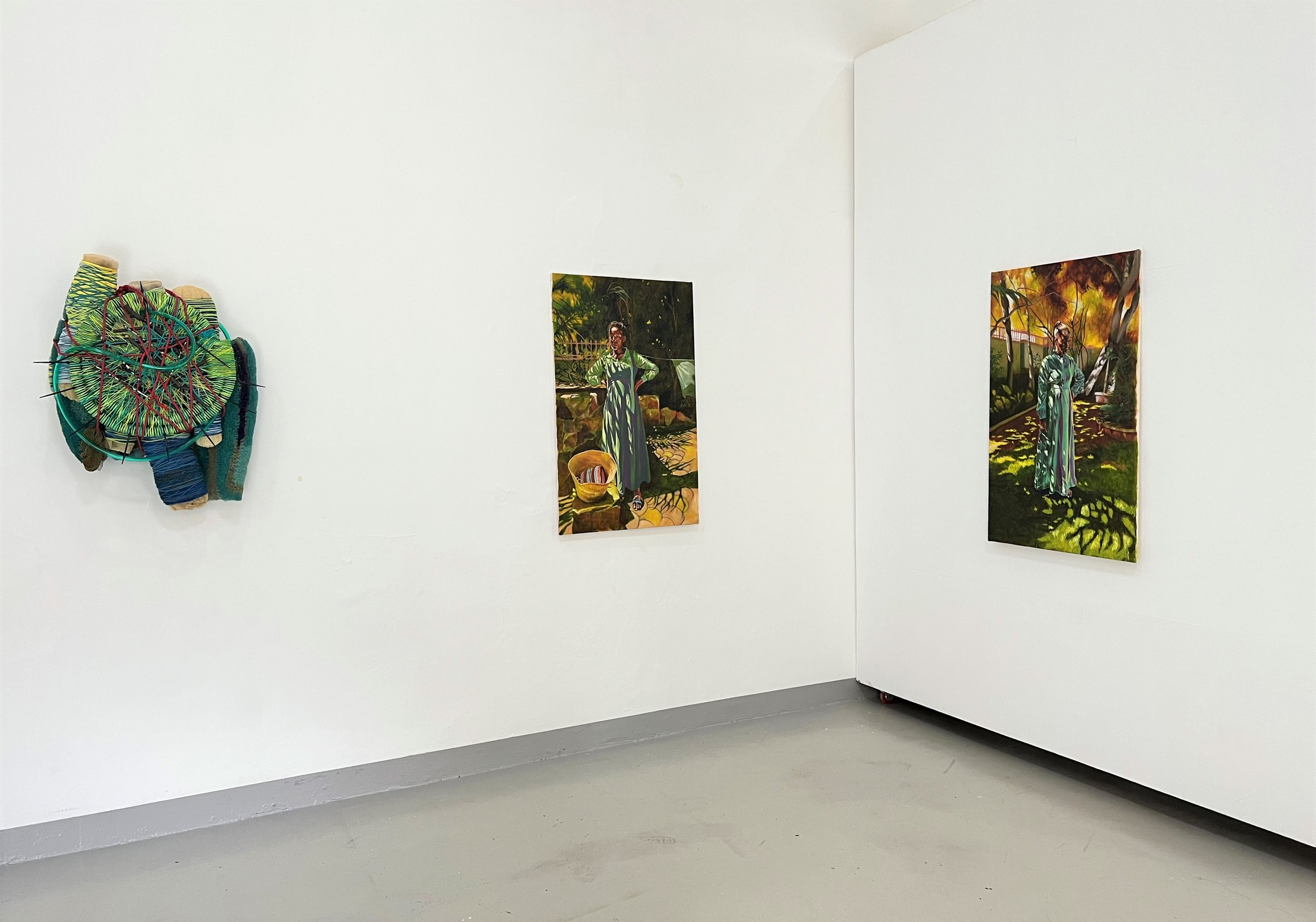
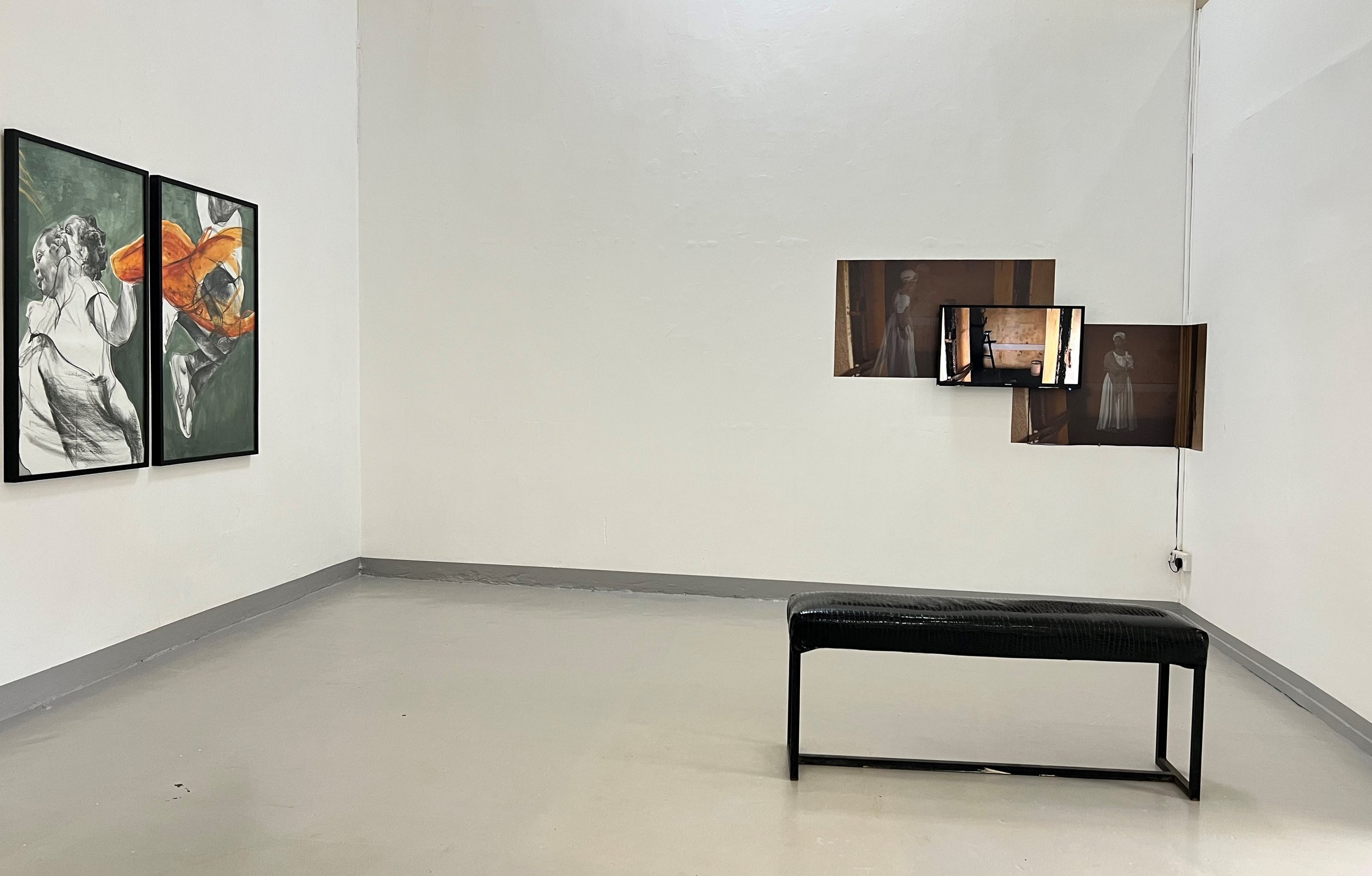
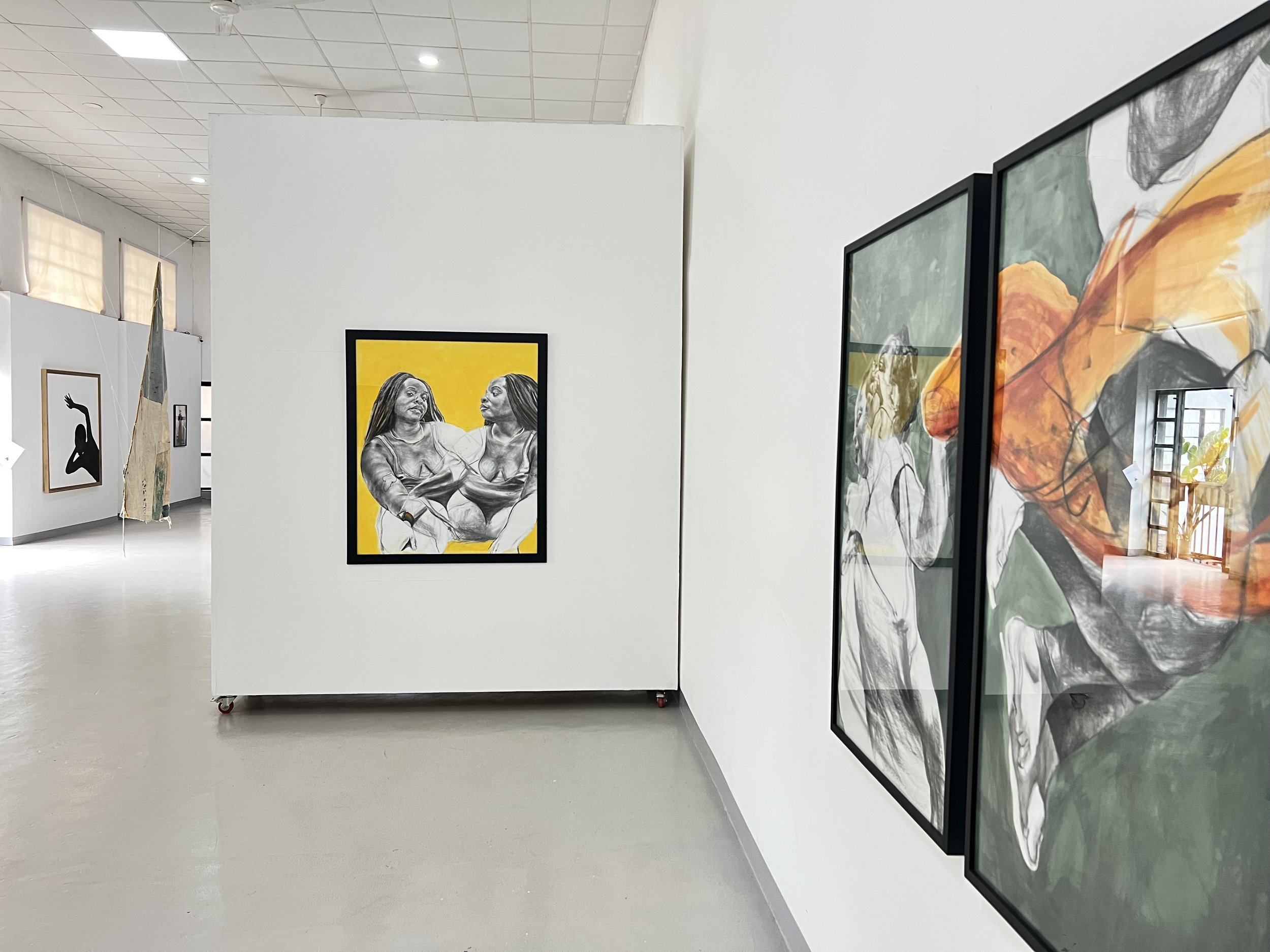
Installation View, 'Shapes of Water', Afriart Gallery, May - August 2023, Courtesy of Afriart Gallery
EXHIBITING ARTISTS: Charity Atukunda (Uganda), Amani Azhari (Sudan), Naseeba Bagalaaliwo (Uganda), Nelsa Guambe (Mozambique), April Kamunde (Kenya), Maliza Kiasuwa (DRC), Charlene Komuntale (Uganda), Kitso Lynn Lelliott (South Africa), Sungi Mlengeya (Tanzania), and Mona Taha (Uganda).
There will be an artist talk Thursday, 27th July 2023, at 6.00 PM, Afriart Gallery SHAPES OF WATER – ARTISTS TALK: “EXPRESSING FEMININITY: NAVIGATING THE PERSONAL AND THE POLITICAL.” The exhibit first opened on May 27th of this year and will conclude on the 12th of August of this year.
For more information, please visit Afriart Gallery’s site, and follow them on Instagram.
Landscape by Frank Bowling
Portrait of Sir Frank Bowling© Frank Bowling. All Rights Reserved, DACS 2023. Courtesy the artist and Hauser & Wirth Photo: Sacha Bowling
One of the foremost British artists of his generation, Sir Frank Bowling, has spent more than six decades relentlessly challenging the limits of the medium of painting and expanding its possibilities, attracting acclaim for his contributions to abstraction. ‘Landscape,’ the artist’s first solo exhibition at Hauser & Wirth West Hollywood, will present 11 recent ebullient paintings that engage the rich art historical tradition of landscape painting – and propel it forward into the present moment.
To accompany the exhibition, Hauser & Wirth Publishers will produce an extensively illustrated catalogue featuring an essay by Dorothy Price, Professor of Modern and Contemporary Art and Critical Race Art History at The Courtauld Institute of Art in London.
#4 to the Lighthouse 2021 Acrylic and acrylic gel on canvas with marouflage 188 x 259.1 cm / 74 x 102 in
‘Landscape’ at Hauser & Wirth West Hollywood coincides with the San Francisco Museum of Modern Art (SFMOMA) exhibition ‘Frank Bowling: The New York Years 1966-1975,’ the first major US survey of the artist’s work in more than four decades. Traveling from the Museum of Fine Arts Boston, the exhibition will be on view from May 20 – 10 September 2023. It will feature 11 additional artworks, including an expanded group of paintings made between 2018 and 2022.
About the Exhibition
Landscape has figured in Bowling’s work since the artist first began making his celebrated Map paintings – vast color fields depicting stenciled images of landmasses like South America or his native Guyana – while living in New York in the 1960s. Over subsequent years, he gradually moved away from cartographic representation to embrace the freedom of abstraction as a means to convey the emotive qualities and properties of color. By the early 1980s, having established a studio near the River Thames in the Pimlico neighborhood of London, Bowling had immersed himself in the purely abstract aspects of traditional painting, specifically the rich history of European painterly engagement with land, sea sky, and clouds found in the work of J.M.W. Turner and John Constable. In response to this influence, the artist developed a highly personal abstract language of his own, in which vivid, dynamic flows of paint allude to landscapes – implicit, metaphorical, metaphysical – alive with distant but distinct sense memories of his birthplace.
Bowling states, ‘I have been fascinated by English landscape painting since my first visit to the National Gallery in London in the 1950s and that tradition is a furrow that I have ploughed for many years. The thing is, I don’t want to make Turners or Constables or Gainsboroughs; I always tried to avoid that. I want to make something completely new, something that no one has seen before.’
Bowling’s lyrical compositions belie the technical prowess and virtuosity by which they are created. Embracing his medium’s inherently aleatory nature, Bowling manipulates the aqueous qualities of paint with the intention of a choreographed performance. ‘I’m fascinated by the movement of paint across the surface of the canvas; when water floods and moves liquid paint, and as it bleeds, drips, splashes and stains, I feel that this captures something of the movement of nature itself,’ he says.
Among the works on view in the exhibition, the monumental canvas ‘#4 to the Lighthouse’ (2021) features broad swathes of paint, some of which have been poured directly onto the canvas and mixed on its plane, rendering an expansive fluorescent field of color imbued with a lambent light. ln ‘Ashton’smix’ (2014), Bowling has harnessed the downward pull of gravity to encourage his medium across the surface of the canvas; the slow drip captured here evokes the passage of time. In other works on view, the canvas ground is covered with paint through combined methods of pouring, throwing, spilling, and trickling. Multi-layered washes, thick impasto textures, acrylic gels, stitching, and metallic and pearlescent pigments all suggest the aftermath of an alchemical process. Built up layer by layer, atmospheric canvases, such as ‘On the way’ (2021), feature sweeping lines that seem to bear traces of landscape: horizon, land, and water. Other works on view, like ‘On The Beach’ (2017) and ‘Skyla’schoice’ (2014), a feature found objects embedded in the surfaces of the paintings, offering glimpses of biographical detail that root them in the present moment.
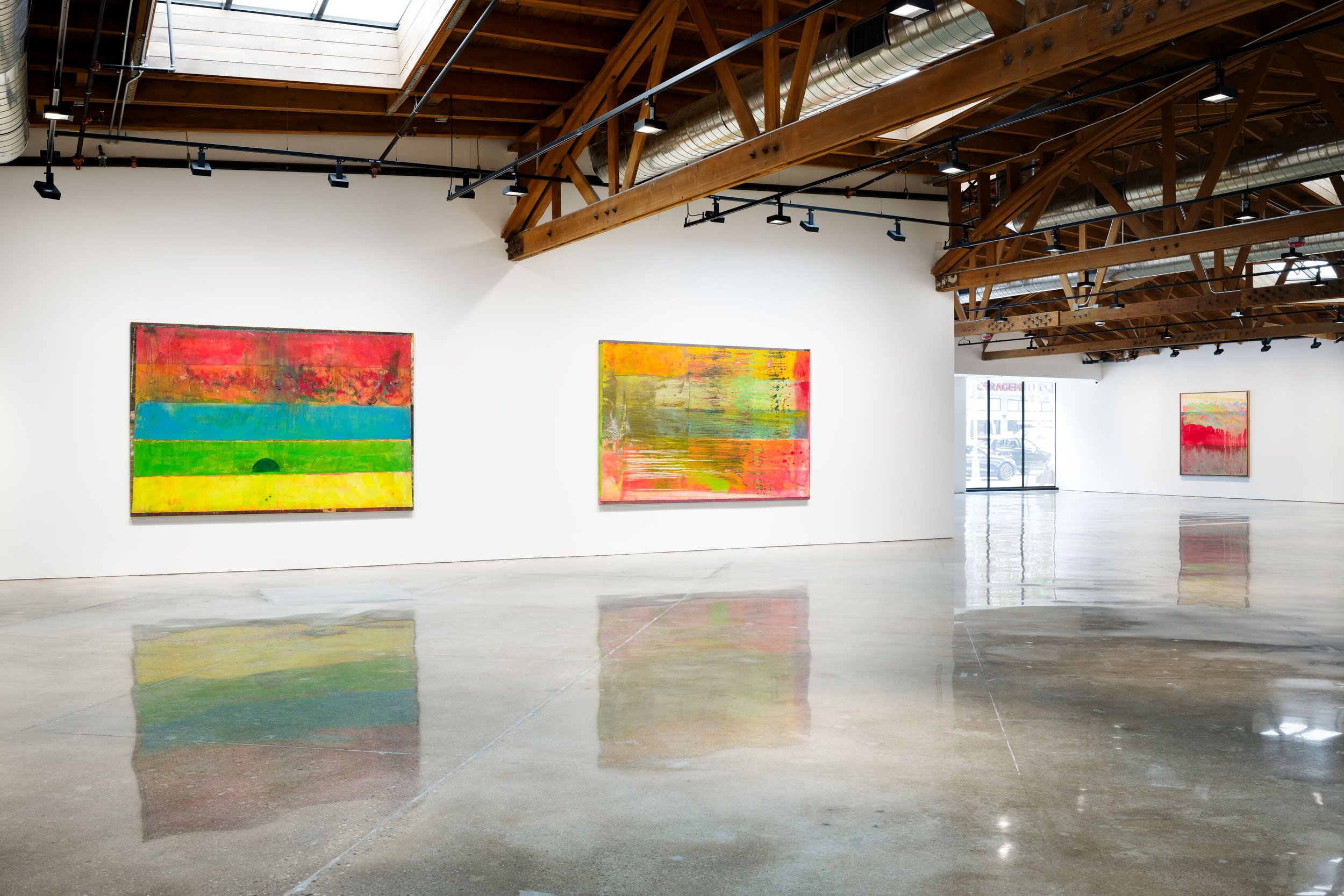
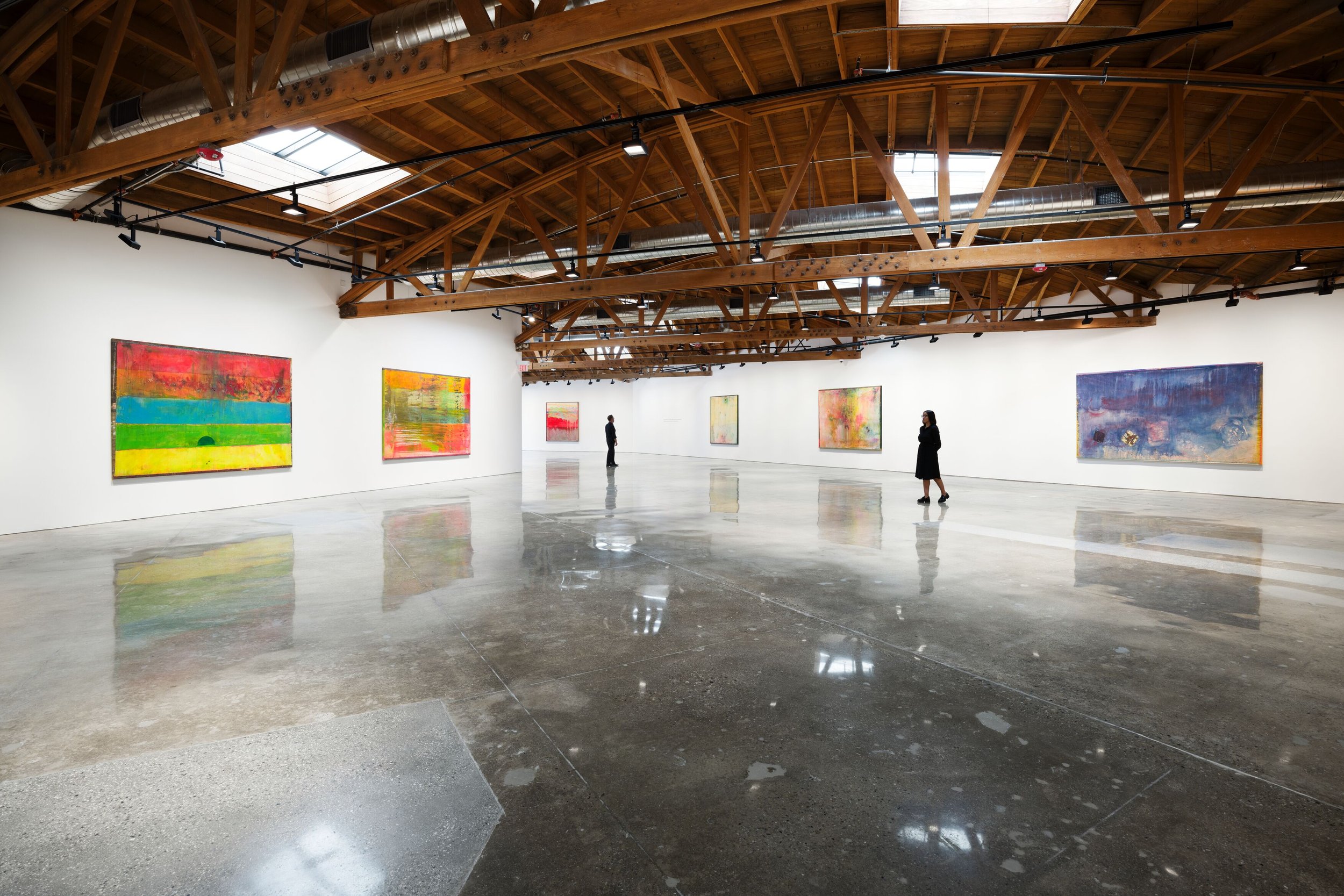
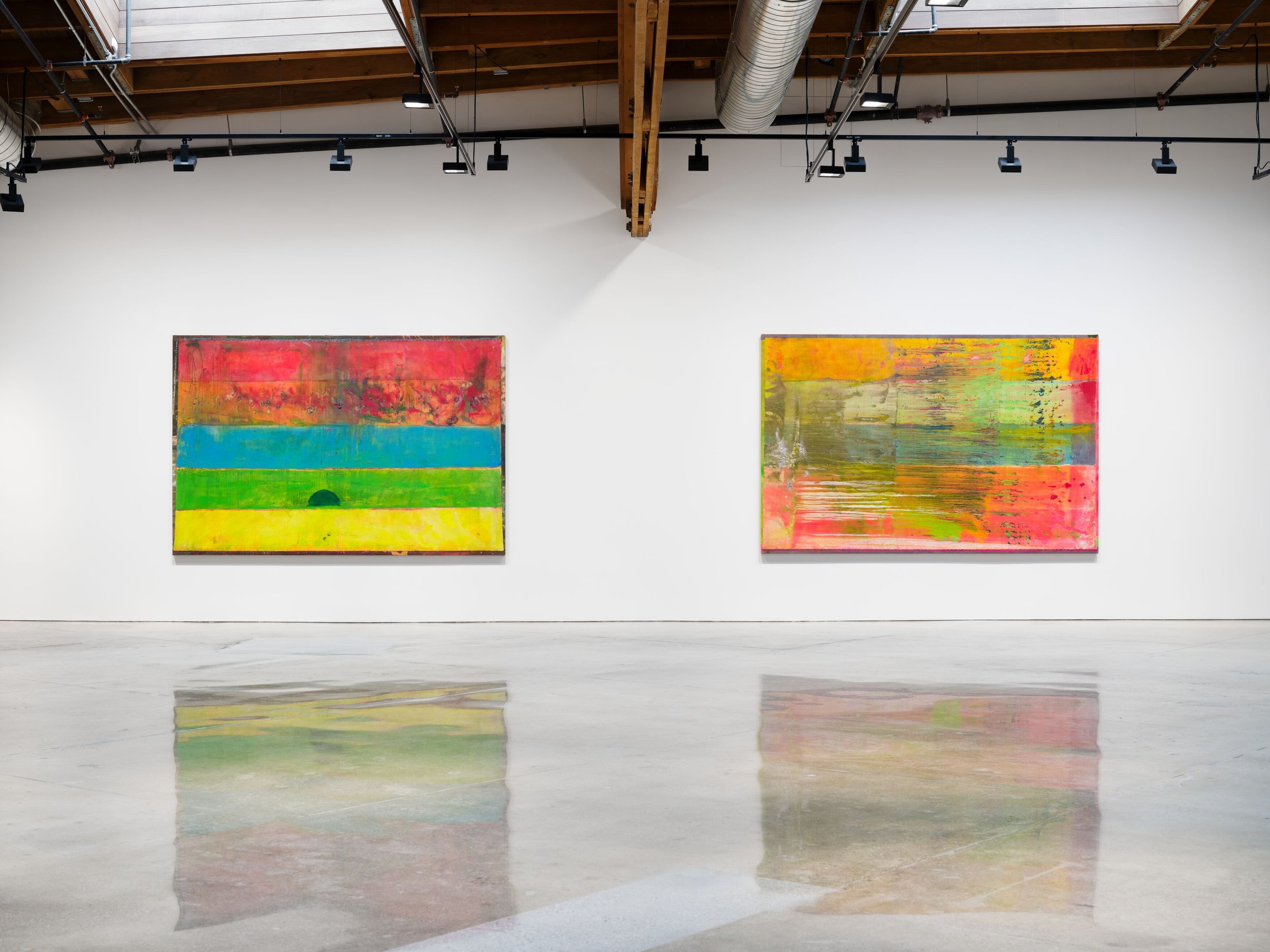
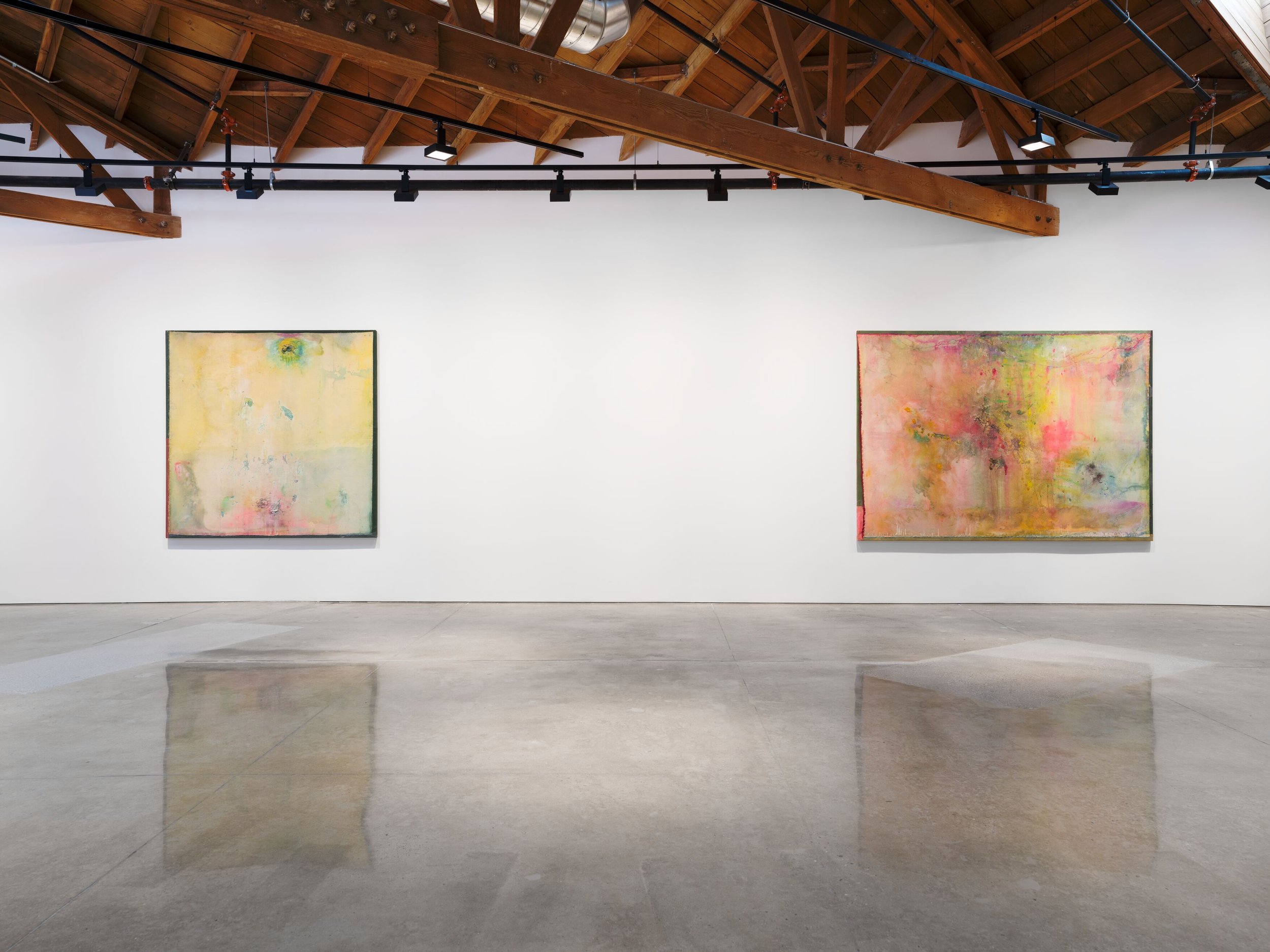
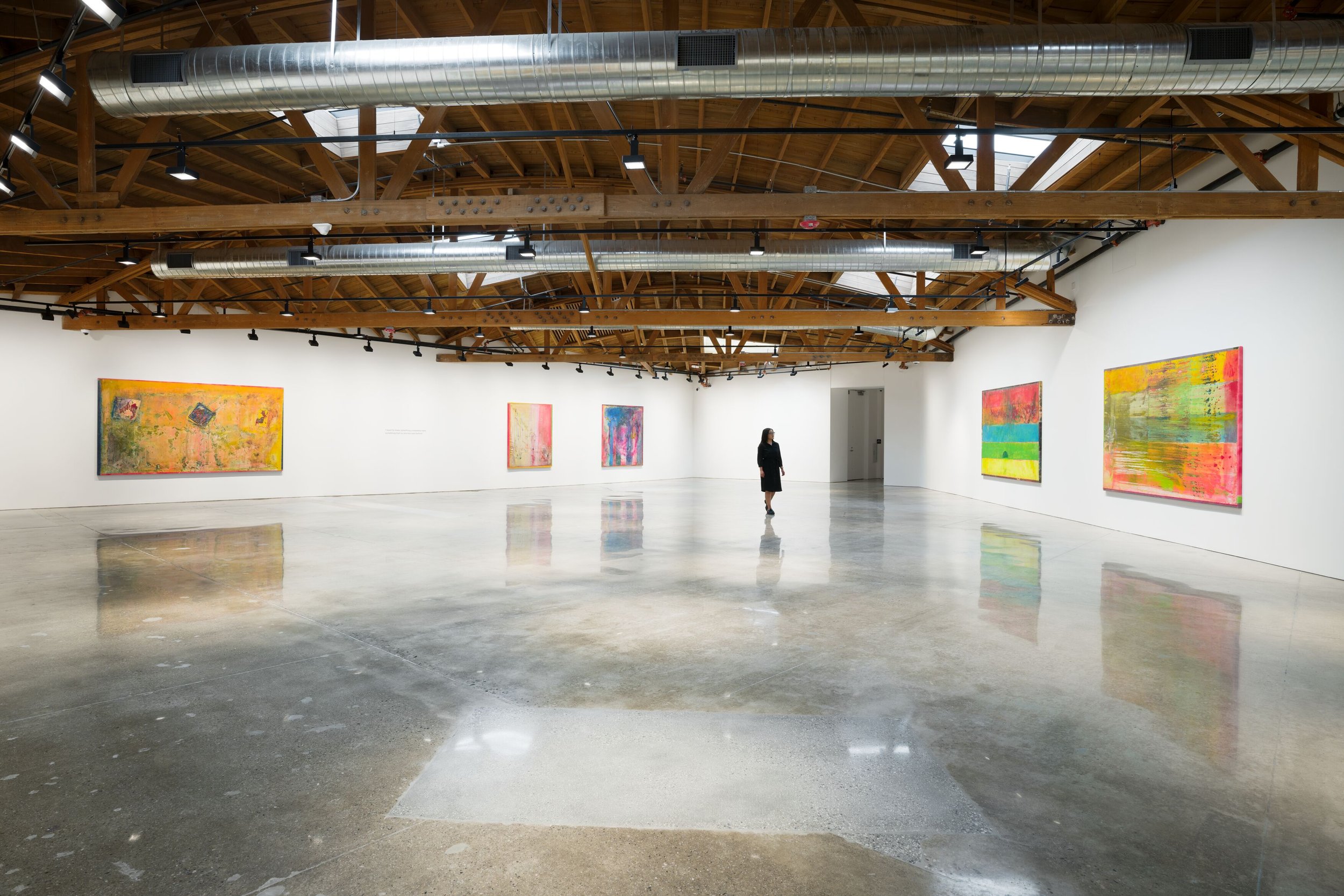
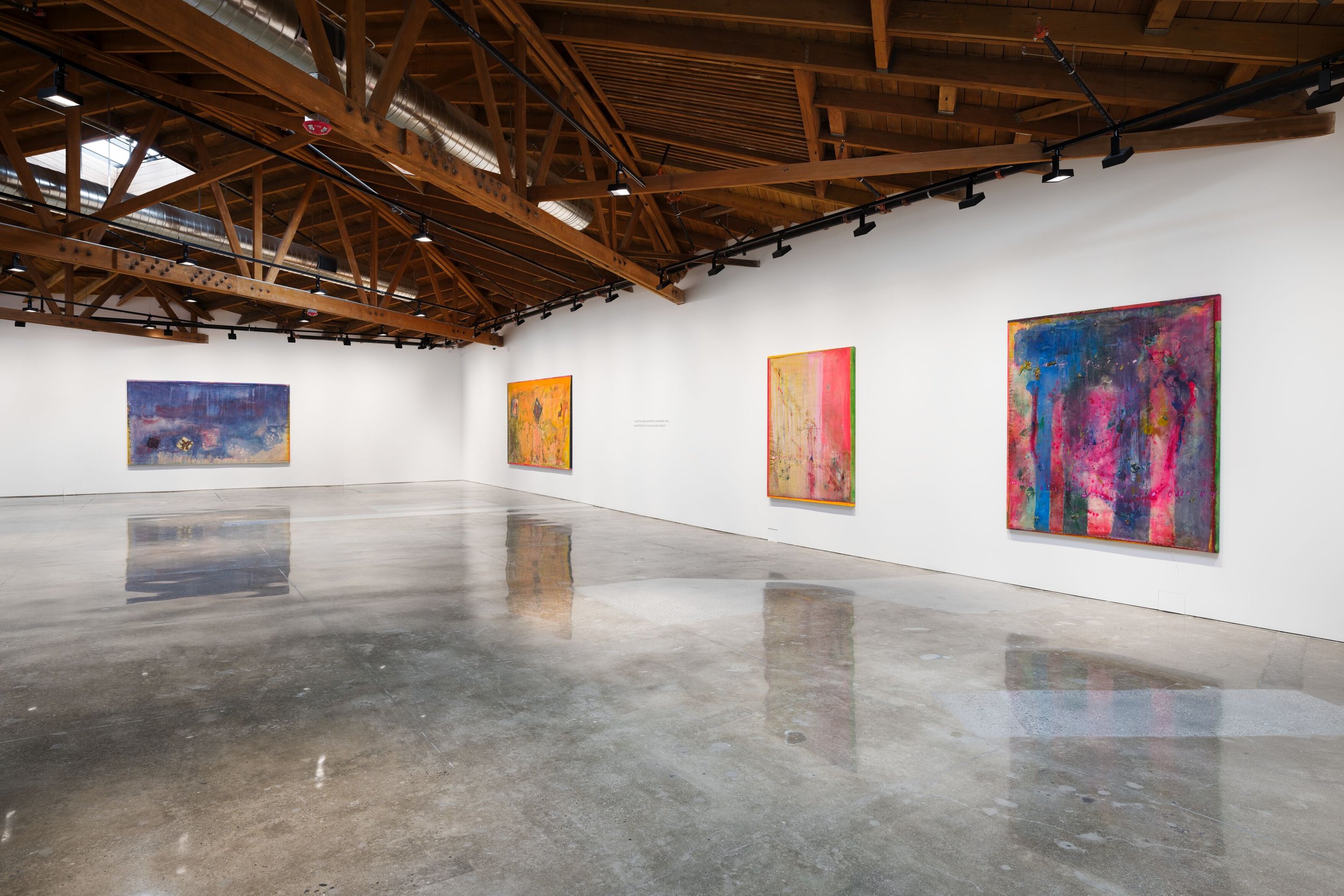

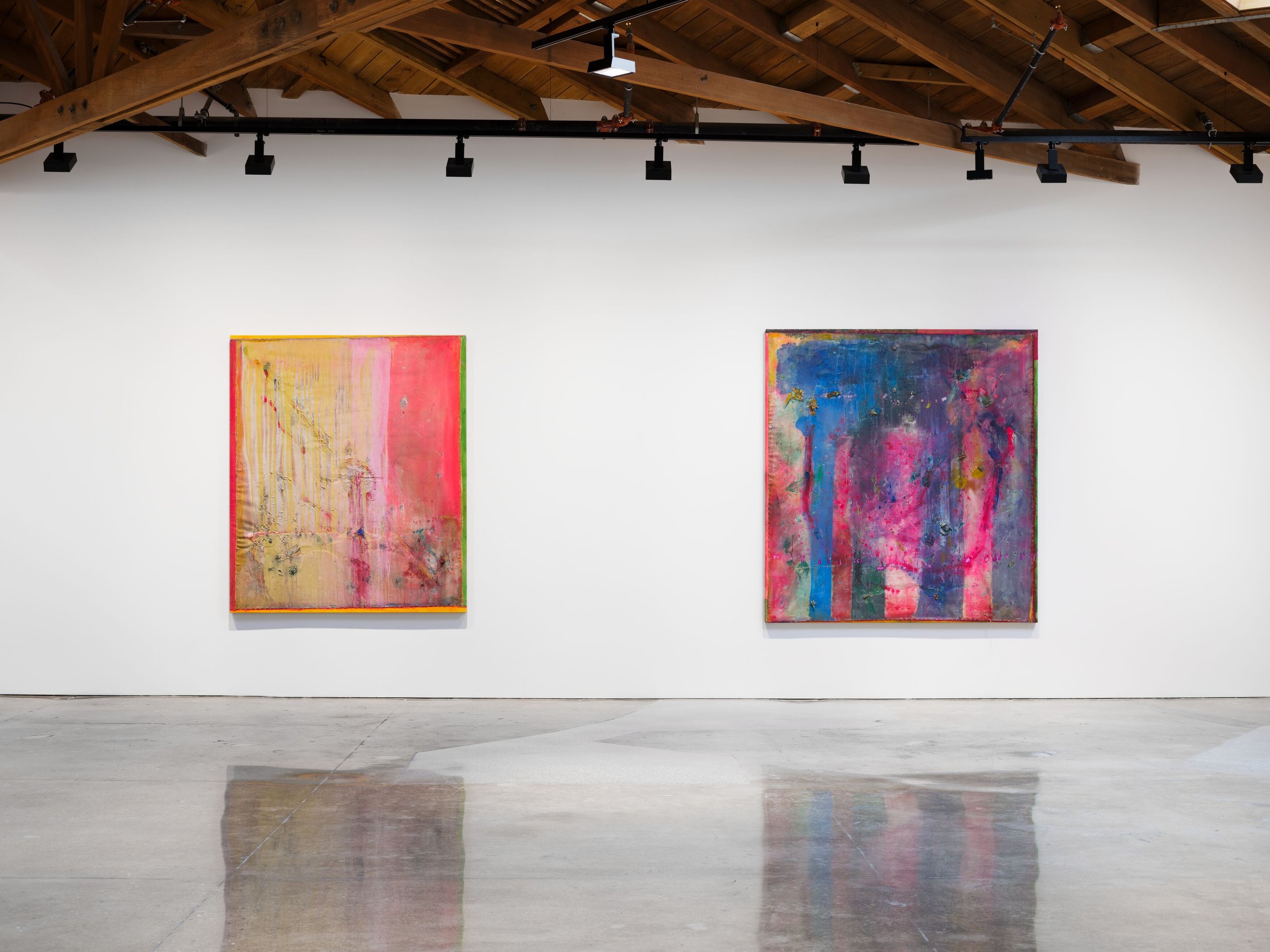
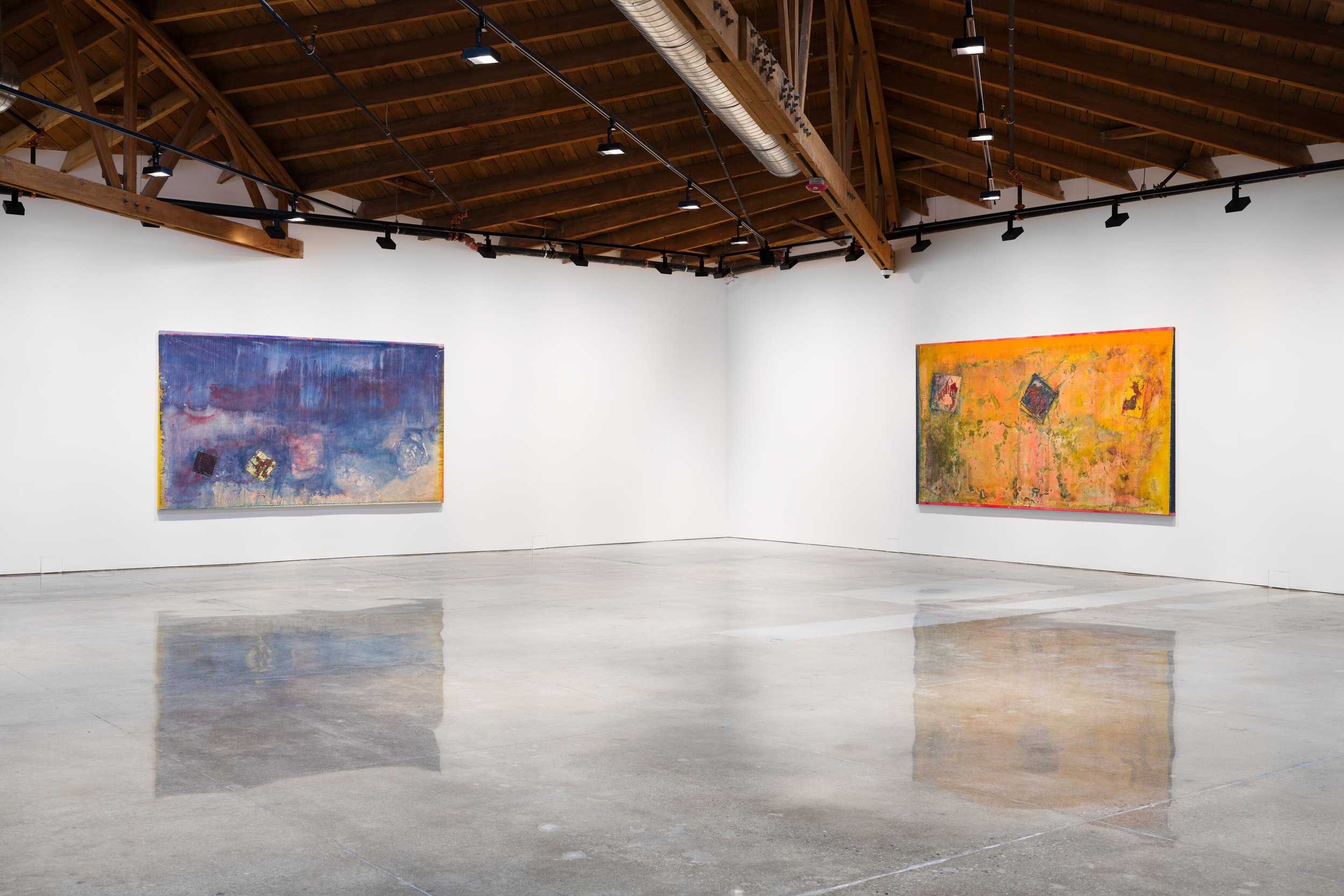
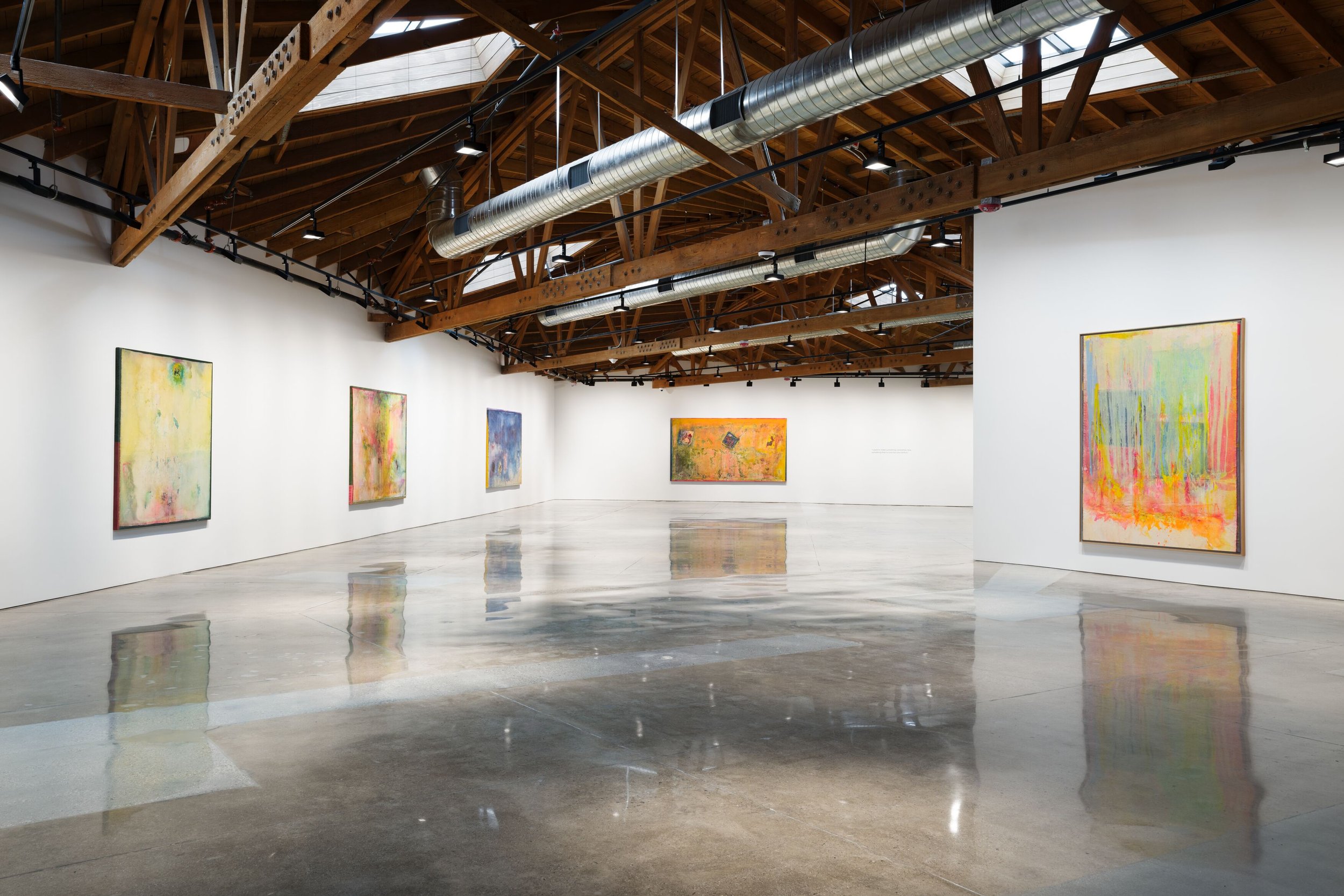
Installation view, ‘Frank Bowling.Landscape,’ Hauser & Wirth West Hollywood 26 May–5 August 2023 ©Frank Bowling All rights reserved, DACS, London / ARS, New York 2023 Courtesy the artist and Hauser & Wirth Photo: Fredrik Nilsen
‘I firmly believe that paint carries its own light within it and I want my paintings to catch the light that exists in the natural world. My whole life I have lived near water – the Berbice river, the Thames, the East River. And I am sure that my eye has been influenced by the light over the water and the terrain in those places, whether that is New Amsterdam or London or New York,’ says Bowling.
On the way too 2021 Acrylic and acrylic gel on canvas with marouflage 188.4 x 285.2 x 5.4 cm / 74 1/8 x 112 1/4 x 2 1/8 in
About the Artist
Sir Frank Bowling OBE RA has been hailed as one of the greatest living painters. Born in British Guiana (now Guyana) in 1934, Bowling arrived in London in 1953, graduating from the Royal College of Art with the silver medal for painting in 1962. By the early 1960s, he was recognized as an original force in London’s art scene with a style combining figurative, symbolic, and abstract elements.
After moving to New York in 1966, Bowling’s commitment to modernism meant he was increasingly focused on material, process, and color so that by 1971 he had abandoned the use of figurative imagery. Bowling’s iconic Map Paintings (1967 – 71), which include the stenciled landmasses of South America, Africa, and Australia, embody his transition to pure abstraction. Bowling exhibited six large Map Paintings in a solo show at the Whitney Museum of Art in 1971. From 1973 to 1978, Bowling experimented with ideas of chance and ‘controlled accidents,’ pouring paint from a two-meter height to create his visually arresting Poured Paintings. His sculptural paintings of the 1980s include embedded objects and thickly textured canvases and have been described as evoking landscape, riverbeds, and geologic strata.
Bowling became a Royal Academician in 2005. He was awarded the OBE for Services to Art in 2008 and a knighthood in the Queen’s Birthday honors in 2020. His work is represented in collections worldwide and has been exhibited in numerous group and solo exhibitions, including the 2017 – 19 touring exhibition ‘Mappa Mundi’ and the hugely successful retrospective at Tate Britain in 2019. Bowling is the subject of a BBC documentary, ‘Frank Bowling’s Abstract World,’ which coincided with the opening of the Tate retrospective. In 2022, he was awarded the Wolfgang Hahn Prize, which honors exceptional contemporary artists.
The exhibit opened on May 26th at Hauser & Wirth’s West Hollywood location and will close on the 5th of August this year.
For more information about the exhibit, please visit Hauser & Wirth site. Also, follow the gallery on Instagram, Facebook, X, and YouTube for more updates on this exhibit. For more updates on this exhibit.
Richard Misrach: New New Pictures/New Old Pictures
Cargo Ships (January 11, 2022, 5:02pm), 2022 pigment print © Richard Misrach, courtesy Fraenkel Gallery, San Francisco
Fraenkel Gallery is pleased to announce New New Pictures/New Old Pictures, an exhibition of large-format photographs by Richard Misrach, his fifteenth with the gallery since 1985. The exhibition marks the debut of his new series, Cargo, atmospheric studies of maritime traffic that raise questions about international commerce and the supply chain upon which the world now depends. Also on view will be works made from recently discovered negatives produced throughout Misrach’s near five-decade career.
Misrach began Cargo in 2021, as the global shipping industry faced a critical moment. The photographs in this ongoing series are made from a single vantage point in San Francisco, looking south and east across the bay. Photographed throughout the changing seasons, the five images on view capture the glow of the Port of Oakland at dawn and ships seen by afternoon and evening light. In their careful observation of the drama of sky and water, the images suggest a comparison to J.M.W Turner’s seascapes and recall Misrach’s On the Beach series, which similarly depended on patient waiting for the convergence of light and subject. The exhibition also features approximately 10 new works made from negatives spanning 25 years, from 1984 to 2009, many of them previously unseen or unpublished. Returning to his archive, Misrach selected images that hadn’t fit into larger projects but which, when viewed today, have gained new meaning. “Photographs, when they’re made, can shift meaning with time, and often do,” Misrach has noted. Many of the works were made as part of Misrach’s Desert Cantos series, which explores the impact of our human presence on the deserts of the American Southwest. The selection features photographs of iconic land art installations, including Nancy Holt’s Sun Tunnels and Michael Heizer’s City, and images of the Great Salt Lake Desert and Battleground Point, where Misrach recorded figures among the water and dunes, setting the photograph apart from other work in the series. Other works include a cloud-filled print from the Golden Gate series and a view of an Oregon beach that was previously featured in the artist’s Color Reverse series. Printed as the camera originally recorded the scene, the image takes on a new life. Together, the photographs serve as a brief and idiosyncratic survey of Misrach’s career.
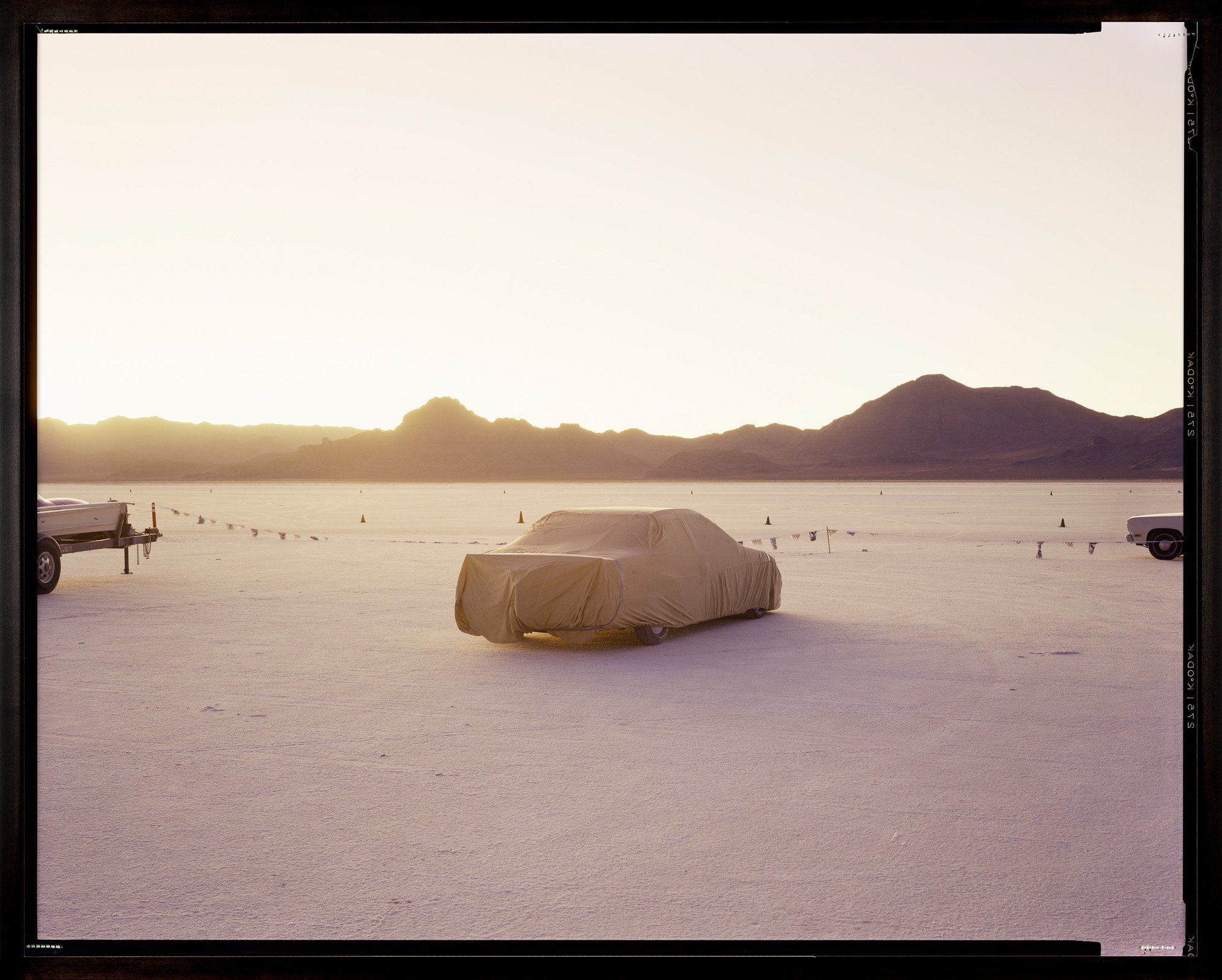

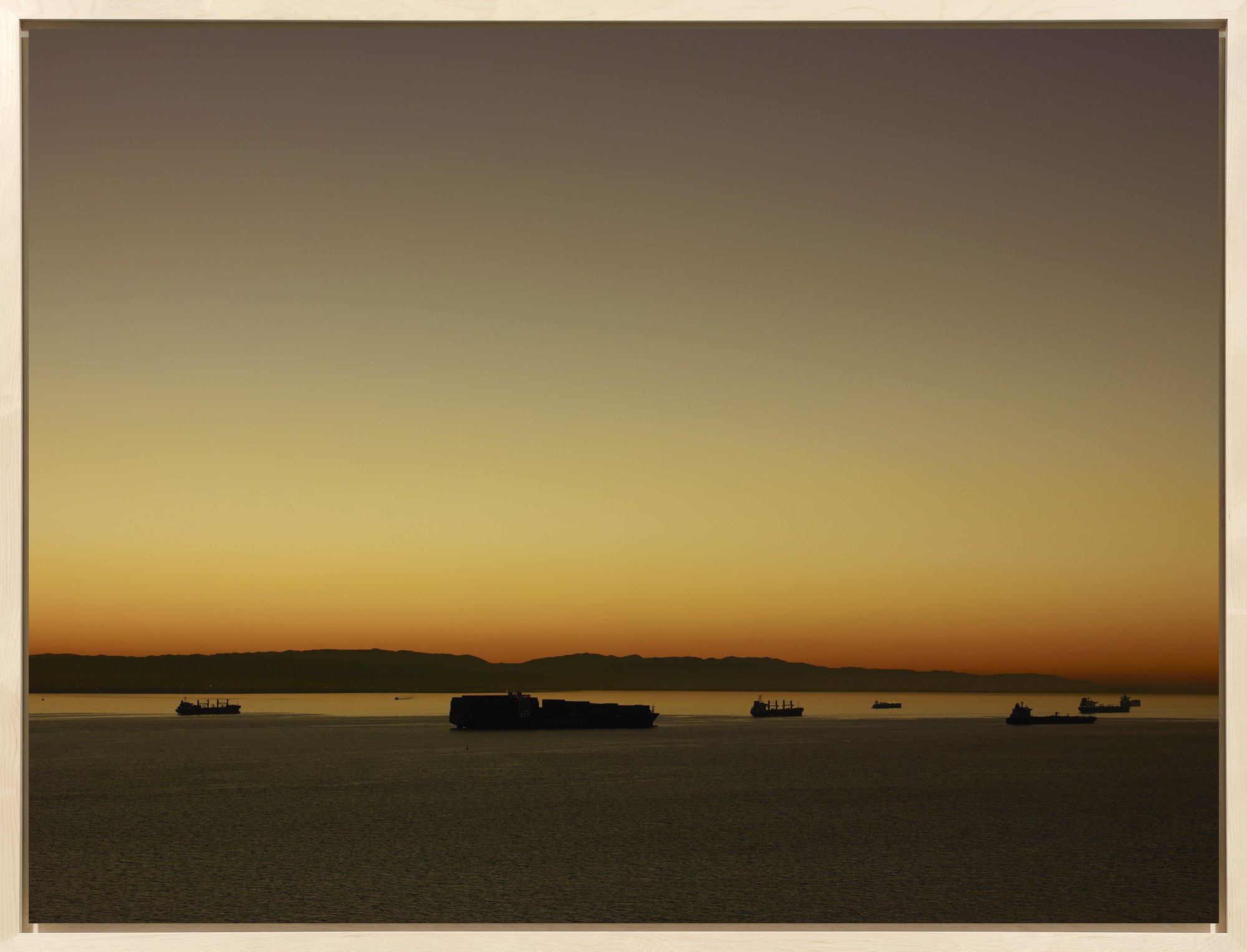
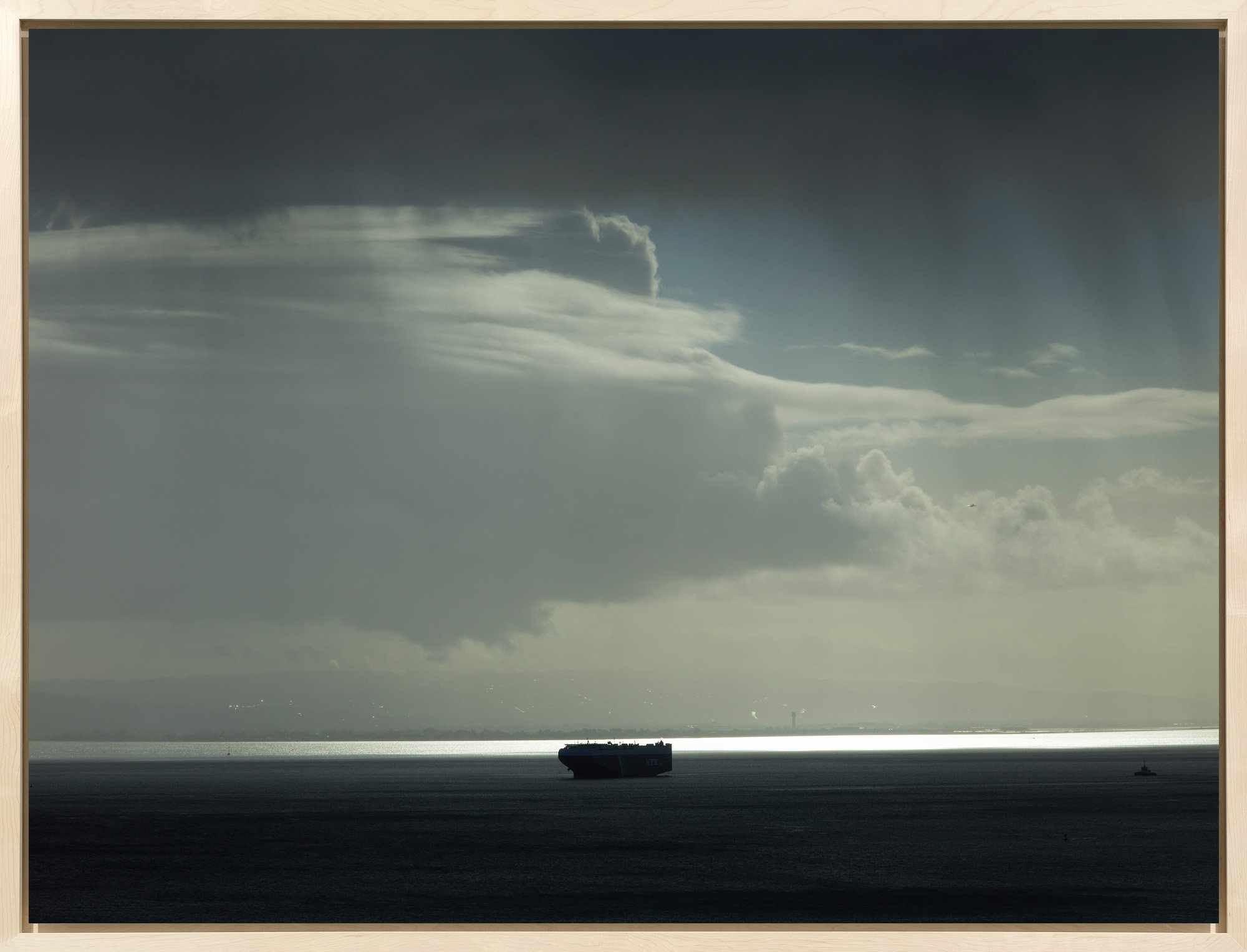
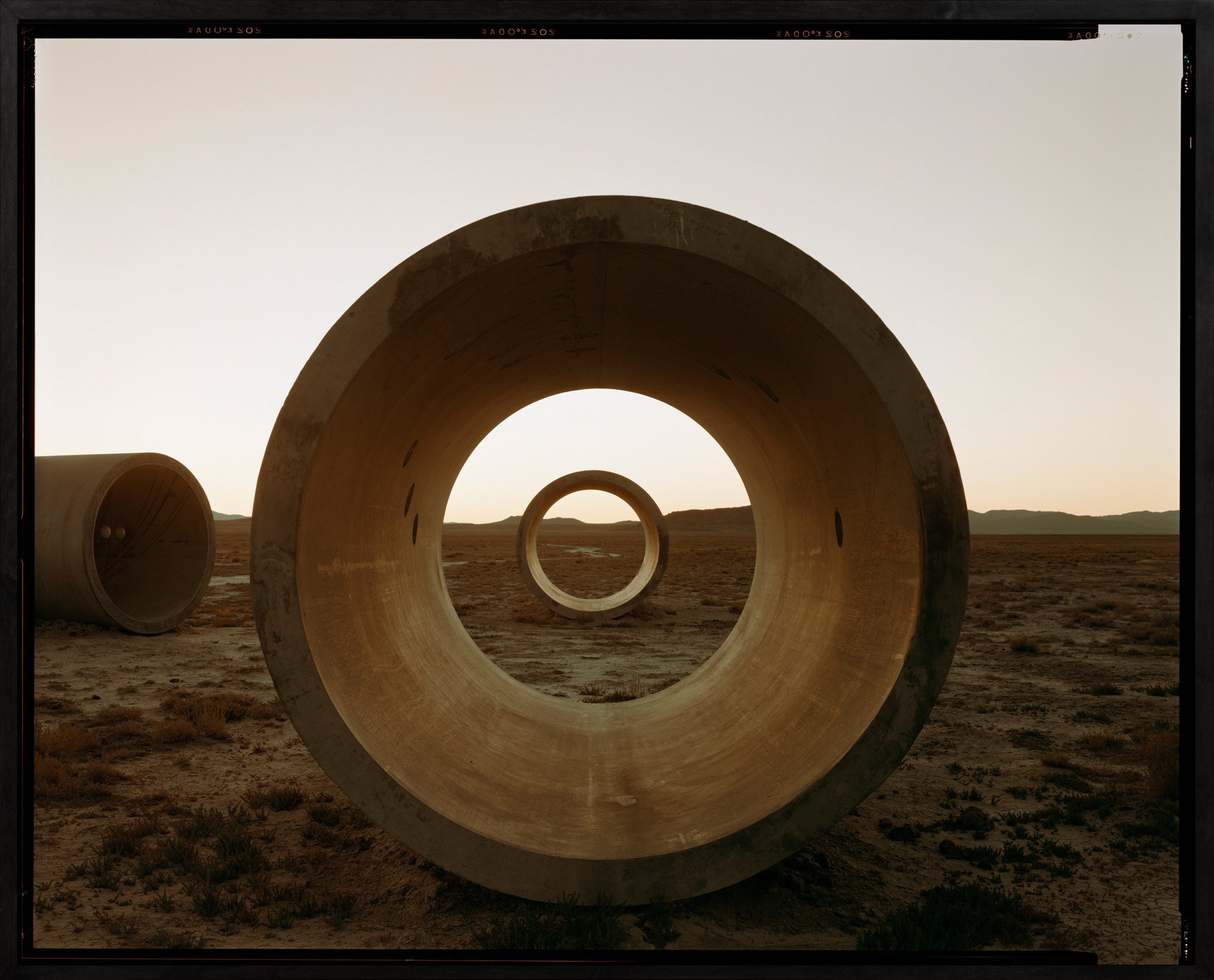
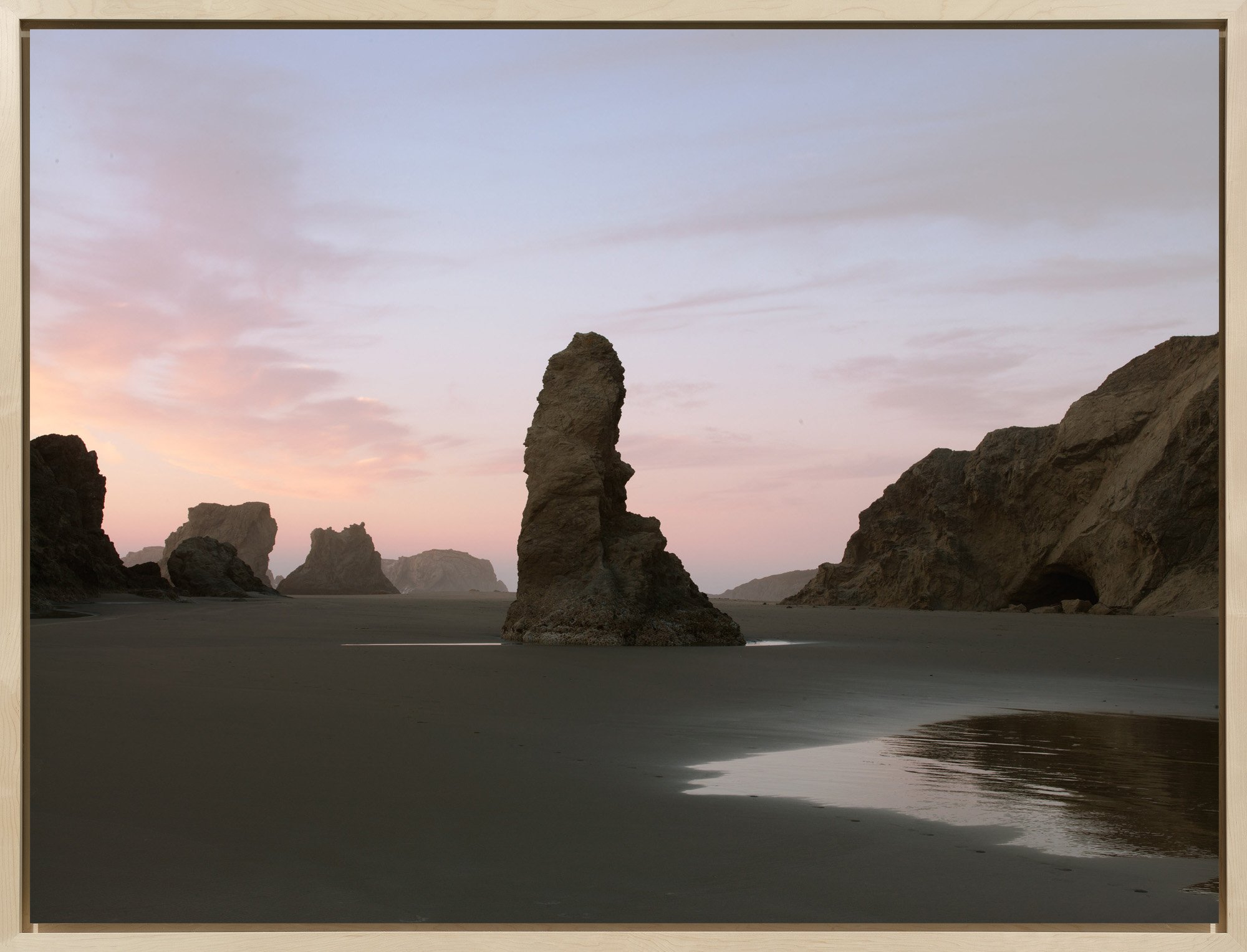
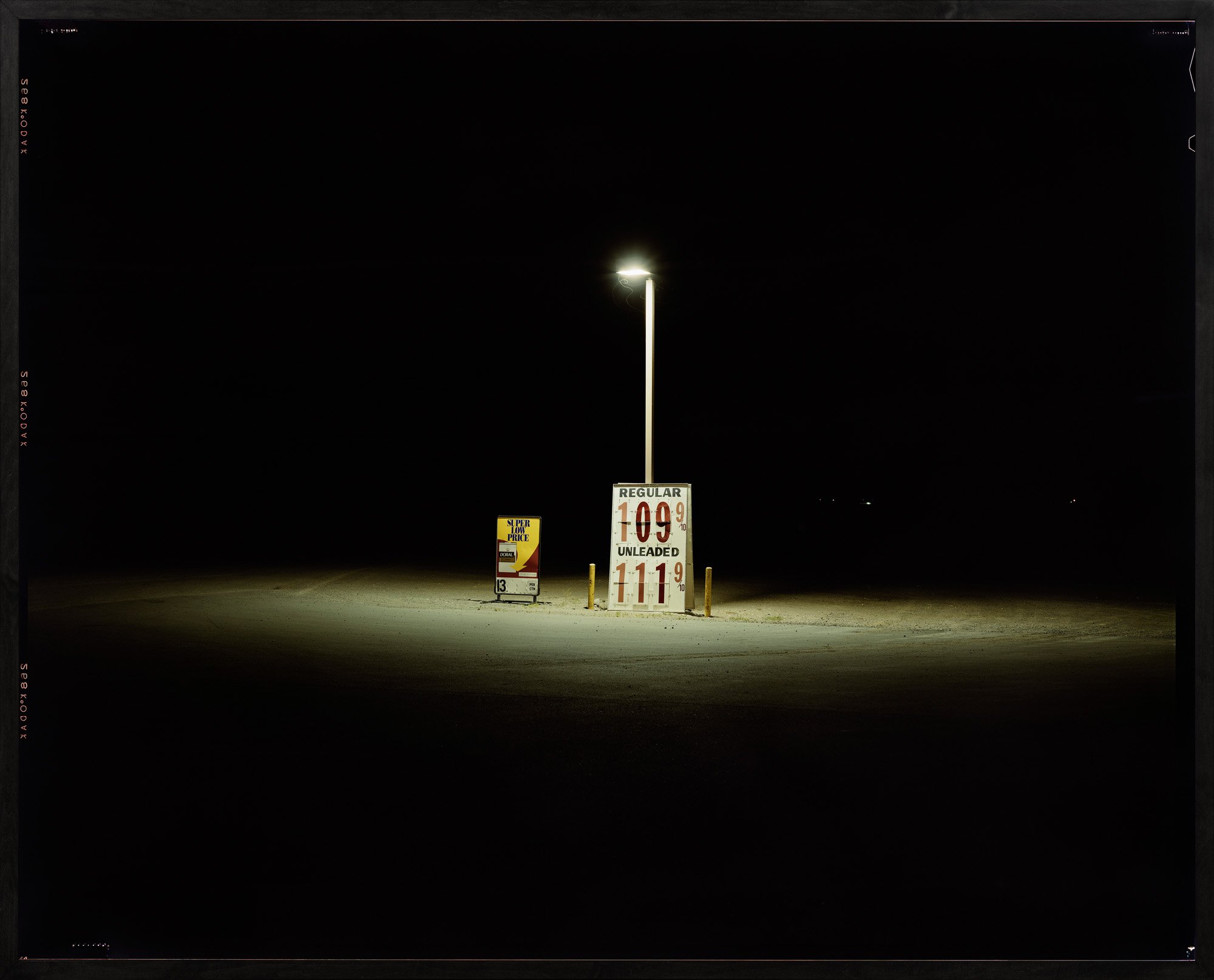
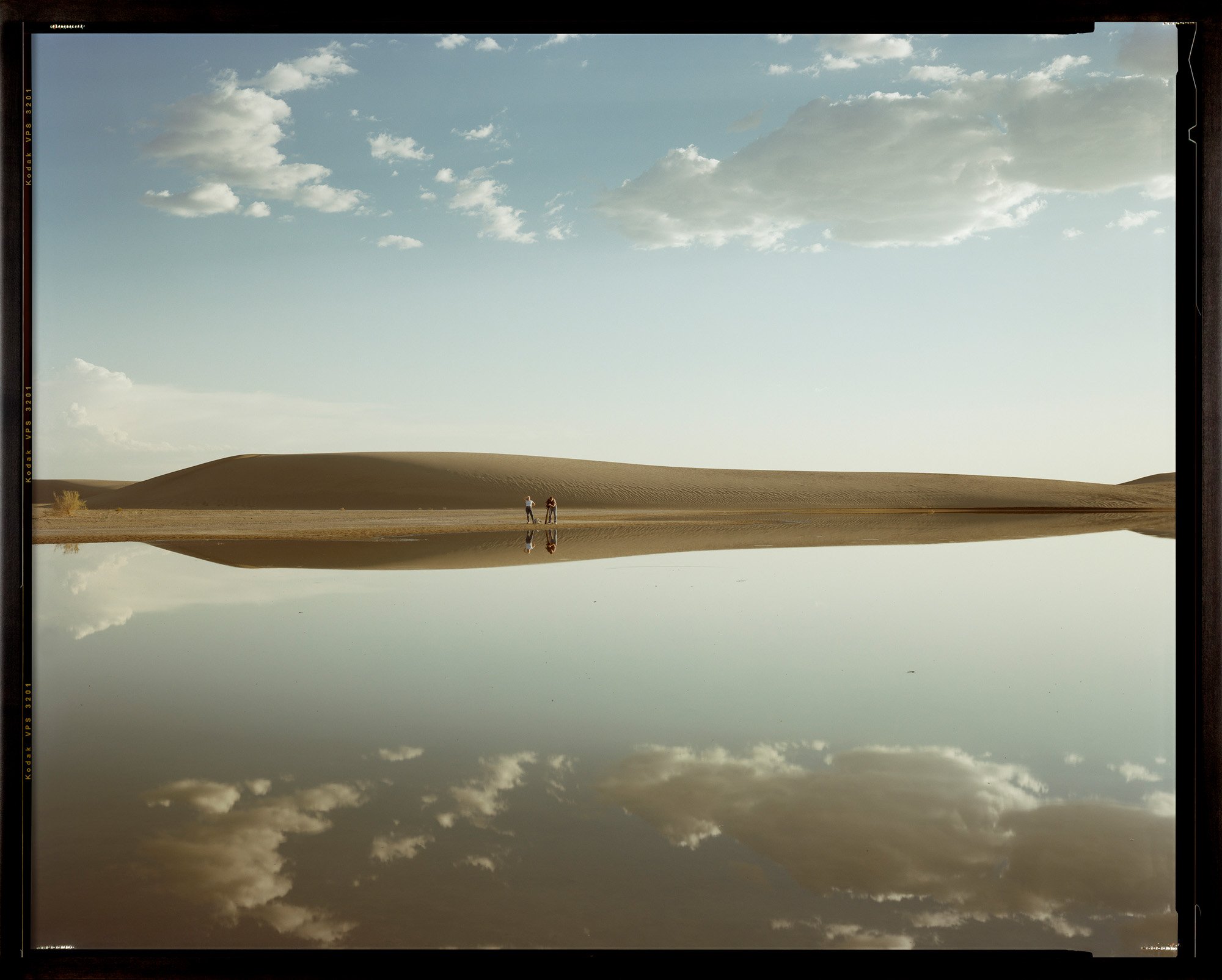
Richard Misrach (born 1949) has been photographing the American West for more than 50 years and is perhaps best known for his ongoing Desert Cantos series. Misrach recently collaborated with San Francisco’s Alonzo King LINES Ballet on their Spring 2023 season, incorporating his photographs of company dancers in Hawaii into backdrops and costumes for the performance, which will travel throughout the U.S. His work has been the subject of solo exhibitions at the National Gallery of Art, Washington, D.C.; Art Institute of Chicago; Los Angeles County Museum of Art; and Centre Pompidou, Paris, among others. His work has been featured in more than a dozen monographs, including Telegraph 3 A.M.; Bravo 20: The Bombing of the American West; Crimes and Splendors: The Desert Cantos of Richard Misrach; On the Beach; Destroy this Memory; Petrochemical America; and Border Cantos. Recent publications include Blind Spot Folios 001: Nancy Holt & Richard Misrach, which presents Misrach’s previously unseen images of Holt’s Sun Tunnels; On Landscape and Meaning, from Aperture’s Photography Workshop Series; and Notations, published by Radius Books, which explores the negative image in photography. He is the recipient of numerous awards, including four National Endowment for the Arts Fellowships and a Guggenheim Fellowship.
The gallery will host an opening reception with the artist on Thursday, June 29, from 5:30 to 7:30 pm, and a book signing with the artist on Saturday, July 29, from 2 to 4 pm. Please visit the Fraenkel Gallery's site for more information about Richard’s exhibit.
High Stakes: SARAH MISKA
Photo credit: Maya Fuhr
Night Gallery is pleased to announce High Stakes, a presentation of new paintings by Sarah Miska. This exhibition follows Swept, Miska’s 2022 debut at the gallery. The exhibit will open on July 8 and close on August 5, 2023.
Sarah Miska’s paintings investigate mechanisms of control through equestrian motifs. Her unusual, constrained croppings and a masterful ability to capture intricacy expose the less refined dimensions of English riding, as wrinkles pucker on show jackets and loose horse hairs spring from ornately braided manes. The subculture’s aesthetic qualities act as a potent site for social critique; elite status and immense wealth seem as native to equestrianism as, well, horses.
Red Checkered Jockey Silk, 2023 acrylic on canvas 72 x 60 in (182.9 x 152.4 cm)
Miska’s magnified contortions of hair and bodies underline the futility of total regimentation, giving way to wider considerations of power relations and their signifiers. In High Stakes, the artist shifts her attention to horse racing in spirited reflections on risk, endurance, and the exhilarating prospect of reward.
Trifecta, 2023 acrylic on canvas 72 x 60 in (182.9 x 152.4 cm)
The show’s title alludes to the myriad risks embedded into horse racing: owners’ and bettors’ chances of losing or gaining money, as well as the very real physical dangers posed to horses and jockeys. More subtly, High Stakes invokes the volatility of the art industry that is inherent to capitalist enterprise and guaranteed for artists, collectors, and gallerists alike. As she captures jockeys lifted high out of the saddle and the tension of the starting gate, Miska posits the racetrack as a stage where these concerns play out.
High Stakes, 2023 acrylic on canvas 96 x 72 in (243.8 x 182.9 cm)
A propulsive, anticipatory sense of movement ripples through High Stakes. Rendered large-scale with the artist’s signature meticulousness, tight compositions, and rich textures give each painting a quiet charge. Risk/Reward, 2023, nods to Eadweard Muybridge, the 19th-century photographer who first documented a galloping horse with all four limbs off the ground. Miska distills the momentary weightlessness of a horse moving at full speed, legs suspended in air, dirt flying.
Wager, 2023 acrylic on canvas 48 x 60 in (121.9 x 152.4 cm)
Elsewhere, Miska expands her examination of affluence and stature with a new series depicting jockey silks. These garish garments are coded to represent horse ownership and lineages in the sport, with patterns and colors specific to influential families and individuals. Devoid of any markers of identity, Miska’s jockeys become pure signifiers, emblems of concentrated wealth, while the dramatic light cast upon torsos against black backgrounds bolster the cinematic quality of each tableaux.
The Starting Gate, 2023 acrylic on canvas 72 x 60 in (182.9 x 152.4 cm)
What is being said about Sarah’s work:
“High Stakes is a study in proximity, interrogating how far we’ll go in pursuit of something bigger. Miska is here interested in the intoxicating energy of risk, the absurd willingness to lose everything for the possibility of even more. So moves the uneven rhythm of life—some run with their chances, others may never try.”
— Jayne Pugh
Gallery Details:
2276 E. 16th Street,
Los Angeles, California 90021
Sarah Miska (b. 1983, Sacramento, CA) received her BFA from Laguna College of Art and Design in 2007 and her MFA from Art Center College of Design in 2014. She has had solo exhibitions at Lyles & King, New York, NY; Friends Indeed Gallery, San Francisco, CA; Night Gallery, Los Angeles, CA; Hernando’s Hideaway, Miami, FL; and Griff’s, Milwaukee, WI. Miska’s work has been featured in group shows at Praz-Delavallade, Los Angeles, CA; Spazio Amanita, Los Angeles, CA; Below Grand, New York, NY; Dread Lounge, Los Angeles, CA; Super Dutchess, New York, NY; and Wilding Cran Gallery, Los Angeles, CA, among others. She is a 2022 subject of “In the Studio,” W Magazine’s culture series. Her work belongs in the permanent collections of the Institute for Contemporary Art, Miami, FL, and Long Museum, Shanghai, China. Miska lives and works in Los Angeles, CA.
For more information about Sarah and her exhibit please visit the Night Gallery’s website here.
Body: Instrument and File By Cristiano Mangovo
Photos are courtesy of the artist and Chase Contemporary
Chase Contemporary is pleased to present the solo exhibition debut from Angolan visual artist Cristiano Mangovo (b. 1982), Body: Instrument and File, which opened on June 15th and will close on July 13th. Primarily based between Lisbon, Portugal, and Cabinda, Angola, as a child he fled the Angolan Civil War to the Democratic Republic of Congo where, with his mother’s encouragement, went on to study at the Academy Des Beaux-Arts (he is in NYC for a two-month residency with Chase, currently creating all new pieces for the show). The paintings in this exhibition explore the body as an instrument for creation and destruction, and a file (or archive) of lived experiences. His large-scale acrylic paintings often touch on the cultural differences between his two homes, and the artist’s experiences in Angola have led him to advocate for social and environmental change through his art, addressing climate change, gender inequality, and other universal human concerns in his work.
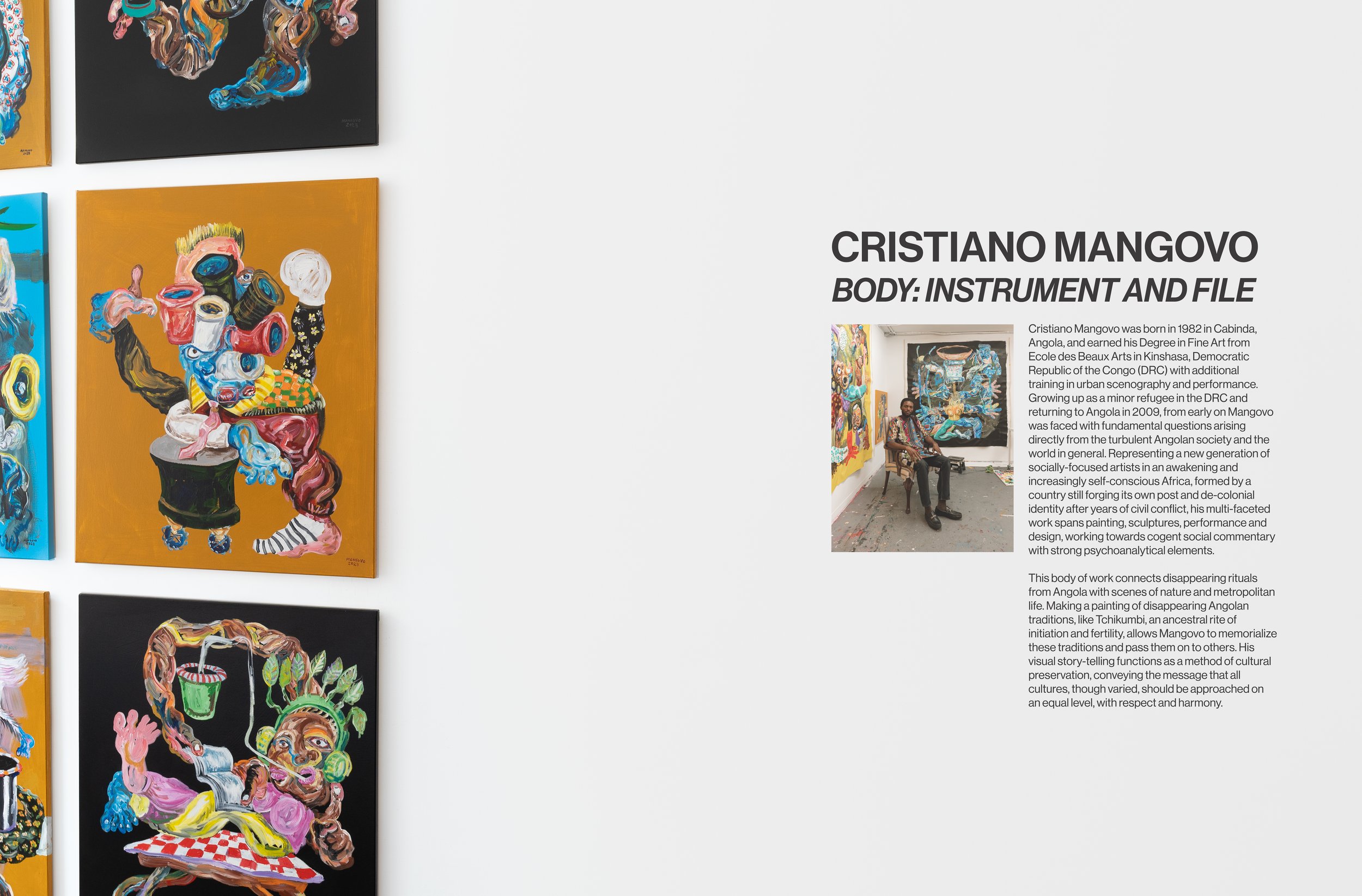
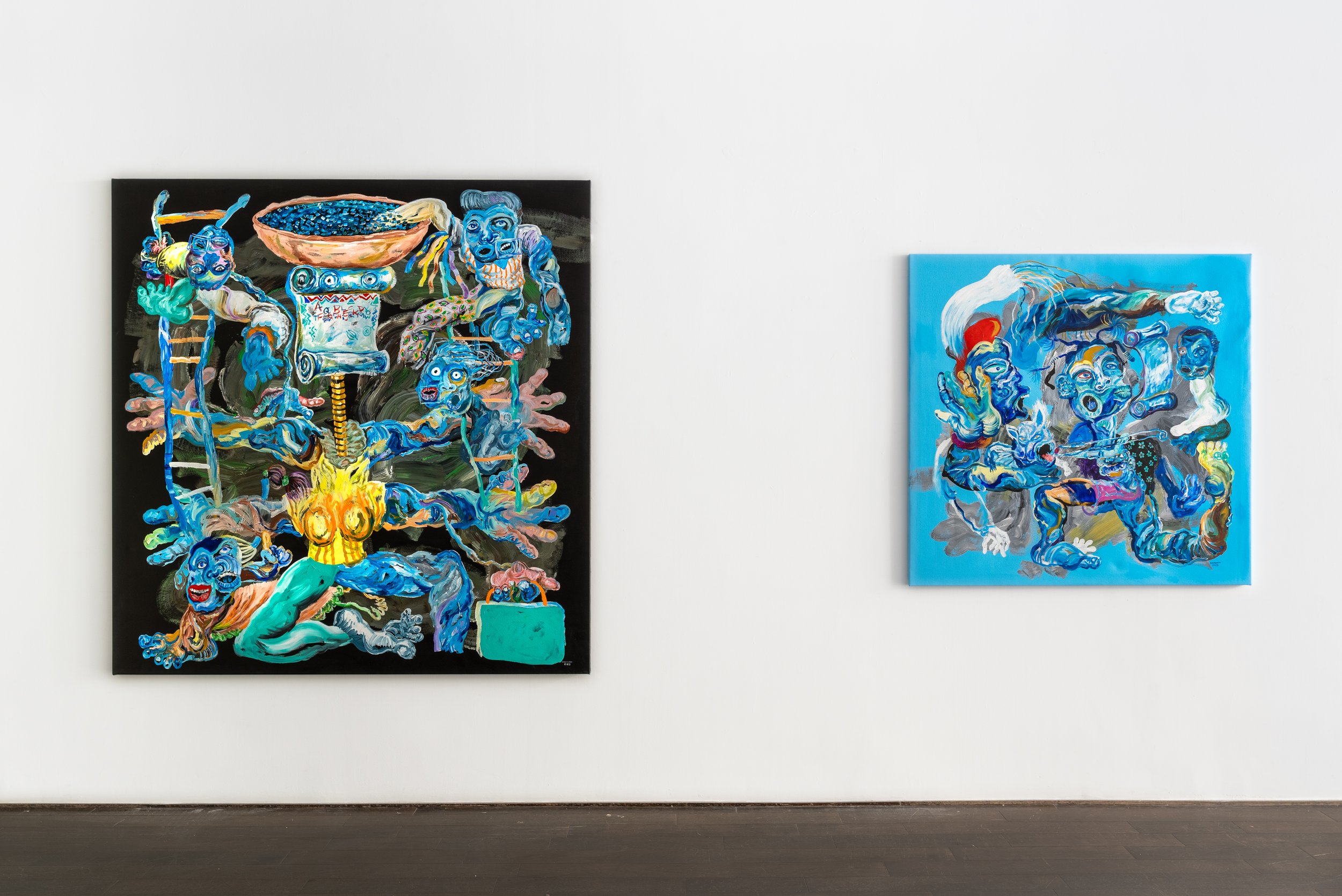
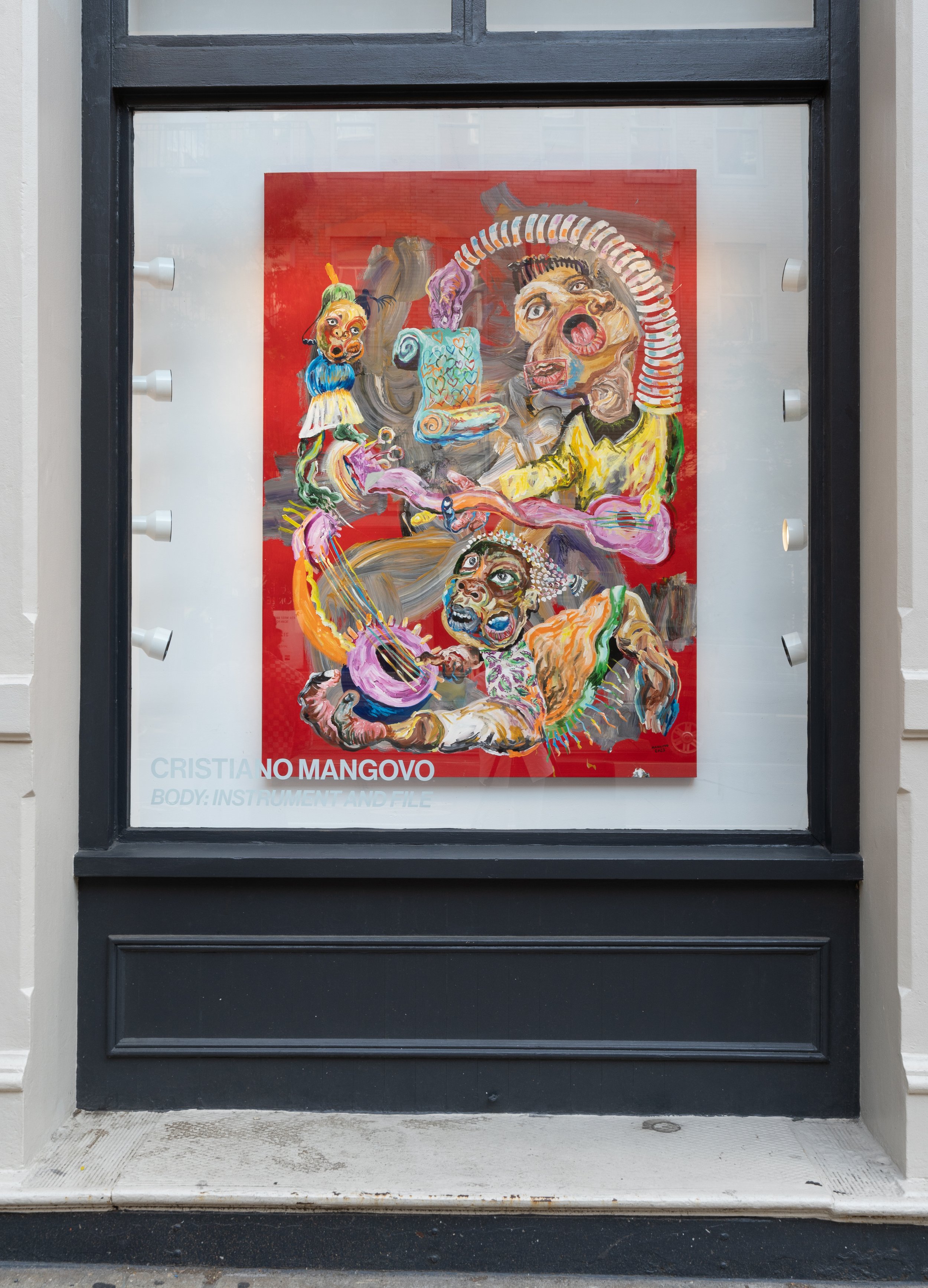
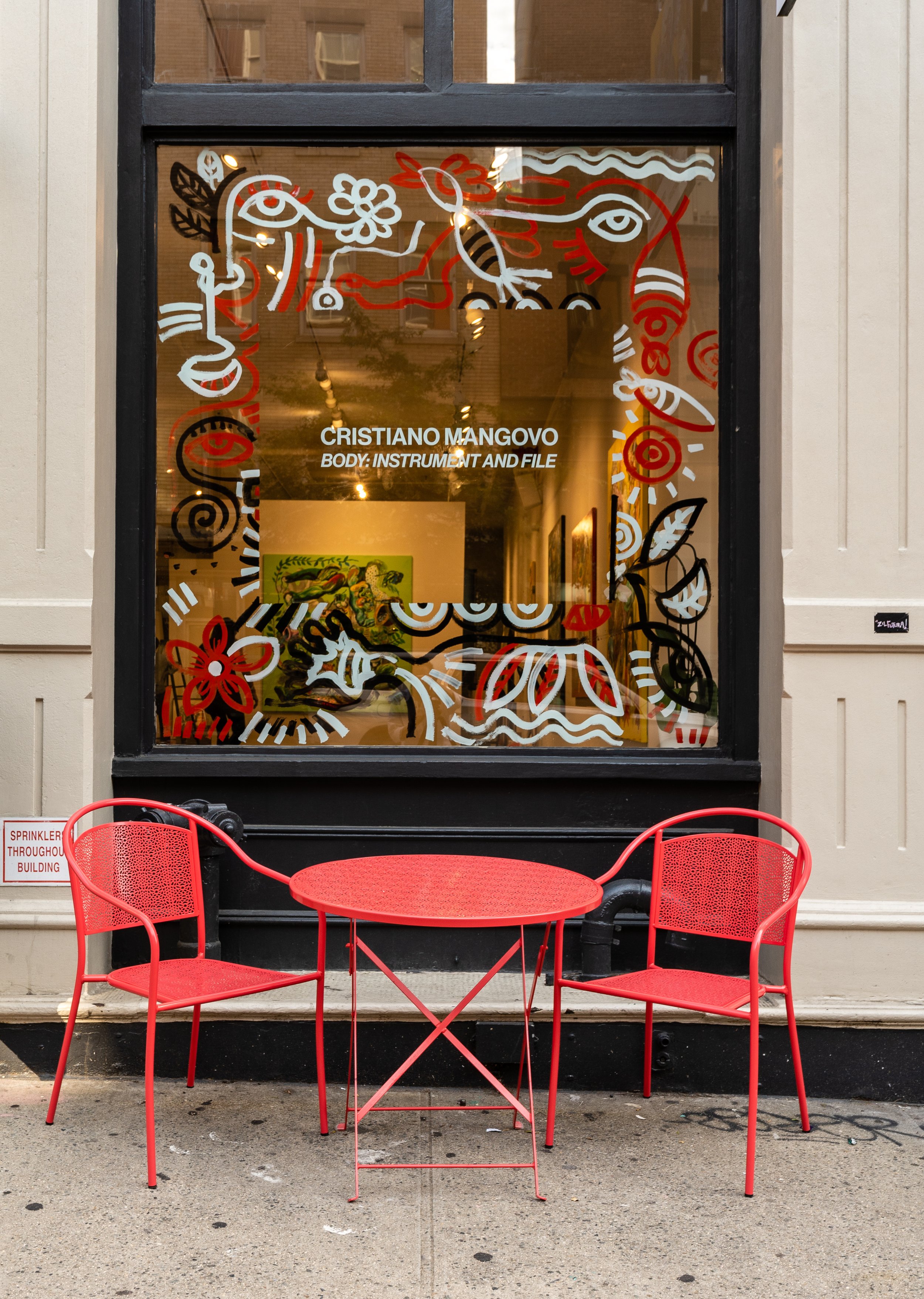
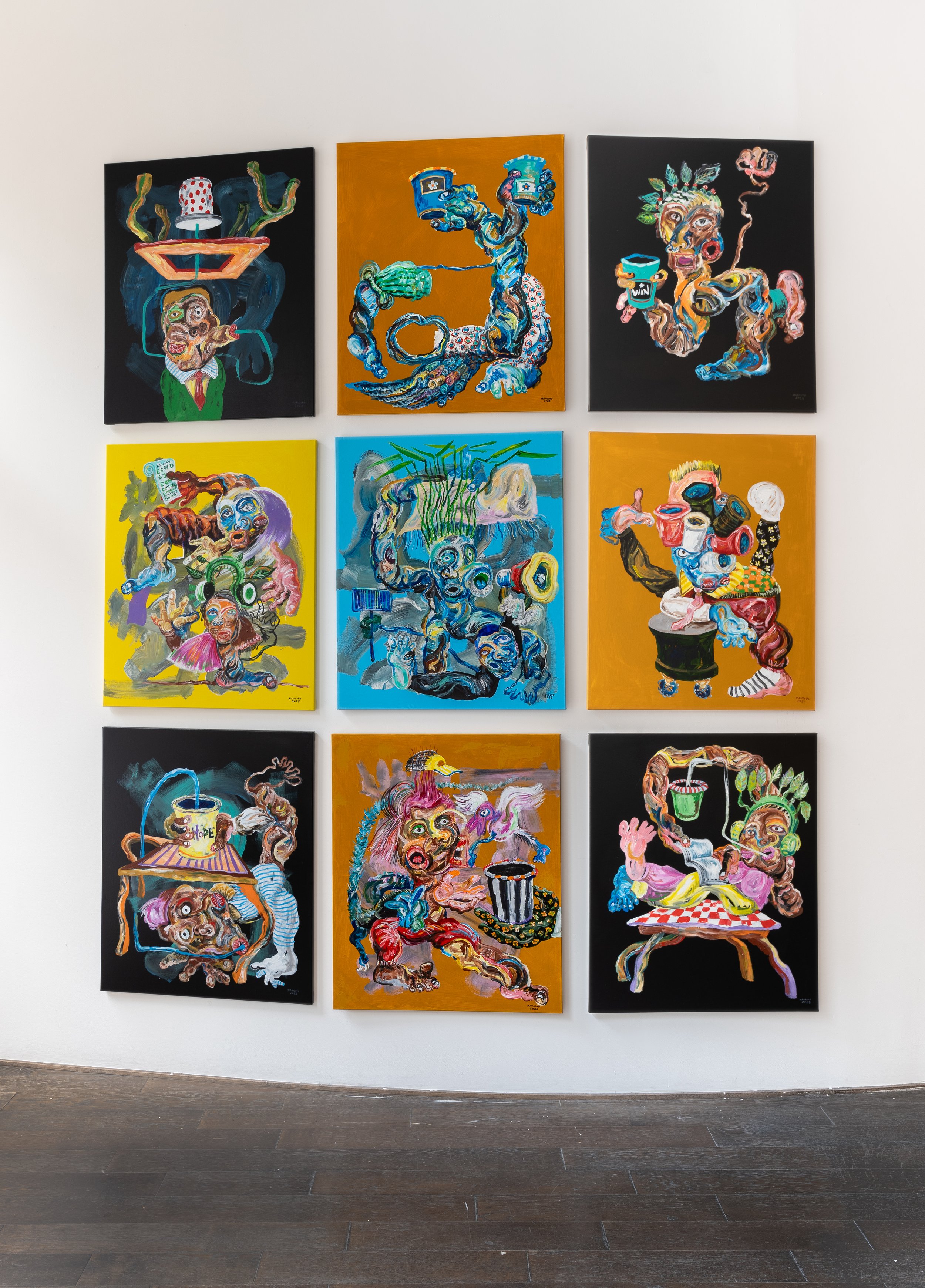
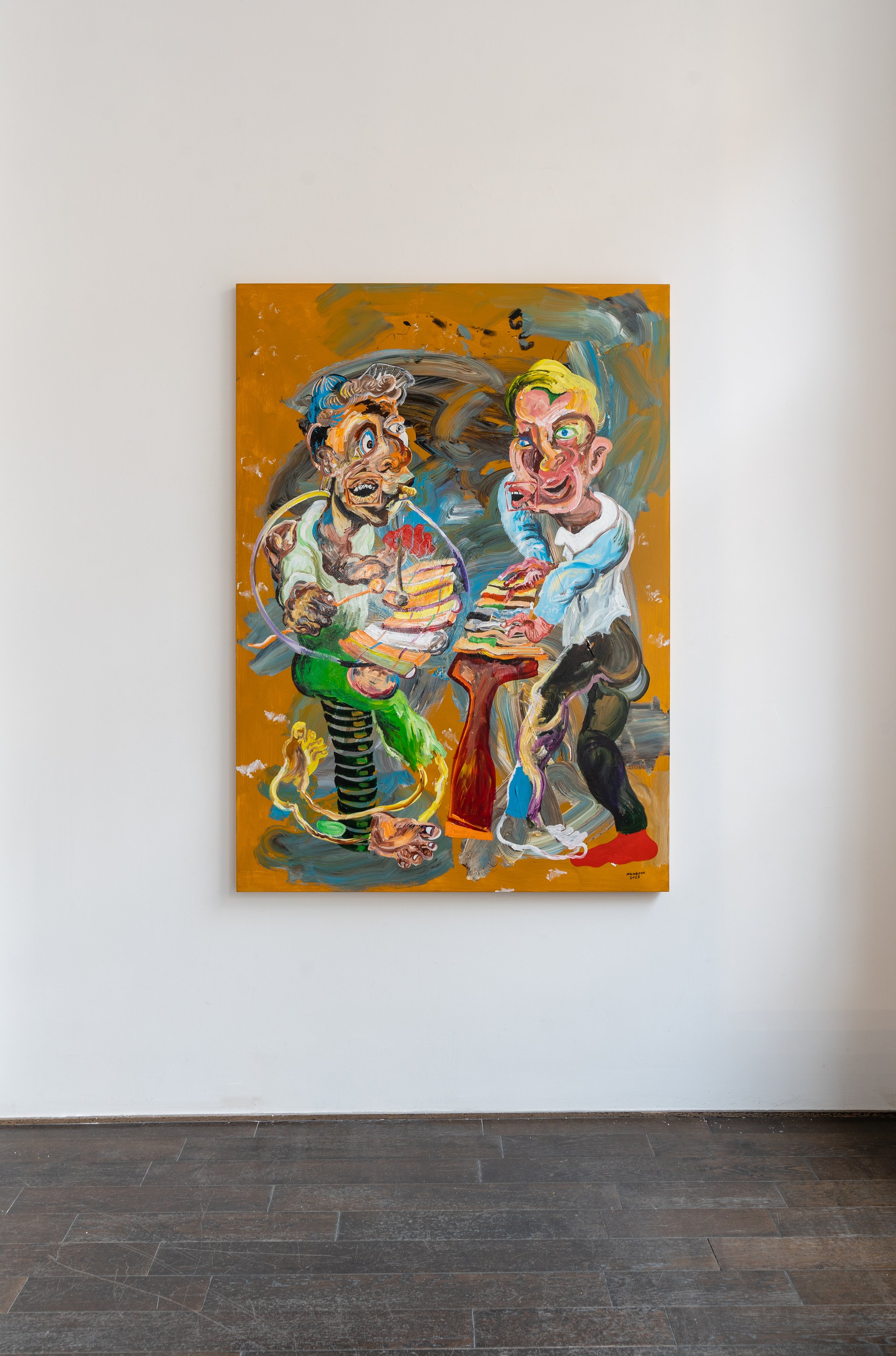
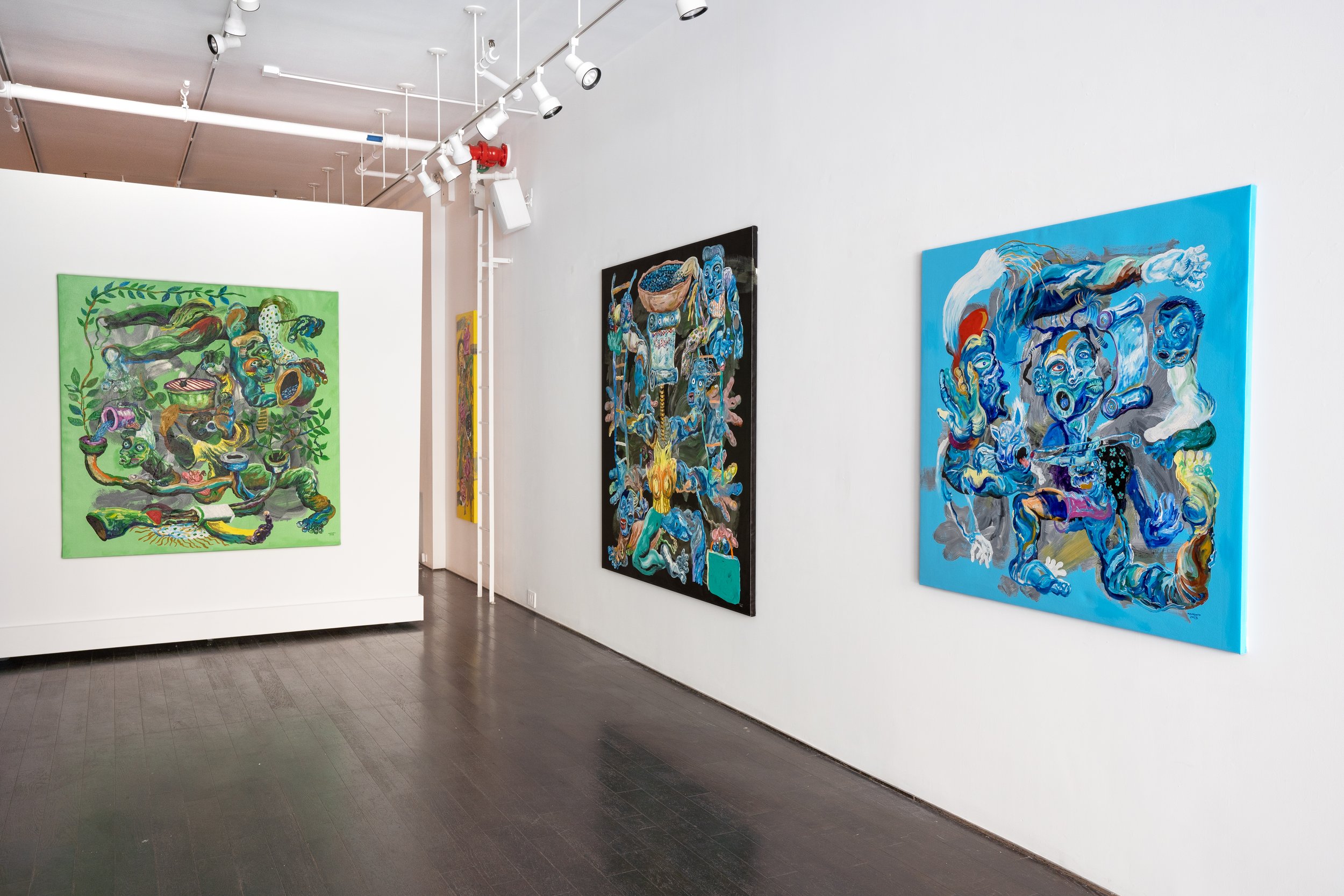
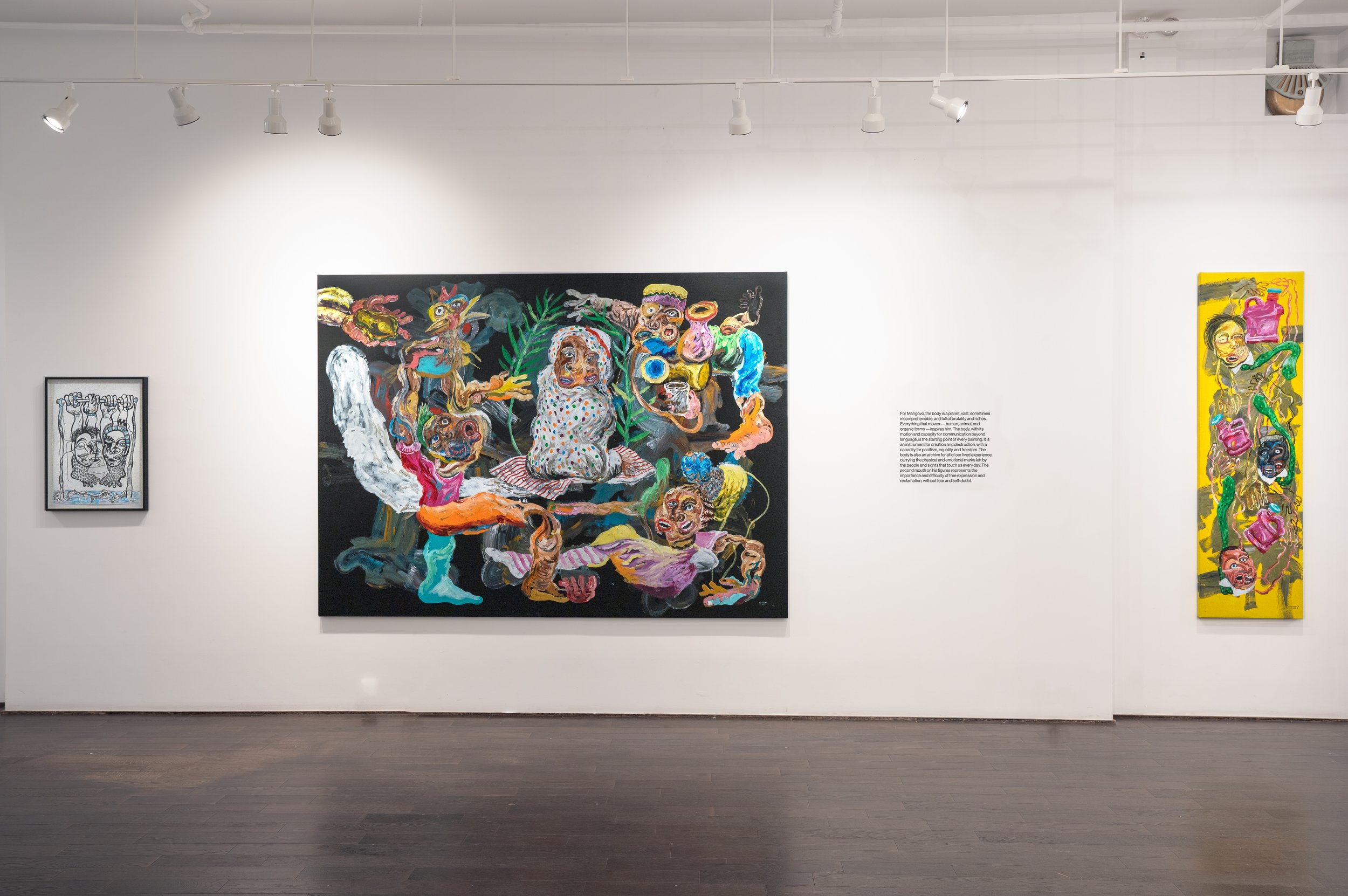
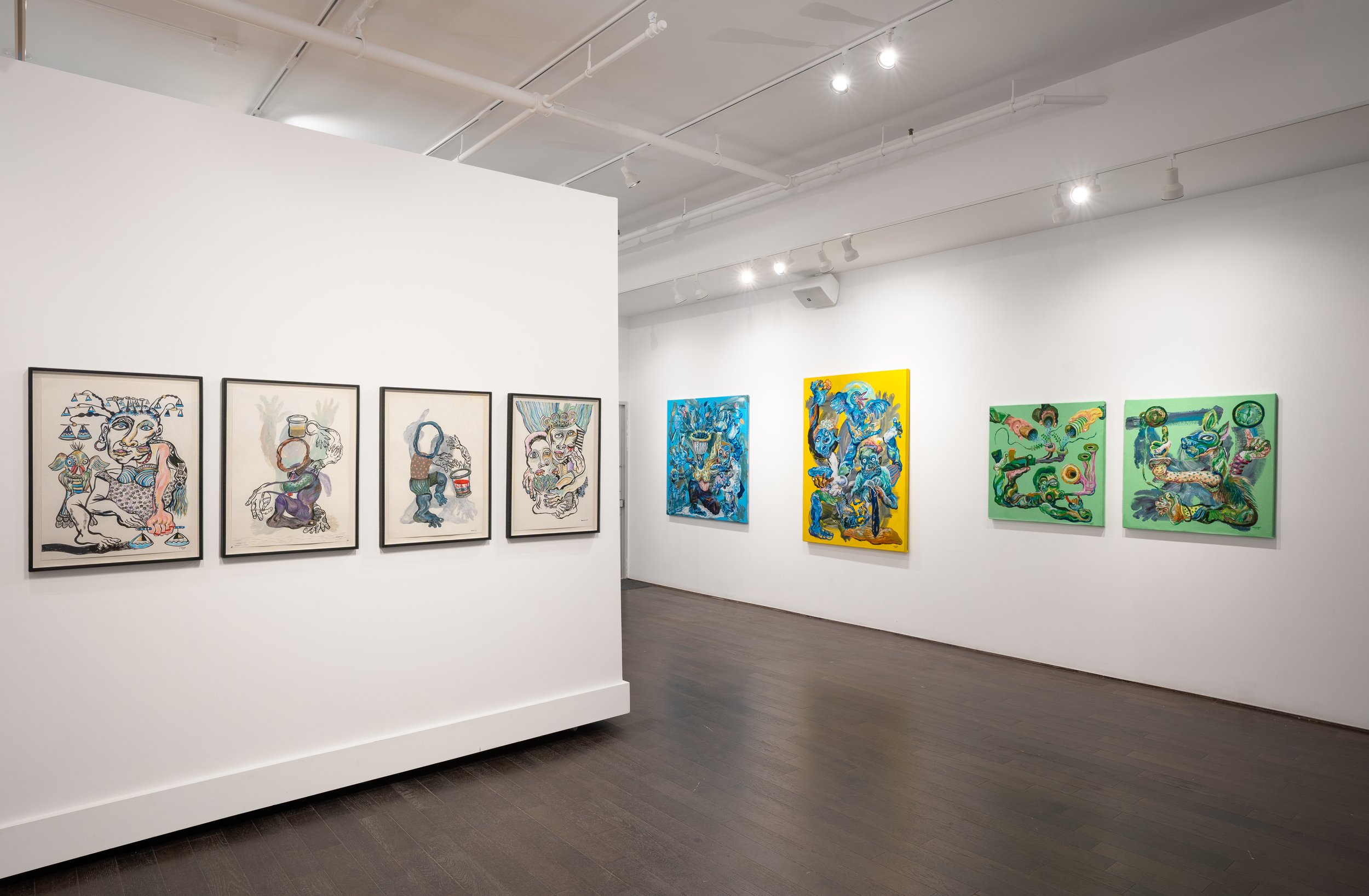

Photos are courtesy of the artist and Chase Contemporary
His unique style combines surreal & expressionistic elements, painting distorted, multi-faceted faces, often with two mouths. This body of work also connects disappearing rituals from Angola with scenes of nature and metropolitan life. Making a painting of disappearing Angolan traditions, like Tchikumbi (an ancestral rite of initiation and fertility, marking the passage of the young girl from childhood to marriageable age), allows him to memorialize these traditions and pass them on to others. His visual storytelling functions as a method of cultural preservation, conveying the message that all cultures, though varied, should be approached on an equal level, with respect and harmony. For Mangovo, the body is a planet, vast, sometimes incomprehensible, and full of brutality and riches. It is at the core of all experience, an agent for creation and destruction with a capacity for communication beyond language. The body also chronicles all of the physical and emotional marks left on each of us throughout our lives. Everything that moves — human, animal, and organic forms —inspires him. When someone stands before his paintings, he wants them to see a living thing, something vibrant and energetic. He views his work as an act of bringing things to life and waking people up to their surroundings.
The winner of the 2018 Ensa-Art Prize as the Best Visual Artist of Angola, his work has been exhibited at international fairs like 1-54 Contemporary African Art Fair in Paris (Jan. 2021), Expo Milan, and he’s participated in over 50 exhibitions & performances in Angola, Portugal, France, Italy, South Africa, Zimbabwe, D.R. Congo, Belgium, and Luxembourg.
For more information about the exhibit, please visit Chase Contemporary’s site.
Love Thy Neighbor by James Reyes
Photo Credit: Roman Dean
Ki Smith Gallery presented Love Thy Neighbor by James Reyes on June 3 and will be on view until July 2 of this year. The works in this exhibition are complex amalgams of memory, imagination, and fantasy depicted through rich oil paintings that move between loose gestural abstraction and highly rendered stylized figuration. Reyes’s process is reactive and intuitive, using broad action-packed gestures as a cryptic map to pull out subject matter, conger memory, and allow the abstraction of the underpainting to act as a portal into the subconscious.
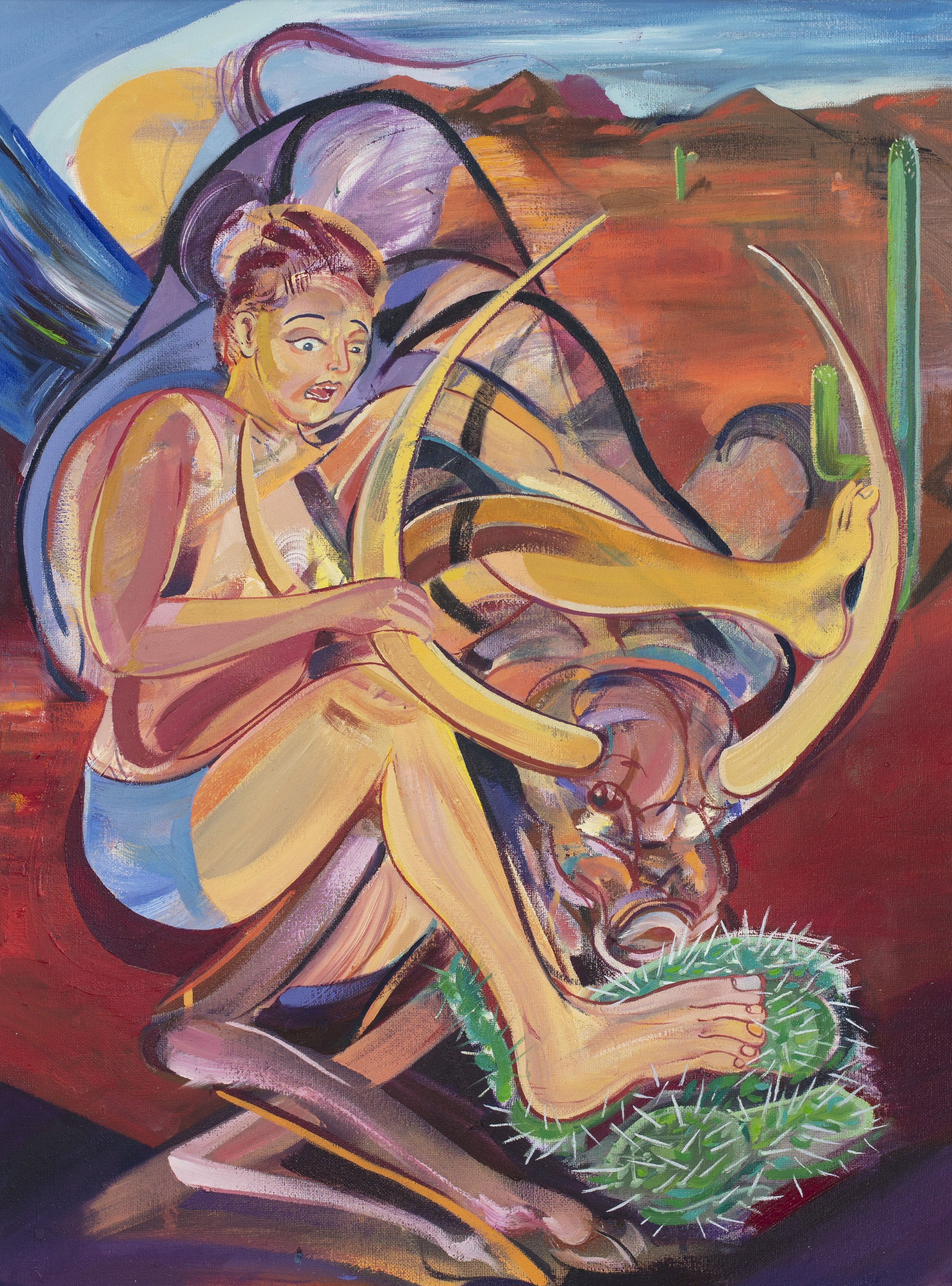
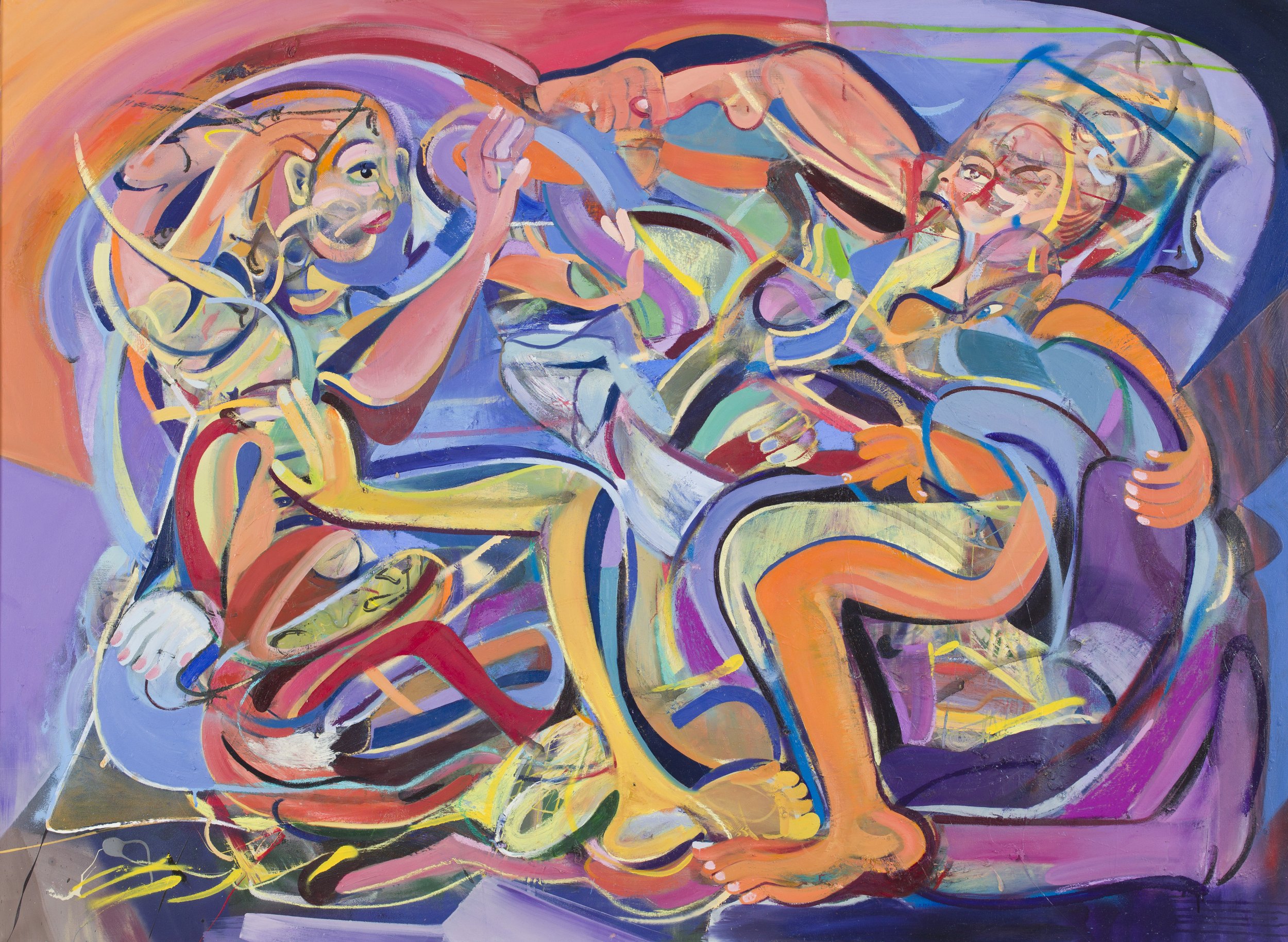
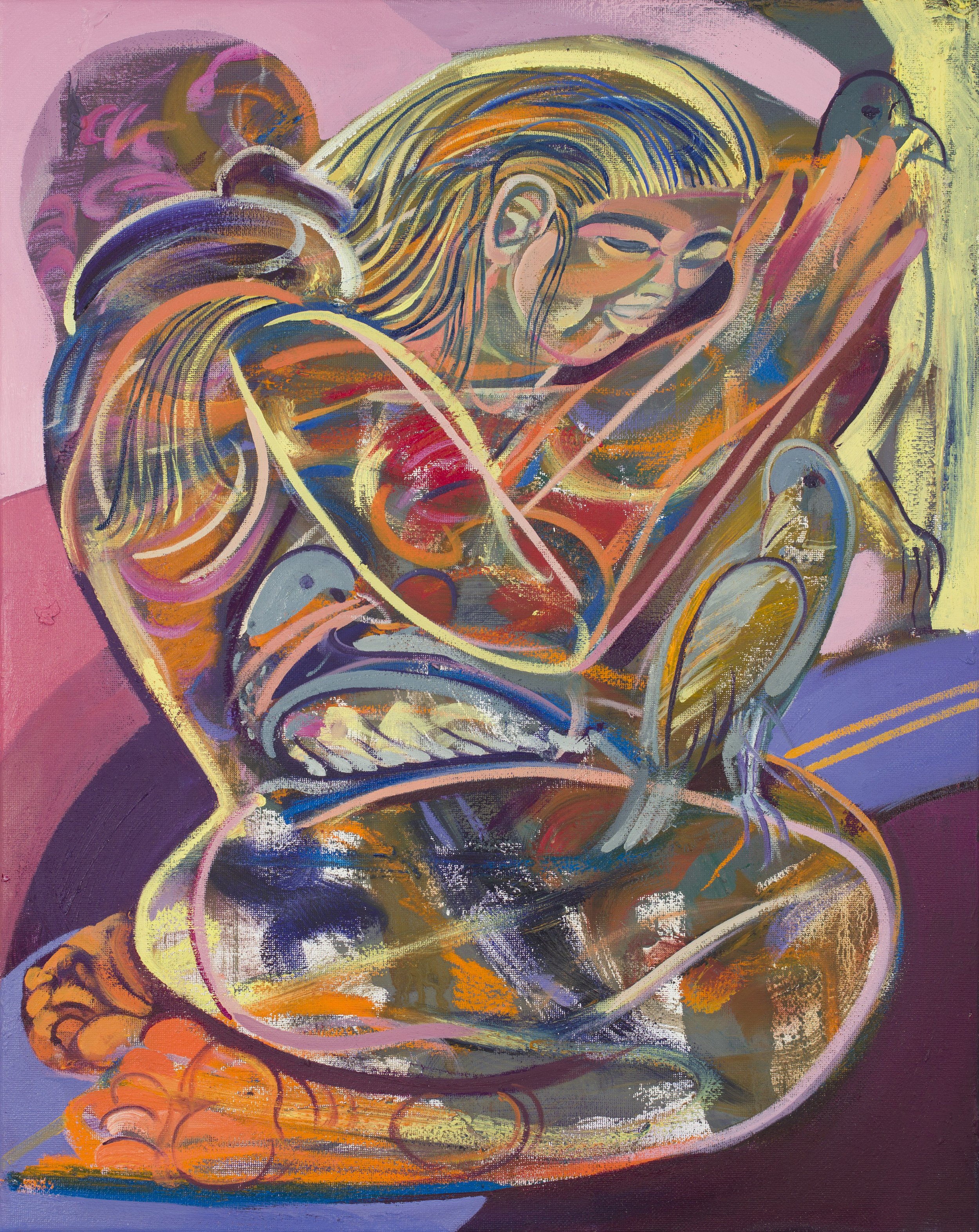
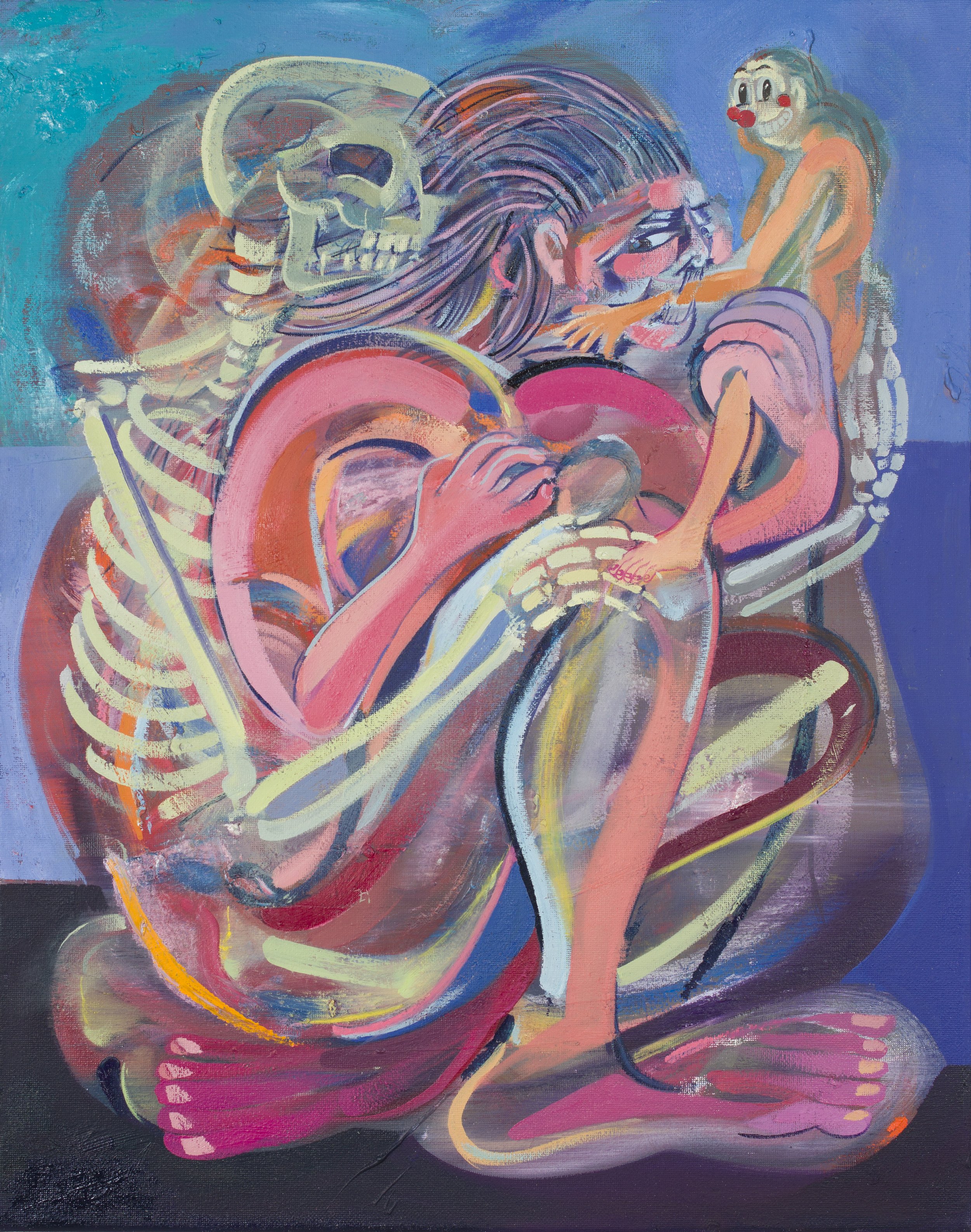
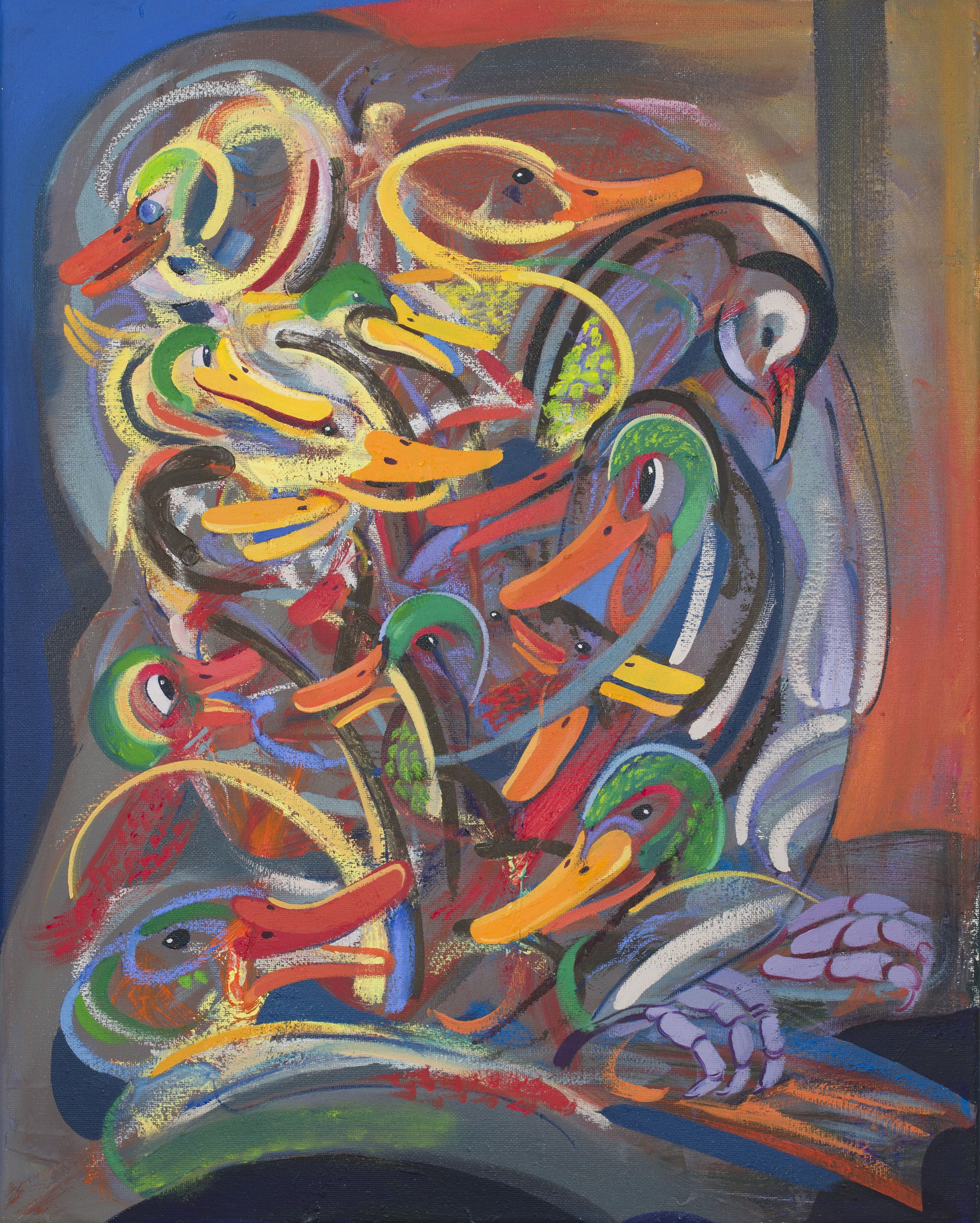
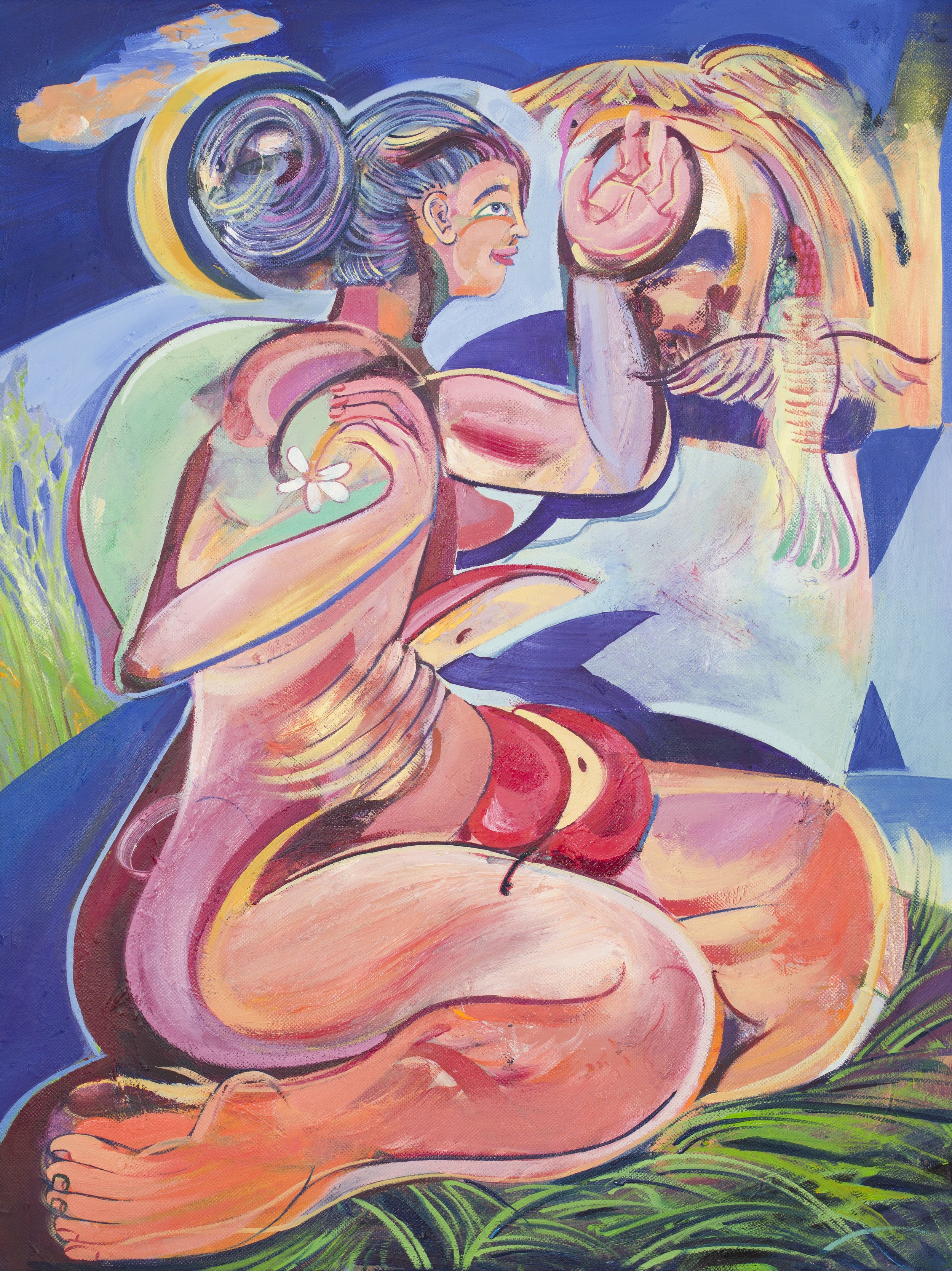
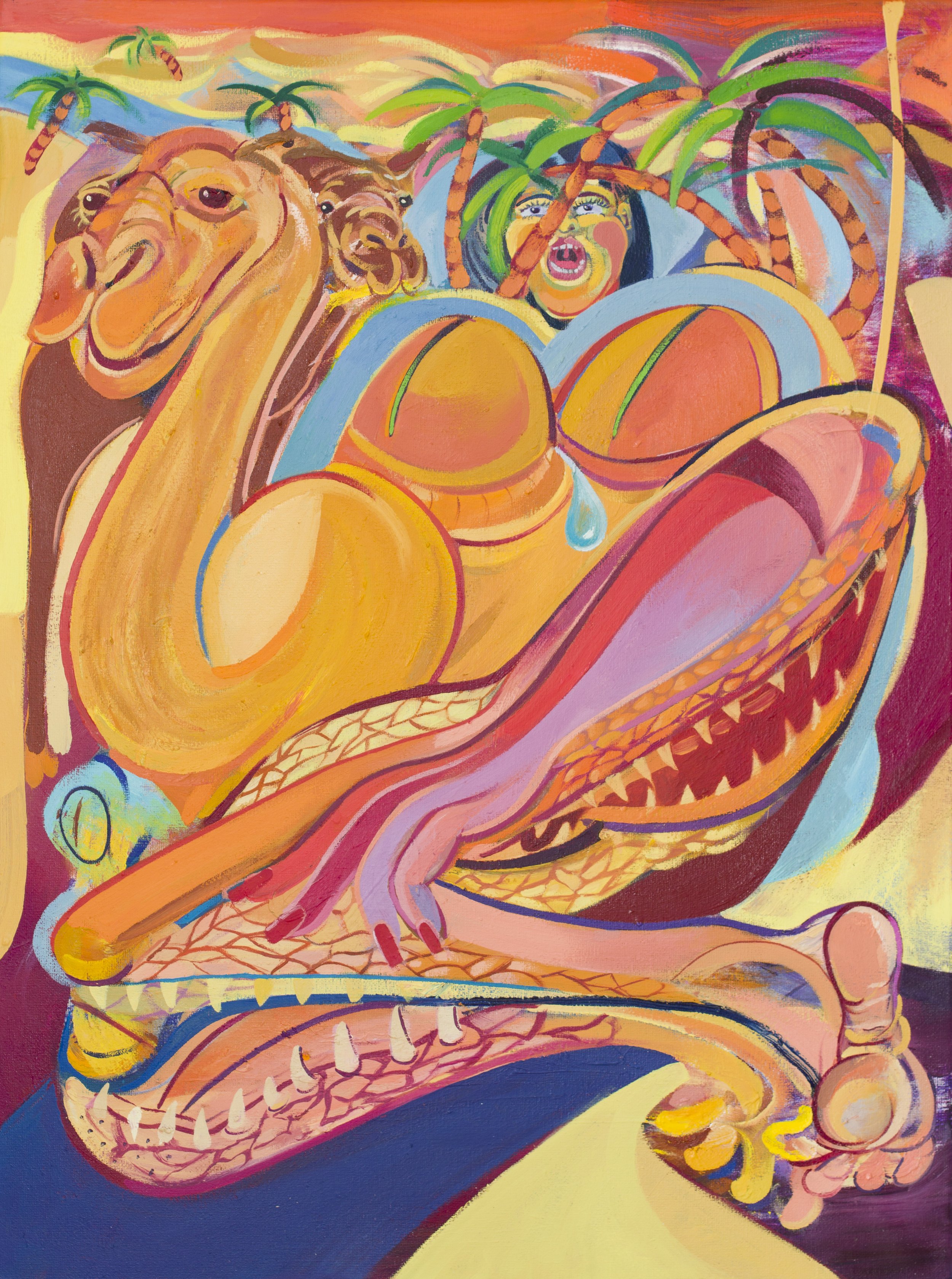
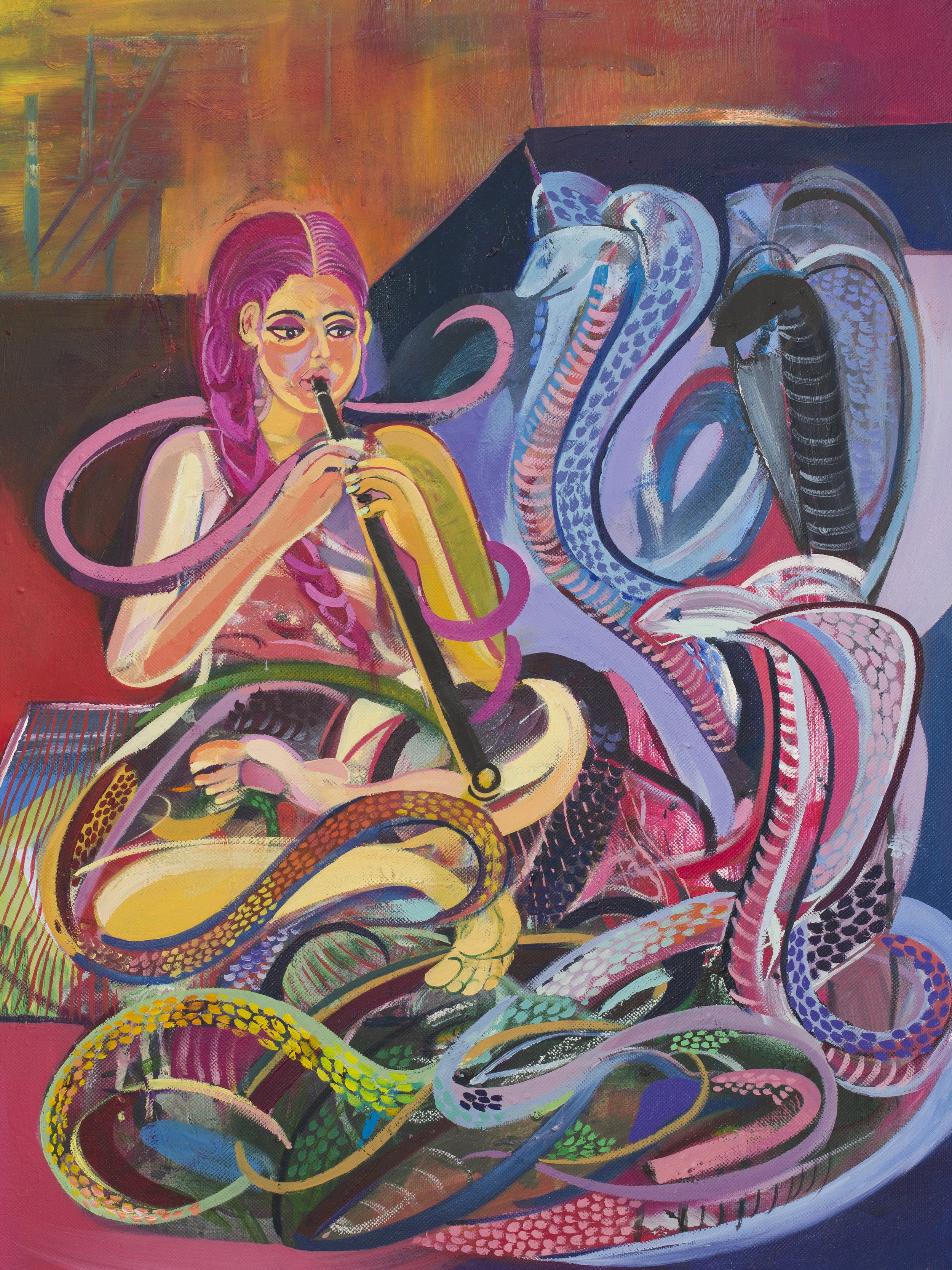
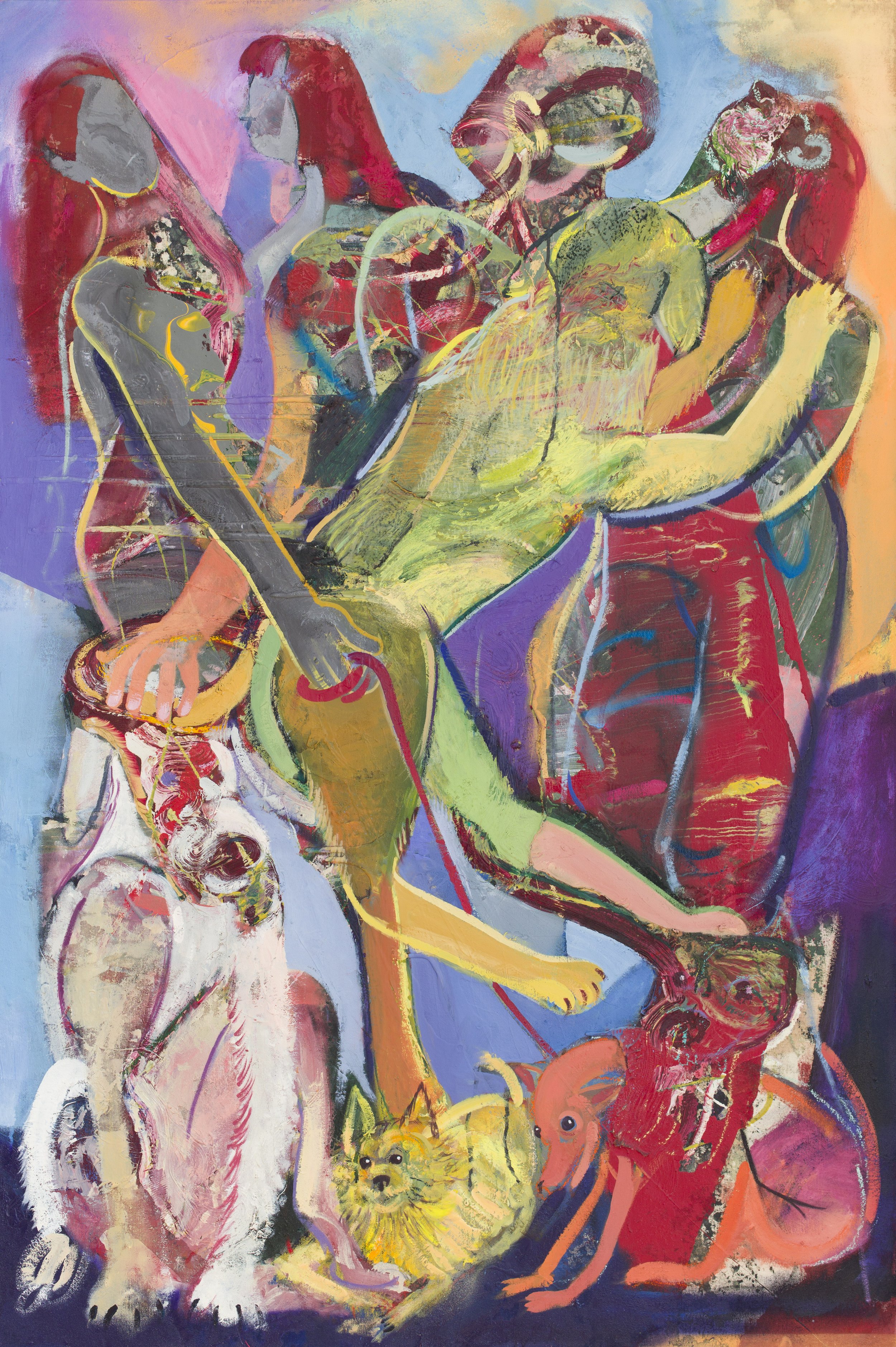
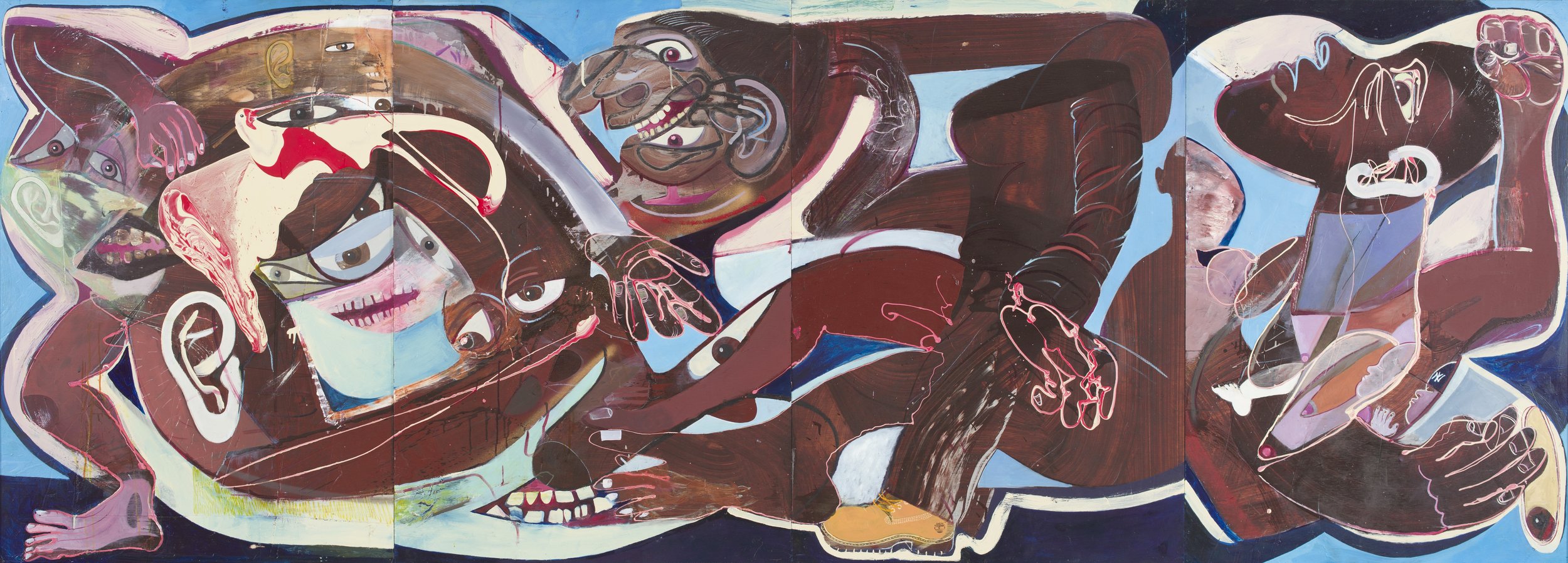
Photo Credit: Roman Dean
The push and pull between the layers of the work mirrors memory and imagination, where some moments are crystal clear while others fade into swirls of abstraction. Reyes’s works depict a range of subjects and archetypes, often intermingling figures with animals that suggest hidden desire, emotions, and the unconscious.
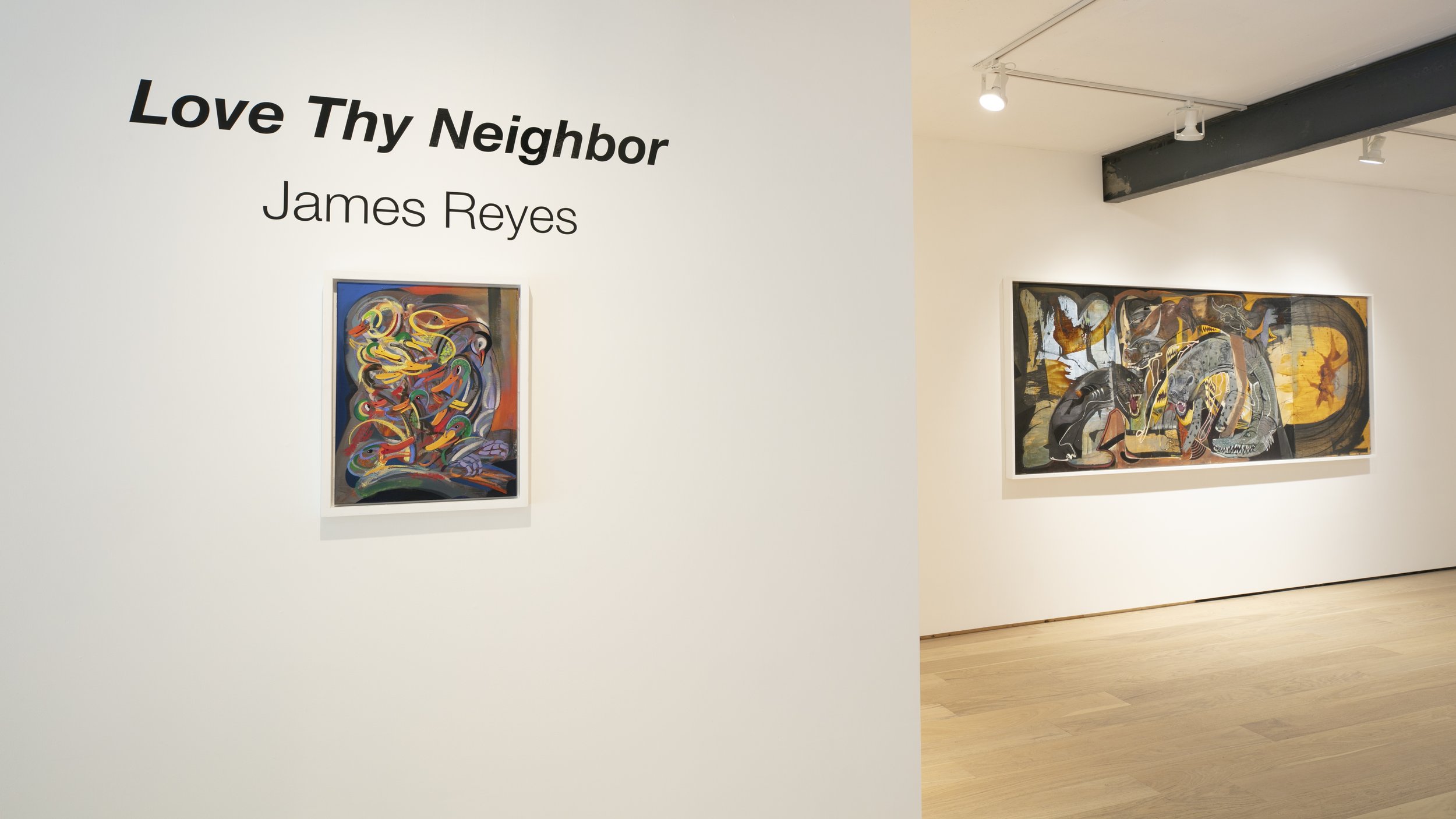
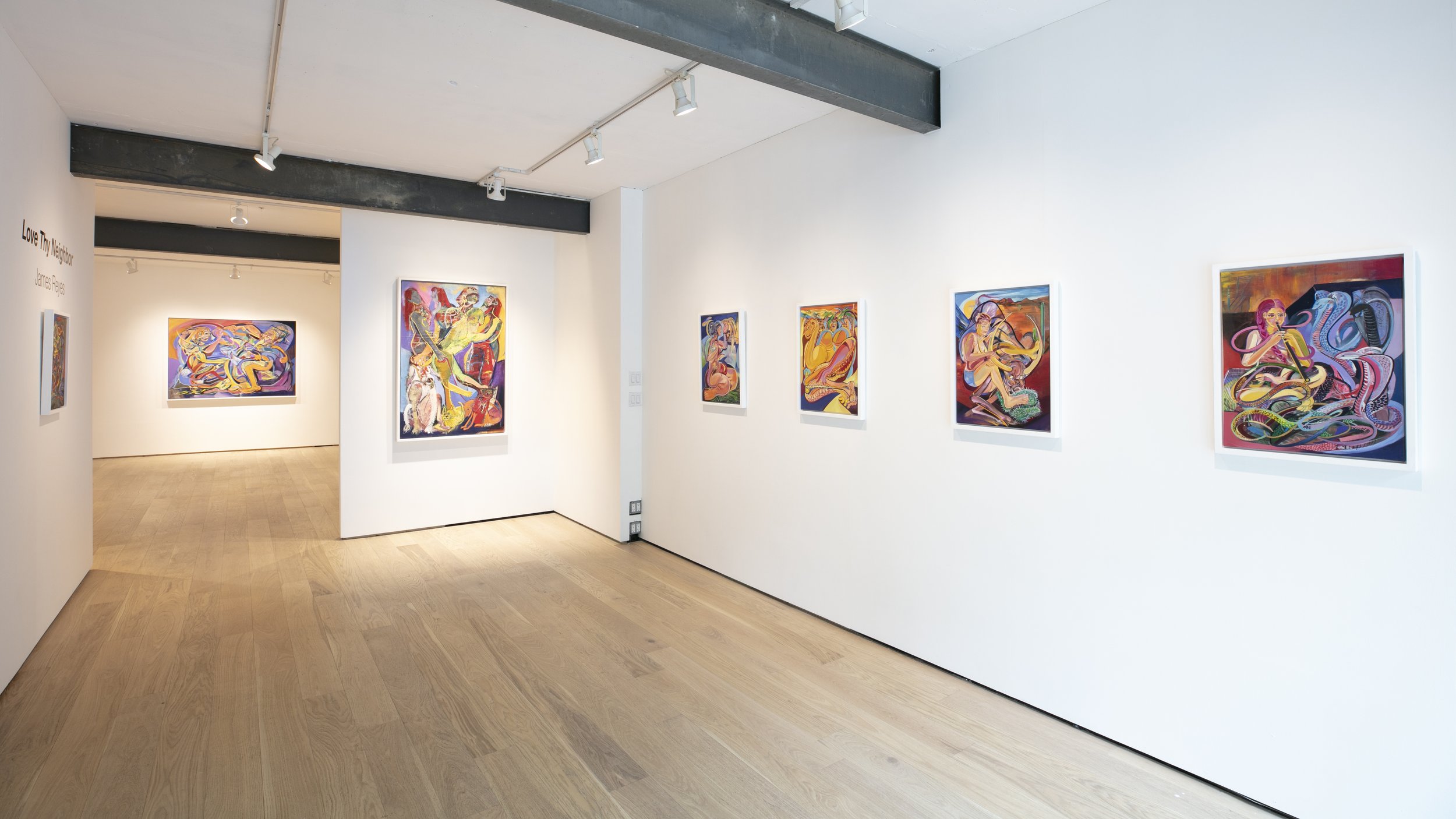
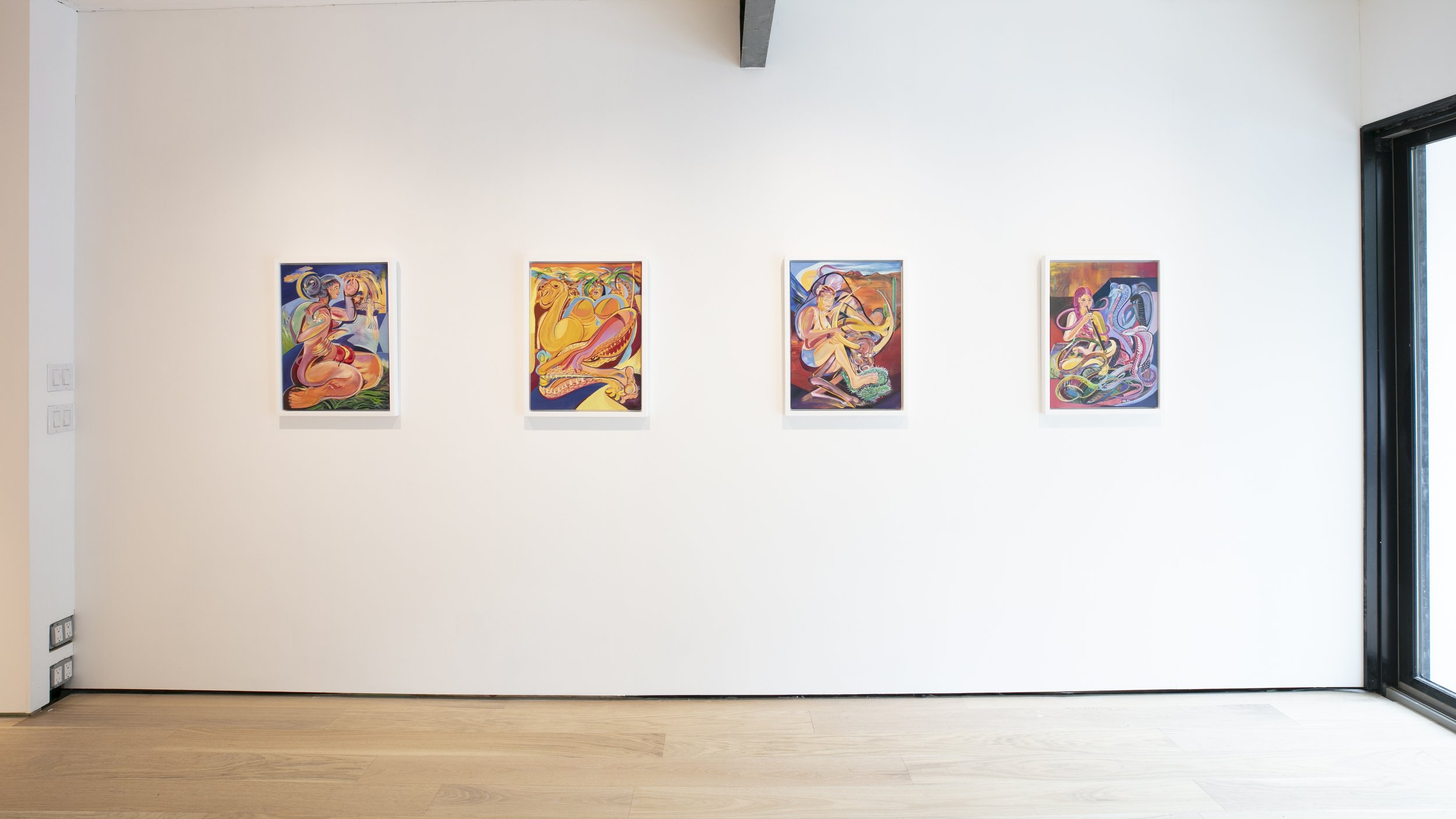
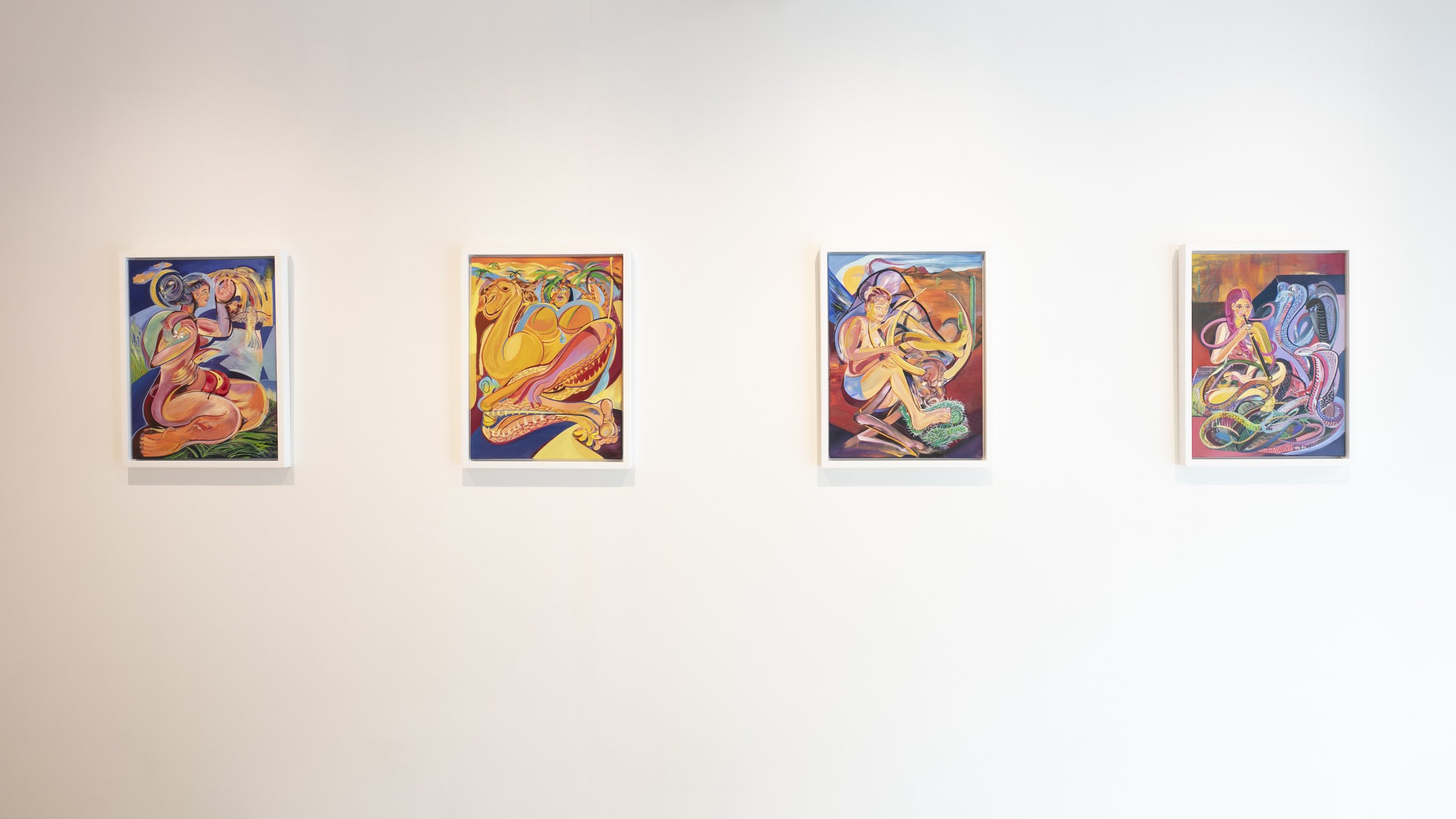
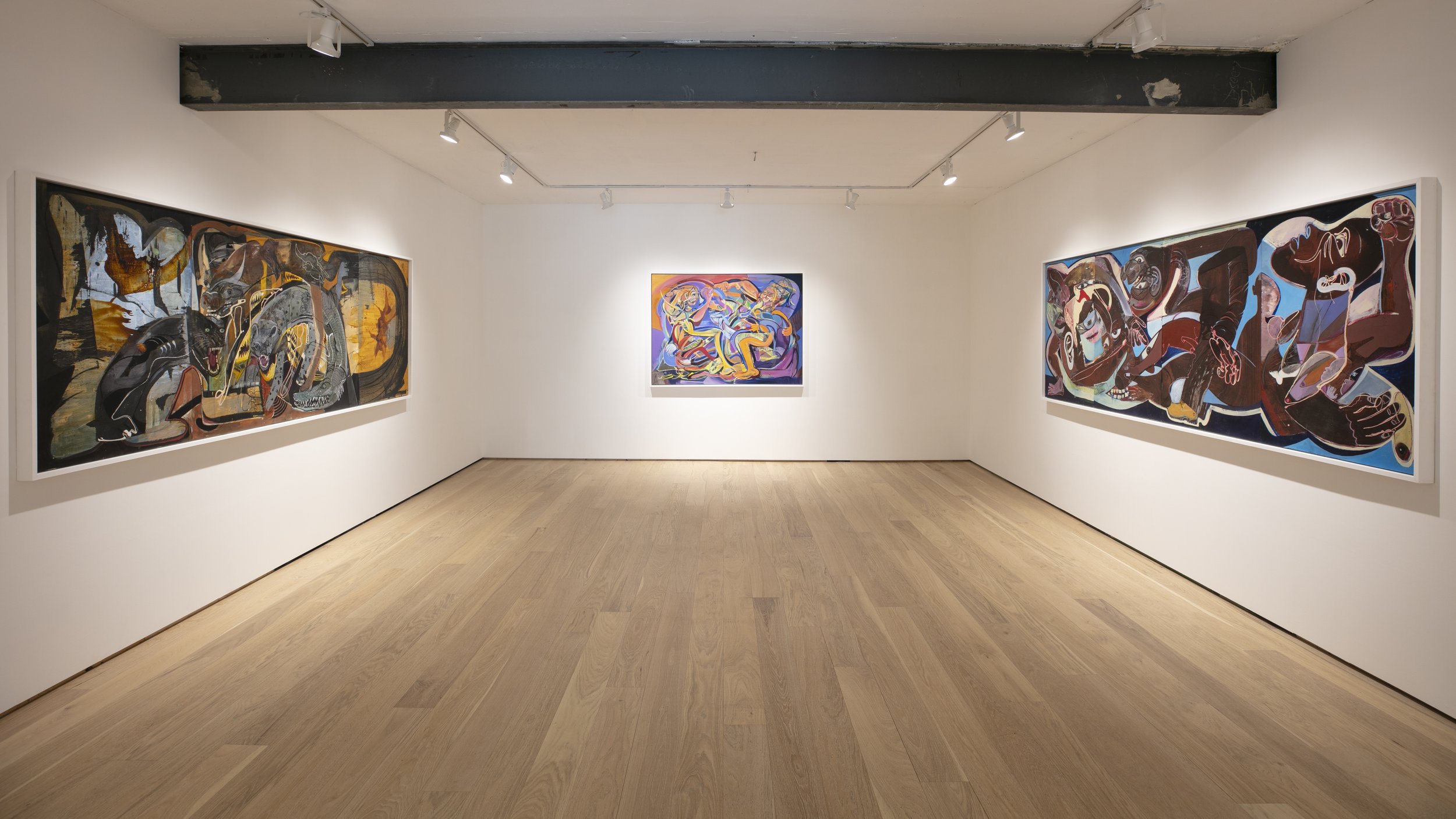

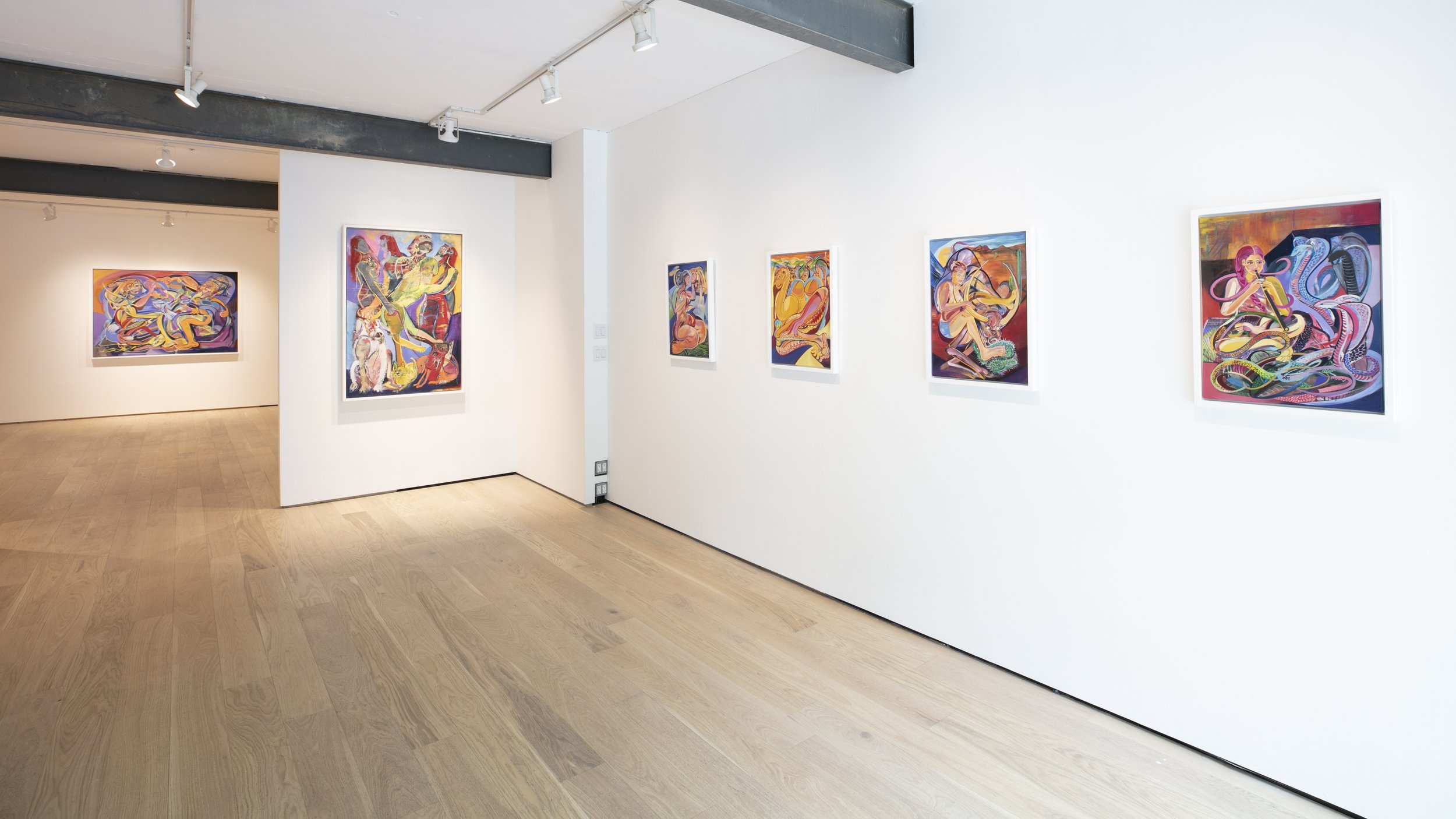
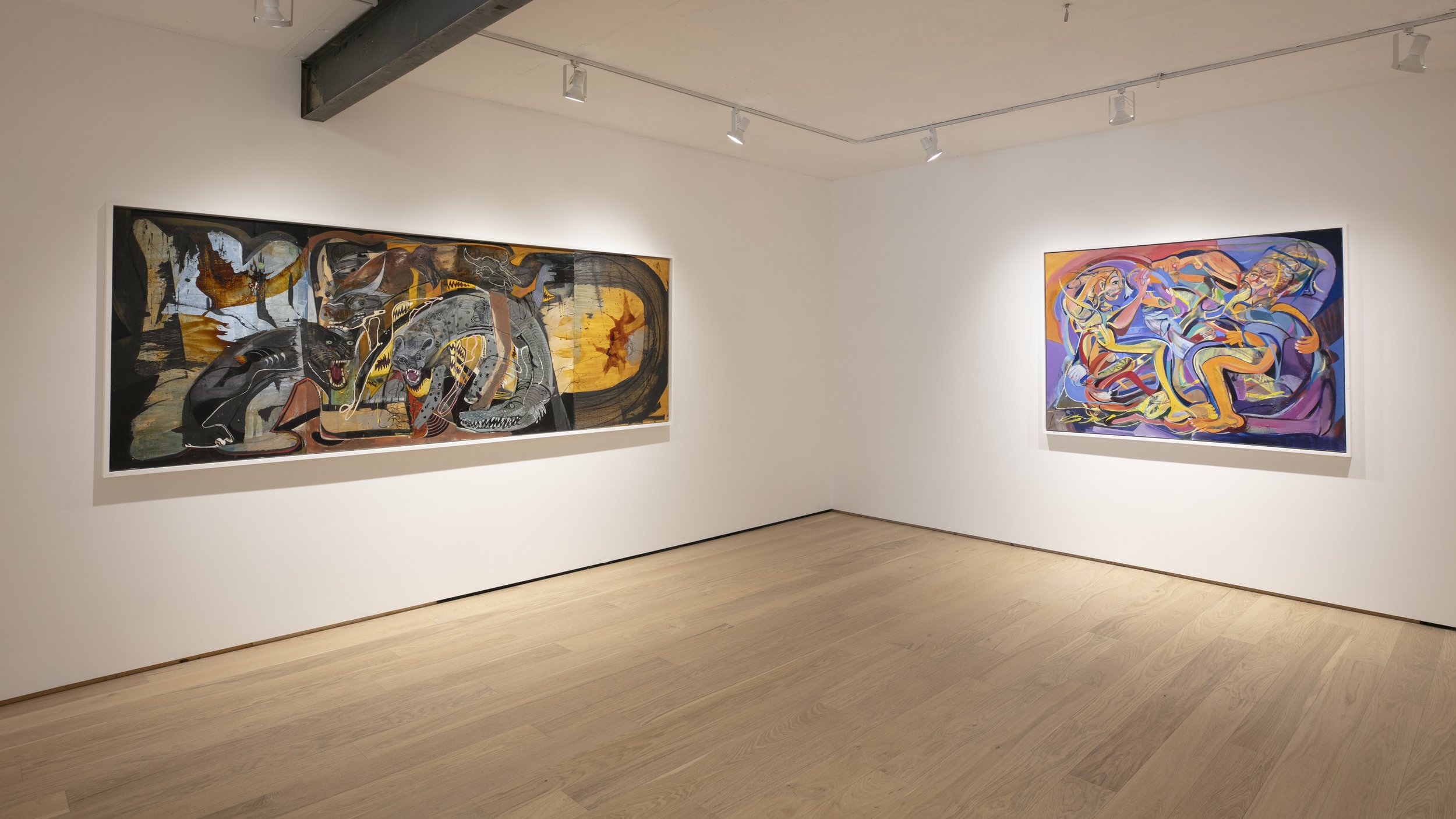
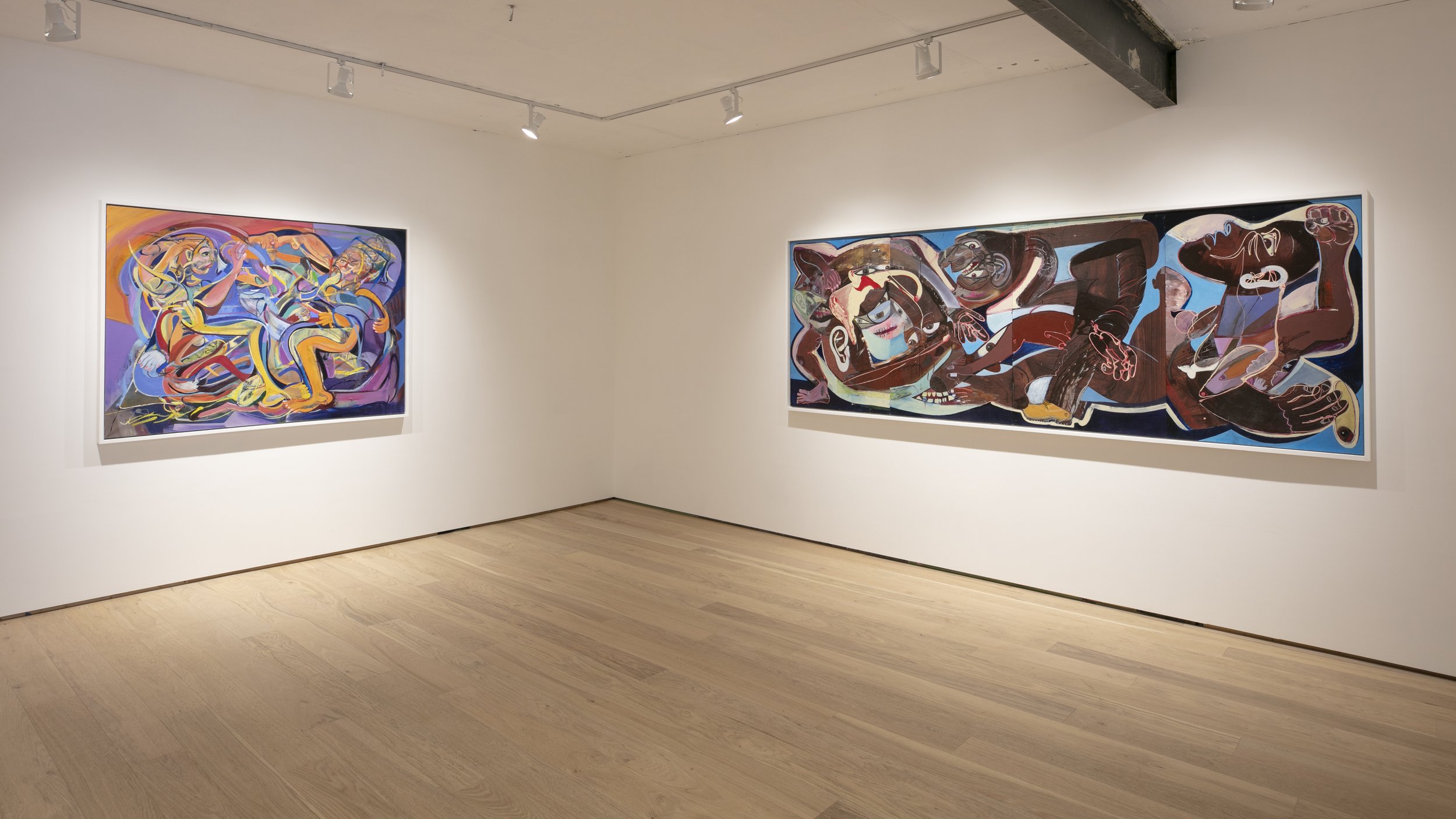
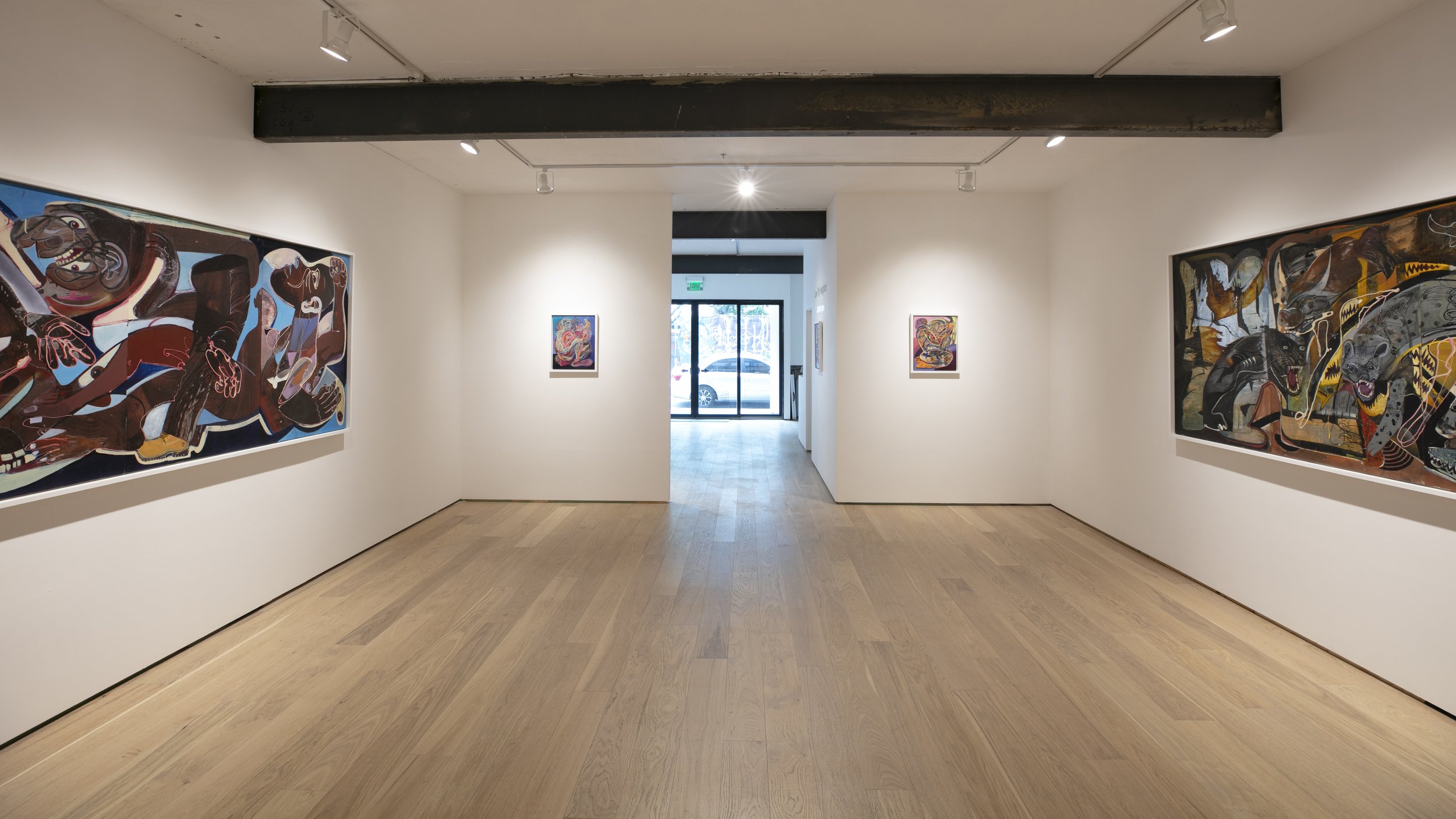

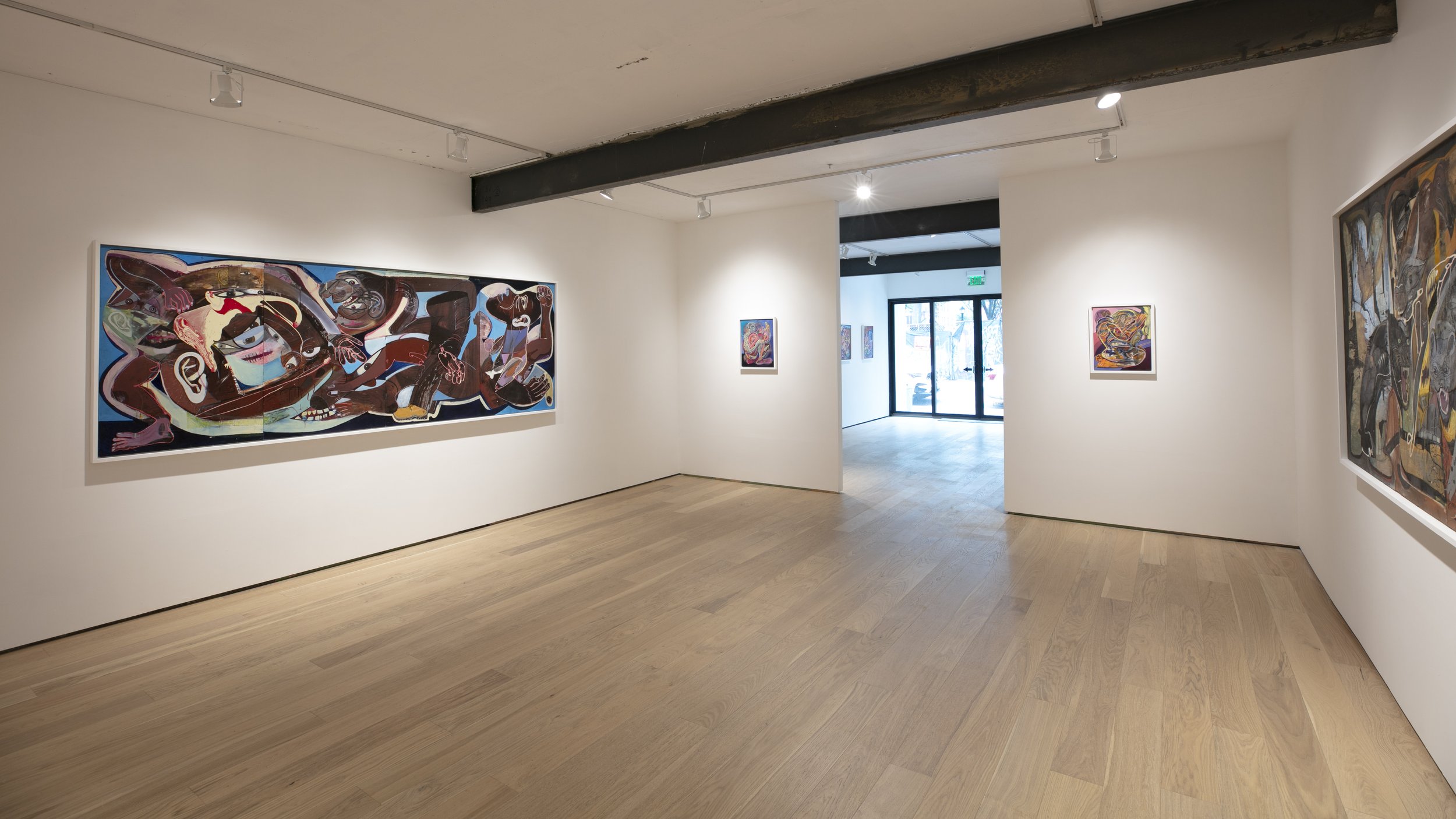
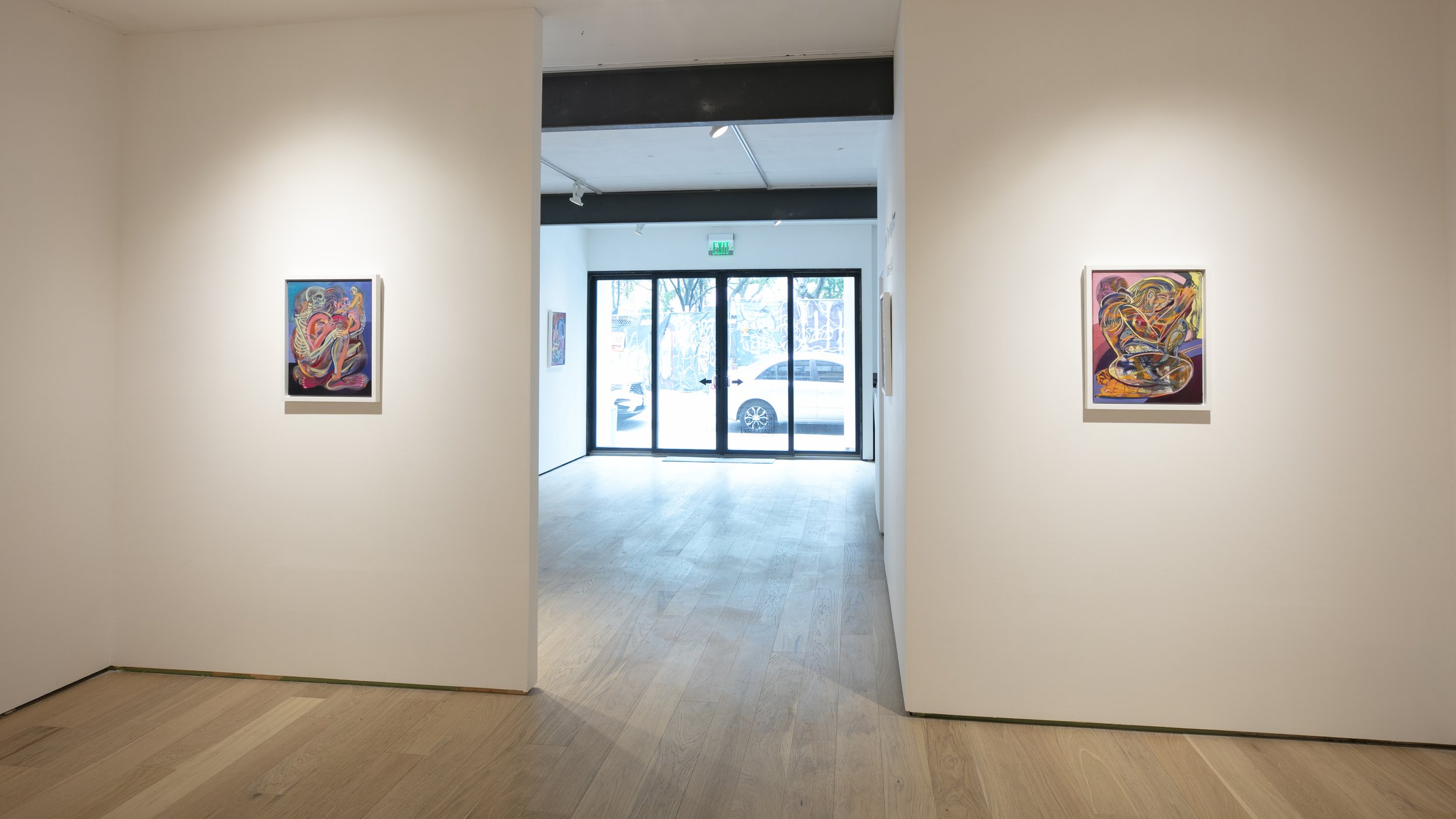

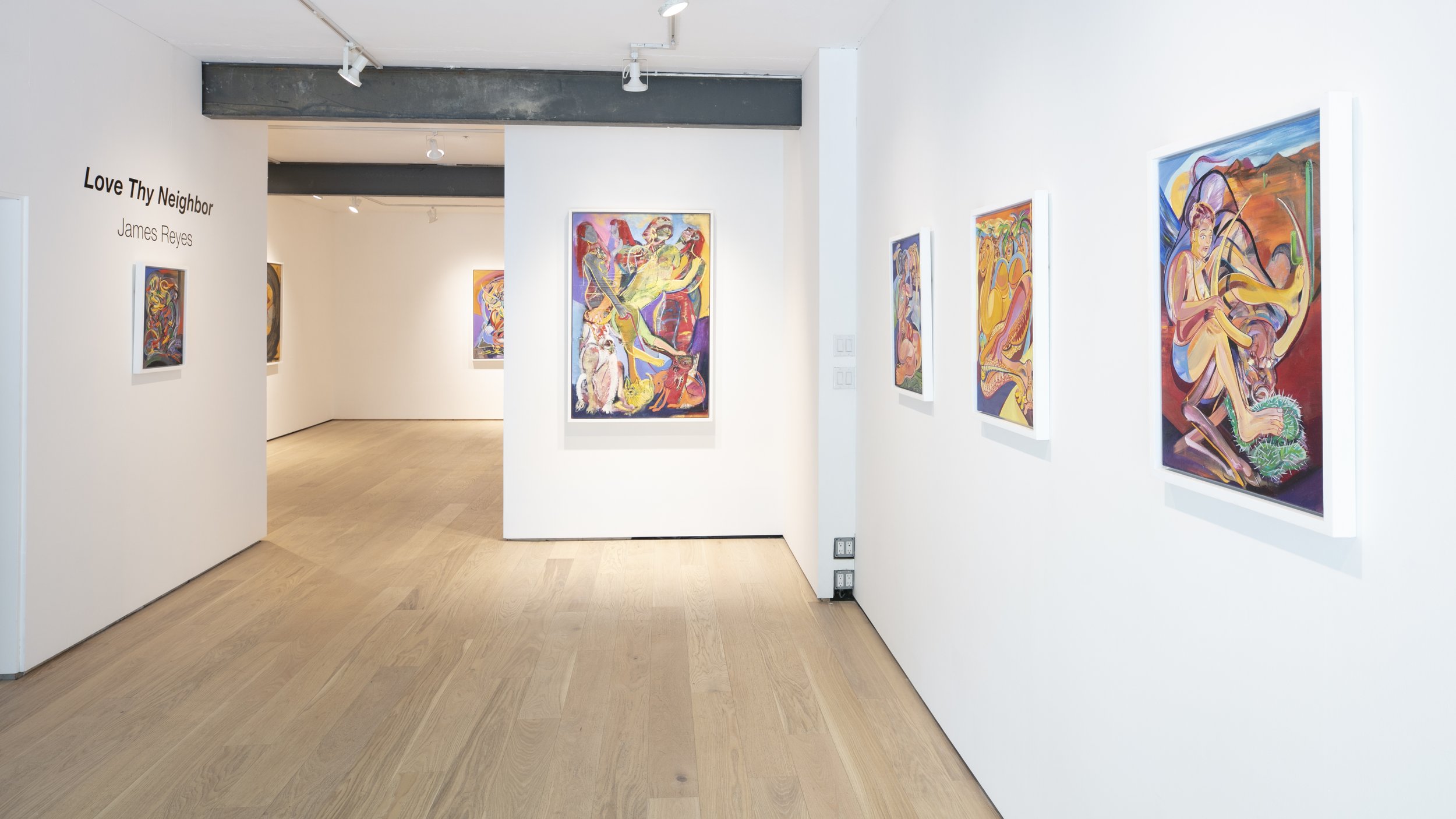
Photo Credit: Roman Dean
Please visit the Ki Smith Gallery's site for more information about James Reye’s exhibit.
Tectonic Worlds Collide in The Perfect Storm: A Collaborative Exhibition by Katrin Fridriks and Jan Kaláb
Courtesy of BC Gallery
Tectonic Worlds Collide in The Perfect Storm: A Collaborative Exhibition by Katrin Fridriks and Jan Kaláb at BC Gallery in Basel has been on display since June 1 and will conclude on September 16, 2023.
They say opposites attract, and similarities repel. However, some beg to differ, and in reality, mash-ups and diversity always create unique and beautiful creatures. This holds true and is the case proven with decadent artworks in the exhibition, The Perfect Storm, a quintessential collection by Katrin Fridriks and Jan Kaláb debuting at BC Gallery in Basel. Together, Katrin and Jan have found the ultimate sweet spot of their individual artistic expression to radiate into a new realm with breathtaking pieces evoking sensory stimulations where you can’t look away and become happily lost within its movements and colors. “Katrin and I spoke about collaborating on a project together a few years ago, and the timing was perfect when the opportunity came up for a duo show at BC Gallery in Basel. The significant similarities and clashes of our works made us think it could be an interesting match. In the beginning, we thought we would do just one or two collaborative paintings for this show, but this turned into a creative storm, and we ended up building the whole show out with more than twenty collaborative paintings.
Courtesy of BC Gallery
“We shipped the paintings back and forth between Katrin’s studio in the South of France and my studio in Prague. It was an absolute pleasure to work on Katrin’s splash paintings to create new depths in her spontaneous abstract figures and to elaborate her lines in my compositions. This project took us completely out of our comfort zones - challenging us immensely, and it was super fun. The results are beyond our expectations,” says Jan.
Director and Curator of BC Gallery Nick Bargzei further elaborates, “Having worked with Jan for several years and following and collecting Katrin Fridriks’ work for about the same time, the subject matter of their respective art was already familiar to the gallery. The integrity and trust between Katrin and Jan are extraordinarily rare and a sight unseen”.
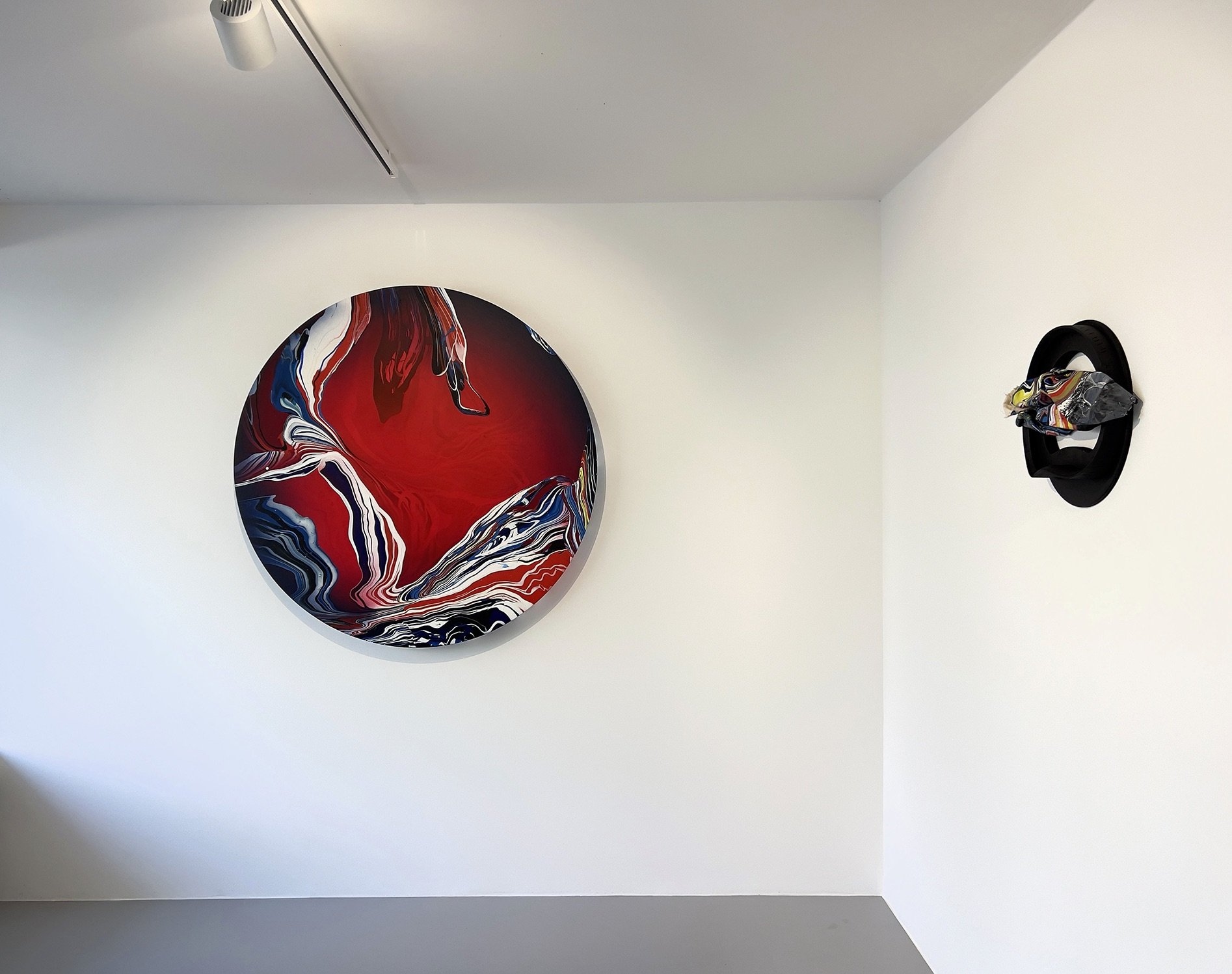
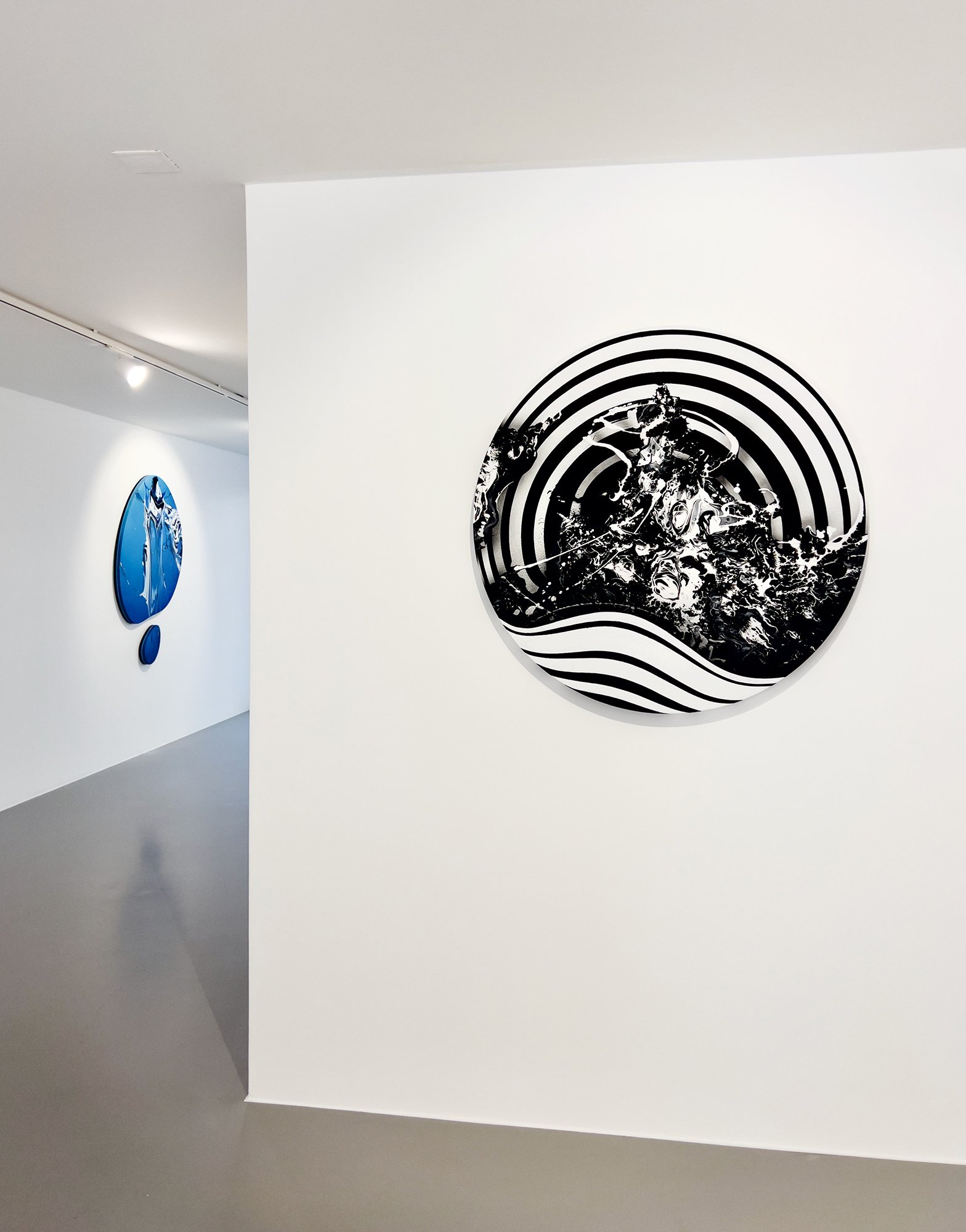
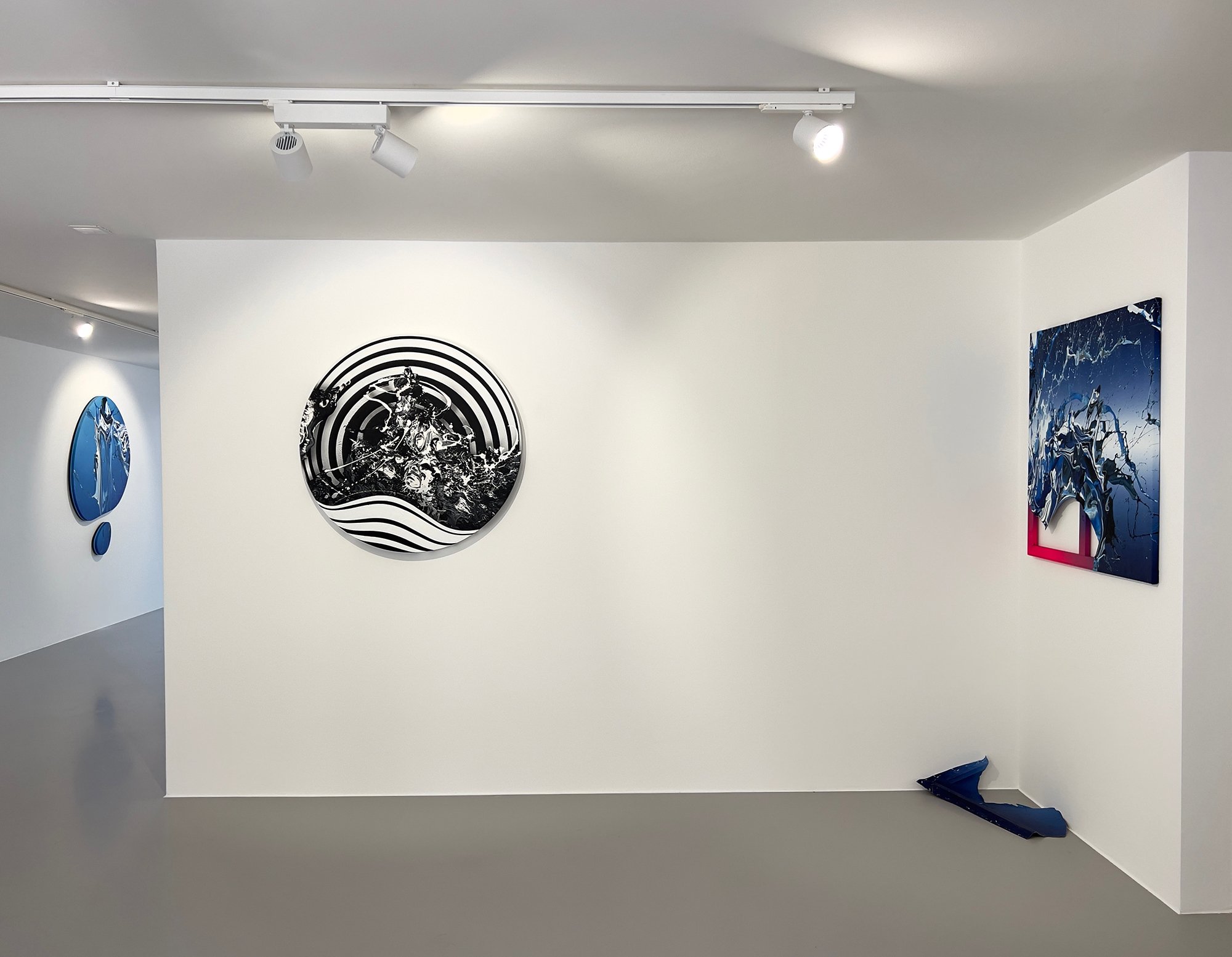
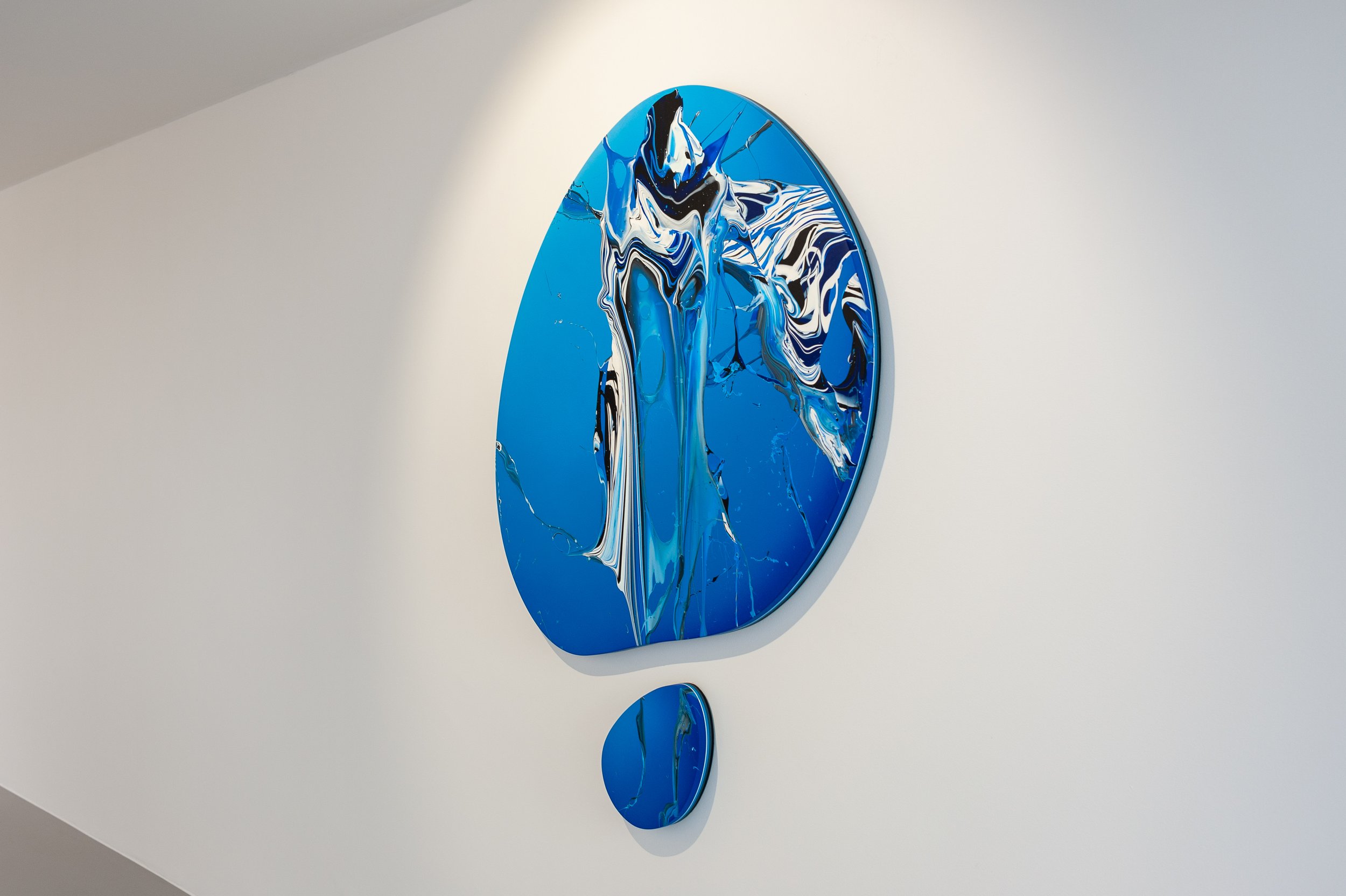





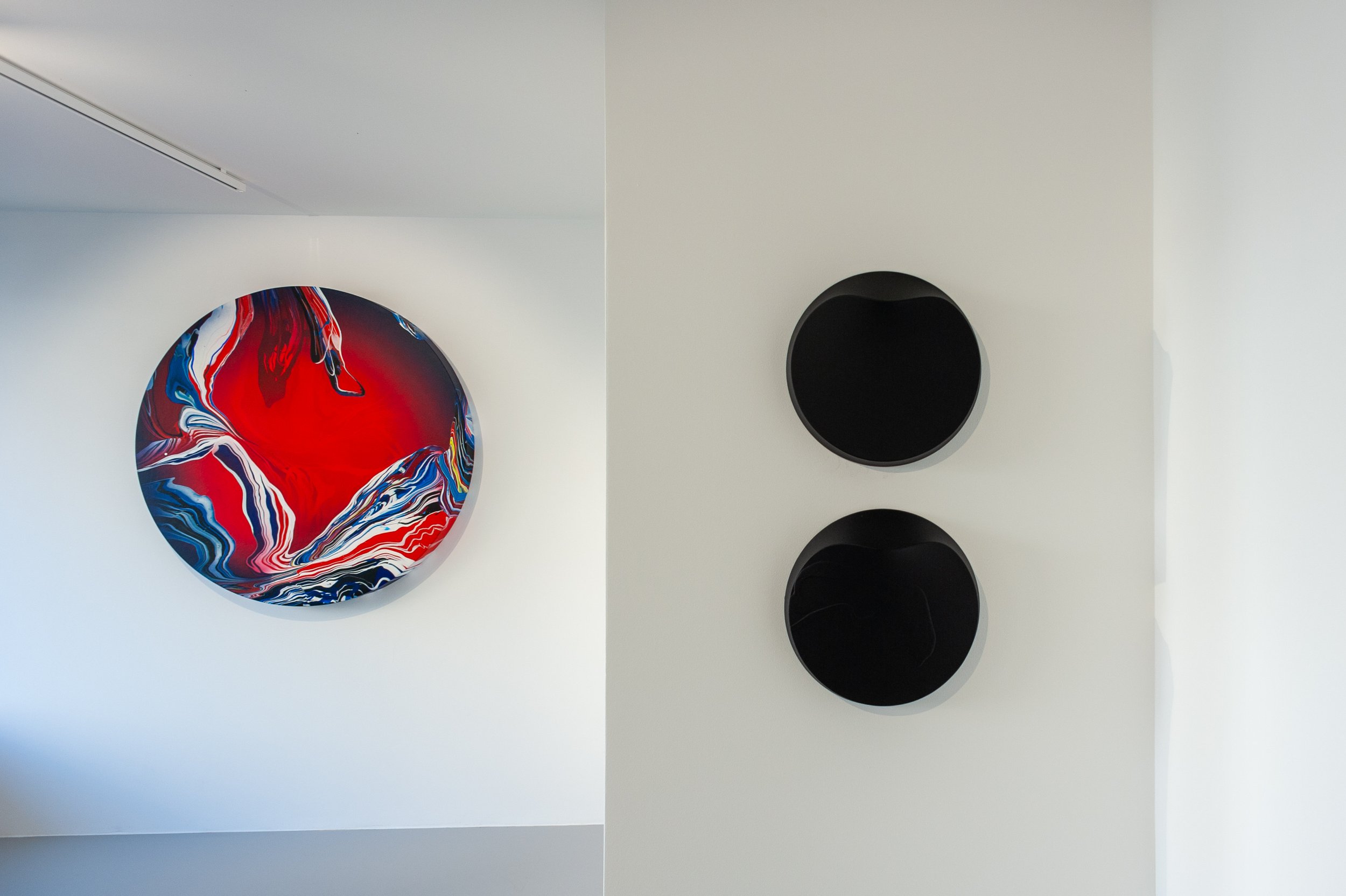
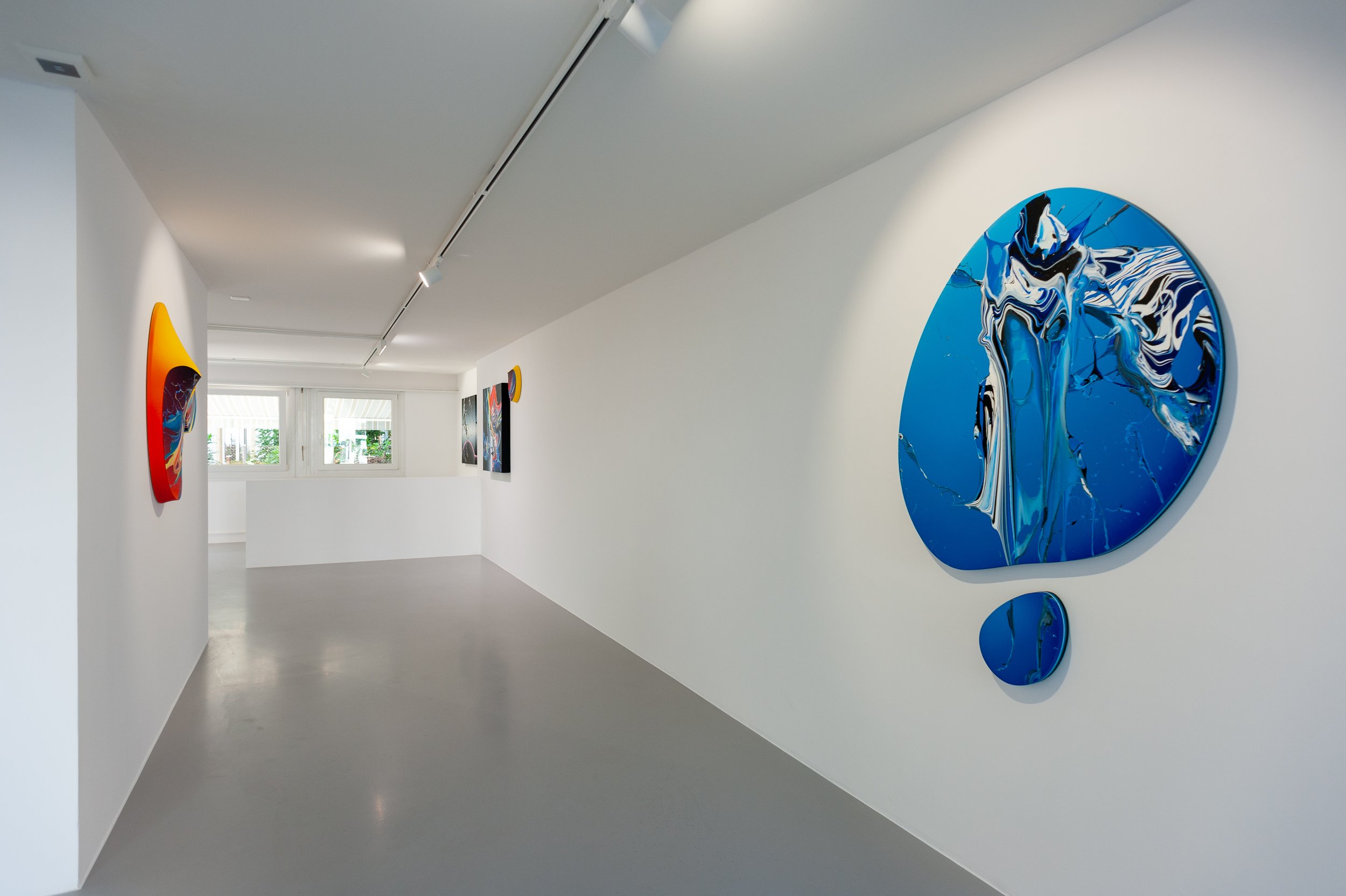
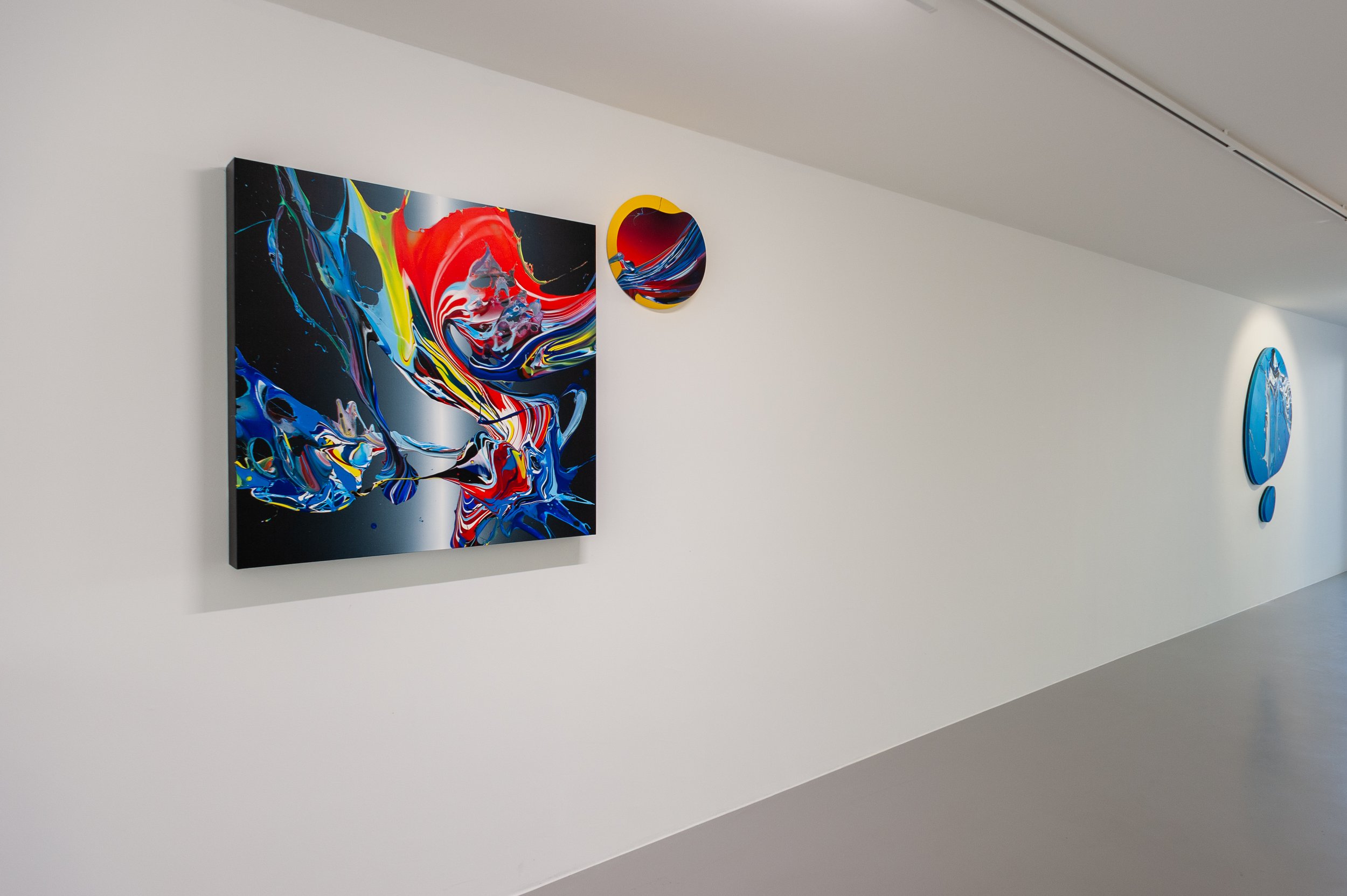
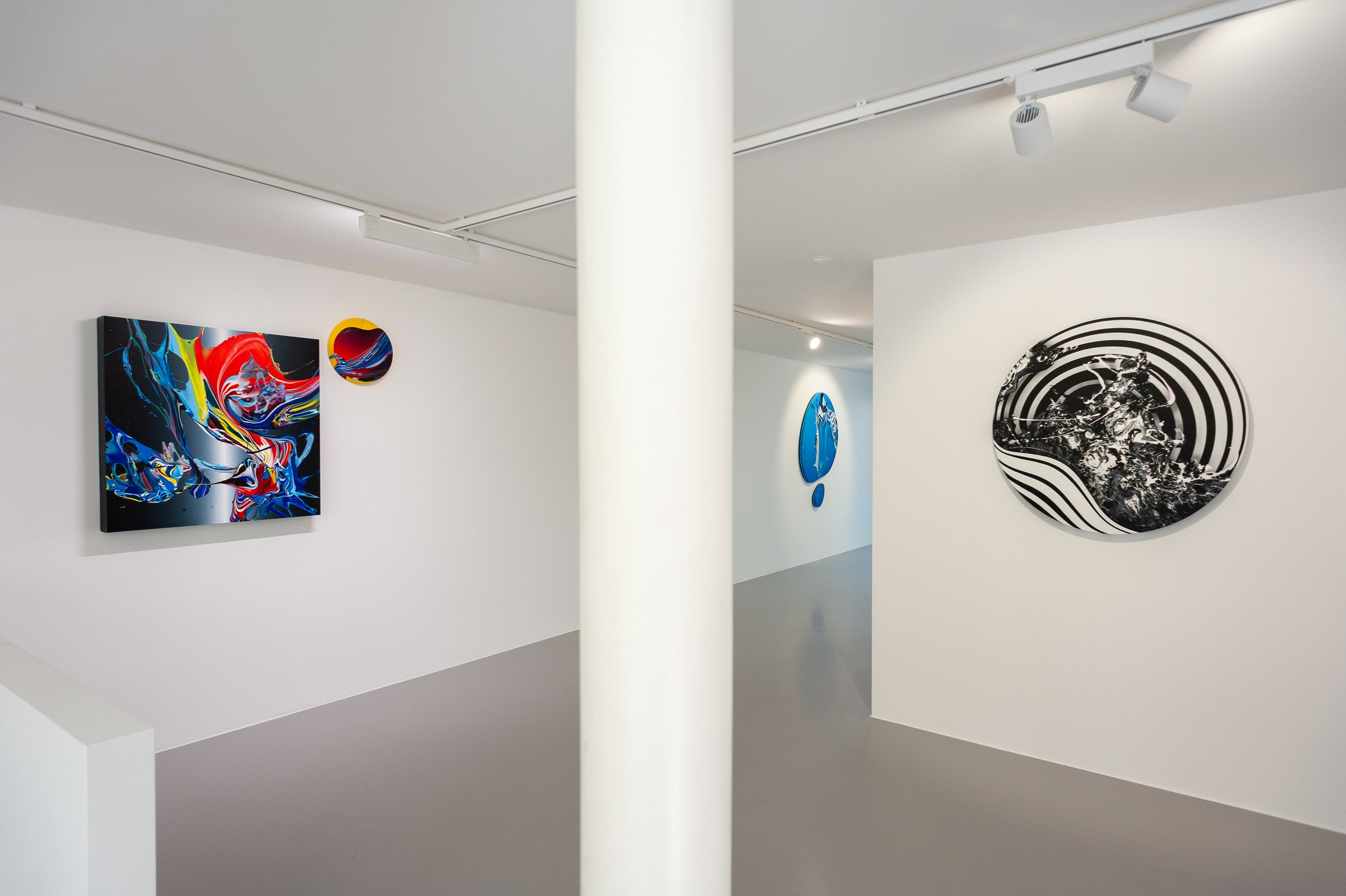
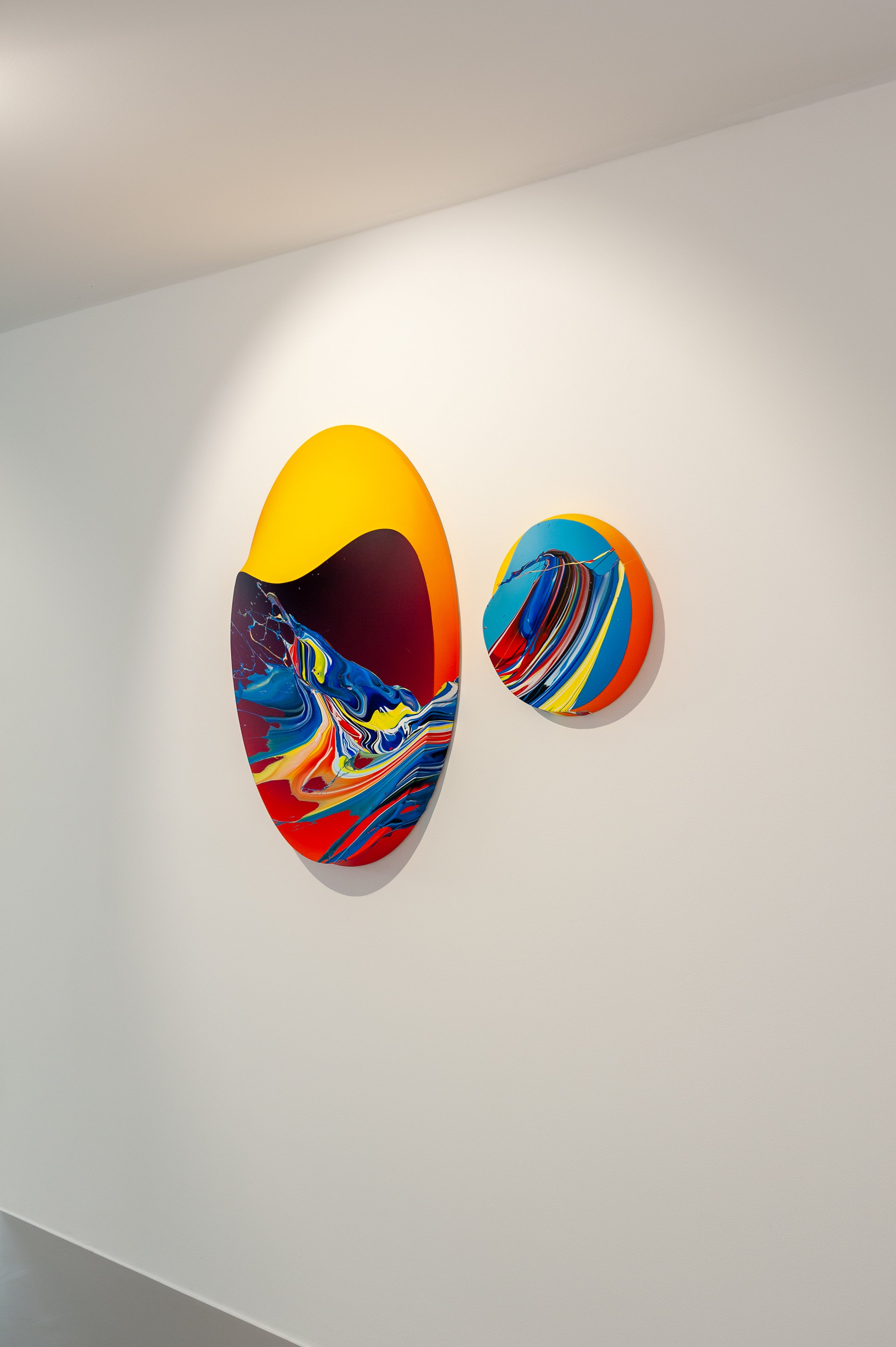
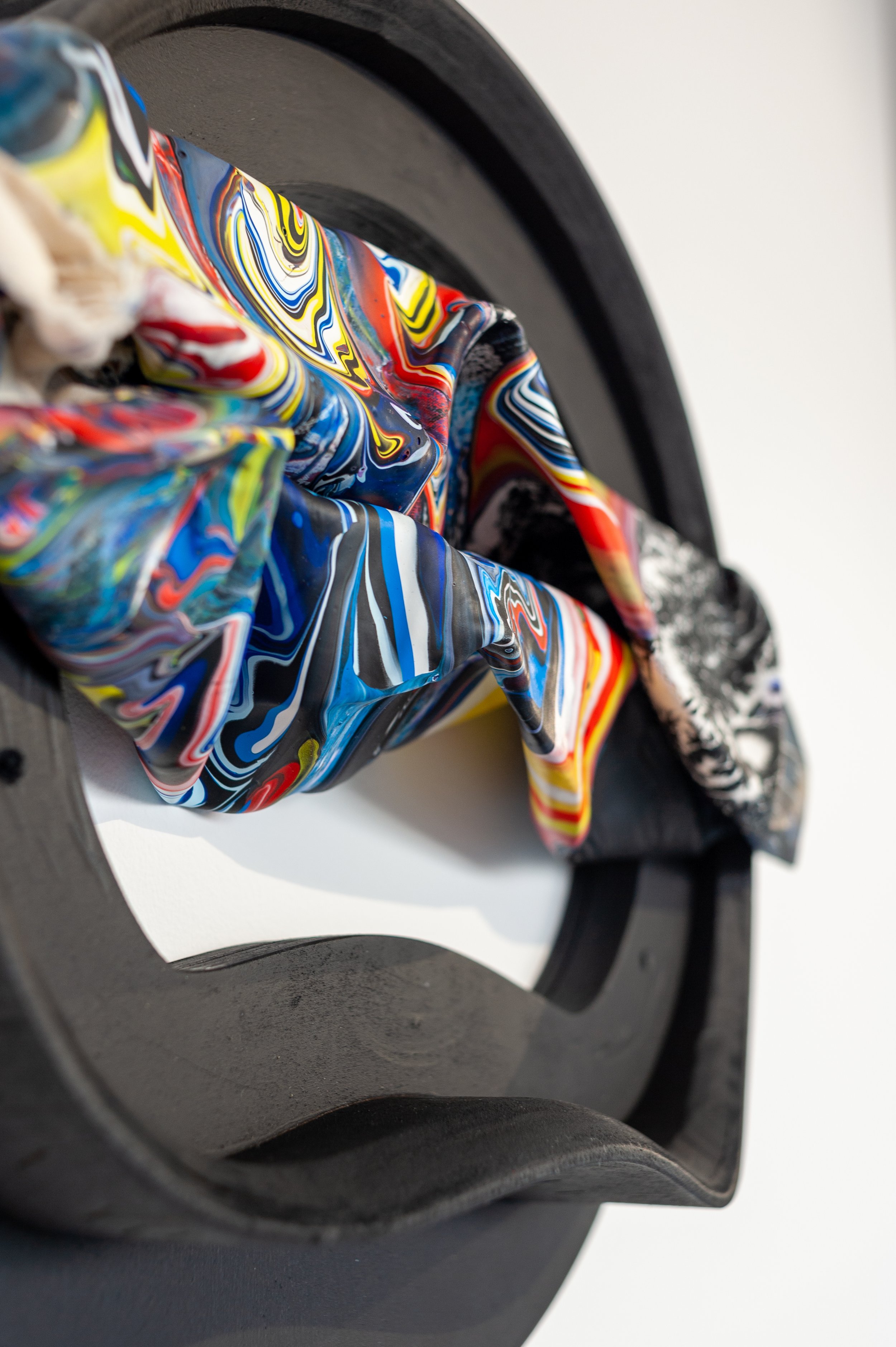
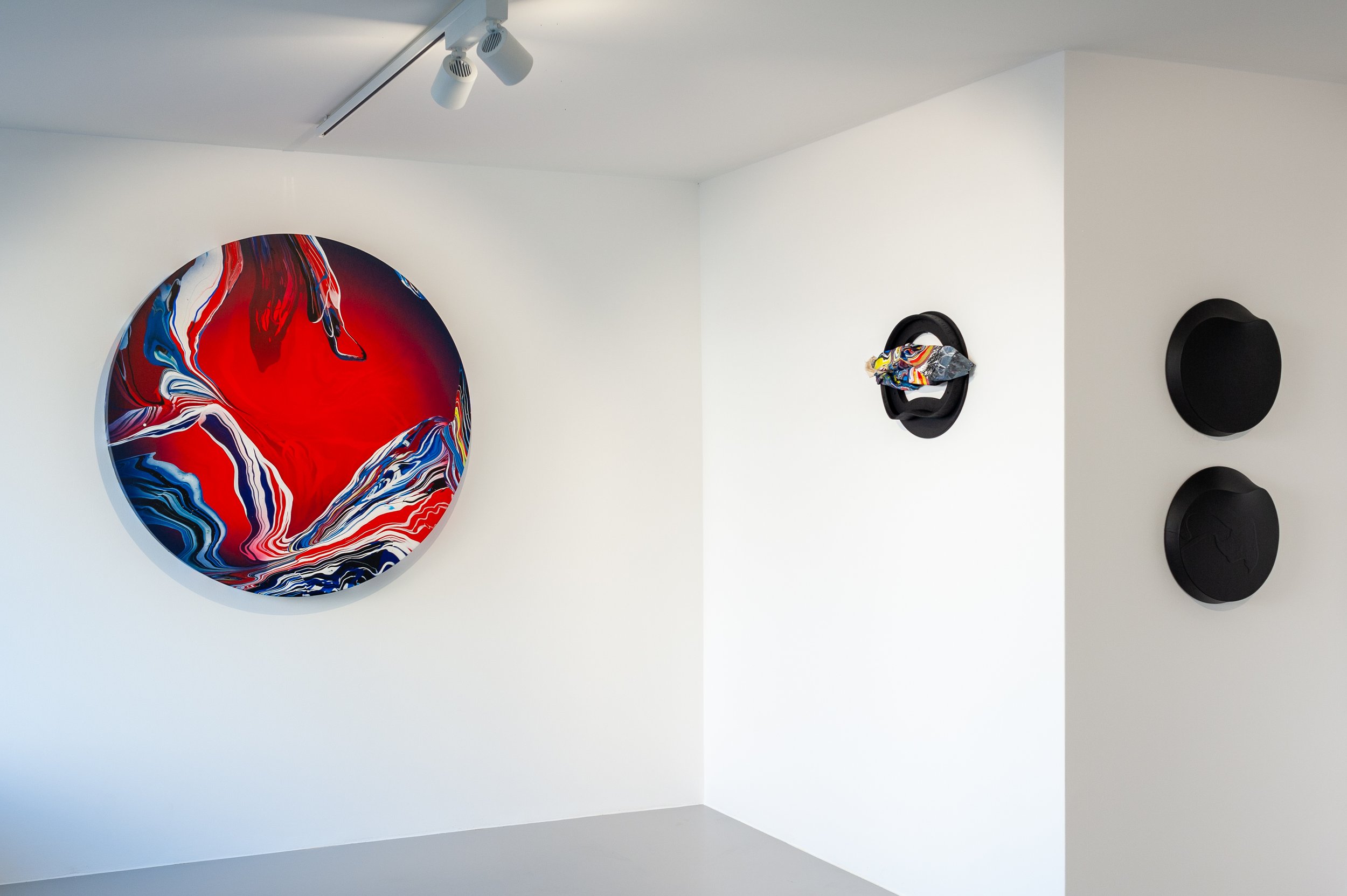
Courtesy of BC Gallery
“To send a whole body of work to another artist, countless hours of labor, powerless in the hands of another miles away in another country with no margin of error - whom, yes, you know of, follow, and respect in his or her work, however, only met once - to continue working on was unprecedented in the ten years of running the gallery. Needless to say, the experience of this collaboration was, at times, quite anxious and exciting, but most of all...inspiring, Jan adds!"
GALLERY DETAILS
Address:
BC Gallery
Spalenring 142, 4055
Basel, Switzerland
Hours:
By appointment only
Jan Kaláb was born in Czechoslovakia and is one of the country’s most notable contemporary artists today. His creative roots are based in graffiti, street art, and murals, and he is widely recognized among the founding pioneers of the Prague scene. Since then, Jan’s work has evolved to paintings, sculptures, and 3-D graffiti, and he has exhibited in high-profile galleries around the world, including New York, Miami, London, Paris, Shanghai, and Rio de Janeiro. He lives and creates in Prague.
ABOUT BC GALLERY
BC Gallery was founded in 2013 in Berlin and moved to Basel in 2020. Directed and curated by Nick Bargezi and co-curated by Sarah Fischer, the gallery features regular solo and group exhibitions by international contemporary artists as well as providing secondary market inventory and art consultation for collectors. Secondary market inventory includes artworks by Shepard Fairey, D-Face, Retna, Dran, Pejac, TLP, and more.
For more information, please visit BC Gallery’s site.
PIERRE ET GILLESLES COULEURS DU TEMPS
Pierre et Gilles have returned to Brussels for the first time since their spectacular 2017 retrospective at Musée d’Ixelles with their new series, Les couleurs du temps.
The works are jointly created by the two artists, Pierre as photographer and Gilles as painter. The exhibition is firmly anchored in the contemporary world, opening with a piece in homage to Ukraine, La promesse, in the war-torn country’s colors. Contrasting with the seriousness of the message, Pierre et Gilles produce a gallery of portraits that are now playful, now unsettling. References to sacred and religious icons abound. Carefully staged and more complex than ever, the portraits feature unknown as well as familiar faces, from Tahar Rahim to Silly Boy Blue. Together the artists invent new archetypes: young apollos surrounded by pink flamingos, eroticized biblical characters, cursed lovers, and nostalgic sailors.
Discreetly, almost imperceptibly, Pierre et Gilles evoke many of the questions facing society today, from sexual identity issues to the phenomena of social exclusion, religious tolerance, the war in Ukraine, global warming, and pollution of the oceans. The ambiguity of their art, lying somewhere between painting and photography, illusion and realism, offers a nuanced vehicle for conveying a message of tolerance in an era torn apart by conflicts and inequalities.
Toutes les images / All images : © Courtesy des artistes et Templon, Paris —Brussels — New York
Internationally renowned artists Pierre et Gilles have been producing art together since 1976. Their work has been the focus of numerous major exhibitions, including a retrospective at the Maison Européenne de la Photographie in Paris in 1996, New York’s New Museum in 2000, Museum of Contemporary Art in Shanghai in 2005, and Jeu de Paume in Paris in 2007. In 2017, a comprehensive retrospective entitled Clair-Obscur was held at the Brussels Musée d’Ixelles before moving to MuMa in Le Havre. 2018 they exhibited at the K Museum of Contemporary Art in Seoul. In 2019, two major exhibitions, La Fabrique des idoles at the Philharmonie de Paris - Cité de la Musique, Musée de la Musique and Le goût du cinéma at the La Malmaison art centre in Cannes, met with spectacular public and critical success. In 2022, their work was the subject of the Troubled Waters exhibition at the Spritmuseum in Stockholm.
PIERRE ET GILLESLES COULEURS DU TEMPS has been on view since May 4th and will be exhibited until the 22nd of July of this year. For more information about the exhibit, please visit Templon’s site.
ANTI-ICON: APOKALYPSIS by Martine Gutierrez
Aphrodite from ANTI-ICON: APOKALYPSIS, 2021 chromogenic print, hand-distressed welded aluminum frame © Martine Gutierrez, courtesy of the artist, RYAN LEE Gallery, New York, and Fraenkel Gallery, San Francisco
Fraenkel Gallery is pleased to present ANTI-ICON: APOKALYPSIS, a daring new body of work by artist Martine Gutierrez. The series continues her exploration of identity across the cultural landscapes of gender, race, and celebrity. In 17 new works, Gutierrez has transformed herself into a multitude of idols—a selection from the series comprises Gutierrez’s second exhibition with the gallery. Costumed by the barest of essentials, Gutierrez’s figure is the catalyst, reflecting dystopian futurism upon the symbols of our past. Through each metamorphosis, Gutierrez re-envisions a diverse canon of radical heroines who have achieved legendary cultural influence over thousands of years in both art history and pop culture.
Still a patriarchal language, a determinative frame. Still a divisional boundary of womanhood, a categorization of the icon, a spiritual reality in mass production. The same face of currency made over and over again. What is an icon, a cult image? Rather, what is an image? What brings a symbol to power? Culture is history’s political influence, a pendulum of domination. What is power without resistance? The historical moment, and the figure that stands in opposition. Icon as fact, a perceived understanding of truth in the world, teaching us how to see. Image as instruction; see, when an aspiration finds meaning it exceeds its boundaries, it becomes momentous. Larger than life or death, but rather the cycle between lives. Not a vision, but the place we are at now, the inevitable new, the next civilization we are going to become. In refusal of deception, an encounter with unobfuscated femininity is revealed. If the icon shows humanity’s spiritual ideal, it is the anti-icon who refuses the delusion of man, his inflated self-conception. For the icon makes real the image, anti-icon must break through to reveal reality. What is a revelation? A proclamation of clarity, a veneer stripped away, a shattering. It feels like the world is ending, because it did; it has before, and it will again end. What is the world? In the progress of nihilism, creation becomes resistance; a new image of what the world was all along.
– Martine Gutierrez
The project’s cult following began in 2021 when first commissioned by Public Art Fund. Ten images from the original series were chosen to circulate on bus shelters normally used for advertising. Pedestrians encountered the larger-than-life figures on their daily commutes in 300 locations across New York, Chicago, and Boston. Gutierrez adapted these images by veiling the publicly hung nude self-portraits, both delegating her autonomy and struggle in the ongoing political restrictions placed on women’s bodies in the United States.
This summer, Gutierrez will reveal ANTI-ICON: APOKALYPSIS in three distinct selections set to preview across three venues: Fraenkel Gallery, San Francisco; RYAN LEE Gallery, New York; and Josh Lilley, London. The three-gallery exhibition will be accompanied by a new artist book, published by RYAN LEE, entitled APOKALYPSIS. The full collection of 17 portraits will be presented in its entirety for the first time in a traveling museum show organized by Polygon Gallery, Vancouver, slated for 2024.
Gutierrez is the sole performer in the series, portraying all 17 groundbreaking figures: Aphrodite, ancient Greek goddess of love, desire and beauty, identified by the Romans as ‘Venus’; Ardhanarishvara, composite male-female figure of the Hindu god Shiva together with his consort Parvati; Atargatis, Syrian mother goddess of fertility and the moon; Cleopatra, Egyptian ruler famed for her influence on Roman politics; Queen Elizabeth I, England’s second female monarch when the country asserted itself as a major power in politics, commerce, and the arts in the 16th century; Gabriel, angel in the Abrahamic religions believed by many to be able to take on any physical form; Helen of Troy, Greek beauty seen as the cause of the Trojan war; Joan of Arc, sainted heroine of France, revered as a holy person for her faithfulness and bravery in battle, burned at the stake by the church; Judith The Slayer, courageous biblical widow who used her charm to save her people from an Assyrian general; Lady Godiva, bold noblewoman from the Medieval period who fought for justice for everyday people; Our Lady of Guadalupe, Mesoamerican Catholic title of Mary, who appeared to the Indigenous man Juan Diego and imprinted herself on his cloak as proof of her visitation; Mary Magdalene, ‘Magdalene’ means tower, as she is an early tower of the Christian faith, cited in the four canonical gospels as a follower and companion of Jesus Christ, a witness to his crucifixion and resurrection; The Virgin Mary, a young Jewish virgin from Nazareth, chosen by God to conceive Jesus through the Holy Spirit; La Madonna, Italian for ‘Lady, Virgin Mary’, central figure of Christianity, celebrated as the ‘Virgin Queen’ in processions of Semana Santa, throughout Spain and Latin America; Hua Mulan, famed warrior of Chinese folklore who disguised herself as a man to fight in battle; Sacagawea, Shoshone interpreter and guide of the expedition to discover routes through pre-colonial America, journaled by Lewis and Clark; Queen of Sheba, Ethiopian queen, known for her wit, power, and wealth, her romance with King Solomon is documented in the Kebra Nagast.
Judith from ANTI-ICON: APOKALYPSIS, 2021 chromogenic print, hand-distressed welded aluminum frame © Martine Gutierrez, courtesy of the artist, RYAN LEE Gallery, New York, and Fraenkel Gallery, San Francisco
Martine Gutierrez is a transdisciplinary artist whose practice includes photography, performance, music, and film at the Australian Centre for Photography, Darlinghurst, Australia; Blaffer Art Museum, University of Houston, Houston; Contemporary Art Museum, Raleigh, North Carolina; Contemporary Art Museum St. Louis; Modern Art Museum of Fort Worth, Fort Worth, Texas; Museum of Contemporary Photography, Chicago; Philbrook Museum of Art, Tulsa, Oklahoma; and the Rockwell Museum, Corning, New York, among others. Her work is included in the collections of the Cantor Arts Center, Stanford University, Stanford, California; Frances Lehman Loeb Art Center, Vassar College, Poughkeepsie, New York; Milwaukee Art Museum; Museum of Contemporary Art San Diego; Museum of Modern Art, New York; National Gallery of Art, Washington, D.C.; San Francisco Museum of Modern Art; Smithsonian American Art Museum, Washington, D.C.; Solomon R. Guggenheim Museum, New York; Frances Young Tang Teaching Museum and Art Gallery, Skidmore College, Saratoga Springs, New York; and the Whitney Museum of American Art, New York, among others.
Please visit the Fraenkel Gallery’s site for more information about the exhibit. The exhibit has been on display since May 24 of this year and will close on July 15, 2023.
JIM DINE THREE SHIPS
Three Ships (the Magi), 2022 Bronze | Bronze 284 × 267 × 234 cm — 112 × 105 × 92 in. Photo: © Jim Dine Studio
Jim Dine, the great American artist, is exhibiting his new works at Templon’s new Chelsea space until June 30th of this year.
With the exhibition “Three Ships,” Jim Dine signs a spectacular return to the city of his beginnings. A native of Ohio, Jim Dine moved to New York in 1958. Since his first happenings in the ’60s and his first success as part of the Pop Art generation, Jim Dine has always maintained a close relationship with the city, where he has long kept a studio. Now working between Paris, Walla-Walla, and Göttingen in Germany, he has chosen to unveil some of its most innovative new works for this comeback.
“Three Ships” brings together the production of the past three years: monumental bronze sculptures, rows of intimate self-portraits, and five massive abstract paintings on wood.
Through a clever play of scale and textures, the exhibition stages the obsessions of the artist: his taste for raw material and everyday tools, the artwork conceived as an expression of pure process, the self-portrait as a symbol of the artist’s doubts and relentless quest for beauty. For example, the basement of the gallery creates a dialogue between rare reliefs of tools from 1974, never exhibited before, with a series of pencil drawings made since the pandemic. Realistic and poignantly intimate, they portray the artist as a lucid yet youthful old man. Jim Dine embraces both childhood memories – he often recounts how his first artistic emotions were forged in the family hardware store – and reminiscences of the art history with discreet homages to Roman antiquity or German expressionism.
PORTRAIT 2023 NYC © CHARLES ROUSSSEL
Both raw and sophisticated, the exhibition demonstrates the vitality of an artist for whom the creative process is the very essence of the work.
On the occasion of the exhibition, Steidl publishes an 89-page fully illustrated catalogue. Designed by the artist, it provides extensive documentation on Jim Dine’s sculptural process and texts by Anne-Claudie Coric, Jim Dine, and Sam Sackeroff.

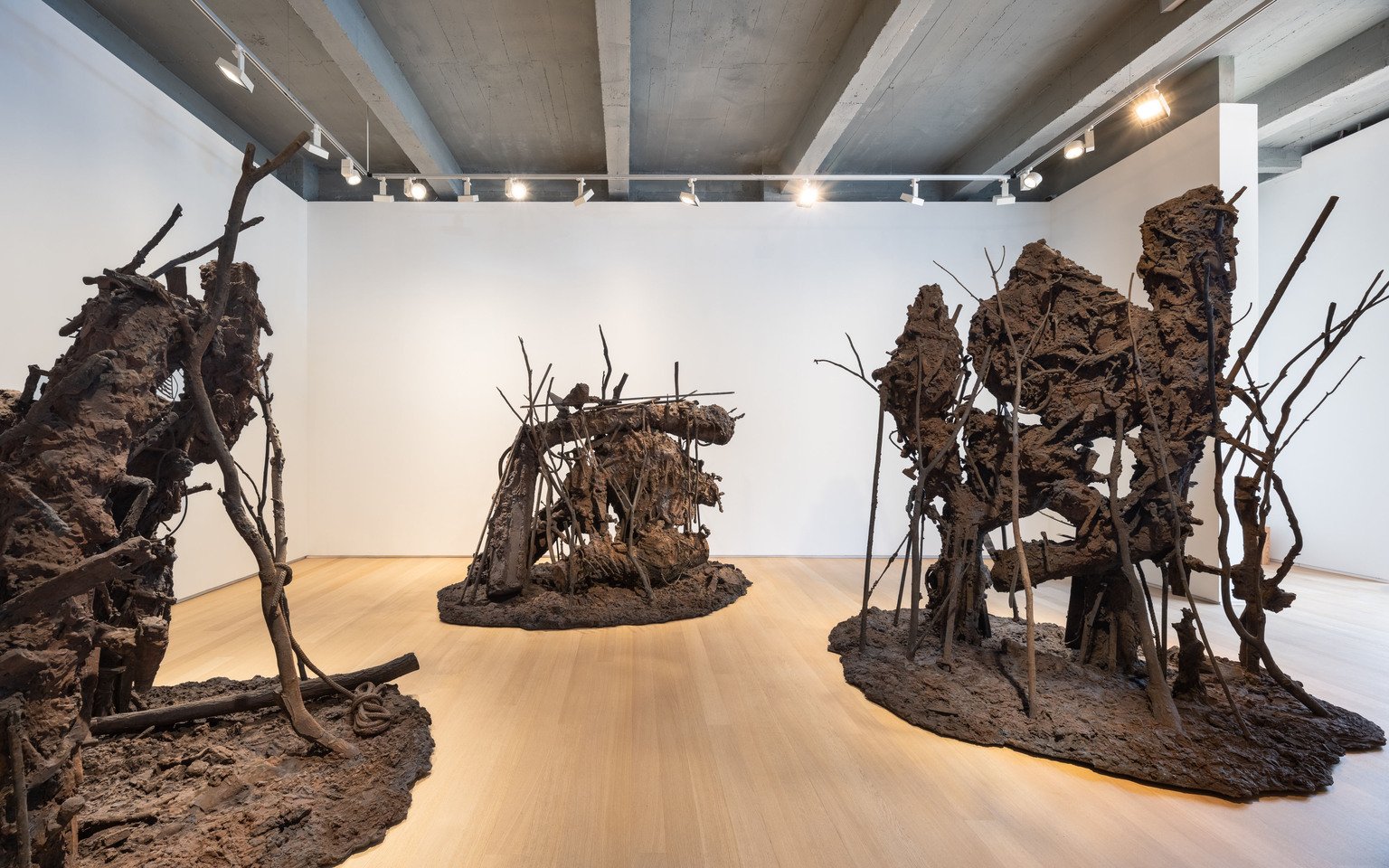
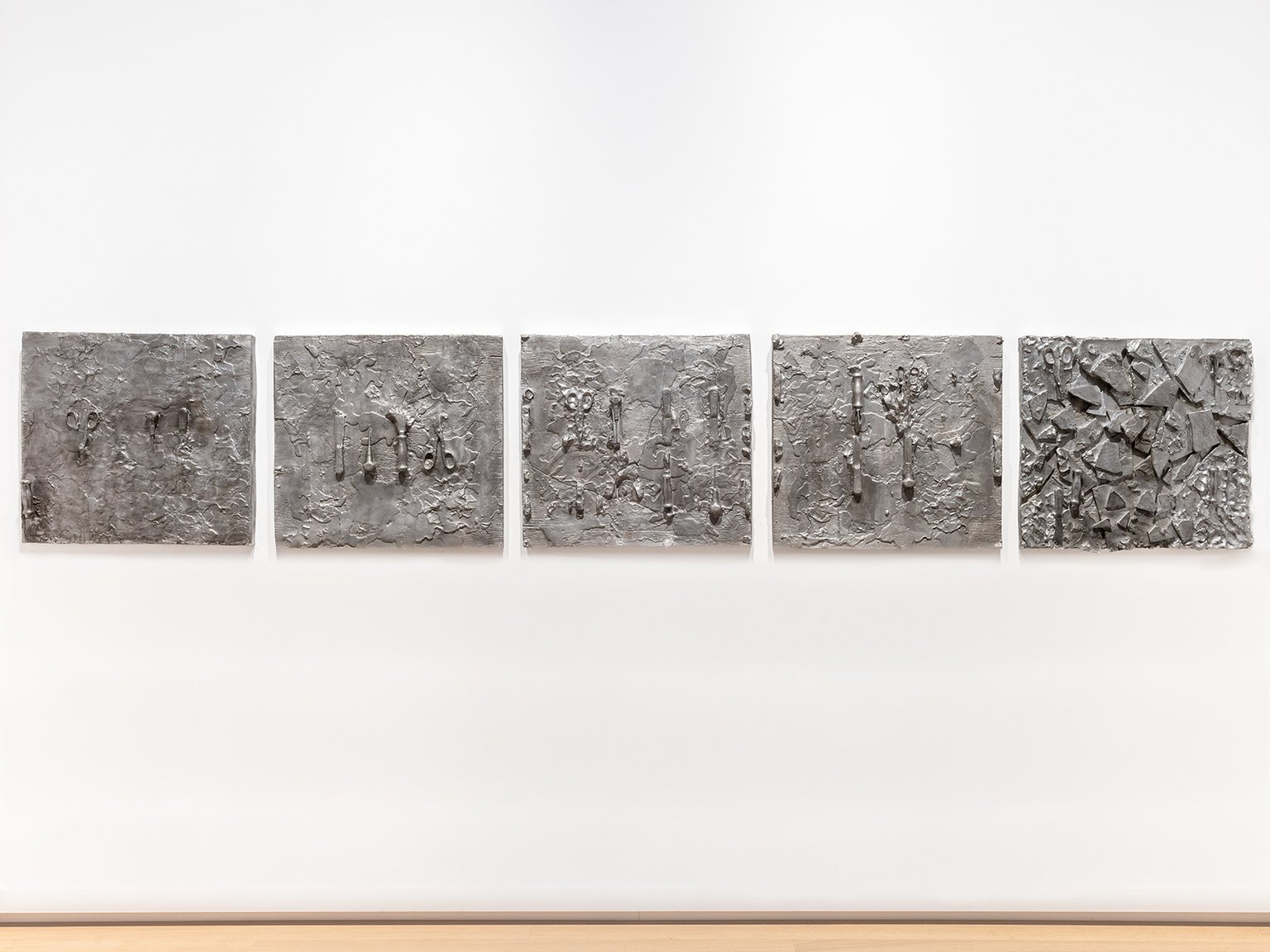
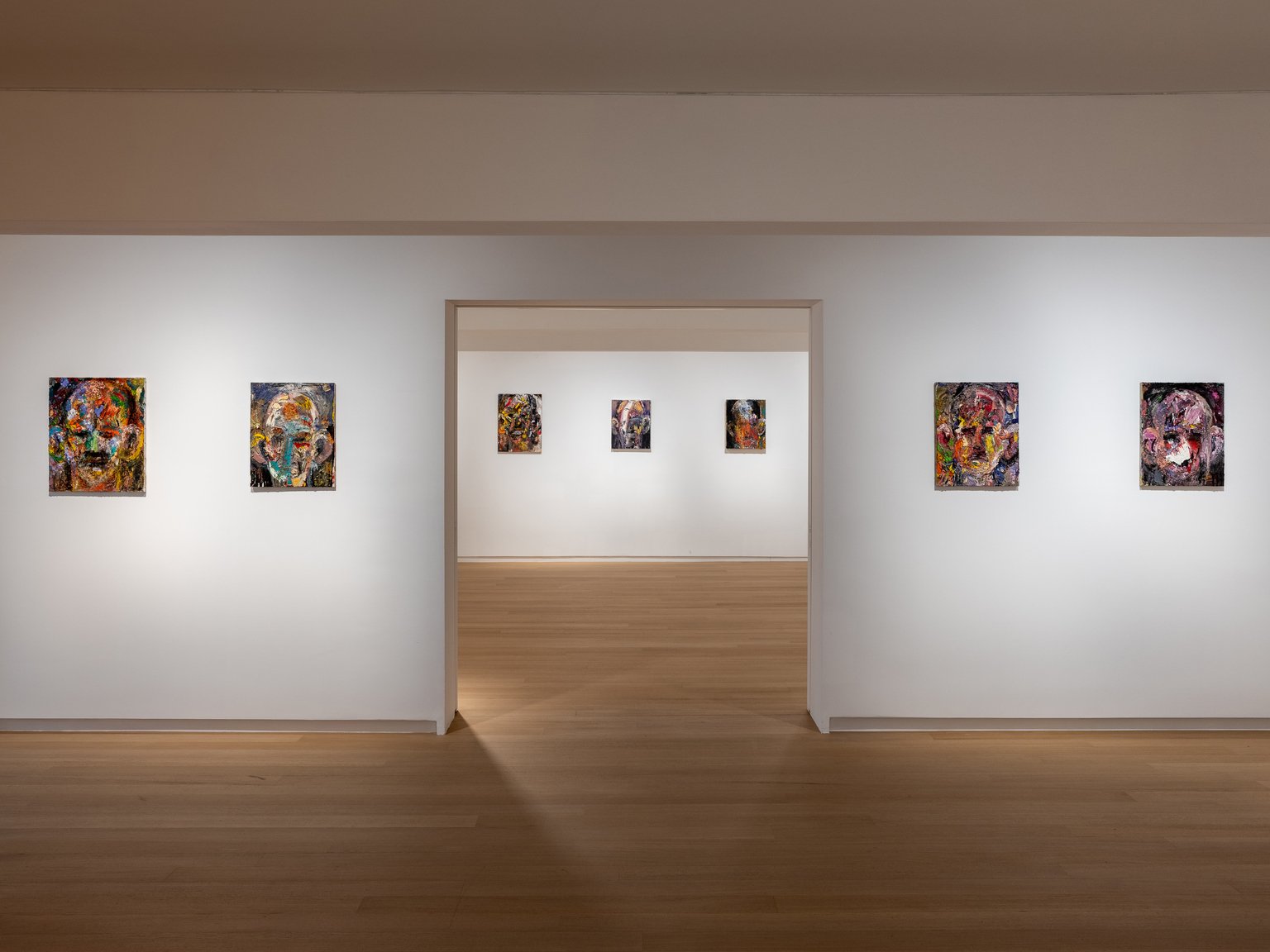
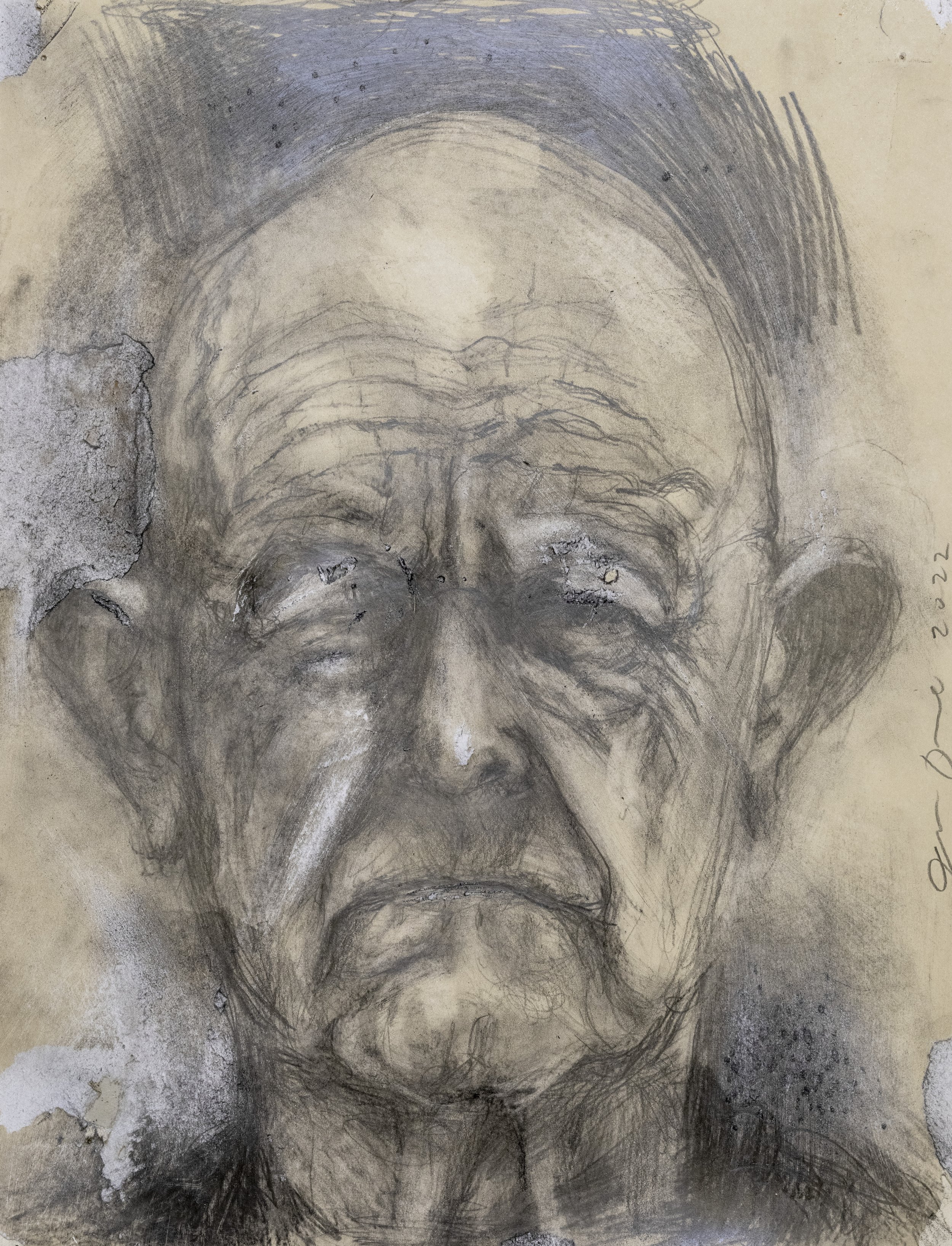
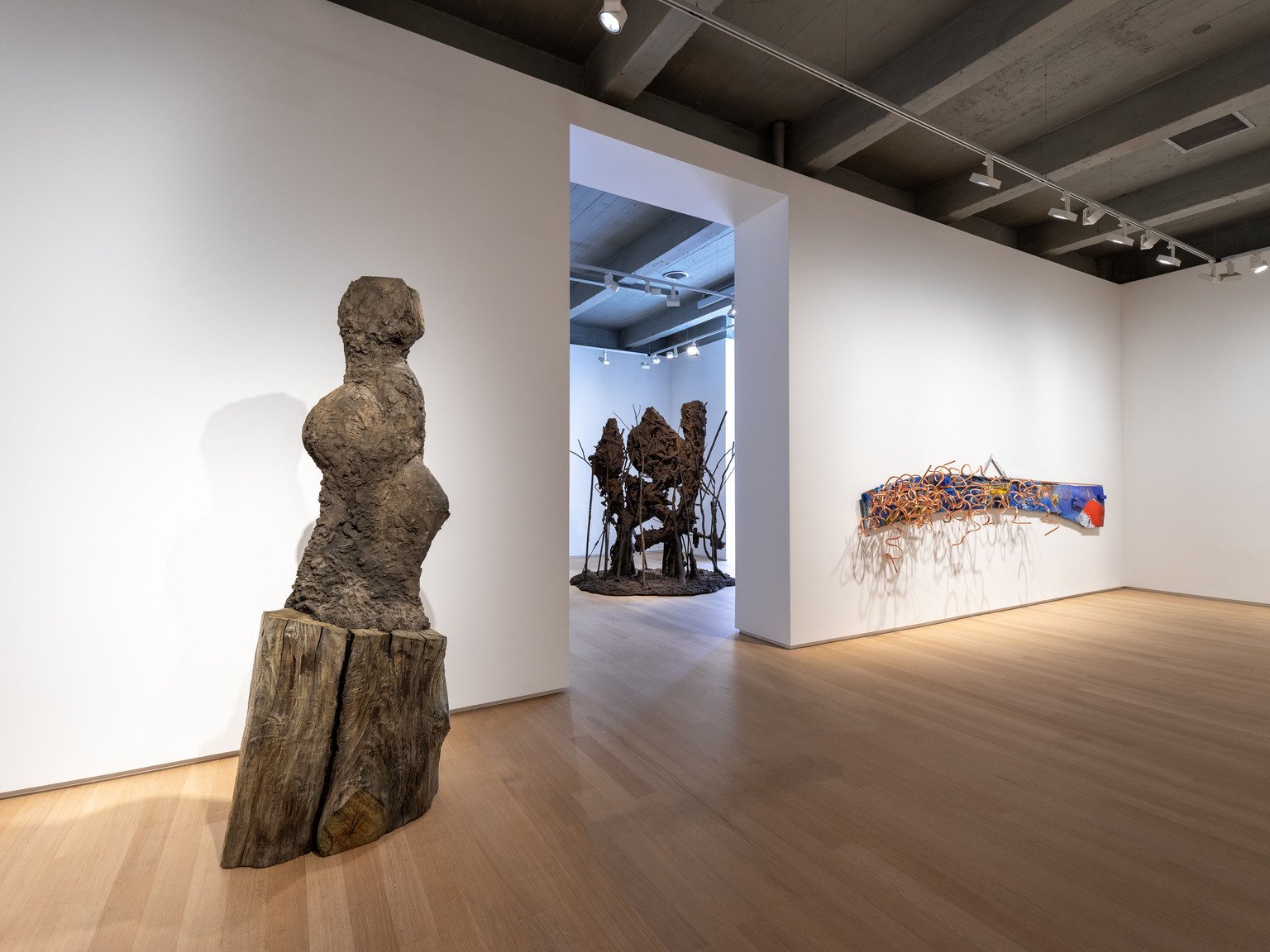
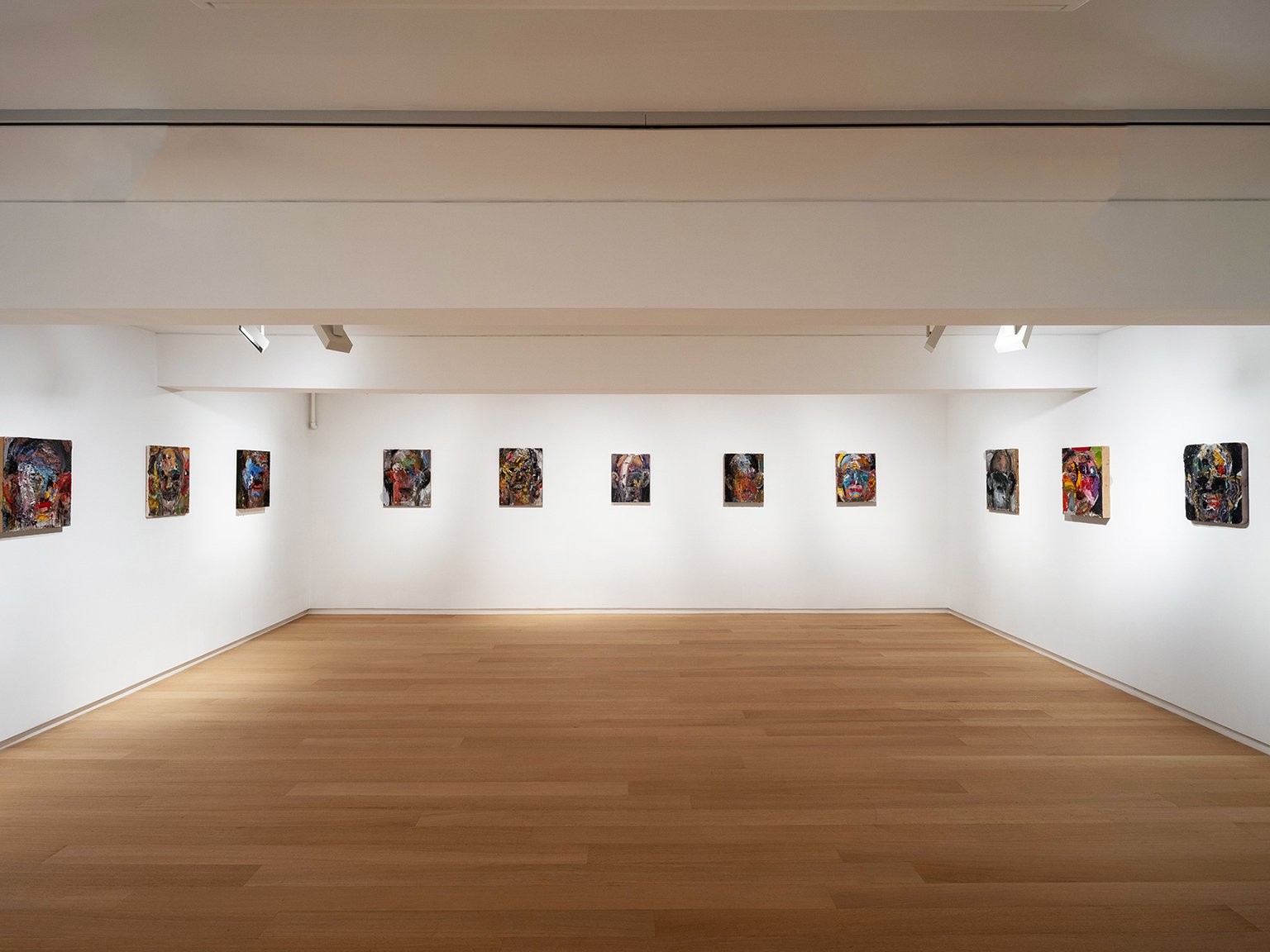
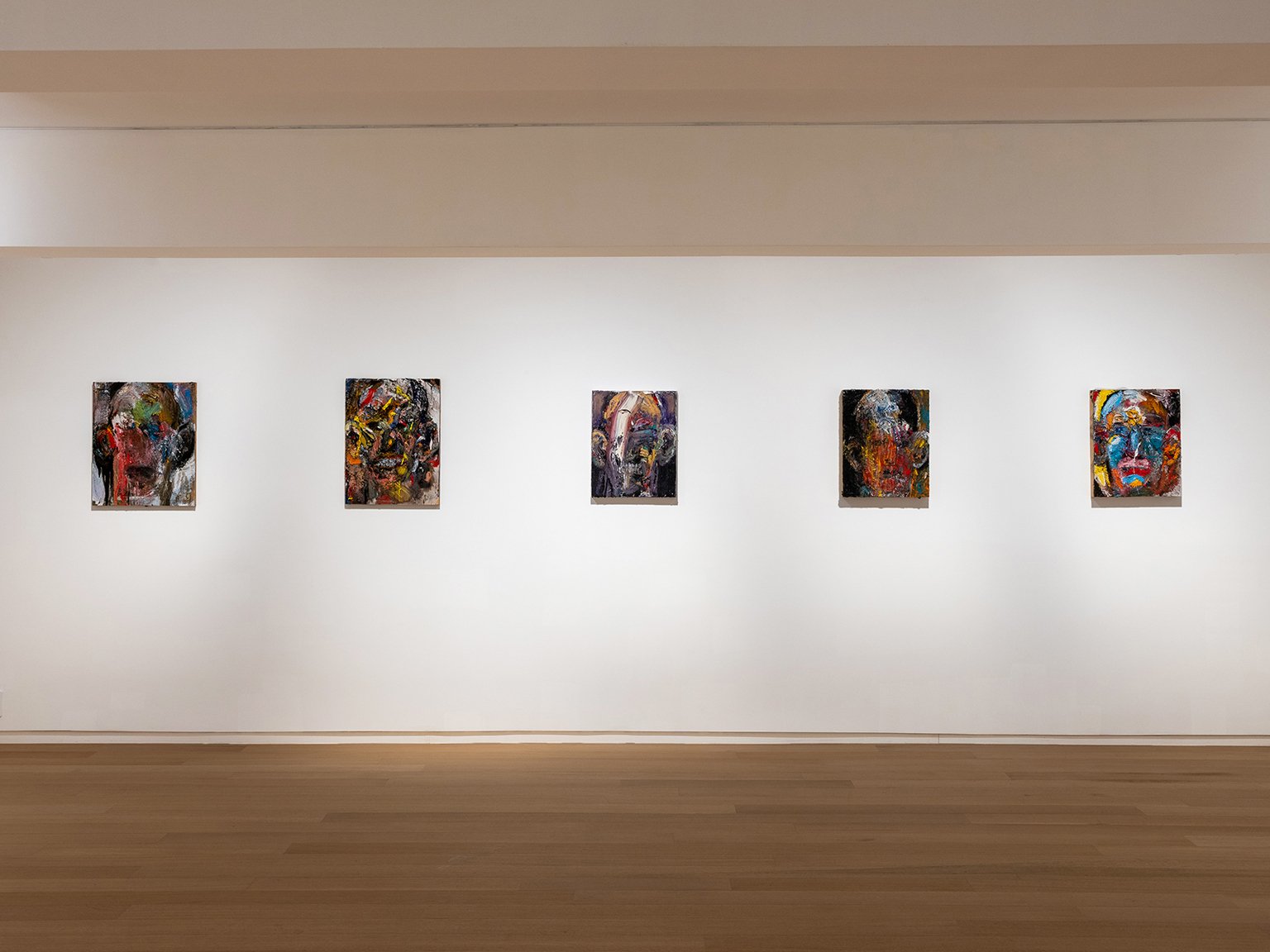
Exhibition views Toutes les images / All images: Courtesy the artist and TEMPLON, Paris – Brussels – New York ©️ Charles Roussel.
Jim Dine’s work features in over 70 public collections worldwide, including at the MoMA, Guggenheim, Metropolitan Museum of Art in New York, Centre Pompidou in Paris, and Tate Collection in London. In 2018, the Centre Pompidou organized a major retrospective of his work which then traveled to the Centre Pompidou Malaga and then the Multimedia Art Museum in Moscow. Another major retrospective was held in Rome by the Palazzo delle Esposizioni in 2020.
In 2021, he inaugurated the Fondation GGL in Montpellier with his largest commissioned work in France: a ceramic ceiling created especially for the 17th-century manor house that is home to the foundation in collaboration with the Manufacture de Sèvres. In the spring of 2023, Dine will inaugurate The Stardust House in Gottingen, Germany, a Pavillon dedicated to the sculpture, Thru the stardust, the heat on the lawn. This exhibition will be followed in June by the exhibition Storm of Memory at the Kunsthaus Gottingen, of new sculptures, prints, and books. In the fall, Dine will participate in the exhibition, Paravents at the Prada Foundation. Later in the fall, Dine will inaugurate an exhibition of portrait drawings donated to Bowdoin College, Maine, USA.
For more information, please visit Templon’s site.
LEE FRIEDLANDER FRAMED BY JOEL COEN
Sweden, 2005 gelatin silver print © Lee Friedlander, courtesy Fraenkel Gallery, San Francisco and Luhring Augustine, New York
Lee Friedlander Framed by Joel Coen is an exhibition of Friedlander’s photographs curated by the widely acclaimed filmmaker at the Fraenkel Gallery.
Rather than focusing on a single subject or period, Coen’s selection concentrates on Friedlander’s singular approach to composition. Through the approximately 45 images in the exhibition, Coen surveys the range of Friedlander’s 60+ year career, bringing many lesser-known images into the equation. The selection evidences an unexpected affinity between Friedlander and Coen, whose work explores the sly power of images. A new hardcover publication, with an introduction by Coen and an afterword by the actor Frances McDormand, accompanies the exhibition.
Los Angeles, 1967 gelatin silver print © Lee Friedlander, courtesy Fraenkel Gallery, San Francisco and Luhring Augustine, New York
Friedlander, Coen, and McDormand, long admirers of each other’s work, met in the spring of 2022 at Friedlander’s home in Rockland County, New York. During the day-long visit, the artists studied hundreds of photographs, ultimately leading to the selection that constitutes the book and exhibition.
I was present when these two guys met for the first time and observed a familiarity that comes from their lifetimes of singular and eccentric visions… Neither would naturally refer to himself as an Artist. Yet they have honed their crafts over decades of practice, and those of us who cannot see the way they see have no other way to describe what they do but “art.”
—from the afterword by Frances McDormand
Coen’s selection focuses on dense and off-kilter photographs, often bisected by stop signs and utility poles, car doors, windshields, trees, and shadows. “As a filmmaker, I liked the idea of creating a sequence that would highlight Lee’s unusual approach to framing—his splitting, splintering, repeating, fracturing, and reassembling elements into new and impossible compositions,” Coen writes.
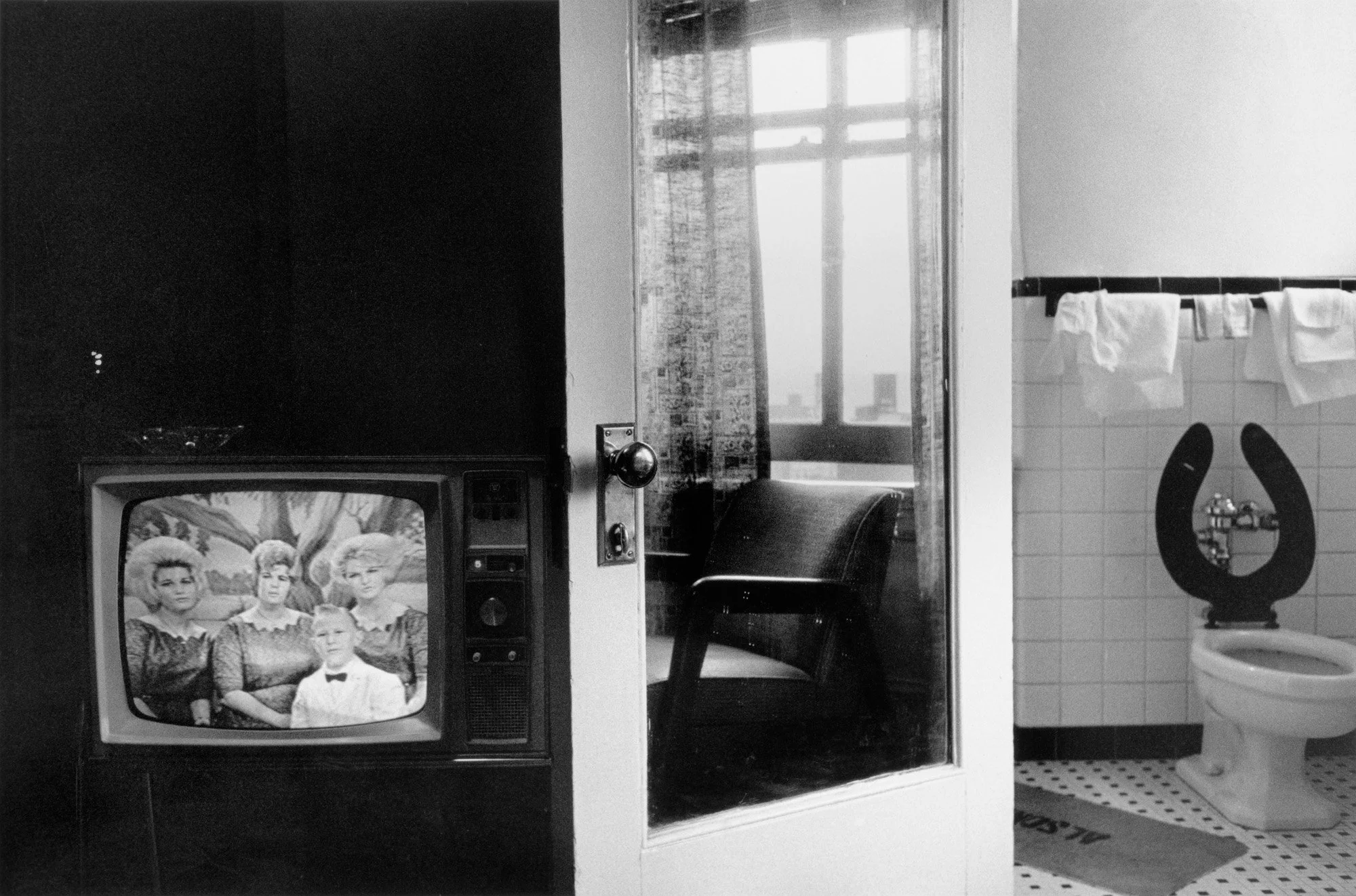








Fraenkel Gallery hosted a public reception with Lee Friedlander and Joel Coen on Saturday, May 6, from 2-4 pm. Luhring Augustine hosted a reception with both artists in New York on Saturday, May 13. Both exhibitions will accompany a special projection created by Coen, sequencing Friedlander’s images in unexpected and revealing ways. The book accompanying the exhibition is published by Fraenkel Gallery and includes an expanded selection of 70 works. It will be available on both galleries’ websites.
Lee Friedlander (born 1934) began photographing in 1948. His work was included in the influential 1967 exhibition New Documents at the Museum of Modern Art, New York, curated by John Szarkowski, among countless other exhibitions. His more than 50 monographs include Signs, Self-Portrait, Cherry Blossom Time in Japan, Letters from the People, At Work, and Sticks and Stones, among others. One of the most important living photographers, Friedlander’s prints are held by major collections, including the Art Institute of Chicago; the Metropolitan Museum of Art, New York; Museum of Modern Art, New York; National Gallery of Art, Washington, D.C.; San Francisco Museum of Modern Art; and Whitney Museum of American Art, among many others.
Joel Coen (born 1954) is celebrated as one of the most visionary and idiosyncratic filmmakers of our era. Combining thoughtful eccentricity, wry humor, arch irony, and often brutal violence, the films of Coen (working with his brother Ethan) have become synonymous with a style of filmmaking that pays tribute to classic American movie genres—especially film noir—while sustaining a firmly postmodern sensibility.
Frances McDormand (born 1957) is an acclaimed American actor and producer. McDormand has won numerous accolades, including four Academy Awards, two Golden Globe Awards, three BAFTA Awards, two Emmy Awards, and a Tony Award, making her one of the few performers to achieve the "Triple Crown of Acting."
The exhibit will be on view until June 24th of this year. Please visit the Fraenkel Gallery’s site for more information about the exhibit.
re:tratos urbanos rodríguez calero at the Gallery Space at Wagner NYU
Artist Statement:
The exhibition re:tratos urbanos rodríguez calero featured at NYU Wagner’s Gallery represents my constant commitment and concerns regarding my heritage and diverse communities. The works are personal and deeply rooted to encompass many issues regarding identity, gender, race, ageism, social and spiritual beliefs.
Curator Statement:
The Robert F. Wagner Graduate School of Public Service at New York University is home to the Gallery Space at Wagner. Our mission is to bring artwork into a public-accessible workspace to further engage the NYU community and local audiences in dialogues on contemporary art, culture, and public service. In exploring this intersectionality, we prioritize partnerships that foster social justice, human rights advocacy, and political activism, as well as projects that promote Wagner’s commitment to IDBEA values—inclusion, diversity, belonging, equity, and access.
Installation view, re:tratos urbanos rodríguez calero at Gallery Space at Wagner NYU Wagner | The Puck Building. March 21 – June 23, 2023. Courtesy Gallery Space at Wagner NYU Wagner | The Puck Building Photo Credit Jonathan King
Description:
Proudly marking Women’s History Month, re:tratos urbanos (urban portraits) highlights the work of celebrated Nuyorican painter and collage artist Rodríguez Calero (affectionately known as RoCa). With a focus on portraiture, this two-decade survey exhibit showcases RoCa’s signature acrollage and fotacrolé techniques, two innovative processes that blend painting, printmaking, photography, and collage to spellbinding effects. Meticulously layering paper, acrylic paint, and recycled materials, among a rich variety of mediums, the artist presents an intriguing collection of portraits that masterfully combine religious iconography, classical and Byzantine patterns, and elements of hip-hop and street art. Bold colors, compositional balance, texturing, and ornamentation are the visual means to the thematic depth and gravitas behind each portrait.
Presented by the Gallery Space at Wagner and the Center for Latin American & Caribbean Studies (CLACS).
re:tratos urbanos rodríguez calero
Gallery Space at Wagner
March 21 – June 23, 2023
Curator Frankie Cresioni-Santoni
NYU Wagner | The Puck Building
295 Lafayette Street | 2nd Floor | NYC 10012
Monday - Friday 12 - 5 pm | 1212.998.7400
For more information about Rodríguez Calero's art, please visit her site. For more information about the exhibit, please visit here.





















